
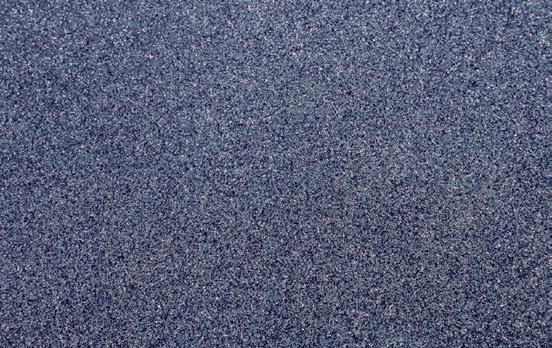
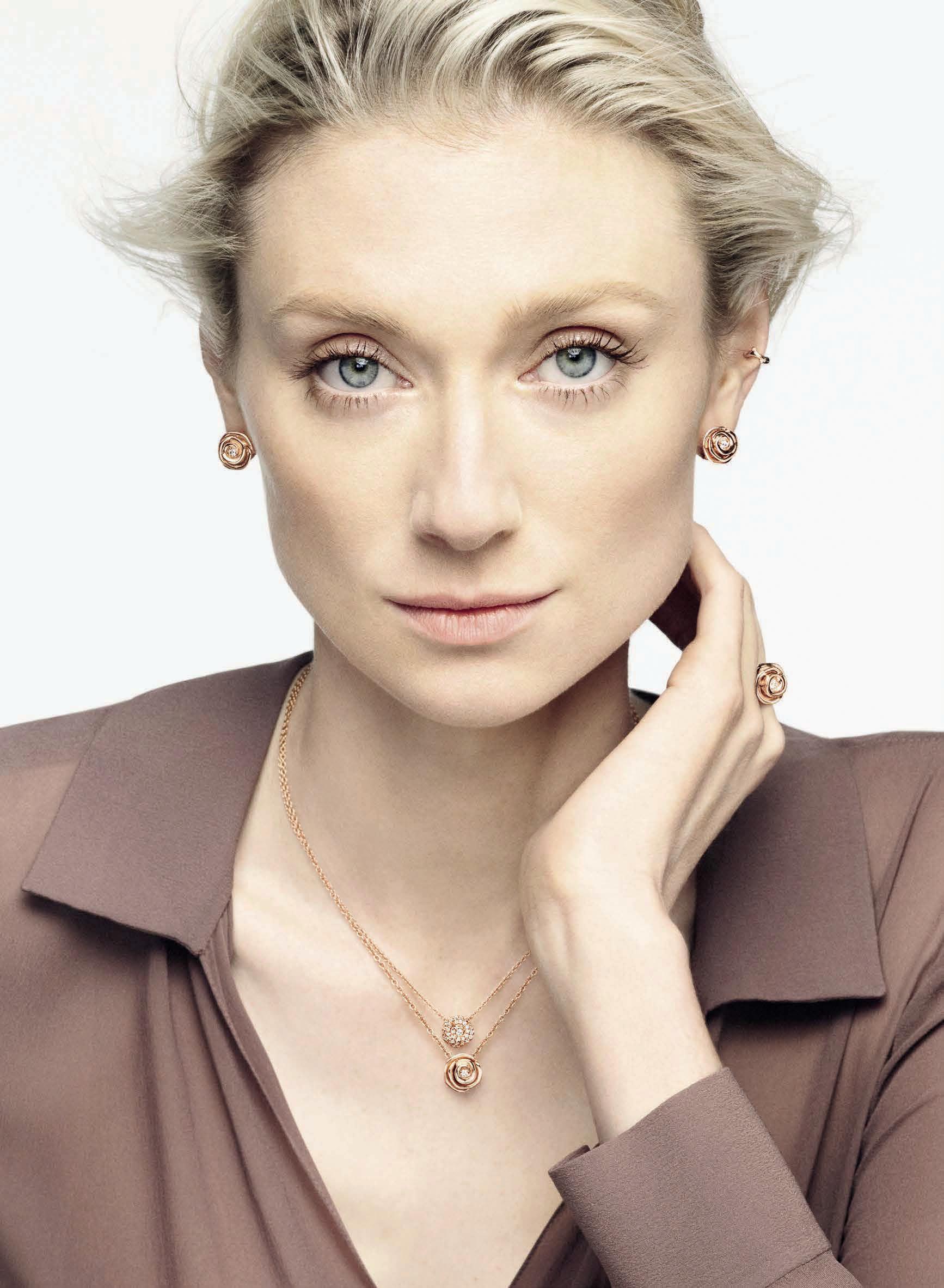

di or .c om –80 0 92 9 .d io r ( 3 467 )

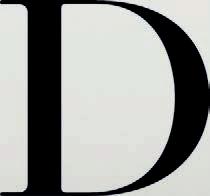

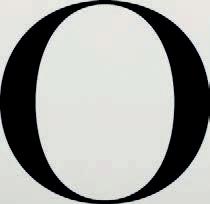
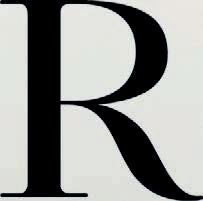

 LA ROSE DIOR COL LEC TION Pink gold and diamonds.
LA ROSE DIOR COL LEC TION Pink gold and diamonds.
We are delighted to begin the new year with Roe Ethridge’s Two Kittens with Yarn Ball (2017–22) on our cover. Inside, our readers will find an exclusive artist’s book by Jim Shaw, who has long been inspired by comic books, pulp novels, and protest posters.
We invited Marc Newson, one of the most influential designers of his generation, to guestedit a series of articles in this issue. He has brought together an incredible section that covers a wide range of subjects, including concept cars, architecture, film, and more.
Next up for the Picture Books series, Emma Cline has invited painter Genieve Figgis to create a new artwork in response to an incredibly visual novella by author Lydia Millet. The inimitable author Joy Williams participates in Hans Ulrich Obrist’s questionnaire, and we kick off this year’s fiction serial with the first installment of a new story by Percival Everett.
The issue features several articles on painters, all of whom approach their practices in radically different ways. On the occasion of an upcoming monograph, Richard Wright, an artist celebrated for site-specific and transient works, pens a personal and philosophical text about painting. Travis Diehl explores Hao Liang’s mastery of both traditional Chinese ink-wash painting and more contemporaneous considerations on the eve of Hao’s first solo exhibition in Europe. Novelist Andrew Winer expertly navigates the beauties and complexities at play in Glenn Brown’s latest works; Tiana Reid reports on her encounter with Cy Gavin’s new paintings; Ester Coen provides insight on the roots of Sterling Ruby’s recent colorful abstractions in early-twentieth-century avant-gardes including Futurism and Constructivism; and Adam McEwen speaks with Jeremy Deller about his obituaries for the living.
Finally, the photographer Sally Mann and the writer Benjamin Moser discuss biography, photography, and the responsibility of creators attempting to achieve honest portrayals of their subjects. Plus we have articles on legacy, biography, fashion, the future of the Internet, and harnessing the power of the blockchain for art and activism.
Alison McDonald, Editor-in-chief






Glenn Brown: From the Inside Out
Novelist Andrew Winer reports on the formal, conceptual, and philosophical perspectives embedded in Glenn Brown’s latest paintings and drawings. The two talked after the opening of the artist’s recent New York exhibition Glenn Brown: We’ll Keep On Dancing Till We Pay the Rent
52
The Art of Biography
William Middleton’s forthcoming biography of Karl Lagerfeld, Paradise Now, comes as a major follow-up to his lauded history of Dominique and John de Menil, Double Vision , from 2018. Here, curator Michael Cary talks with Middleton about the challenges, strategies, and revelations that went into telling the story of this larger-than-life visionary in the world of fashion.
58
Cy Gavin: On the Other Side of the Limit
Tiana Reid reports on her encounter with the artist Cy Gavin’s new paintings.
64 Hans Ulrich Obrist’s Questionnaire: Joy Williams
The fifth installment of the series.
66 Adam McEwen: An Act of Love
Contemporary artists Adam McEwen and Jeremy Deller met up online over the holiday season to discuss McEwen’s upcoming exhibitions in London and Rome. McEwen delves into the motivations and criteria behind his work, as well as the challenges and complexities of memorializing the living.
72 Jim Shaw: Thinking the Unthinkable
A zine by Jim Shaw produced on the occasion of the artist’s exhibition at Gagosian, Beverly Hills.
74 Picture Books
The fourth book published by Picture Books, an imprint organized by Emma Cline and Gagosian, is Lydia Millet’s novella Lyrebird . Accompanying the text is a painting by Genieve Figgis, inspired by the story’s lush setting. In celebration of this forthcoming publication, Figgis and Millet spoke to each other about the process, the role of humor in their work, and the genesis of their contributions.
80 Sally Mann and Benjamin Moser
During the 2022 edition of Paris Photo, Sally Mann and Benjamin Moser sat down for an intimate conversation as part of Gagosian’s Paris Salon series. The two discussed the power and responsibility tied up in their respective practices of photography and writing.
86 Building a Legacy: The Smithsonian’s Archives of American Art
For this installment of Building a Legacy, Lisa Turvey, editor of the catalogue raisonné of Ed Ruscha’s works on paper, met with Ben Gillespie, oral historian, and Jennifer Snyder, oral history archivist—both at the Smithsonian’s Archives of American Art—to discuss the institution’s Oral History Program.
90
Hao Liang Emaciation Now: Paintings of My Contemporaries
Travis Diehl pens an essay on Hao Liang’s latest paintings.
100 A Vera Tatum Novel by Leonora McCrae by
The first installment of a short story by Percival Everett.
116
Sterling Ruby: The Frenetic Beat
Ester Coen meditates on the dynamism of Sterling Ruby’s recent projects, tracing parallels between these works and the histories of Futurism, Constructivism, and the avant-garde.
126 Marc Newson
A special section guest-edited by Marc Newson.
162 The Future of the Internet
In an effort to better understand the recent past, present, and future of the Internet, Fiona Alison Duncan joins professors Tiziana Terranova and Mindy Seu to discuss their practices and their latest publishing projects.
166 No Title
In an excerpt from his forthcoming monograph, Richard Wright pens a personal and philosophical text about painting.
176
Red, White, Yellow, and Black: 1972–1973
In December 1972 and April 1973, Shigeko Kubota, Mary Lucier, Cecilia Sandoval, and Charlotte Warren conceived of “multimedia concerts” at The Kitchen, New York, under the name Red, White, Yellow, and Black Here, Lumi Tan, former senior curator at The Kitchen, and Lia Robinson, director of programs and research at the Shigeko Kubota Video Art Foundation, speak with the Quarterly ’s Wyatt Allgeier about the project.
180 Fashion and Art, Part 13: Arianne Phillips
Derek Blasberg speaks with costume designer and stylist Arianne Phillips about her early friendship with Lenny Kravitz, the diverse set of artists and mediums that informs her work, and why she refuses to settle down into any codified vocation.
184
Screen Time: How Nadya Tolokonnikova and UnicornDAO Are Warming the Crypto Art World
Ashley Overbeek profiles
Pussy Riot member Nadya Tolokonnikova and the feminist collective UnicornDAO, highlighting their efforts to harness blockchain technology for art and activism.
190 Dan Colen
Curator and artist K.O. Nnamdie speaks with Dan Colen about his recent show in New York: Lover, Lover, Lover. Colen delves into the concept of “home” as it relates to his work, specifically the Mother and Woodworker series.
214
Game Changer: Ashley Bickerton
Michael Slenske pays tribute to the life and work of the artist Ashley Bickerton.
Front cover: Roe Ethridge, Two Kittens with Yarn Ball , 2017–22 (detail), dye sublimation print on Dibond, 40 × 60 inches (101.6 × 152.4 cm)
© Roe Ethridge
42
2023
TABLE OF CONTENTS SPRING















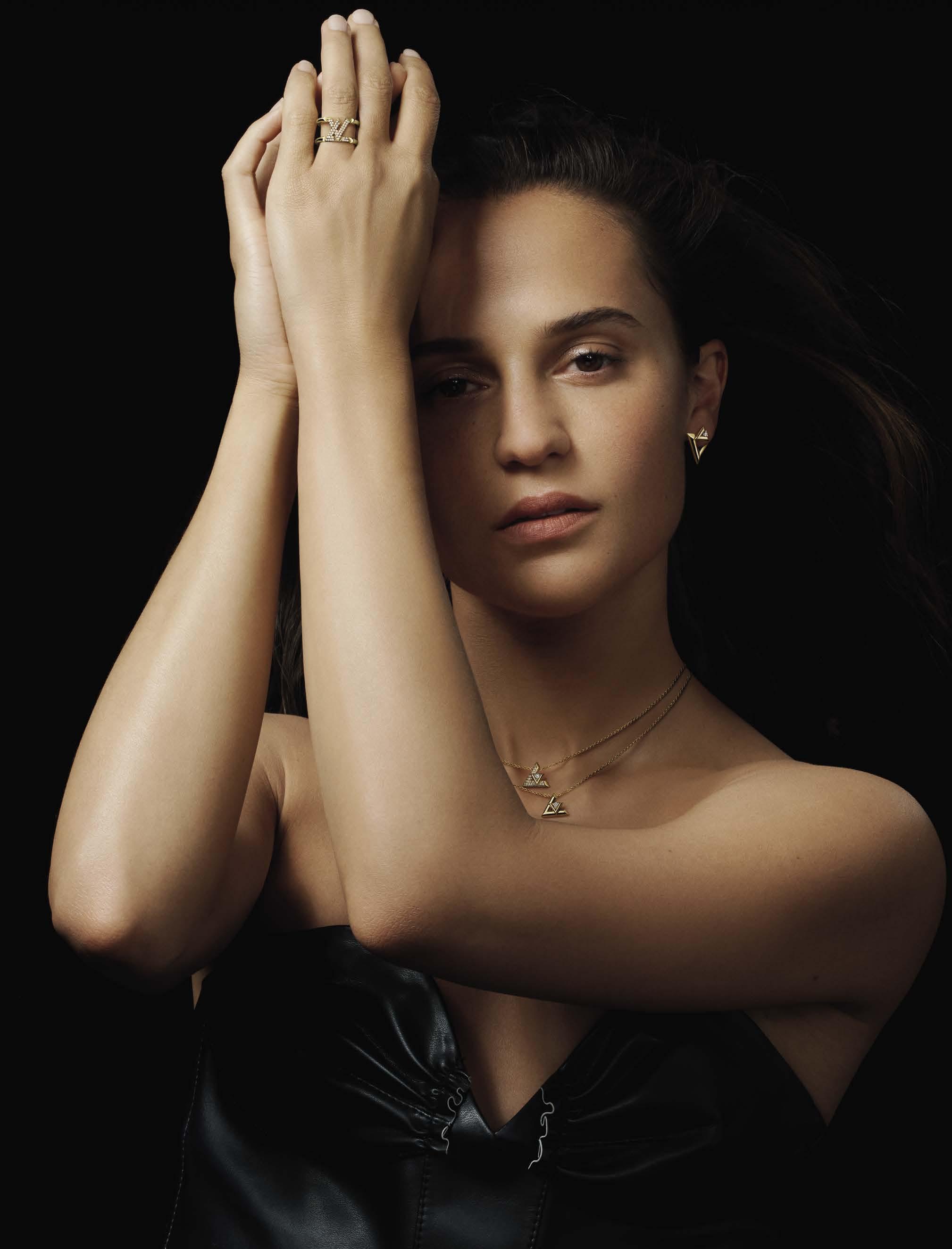
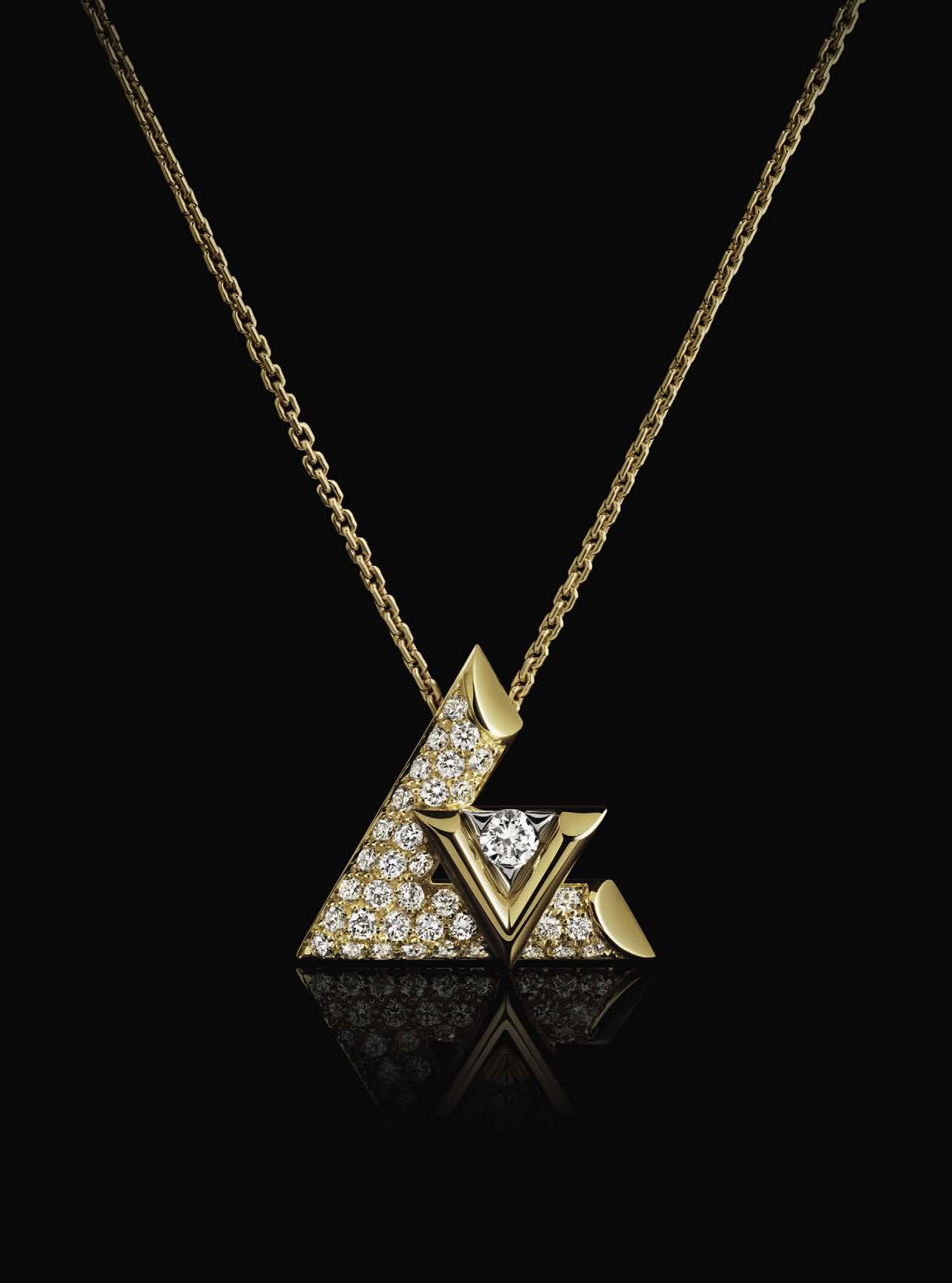










JE W ELRY
FINE
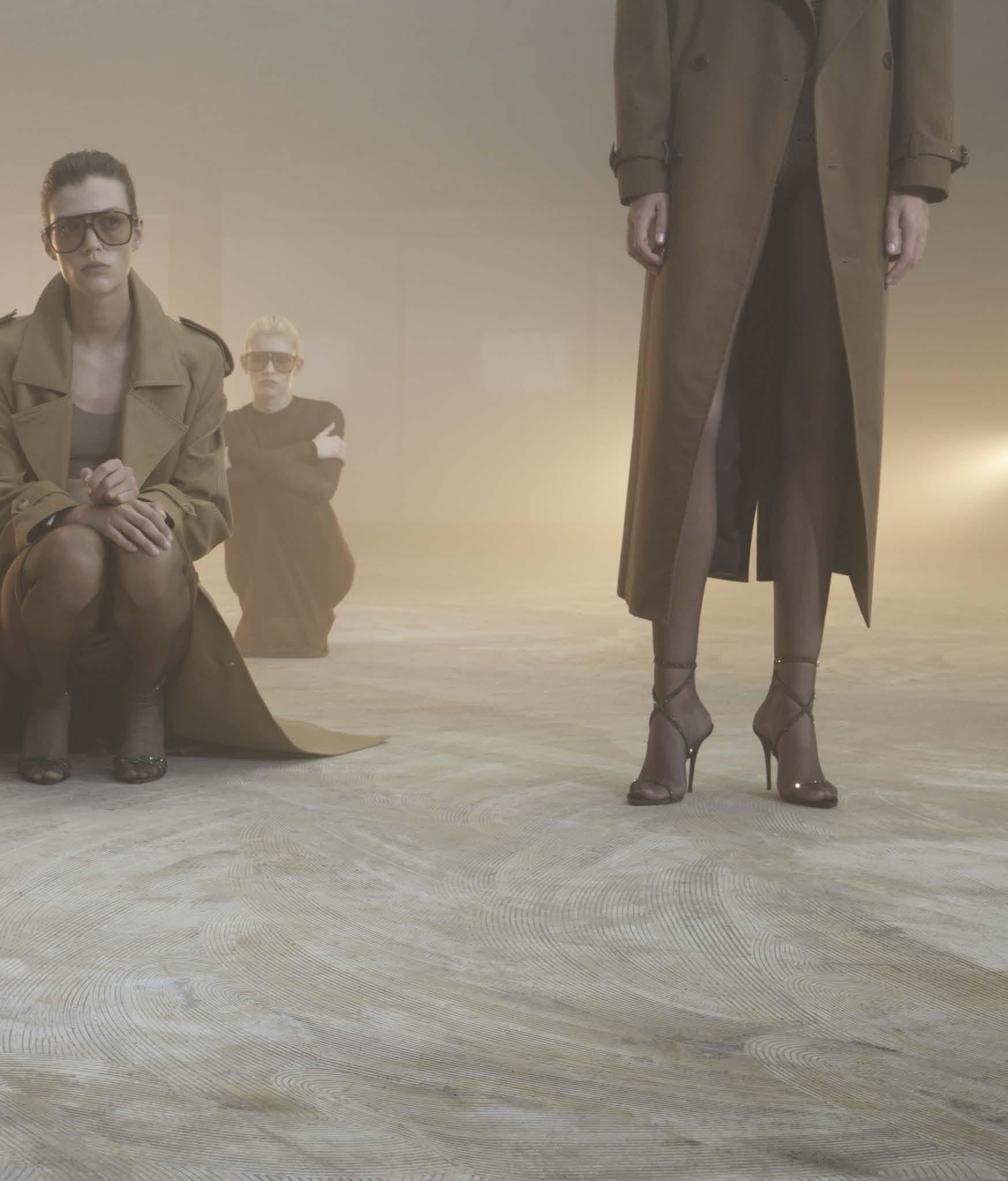
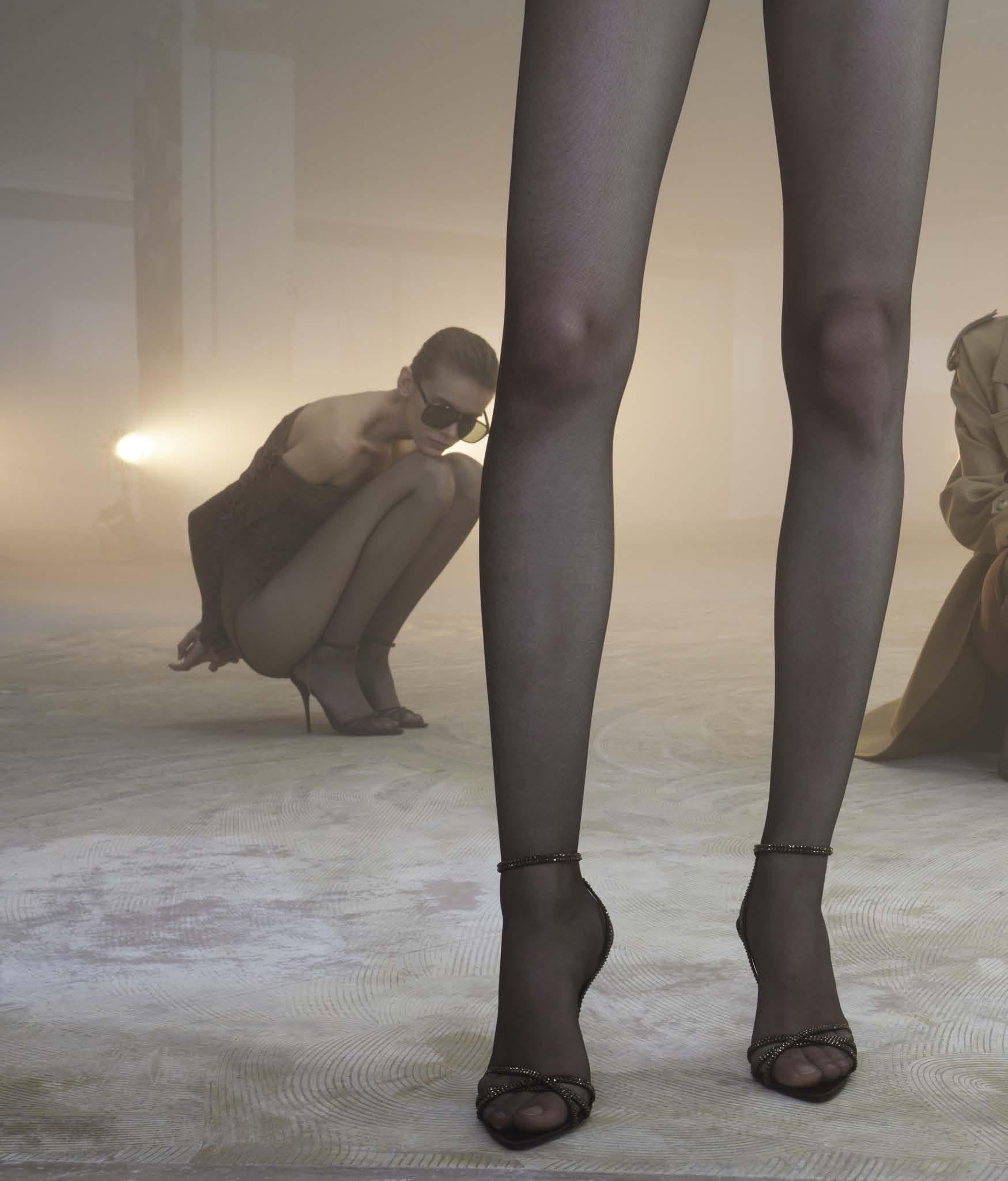

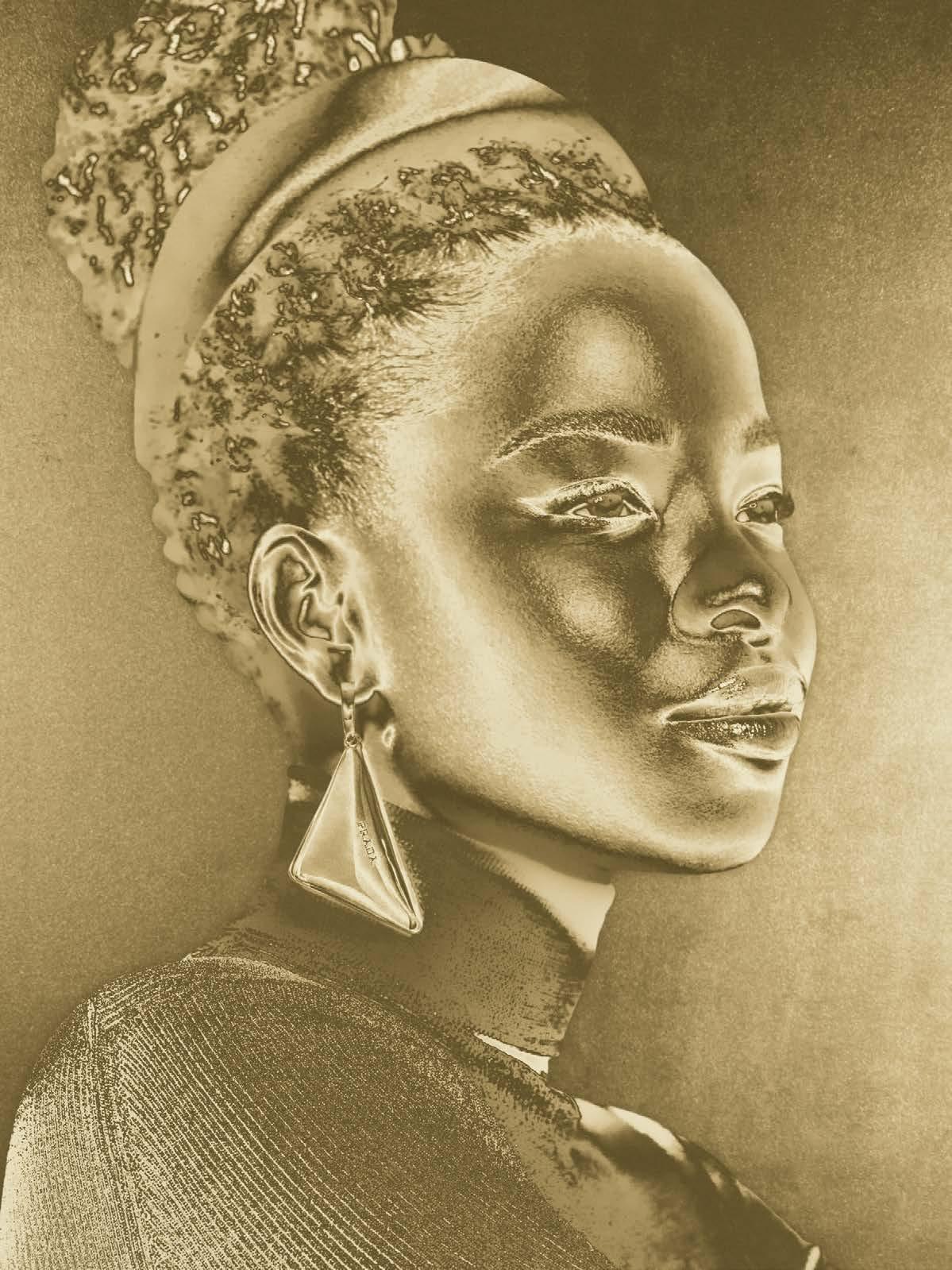
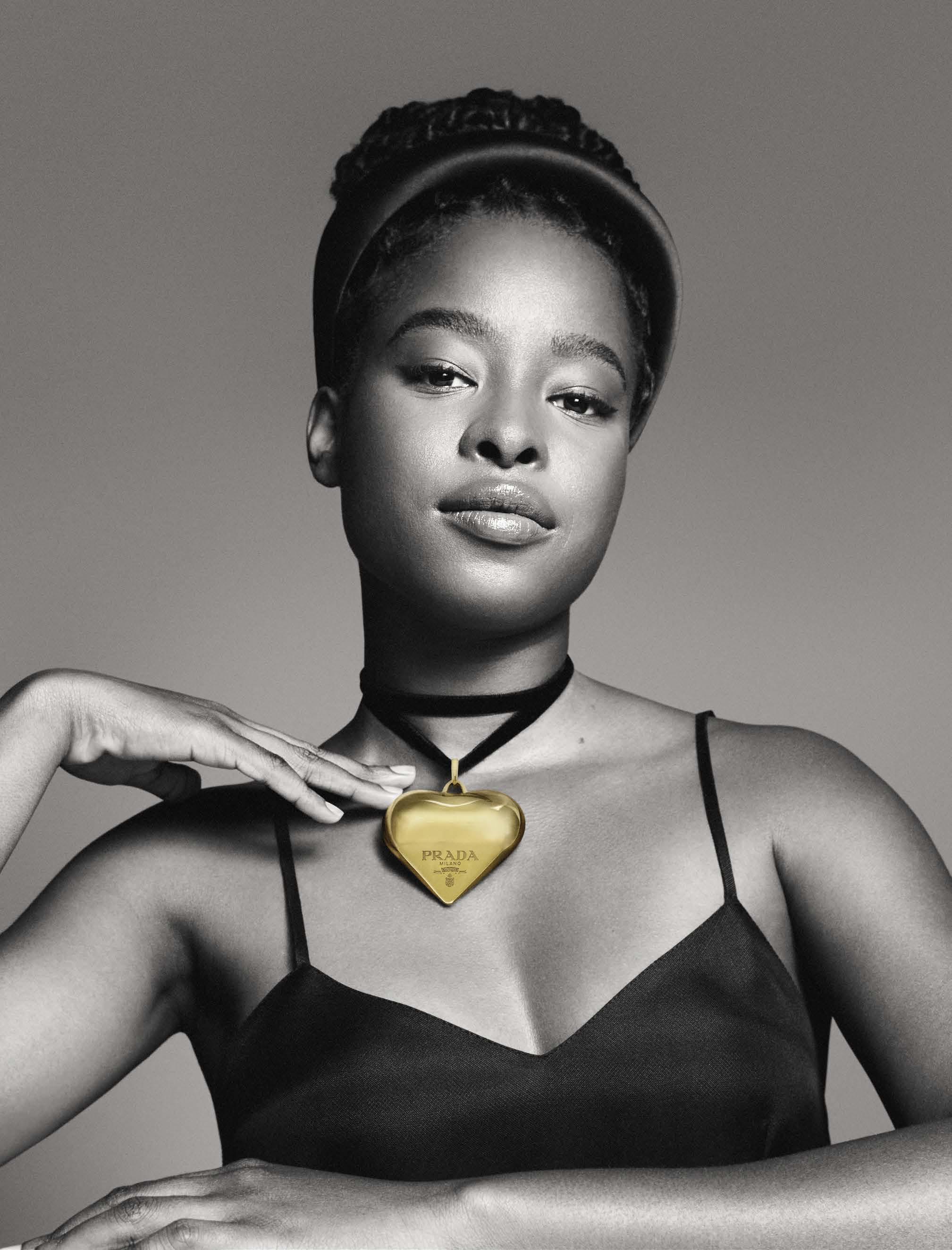
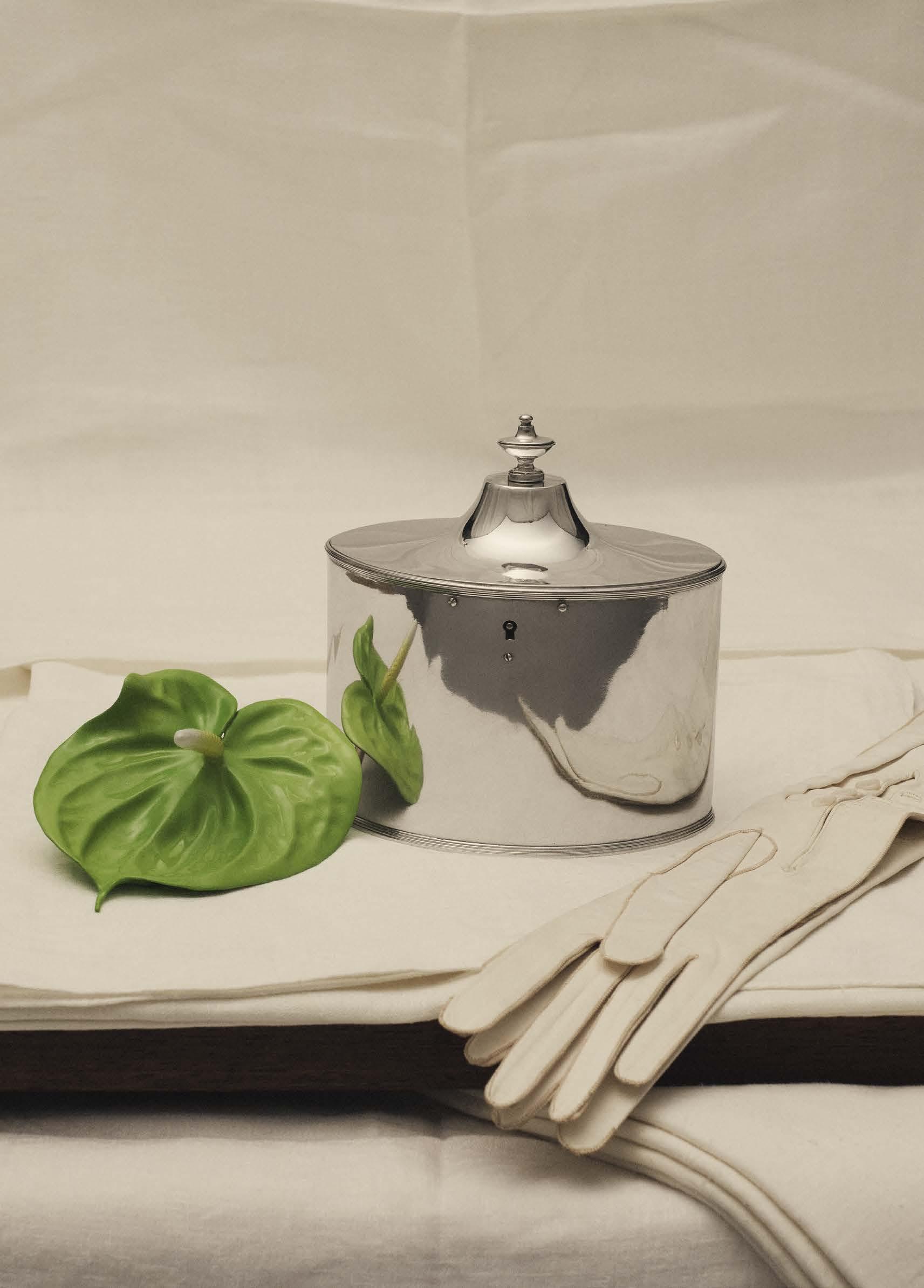
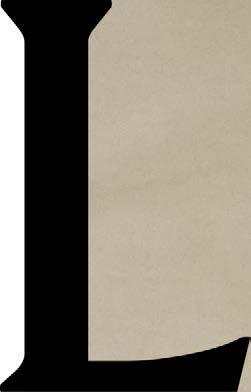


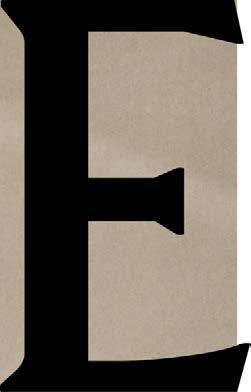
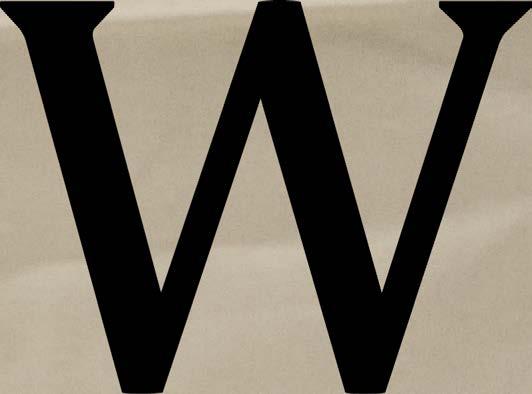
 Spring Summer 2023
Photographe d by David Sims
Spring Summer 2023
Photographe d by David Sims

loewe.com
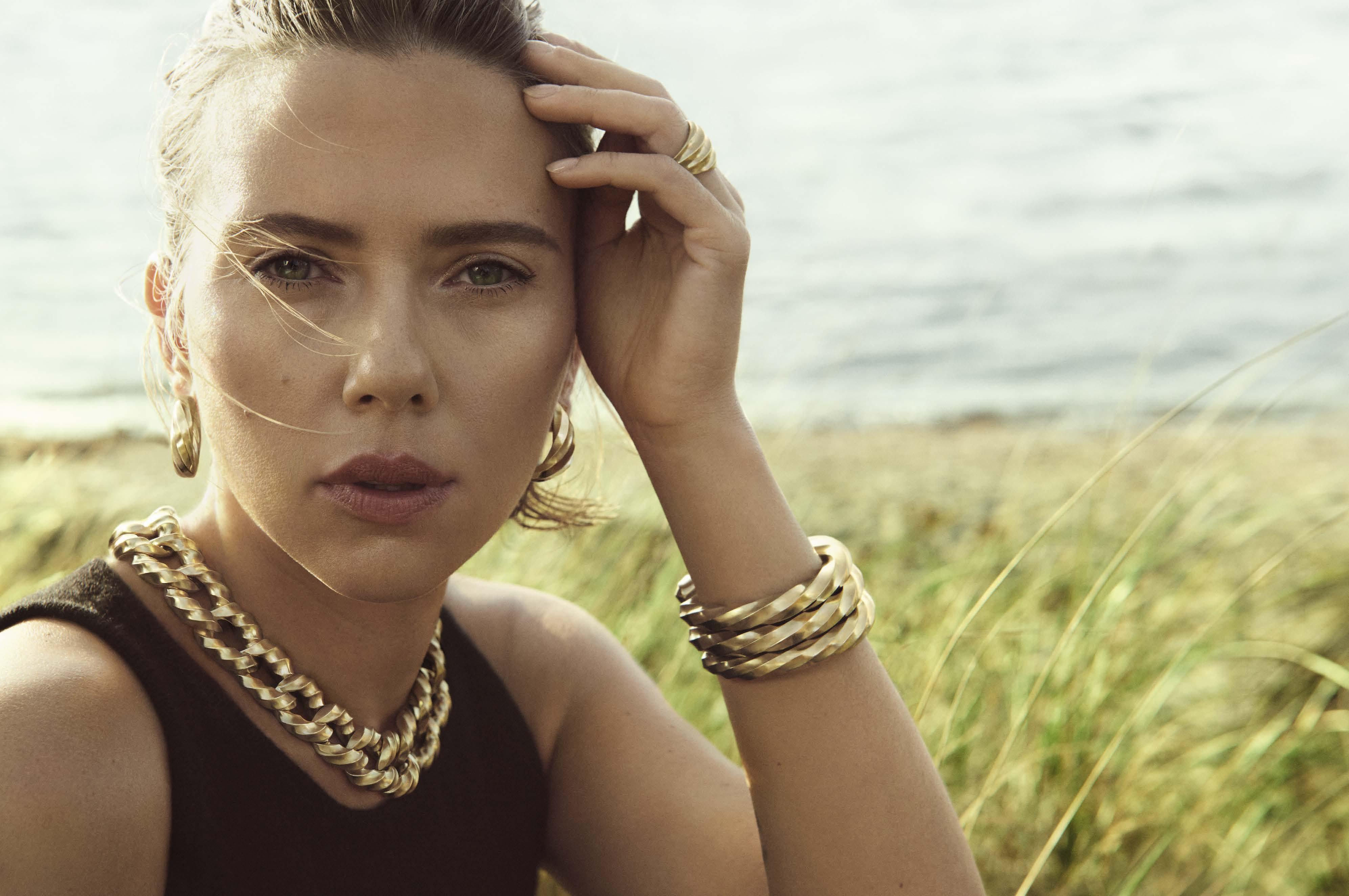

da vid yurman.com
CA BL E ED GE ™ COLL EC TI ON

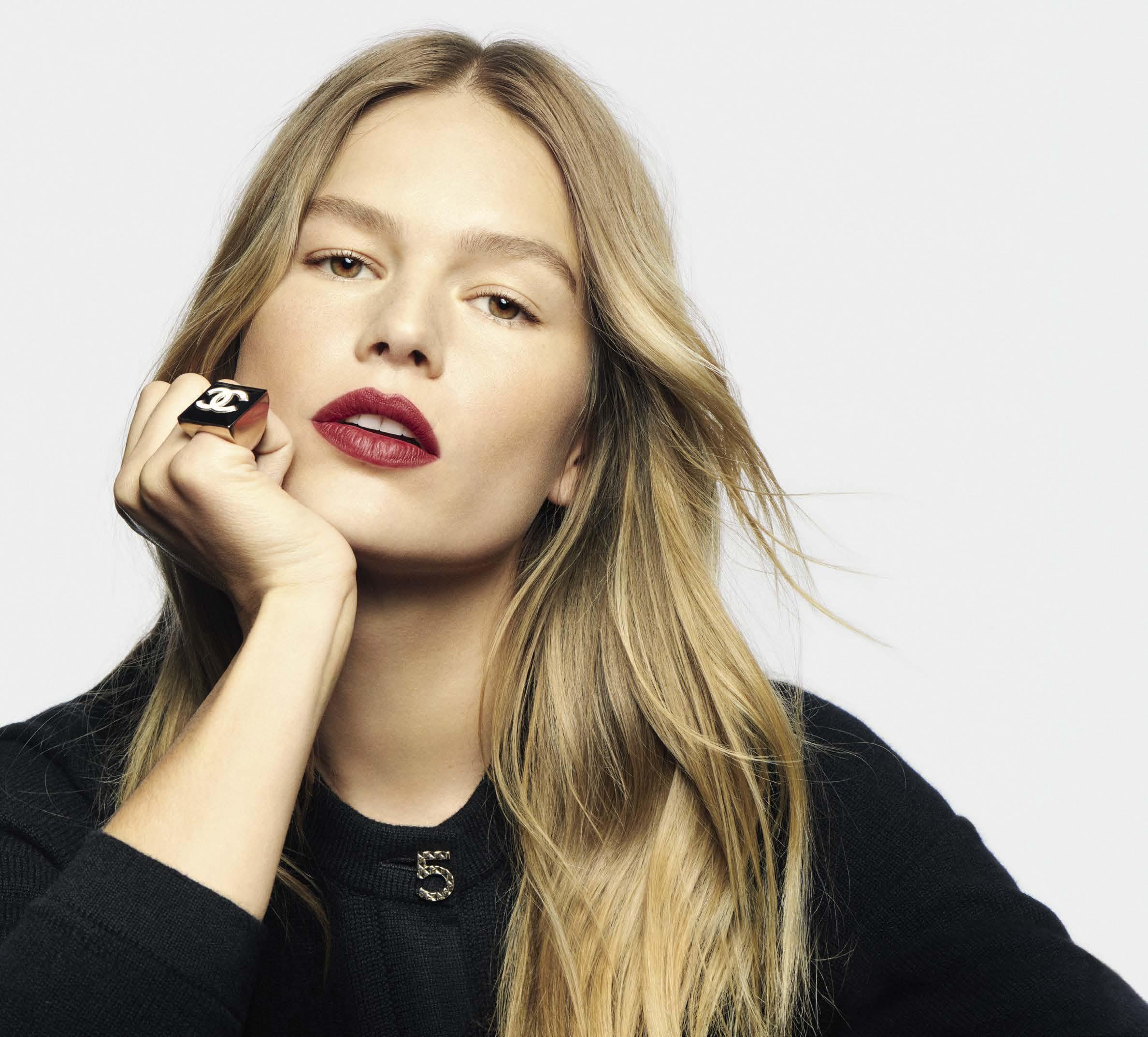
















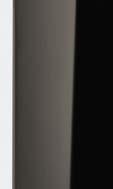





 Daphne Guinness, photogra phed by Dylan
P erlot .
Daphne Guinness, photogra phed by Dylan
P erlot .
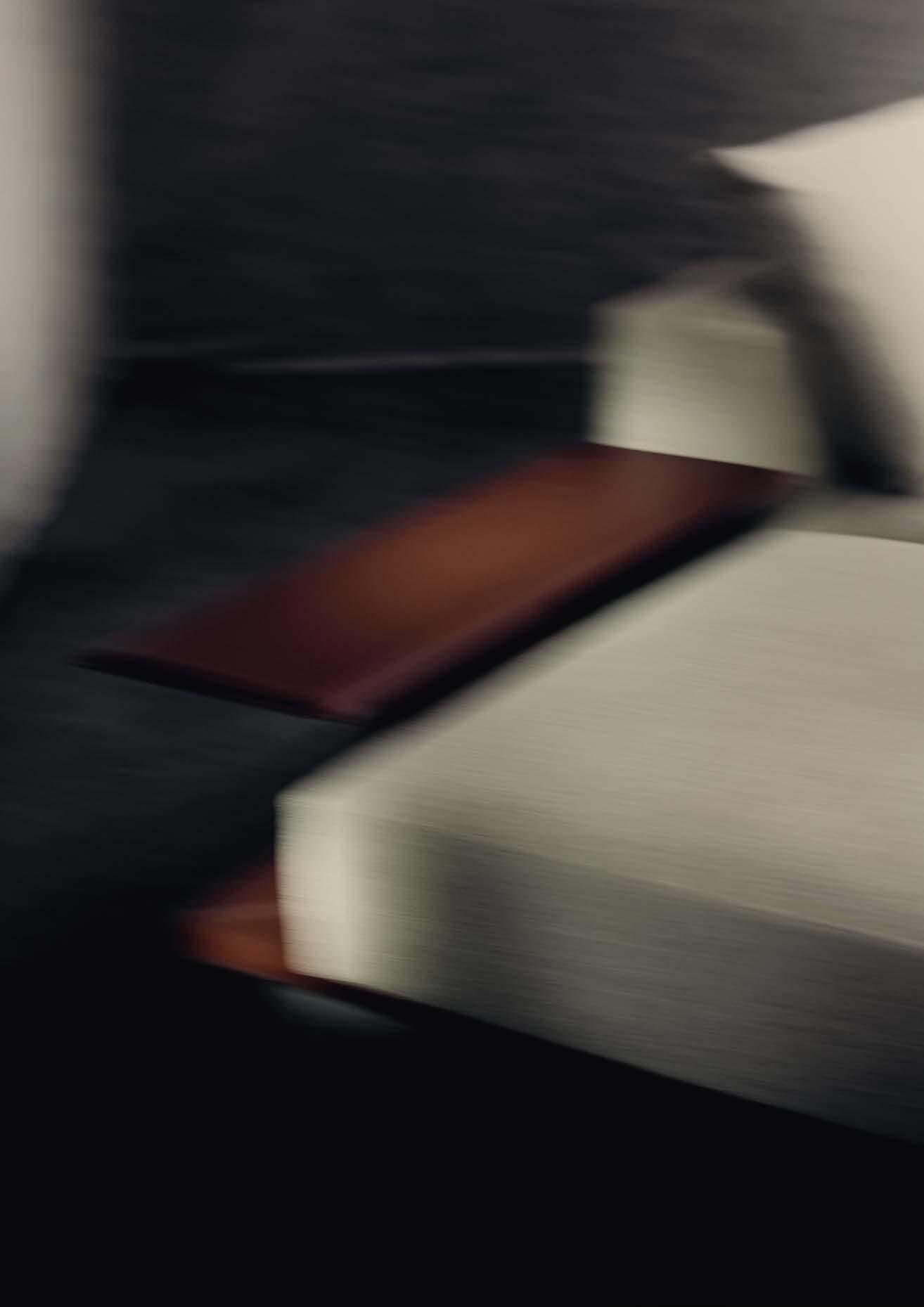
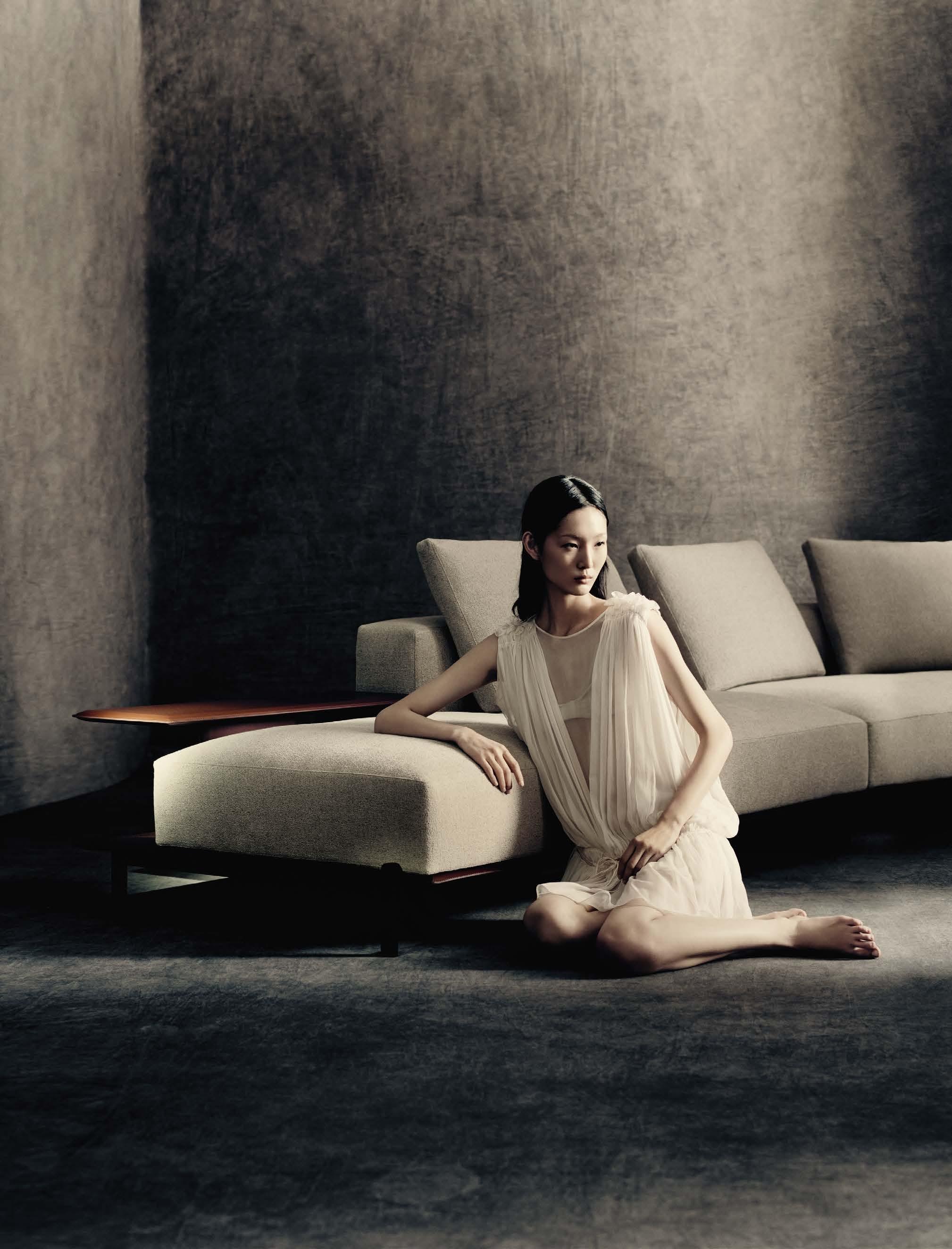





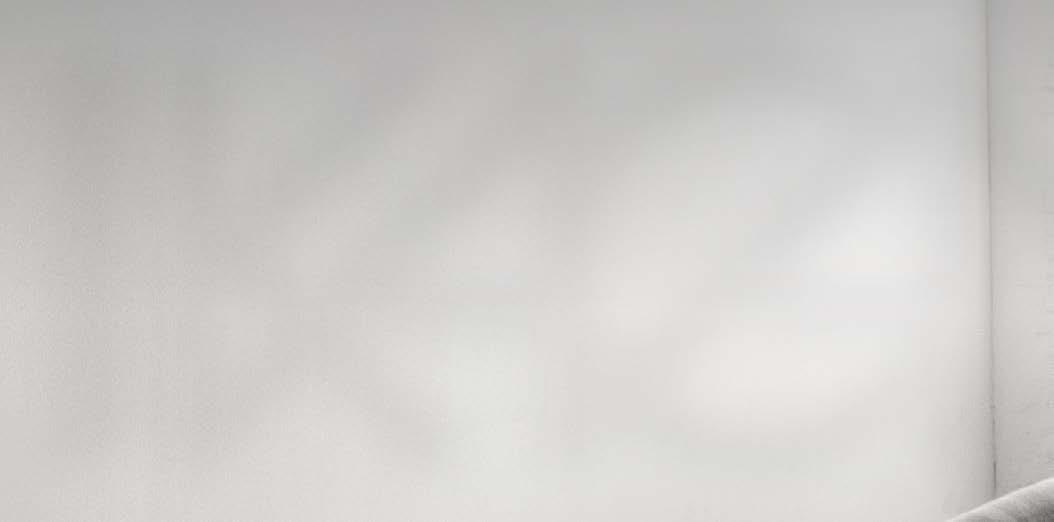
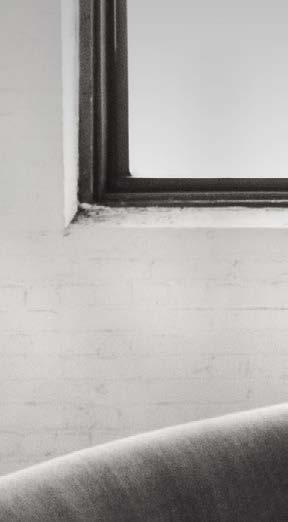


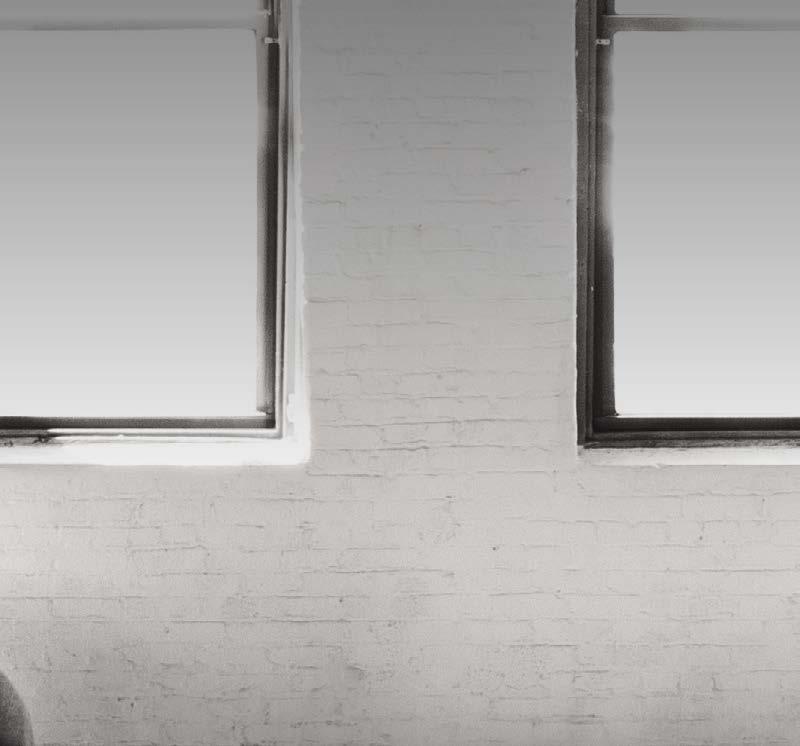
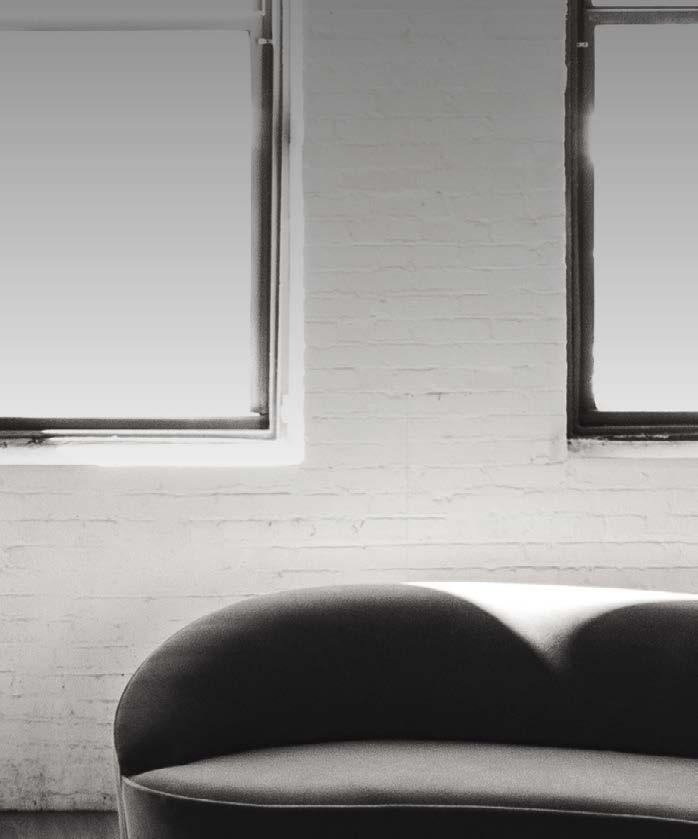



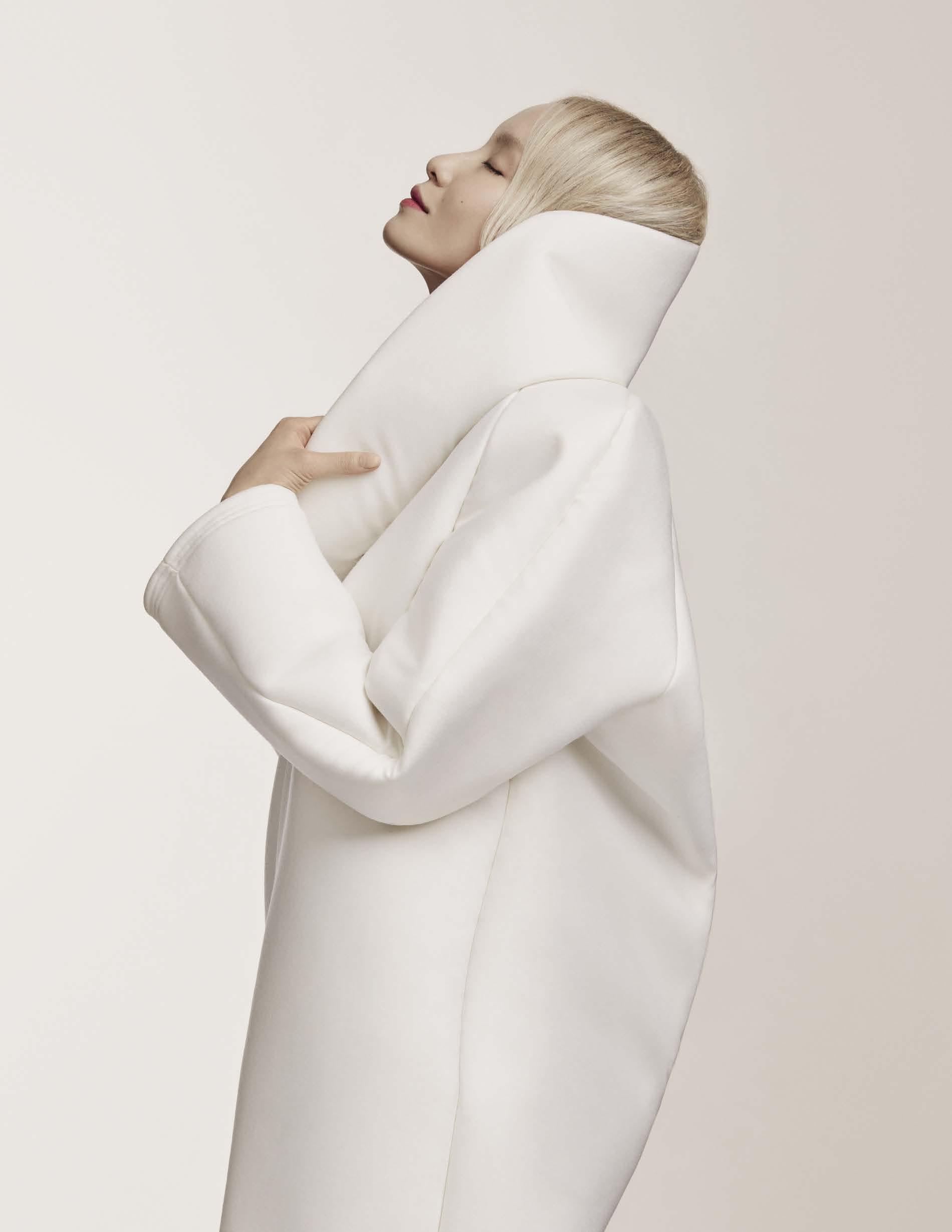

















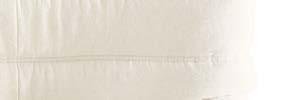
















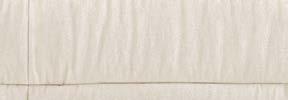
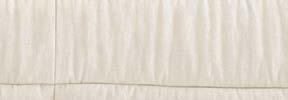





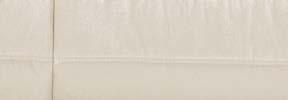




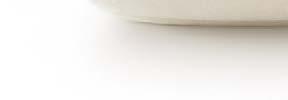



















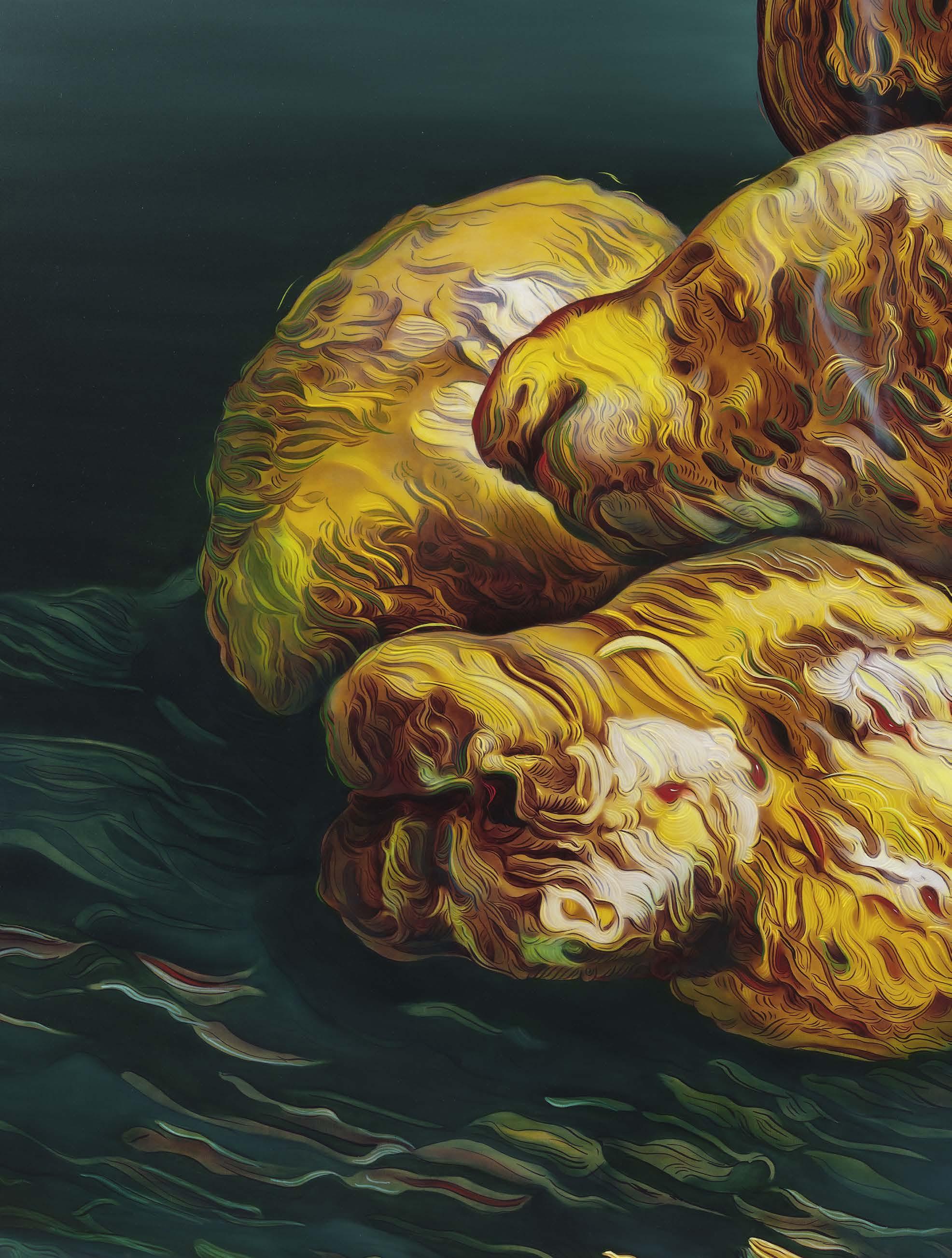
Editor-in-chief
Alison McDonald
Managing Editor
Wyatt Allgeier
Editor, Online and Print
Gillian Jakab
Text Editor
David Frankel
Executive Editor
Derek Blasberg
Digital and Video Production Assistant
Alanis Santiago-Rodriguez
Design Director
Paul Neale
Design
Alexander Ecob
Graphic Thought Facility
Website Wolfram Wiedner Studio
Gagosian Quarterly, Spring 2023
Cover Roe Ethridge
Founder Larry Gagosian
Published by Gagosian Media
Publisher
Jorge Garcia
Associate Publisher, Lifestyle
Priya Nat
For Advertising and Sponsorship Inquiries Advertising@gagosian.com
Distribution
David Renard
Distributed by Magazine Heaven
Distribution Manager
Alexandra Samaras
Prepress DL Imaging
Printed by Pureprint Group
Contributors
Wyatt Allgeier
Derek Blasberg
Michael Cary
Alison Castle
Emma Cline
Ester Coen
Dan Colen
Jeremy Deller
Travis Diehl
Fiona Alison Duncan
Percival Everett
Genieve Figgis
Ben Gillespie
Sally Mann
Adam McEwen
William Middleton
Lydia Millet
Benjamin Moser
Marc Newson
K.O. Nnamdie
Hans Ulrich Obrist
Ashley Overbeek
Arianne Phillips
Tiana Reid
Lia Robinson
Ruth Rogers
Mindy Seu
Jim Shaw
Michael Slenske
Jennifer Snyder
Lumi Tan
Tiziana Terranova
Lisa Turvey
Carlos Valladares
Joy Williams
Andrew Winer
Richard Wright
Thanks
Karrie Adamany
Richard Alwyn Fisher
Julia Arena
Amelia Atlas
Sonja Bartlett
Priya Bhatnagar
Cherry Saraswati Bickerton
Tyler Britt
Glenn Brown
Serena Cattaneo Adorno
Vittoria Ciaraldi
Inge Colsen
Roe Ethridge
Andrew Fabricant
Hannah Freedberg
Hallie Freer
Elisabeth Frood
Julien Garcia-Toudic
Brett Garde
Cy Gavin
Richard Geoffroy
Jonathan Germaine
Lauren Gioia
Darlina Goldak
Hao Liang
Camille Haus
Rayna Holmes
Delphine Huisinga
Melanie Jackson
Sarah Jones
Steven Klein
Jennifer Knox White
Kengo Kuma
Lauren Mahony
Christopher McCoy
Kelly McDaniel
Rob McKeever
Maxime Meignen
Olivia Mull
Kathy Paciello
Kay Pallister
Charles-Antoine Picart
Angelique Rosales Salgado
Sterling Ruby
Antwaun Sargent
Marguerite Shore
Isabel Shorney
Diallo Simon-Ponte
Jenny Smith
Micol Spinazzi
Chandler Sterling
Putri Tan
Harry Thorne
Nadya Tolokonnikova
Kara Vander Weg
Natalia Vargas
Timothée Viale
Misha Vladimirskiy
Lilias Wigan
Eva Wildes
Mimi Yiu
Alice Zhong
Blake Zidell
31
Quinn
Opposite page: Glenn Brown, Shipwreck, Custom of the Sea, 2022 (detail), oil on panel, 59 × 113 inches (150 × 287 cm) © Glenn Brown
CONTRIBUTORS
Alison Castle
Alison Castle (seen here with Marc Newson in a Ferrari 857 S at the 2022 1000 Miglia) is a writer, editor, and filmmaker. She holds a BA in philosophy from Columbia and an MA in photography and film from New York University. She has edited and written many books on photography, film, and design for Taschen.

Marc Newson

Marc Newson CBE is an industrial designer whose work spans a wide range of disciplines. Born in Sydney, Newson staged his first solo exhibition at the age of twenty-three and two years later created the now iconic Lockheed Lounge chair. He is the only designer represented by Gagosian and his designs are featured in the permanent collections of more than forty institutions worldwide.
Carlos Valladares

Carlos Valladares is a writer, critic, programmer, journalist, and video essayist from South Central Los Angeles, California. He studied film at Stanford and began his PhD in History of Art and Film and Media Studies at Yale University in the fall of 2019. He has written for the San Francisco Chronicle , Film Comment , and the Criterion Collection.

Ruth Rogers
Ruth Rogers is a chef and co-founder of the iconic London restaurant The River Café. Known for her elegant and seasonal Italian cuisine, she has been instrumental in shaping the UK’s modern culinary landscape. Along with her business partner Rose Gray, Rogers has been awarded multiple accolades and accolades, including a coveted Michelin star. She has also published several cookbooks, sharing her love of Italian food and cooking techniques with home chefs. Ruth Rogers continues to be a leading figure in the world of food and a champion of sustainable and seasonal ingredients. She is also the host of the podcast “Ruth’s Table.”

Andrew Winer
Andrew Winer is the author of the novels The Marriage Artist and The Color Midnight Made . He writes and lectures on art, philosophy, and literature. A recipient of a National Endowment for the Arts Fellowship in fiction, he is presently completing a novel and a book on the contemporary relevance of Friedrich Nietzsche’s central philosophical idea, the affirmation of life.
32
Photo: Jerry Schatzberg
Sally Mann
Sally Mann is an American photographer and writer. Her work is held in many notable collections, including the National Gallery of Art, Washington, DC; the Metropolitan Museum of Art, New York; the Victoria & Albert Museum, London; and the Moderna Museet, Stockholm.

Mann’s Hold Still: A Memoir with Photographs (Little, Brown, 2015) was named a finalist for the 2015 National Book Awards and in 2016 won the Andrew Carnegie Medal for Excellence in Nonfiction. She was inducted into the American Academy of Arts and Sciences in 2022 and is a Prix Pictet laureate. Photo: Annie Leibovitz
Benjamin Moser
Benjamin Moser is a writer based in the Netherlands. He is the author of Why This World: A Biography of Clarice Lispector (2009) and of Sontag: Her Life and Work (2020), for which he won a Pulitzer Prize. His new book, The Upside-Down World: Meetings with the Dutch Masters , will be published in October.

Derek Blasberg


Derek Blasberg is a writer, fashion editor, and New York Times best-selling author. He has been with Gagosian since 2014 and is the executive editor of Gagosian Quarterly.
Jim Shaw
Jim Shaw has responded to American cultural history through painting, drawing, and sculpture since the 1970s, drawing on sources as wideranging as comic books, pulp novels, rock albums, protest posters, and amateur paintings. Often unfolding in extended narrative cycles, Shaw’s works juxtapose images of friends and family with depictions of world events, pop-cultural phenomena, and alternative realities, blending the personal, the commonplace, and the visionary. Photo: LeeAnn Nickels
Michael Slenske
Michael Slenske is a Los Angeles–based writer and independent curator who has organized exhibitions at Praz-Delavallade, the Landing, Wilding Cran Gallery, and Frieze LA. His work has been anthologized, included in many artists’ monographs, and appears regularly in W, Galerie , and Los Angeles Magazine Photo: Ry Rocklen

Mindy Seu
Mindy Seu is a New York–based designer and technologist, an assistant professor at Rutgers University’s Mason Gross School of the Arts, and critic at the Yale School of Art. Her expanded practice involves archival projects, techno-critical writing, performative lectures, design commissions, and close collaborations.

33
Richard Wright
Richard Wright is best-known for his painted and gilded works applied directly to walls and ceilings. His pieces, which are often transient, charge the spaces they inhabit with a range of forms, from baroque ornamentation to constructivist patterns. In recent years he has produced commissions for numerous public spaces and institutions, including the Tottenham Court Road Elizabeth-line station, London (2018), the Queen’s House, Greenwich, London (2016), and the Rijksmuseum, Amsterdam (2012). In addition to these site-specific works, Wright also creates watercolors, silk screens, and leaded-glass windows and skylights. In the spring of 2023, Gagosian will publish a major monograph documenting the last ten years of his work; in March, he will have an exhibition at Gagosian Davies Street, London. Photo: David Ersser
Percival Everett
Percival Everett is the author of twenty-two novels and four collections of stories. His novels include The Trees (2021), Telephone (2020), So Much Blue (2017), and Erasure (2001). He has received awards from the Guggenheim Foundation and Creative Capital. He lives in Los Angeles, where he is distinguished professor of English at the University of Southern California.

Hans Ulrich Obrist

Hans Ulrich Obrist is artistic director of the Serpentine Galleries, London. He was previously curator at the Musée d’Art Moderne de la Ville de Paris. Since his first show, World Soup (The Kitchen Show), in St. Gallen, Switzerland, in 1991, he has curated more than 300 exhibitions. Photo: Tyler Mitchell

Ashley Overbeek
Ashley Overbeek is the director of strategic initiatives at Gagosian. She has been collecting NFTs since early 2019 and is a cohost on Wednesday Wonders, a weekly Twitter space where she interviews leading crypto artists.

Ester Coen
Ester Coen is an art historian and curator. She is an expert on Italian Futurism, the Metaphysical artists, and the international avant-gardes, and her research for her numerous essays and publications extends from the 1960s to the contemporary scene. She has curated many exhibitions, their subjects ranging from Giorgio de Chirico, Umberto Boccioni, Giacomo Balla, and Henri Matisse, to Richard Serra and Gary Hill.
Tiziana Terranova

Tiziana Terranova is an Italian theorist and activist who studies the effects of information technology on society and explores concepts such as digital labor and commons. Terranova has published the monograph Network Culture

34
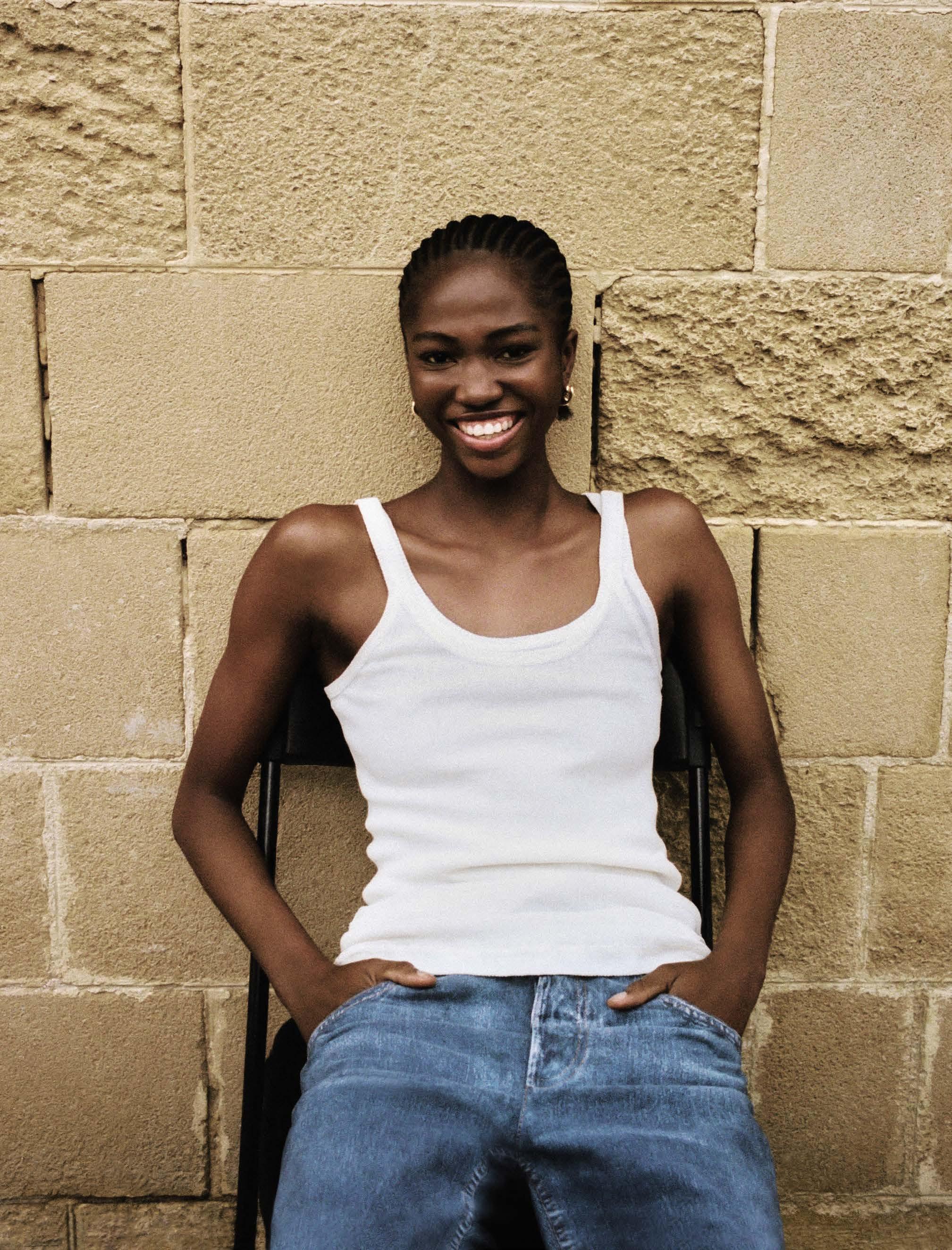
Lydia Millet

Lydia Millet has written more than a dozen books, most recently the novel Dinosaurs (W. W. Norton, 2022). Her previous novel, A Children’s Bible , was a finalist for the National Book Award in fiction and one of the New York Times Book Review ’s “10 Best Books of 2020.” Other titles include the novels Sweet Lamb of Heaven (2017) and Mermaids in Paradise (2015). Millet has been a finalist for the Pulitzer Prize in fiction and various other honors, and works as a writer and editor at the Center for Biological Diversity, an organization dedicated to fighting climate change and species extinction. She lives outside Tucson, Arizona. Photo: Nola Millet

Genieve Figgis
Genieve Figgis is an artist who lives and works in County Wicklow, Ireland. She received her BA in Fine Art from the Gorey School of Art, Wexford, Ireland, in 2006; BA honors from the National College of Art and Design, Dublin, in 2007; and her MFA from the National College of Art and Design in 2012.
Travis Diehl

Travis Diehl is a critic, writer, and editor. Recent reviews and essays of his have appeared in the New York Times , Artforum , Art in America , x-tra , Frieze , the Financial Times , and Tank ; recent poems have appeared in Forever. Awards he has won include the Creative Capital Arts Writers Grant and the Rabkin Prize in Visual Art Journalism. He is Online Editor at x-tra
Jennifer Snyder
Jennifer Snyder is the oral history archivist at the Smithsonian’s Archives of American Art, where she manages and cares for more than 2,500 interviews and their related assets. Snyder earned her MLS from the University of Maryland and enjoyed a career as a processing archivist before finding her way to oral history.
Lumi Tan
Lumi Tan is a curator and writer based in New York. She is currently the curatorial director of Luna Luna, a traveling art amusement park that originated in a 1987 project conceived by André Heller. She was previously senior curator at The Kitchen, New York, where she organized exhibitions and produced performances with artists including Kevin Beasley, Gretchen Bender, Abraham Cruzvillegas, E. Jane, Baseera Khan, Autumn Knight, Moor Mother, Sondra Perry, the Racial Imaginary Institute, Tina Satter, Kenneth Tam, and Anicka Yi. Tan has also held positions at the Fonds Régional d’Art Contemporain du Nord-Pas-de-Calais, France, the Zach Feuer Gallery, New York, and MoMA PS1, New York. Her writing has appeared in the New York Times, Artforum , Frieze , Mousse , Cura , and many exhibition catalogues. She was the recipient of the 2020 via Art Fund Curatorial Fellowship.

Lia Robinson
Lia Robinson is a curator specializing in global modern and contemporary art. She currently serves as director of programs and research at the Shigeko Kubota Video Art Foundation, which is committed to presenting and preserving the legacy of the video pioneer Shigeko Kubota (1937–2015) and to supporting research, experimentation, and broader access to artistic practices at the intersection of art and technology.


36
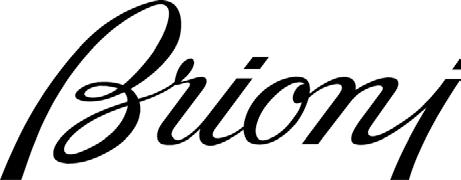


JUDE LAW & RAFF LAW
Joy Williams

Joy Williams is the author of five novels, most recently Harrow (2021); four collections of stories; and Ill Nature (2001), an essay collection that was a finalist for the National Book Critics Circle Award. Her many honors include the Rea Award for the Short Story and the Strauss Living Award from the American Academy of Arts and Letters. She was elected to the academy in 2008. She lives in Tucson, Arizona, and Laramie, Wyoming.
Ben Gillespie
Ben Gillespie works as an oral historian at the Archives of American Art, where he manages the oral history program and produces the podcast Articulated . His research attends to the ways in which we might recuperate, preserve, and amplify neglected artistic voices. He received his PhD from Johns Hopkins University.

Dan Colen

In works ranging from painting and sculpture to installation and performance, Dan Colen plays with familiar materials and cultural symbols to interrogate the relationship between meaning and object. He is the founder of Sky High Farm, a nonprofit committed to improving access to fresh, nutritious food for New Yorkers living in underserved communities. Photo: Eric Piasecki
K.O. Nnamdie
K.O. Nnamdie is a curator, writer, art advisor, and artist based in New York City. He is the director at anonymous gallery and runs Restaurant Projects, a curatorial project and research-driven art-advisory service founded in 2018 and based on Nnamdie’s interest in the intersection between hospitality and the arts. Photo: Thomas Polcaster

William Middleton
The Paris-based writer William Middleton is the author of Double Vision , a biography of the legendary art patrons and collectors Dominique and John de Menil, published in 2018 by Alfred A. Knopf. He has contributed to such publications as W, Vogue , Harper’s Bazaar, Architectural Digest , House & Garden , Departures , Town & Country, the New York Times , and T. Middleton’s next book is Paradise Now: The Extraordinary Life of Karl Lagerfeld , to be published by HarperCollins in February 2023.

Michael Cary
Michael Cary organizes exhibitions for Gagosian, including eight Picasso exhibitions in collaboration with John Richardson and members of the Picasso family. He joined Gagosian in 2008 after working for six years with the late Kynaston McShine, then chief curator at large at the Museum of Modern Art, New York. Photo: Clive Smith

38
Photo: Jonno Rattman
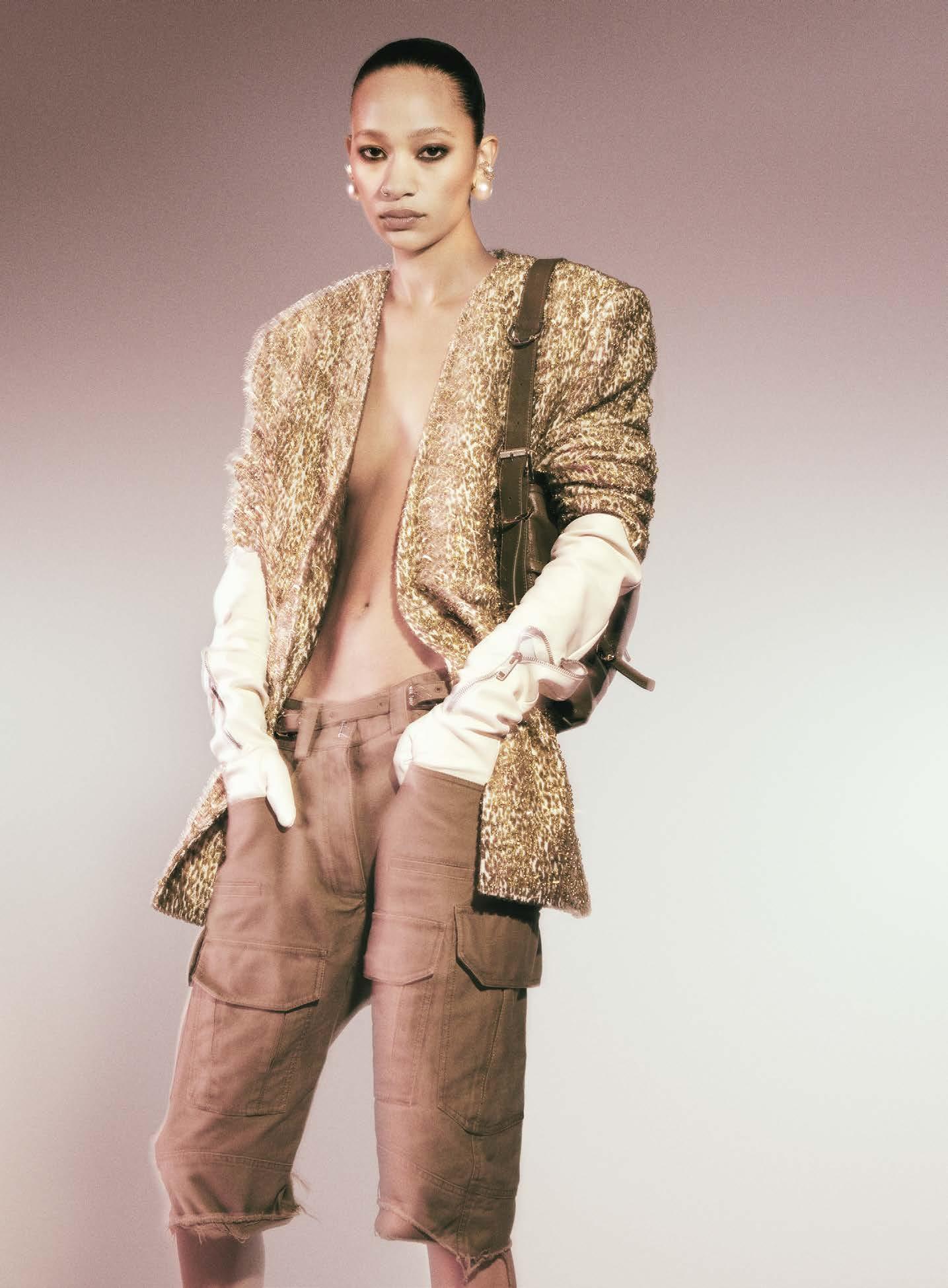












Tiana Reid
Tiana Reid is an assistant professor in the Department of English at York University, Toronto. Her writing has been published in Aperture , Art in America , Artforum , Canadian Art , Frieze , the Nation , the New York Review of Books , the Paris Review, Vulture , and elsewhere.

Fiona Alison Duncan
Fiona Alison Duncan is a CanadianAmerican author and organizer and the founder of the social literary practice Hard to Read. Duncan’s debut novel, Exquisite Mariposa (Soft Skull Press), won a 2020 Lambda Award. She is currently developing a narrative biography and critical study of the transdisciplinary American artist Pippa Garner.
Adam McEwen
Adam McEwen was born in 1965 in London, England. He received his BA in 1987 from Christ Church, Oxford, and then received his BFA in 1991 from the California Institute of the Arts, Valencia. His multifarious practice includes obituaries of living subjects such as Bill Clinton, Greta Thunberg, and Grace Jones, alongside sculptures in various media and paintings on canvas and sponge. McEwen currently lives and works in New York City. Photo: Andisheh Avini
Lisa Turvey

Lisa Turvey is the editor of the catalogue raisonné of Ed Ruscha’s works on paper. Before joining Gagosian, in 2008, she was the managing editor of October. She has written for publications including Aperture , Artforum , Art Journal , and October

Jeremy Deller
Jeremy Deller studied art history at the Courtauld Institute. Deller won the Turner Prize in 2004 and represented Britain in the 55th Venice Biennale in 2013. He has been producing projects since the mid1990s, often in the public realm.

Wyatt Allgeier
Wyatt Allgeier is a writer and an editor for Gagosian Quarterly. He lives and works in New York City.


40
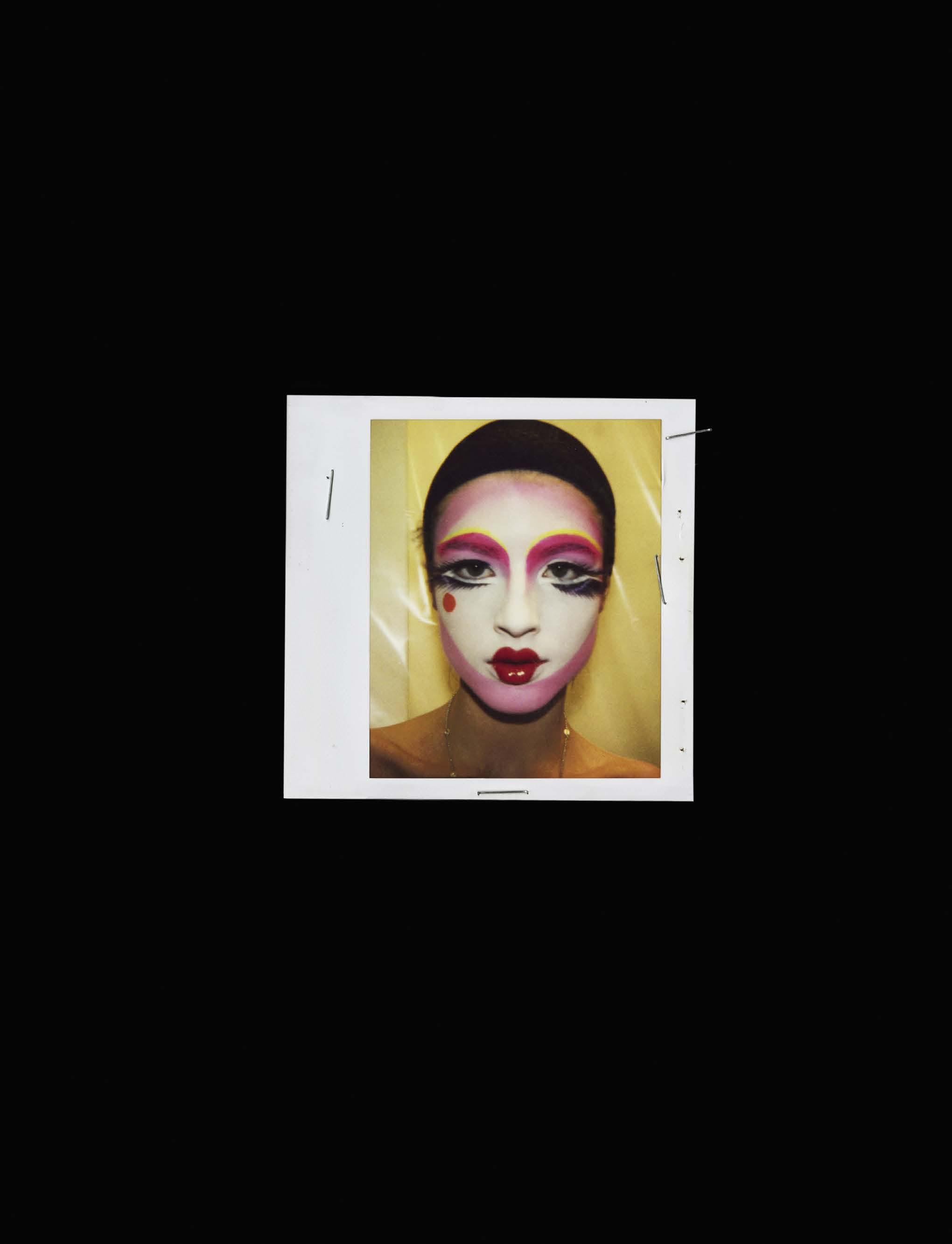
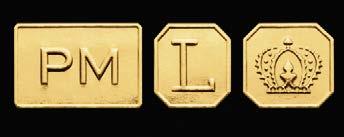
GLENN BROWN FROM THE INSIDE OUT
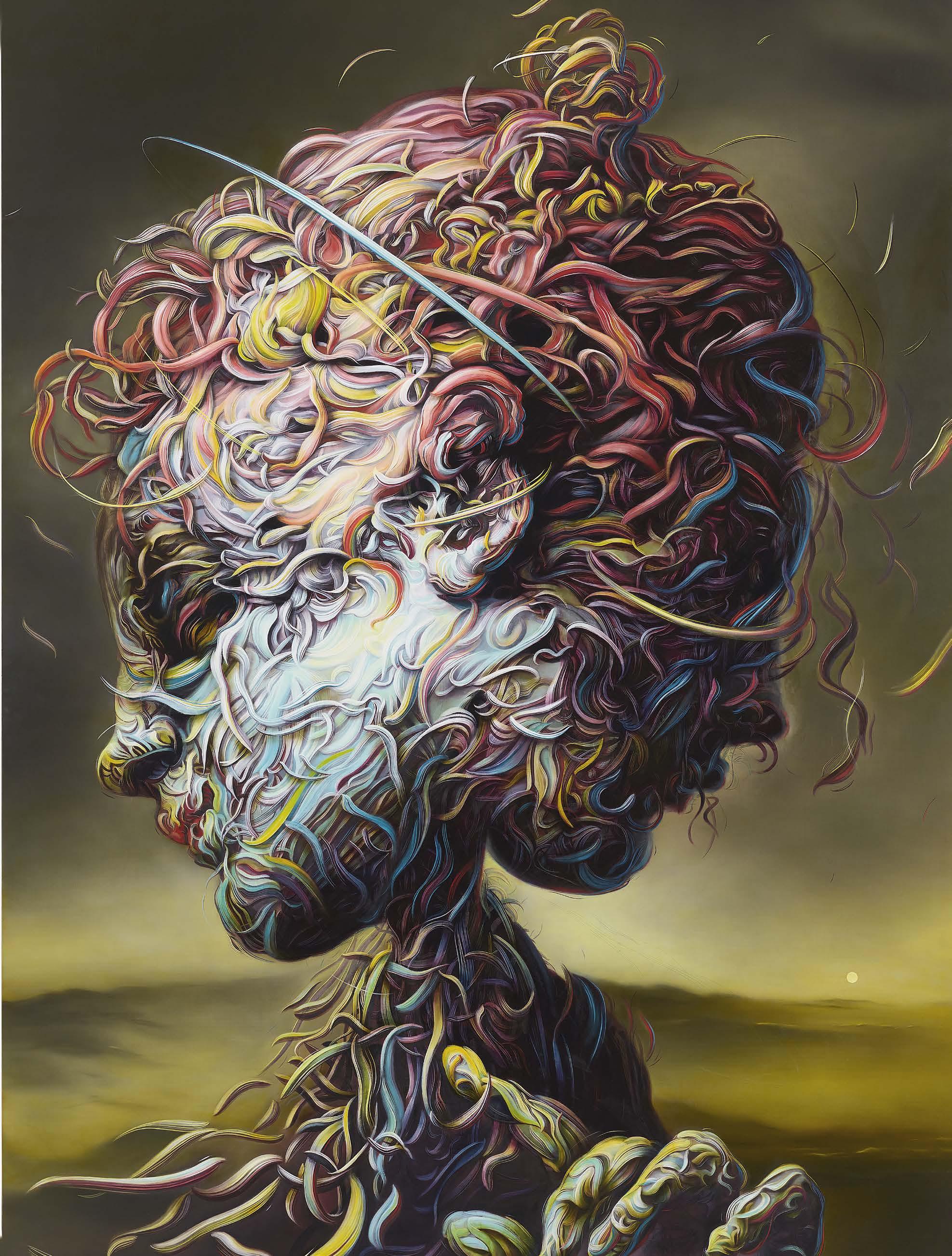
Novelist Andrew Winer reports on the formal, conceptual, historical, and philosophical perspectives embedded in Glenn Brown’s latest paintings and drawings. The two talked after the opening of the artist’s recent New York exhibition Glenn Brown: We’ll Keep On Dancing Till We Pay the Rent .
It’s late, Glenn Brown’s opening is over, and at last all sixty of our party—dealers, collectors, curators, gallery staff, friends, and various beautiful people—have snuggled into the tables that have been reserved at a hip new restaurant in Chelsea. To our relief, waters arrive, followed by wine and hors d’oeuvres— extraordinary Tuscan things we can’t wait to try—but then the artist gets to his feet with a curl of paper in his hand. He’s making a speech.
“The Over-Soul,” Brown explains, referring to the Emersonian concept that inspired one of his paintings, “concerns whether we have a soul or not.”

Everyone at my table reaches for their wineglass.
Any artist willing to regale a restaurant full of hungry art-world cognoscenti with a lesson on Ralph Waldo Emerson is after my own heart. But that will not be the only lesson. Standing there in his elegant three-piece suit as waiters push past, Brown shares that he was given the middle name “Emerson” by his late father, who had derived his sense of morality from the great American transcendentalist. It’s his father’s tie that Brown is wearing tonight, an homage to how much the man helped him with his paintings. Help that was apparently needed. “I’m fifty-six,” he continues, “and it feels like painting is this most awful mistress that you try and please, but she just punishes you. You keep struggling and fighting with it, you want this marriage to work. But we never actually get to make the painting we actually really set out to make. And my father used to look at the painting I was working on and tell me, ‘Within painting you cannot lie. You think you’ve gotten away with it, Glenn. But like Emerson tells us, honesty and integrity are the most important parts of being an artist.’”
What has Brown gotten away with?
“I’m pointedly lying. My paintings are completely dishonest.” I’m walking with him through the gallery the following morning and we’ve arrived at the painting that lent the show its title, We’ll Keep On Dancing Till We Pay the Rent , because he wants me to examine the color-drenched, twofaced head that graphically dominates the canvas, a sort of iconic modern-day Janus. “Look—it’s not real painting. It’s pretend painting. Pretend white light that comes from the left here, fake red light emanating from the right, yellow light coming down from there—I have imaginary lights lighting every single brushstroke, leaving some of them in shadow and some in light.” He points to one of the many large, overlapping, whipping brushstrokes
44
Previous spread: Glenn Brown, We’ll Keep On Dancing Till We Pay the Rent , 2022 (detail), oil on panel, 78 ¾ × 55 ½ inches (200 × 141 cm). Photo: Prudence Cuming Associates Ltd
Opposite: Glenn Brown, The Holy Bible, 2022 (detail), acrylic on panel, 78 × 48 5⁄8 inches (198 × 123.4 cm). Photo: Rob McKeever
This page: Glenn Brown, Doggerland , 2022, oil and acrylic on panel, 85 1 8 × 56 ¾ inches (216 × 144 cm). Photo: Rob McKeever
that, in aggregate, seem to thickly make up the head (some of them are also twirling and peeling and otherwise falling away from it). “There are umpteen lines there in any single brushstroke. I’m trying to trick the eye. Make the stroke look three-dimensional. But it’s all smooth.” Indeed, the strokes’ impasto look is simulated. What appears to be spontaneous, heavily applied brushwork is the result of a laborious, precise, lapidary process—and all of it is pressed beneath the glassy surface of the painting. “For many artists—look at Joan Mitchell—their work sits on the picture plane. Or Willem de Kooning. Frank Auerbach. My work exists on the other side of the picture plane. It’s illusion and the use of trompe l’oeil and perspective, which is not a modernist thing to do, generally. It’s artifice. It doesn’t tell you the truth of how it’s made.”
Nearly all good paintings enjoin us to contemplate how they were made. Brown’s do so swiftly and arrestingly. He’s a superb draftsman and an equally superb image-maker, and his show’s large heads and figures seem to punch out into the gallery with graphic, eye-catching boldness. Yet they don’t catch your eye with their eyes. By intention, none meets your gaze. “It’s rude to stare,” Brown tells me. “But these will never stare back at you, so it gives you permission to look.” What else is there to do but look, then—how is each painting made? For Brown, the answer is brushstrokes, brushstrokes, brushstrokes. But it isn’t simple.
In a way, every painter has to search for permission to paint. Something else Brown has gotten away with: making paintings at all. That may seem a funny thing to say, but the charge to self-justify is embedded in modern art’s subservience to the avant-gardist idea that it must constantly evolve, rejecting what came before (even as it indirectly furthers, sometimes, what has been). In the 1950s, the Abstract Expressionists fervently adopted this history-erasing ethos, which evolved into Pop indifference before being turned into something like dogma by Conceptualism and Minimalism. By the time Brown was an art student, several schools of artists had emerged with another attitude toward progress in art: the Pictures Generation, the Neo-Expressionists, the appropriation artists, and the Neo-Geo painters retained the idea that art must evolve, but they were interested in finding ways to work with art history—an interest that you might say was forced on them by an abiding sense that art had reached a point of exhaustion. What about it was exhausted, exactly? Certainly
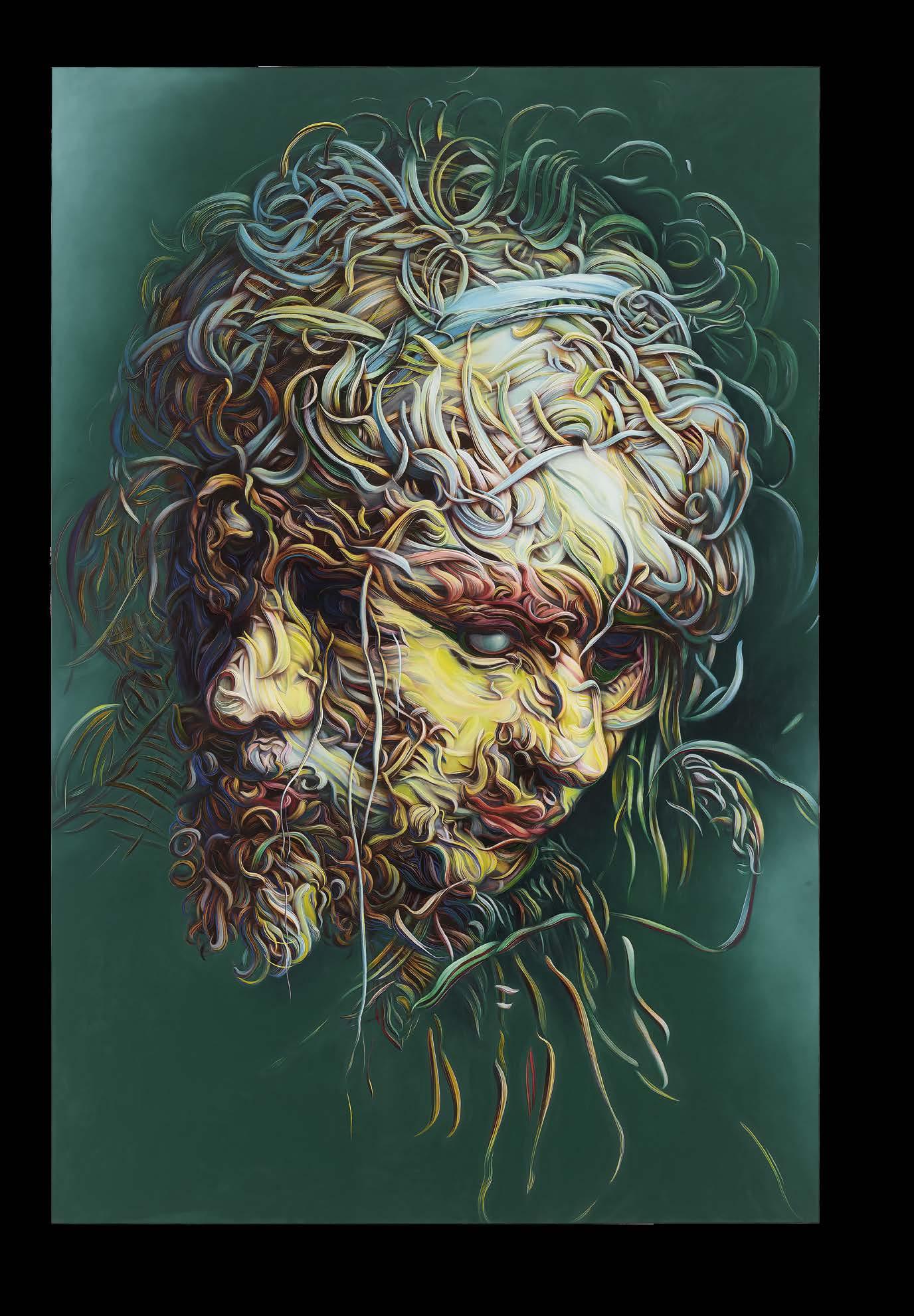
45
the idea of authenticity and originality, the privileged status of a work of art. The image as a carrier of meaning and significance came into question. And in the case of painting, a related, older sort of exhaustion inhered: namely, a distrust—felt by Jasper Johns and Robert Rauschenberg as early as the mid-1950s—of the expressive mark’s ability to convey meaning.

Yet the history of art has proven that exhaustion can lead to renewal and freedom. And the reduced status of the image, the brushstroke, and the work of art itself paradoxically made each of these not only serviceable but enticing as raw material to artists of the 1970s and ’80s, who were inclined to use them with a new knowingness. Driven by a sense of intellectual authority inherited from Conceptualism, such artists as David Salle, Sherrie Levine, and a whole host of their contemporaries claimed
a new freedom to fish out and use images from a grab bag history of art and culture. Then there were those oriented around the brushstroke. For the most part eschewing any conceptual justification, painters such as Georg Baselitz, Julian Schnabel, and Jean-Michel Basquiat wielded the expressive mark anew, often with a sort of devil-may-care abandon. Whatever justification they sought or claimed for all the demonstrative painterly license they were taking showed up as some mix of irony, self-consciousness, or cultural signification. A cooler approach was adopted by painters like Brice Marden and, in his abstract canvases, Gerhard Richter, who found various mediated means to produce strokes that were pleasing but drained of much of the emotiveness that attended the work of their Neo-Expressionist contemporaries. (Anselm Kiefer can be thought of as an amalgam of these
hot and cool approaches: his brushwork is manifestly loose and expressive, yet fettered by the grim task of grappling with some ugly German history.) Such were the currents into which the young Glenn Brown and his contemporaries first dipped their toes. But as roiling and vigorous as those postmodern seas were, even they, for Brown’s generation, gave off a slightly malodorous reek of exhaustion. It so happens that I’m Brown’s exact age, having matured in the late ’80s—after the party was over. But then the party was over for our generation before we ever knew what the art world was: if our parents in the ’60s and ’70s experienced the vertiginous feeling of living in a way no one seemed to have before, we experienced living in a hundred different ways that had just been lived. (I am suddenly reminded by this, and by Brown’s paintings, of waking up as a child to a house strewn with
46
sleeping hippies, wine bottles, smelly old food, dirty plates, half-smoked doobies, gothic-looking album covers, sci-fi novels, books on ecology and philosophy and cabin building, and a pot of spiced wine on the stove, still warm and fragrant, beneath a framed, counterfeit Salvador Dalí etching.) What were we to do, in our youth, but cherry-pick from the leftovers? Later, in the arena of cultural production occupied by artists (always more advanced than parents!), we had no choice but to cherry-pick from the leftovers of the leftovers. For painters, this often meant leaping backward over the postmodernists and over the history-annihilating Minimalists and Pop artists—sometimes to the Abstract Expressionists (as in the case of Cecily Brown) or even much farther back (as in the case of John Currin). Brown leapt, and continues to leap, back to all such places, taking his imagery mainly from the old
masters and his technique from Abstract Expressionism—with a twist.
That twist, an inward one, emerged from the fact that Brown, like other art students of his generation, took his justification less from Conceptualism than from French and German theorists. The influence of semiotics, poststructuralism, and deconstruction encouraged these fledgling artists to look not just at the language of a made thing but at the smallest components of that language. Brown, arguably, looked harder in this direction than most of his generation did, and it’s part of what led him, oddly enough, toward that old exhausted thing: the expressive brushstroke. But his love for the work of de Kooning and Rauschenberg in America, and of Auerbach, Lucian Freud, and Francis Bacon in his own country, also led him to the brushstroke—even if that love can’t quite be separated, in my opinion,
from Brown’s mischievous desire to go toward what is least fashionable.
What to do, though, with the brushstroke?
Rauschenberg, having gone about deconstructing and reconstructing Abstract Expressionism in the 1950s with a kind of insouciance, offered a clue. Brown certainly seemed to want to pay expressionism, among his other historical references, the compliment of repurposing and reconstruction— of homage rather than outright rejection. But so did the Neo-Expressionists in the ’80s; how was Brown to distinguish what he was doing from their efforts? Another, less obvious clue came from farther back, in one of those unfashionable precincts where dwelled artists such as Fragonard. “I’ve always been trying to save him from the guillotine,” Brown admits when I ask what the Rococo painter has meant to him, “because taste is continually
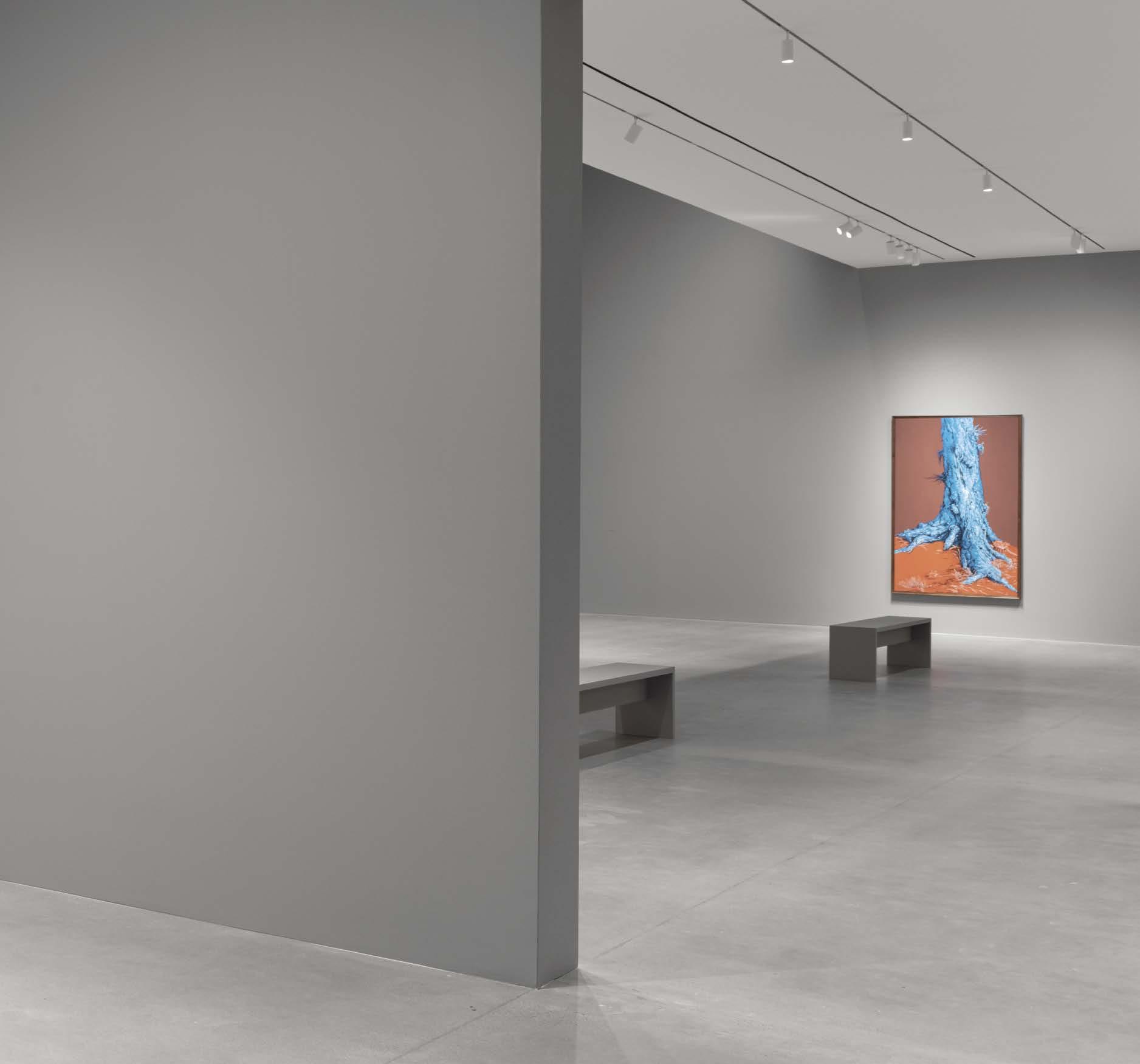
47
trying to string him up. But take his suite of paintings in the Frick: the subject matter is really rather downplayed, and if you look at them as abstract paintings, you get a sense that this is all a dream because of the way everything is painted. His gelatinous mark-making causes you to think that everything is made of the same material almost.” How could Brown deconstruct expressionism and realism at the same time? How could he make a kind of realist painting that feels as artificial as an Abstract Expressionist painting—that “makes you think that everything is made of the same material”? Brown’s solution, following the model of the poststructuralism he was reading, was to take his deconstructing down to the smallest possible unit of the language of painting. If artists throughout history had acknowledged the artificiality of painting in a thousand different ways, it was time to take the artificiality inside the stroke.
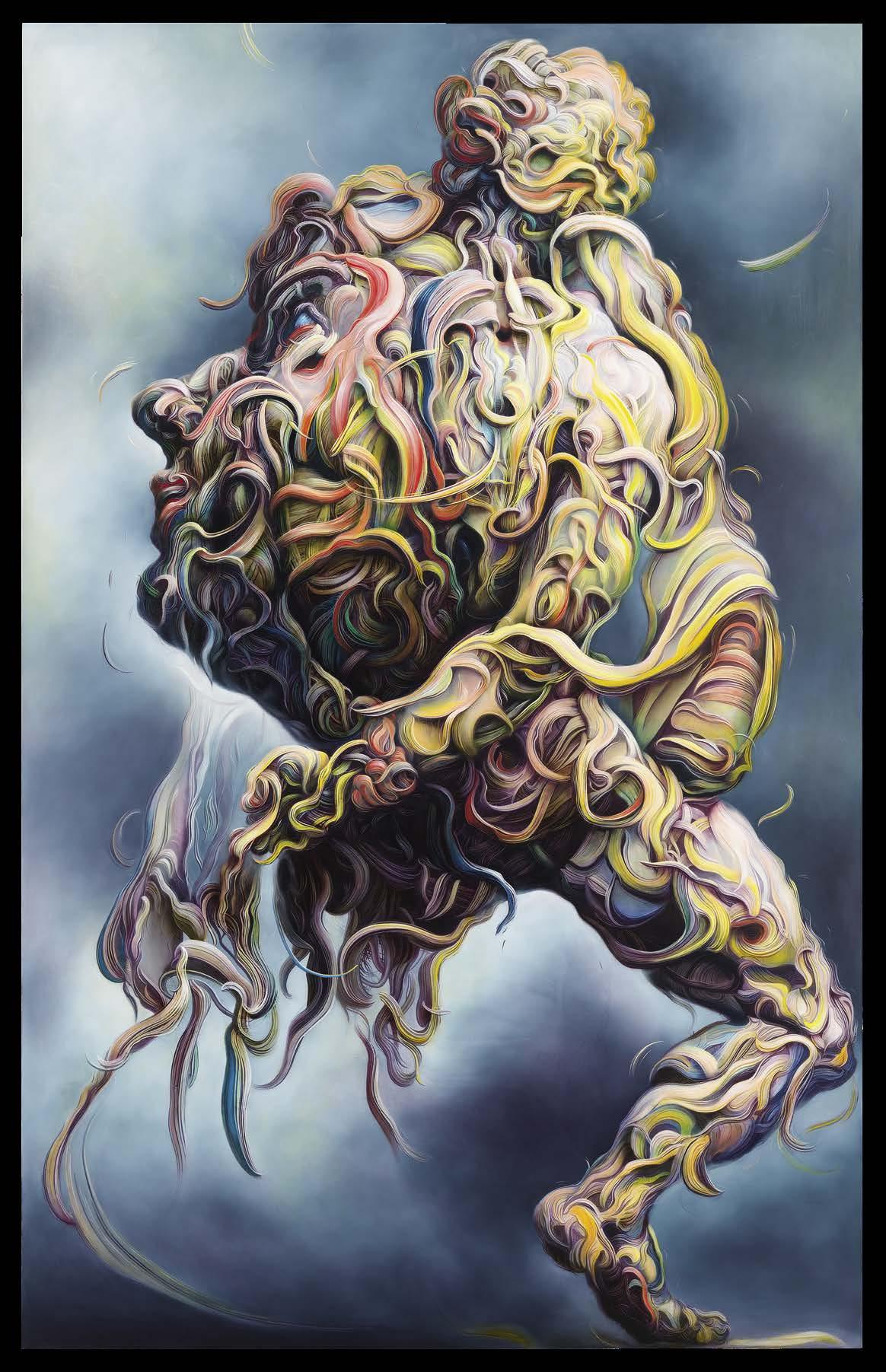
Brown must have galled more than one envious peer trying to figure out, as many were then, how to get away with de Kooning– or Auerbach-like brushwork without copying Richter. He had found a way to pay his own kind of homage. As with Richter, it was ironic homage, to be sure, but not cheapened. (Accusations of cleverness and trickery will ring hollow to anyone who really looks at what Brown achieves with his trompe l’oeil brushstrokes: they’re simply too adept, too bravura, too fun, not to be taken seriously.) To be successful, homage of this sort must first be directed just to the right or left of the thing to which homage is primarily being paid. Richter’s abstract paintings pay homage to photography, for example, on their way to paying respect to expressionism. So what about Brown? His paintings ultimately pay homage to expressionism as well, but before that, they defer to something that no longer exists, something that was lost when we “wised up” about painting in the ’60s and ’70s. I’m not referring to the mid-twentieth-century idea, questionable even then, of painting as an activity that, for the artist, is self-actualizing, self-fashioning, and self-expressive. I’m referring to that idea’s more defensible concomitant: that the extemporized brushstroke is a vessel or catalyst for feeling.
Still, Brown’s brushstrokes ought to make us feel. Is there not something poignant about his dedicating years of very fine painting to an idea that was for him and his contemporaries already debunked? And what about the haunting fact that he reproduces brushstrokes that never were? Or that he can spend many hours on a stroke that might have taken an expressionist a second? A lot of longing attaches to this enterprise. I’m deeply
48
Previous spread: Installation view, Glenn Brown: We’ll Keep On Dancing Till We Pay the Rent, Gagosian, 541 West 24th Street, New York, November 8–December 23, 2022.
Photo: Rob McKeever
This spread: Glenn Brown, The Over-Soul , 2022, oil on panel, 76 × 48 inches (193 × 122 cm).
Photo: Rob McKeever
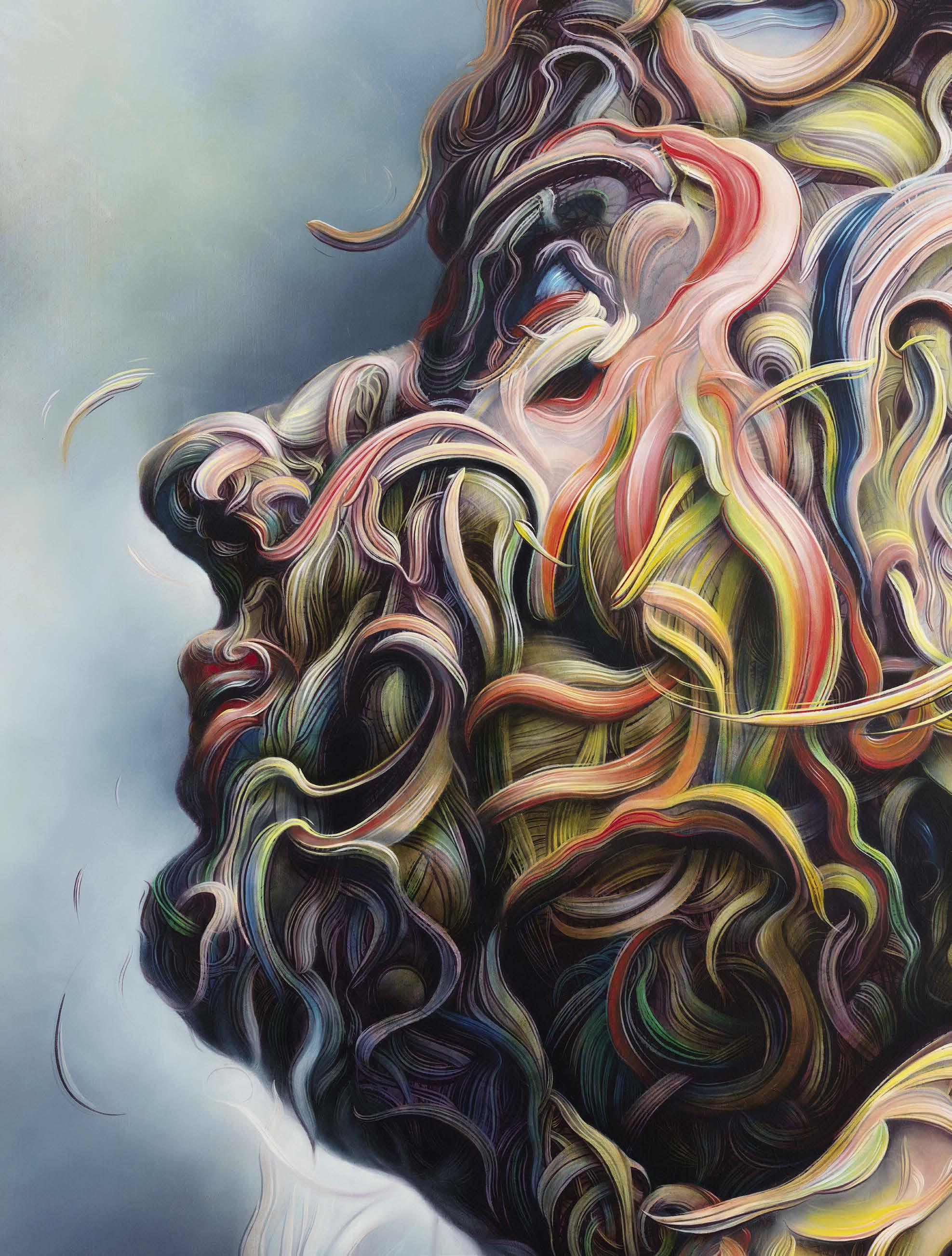
moved by it; I hope other viewers are too. Brown’s strokes may be slowly crafted simulations that exert a subtle steeliness across the canvas, but such is our contemporary fate: that feeling, like the humans who carry it, must come through metal detectors in order to fly.
What is life? What are we doing here? Brown’s paintings, for all their incendiary, campy colors, for all their denial of art’s old heroism, still ask these philosophical, even spiritual questions. They, along with the three drawings in the show into which Brown also layered multiple images, have something to say about the complexity of being a person. And this is the final thing that Brown gets away with: being a storyteller. (Even though narrative painting made a comeback forty years ago after its banishment by abstraction and Minimalism, and despite having always had an audience, it continues to sit uneasily with more than a few critics and theorists, and indeed with a number of artists.) So what story is Brown telling? “I’m not trying to depict the world as it is,” he tells me as we stand before The Holy Bible , his sensational painting of a tree trunk that has the flatness of Pop and the somber blues and browns of Dutch landscape. I take in the tree’s burled bark and knobby, almost grotesque roots. “I’m trying to describe the world as it might be if it could express itself,” Brown goes on. “So hence the tree starts to describe what it might be to be a tree. And the human body tries to describe all the pains and agonies, the loves and sexual drive that’s within our bodies. And not just that: I’m trying to describe the world as it might be if we stopped dominating it. So this tree is a fully sentient being—literally has faces in it. When I paint trees, I paint them as if they are people. And I paint people as if they are trees. Everything becomes more exuberant. It’s very much against the classical idea of the perfect human.”
Brown is certainly telling that story, too—of the imperfect human. This is a good thing, though not because we will find reassurance there. Selfhood in our altered world is an anxious place, as this show makes obvious. In the final room of the gallery, we at last face The Over-Soul , in which an enormous female face merges with a smaller male figure against an indeterminate blue-and-white background. “I’d like my paintings to describe not what the human body looks like, but what the human body feels like,” Brown declares, echoing the Mannerist credo about distorting the parts of the body that are more important. “If you close your eyes and imagine what your body is, then that’s what I’m trying to depict here. So it’s the human body from the inside out. Your stomach, your intestines, your
musculature, your bones—they’re just as important as what happens to be on the outside.” Brown puts Surrealism at the service not of the unconscious, then, but of the body—at the service of a self that is multiple, androgynous, contingent. . . .
And psychologically cocooned. By preventing his figures’ eyes from meeting ours, Brown delivers portraits of subjective solitude caught in a moment (not in an instant: there’s too much movement, and anyway instants are the same thing as forever, where all portraits of people meeting our eyes live). In this sense Brown is a realist. Catch anyone in a moment and what you will get is the reality of their aloneness. Togetherness, like happiness, is banked on the fiction of the always incipient next moment: the thing that will be said, the love that will be expressed, the meeting that will occur, the physical contact that will be made. Take the next moment away for a moment, and, as at the moment of death, we are irremediably alone in the universe. Brown’s snaking, intertwining brushstrokes, fastened together by nothing more than the artist’s precise and subtle wrist action, seem to embody and enact, in this way, the reckoning mind: synapses grappling with absolute questions, always at risk of fragmenting into chaos. Here, Brown’s paintings prove that art can still do its old job of revelation, or, at a minimum, of offering apt metaphors for our tenuous present-day condition. To look at them is to see that truth, beauty, and other values that make life worth living turn out to be human made. It’s to see that our ultimate concerns, resistant to earnest representation, are constructed things, requiring the most advanced tools of leavening and artifice—irony, deflection, dissonance, and wit—to make a rare appearance. But Brown’s paradox extends even further: heartbreakingly, these figures are only representations—representations of other representations. They live nowhere but in paint. We have to look at dead things to know how to live. Brown is a realist because he catches us in the problem of being at all.
Not bad for a self-declared Marxist who, performerlike, accepts democracy’s leveling effects when it comes to his audience. His tastes may run to the more embarrassing jewels of art history, but once he has drawn his subjects on the canvas, they stop mattering, becoming for him little more than overlapping congeries of lines. Then he begins to paint, turning up the heat with imitations of slashing strokes and the acidic colors of our time, weaning old master charm and splendor into proper plebeian shape. Only the drawings, with the help of almost comically ornate frames, are easily
traceable to the old masters. For this reason I give them pride of place in my imaginary lobby installation of Glenn Browns at museums of old paintings the world over. If people could only be made to walk through a room of Browns before entering those venerable institutions, their hearts might be alleviated of fears of elitism, their eyes might be opened to what still matters in the old masterworks. In this sense Brown’s work is like a bridge left standing amid the devastation wreaked on high art and subtle sensibilities by war and entertainment and grim commercial prudence, to say nothing of populist resentment and radical egalitarianism. “I think it’s that balance between beauty and the bourgeois and the sort of underbelly and turgid shit,” Brown tells me as we pause before one last painting—of a ravishing woman’s face— that he has entitled Led Zeppelin II . “I was talking to John Currin with the couple who bought this and he said, ‘What’s that color you’re using on her face? It sort of looks like warm piss.’ I told him it is piss! It’s painted with Indian yellow, which is made with the urine of oxen that they’ve fed with mango leaves. So I’m asking for somebody to look at these as both beautiful, like a sort of delicatessen, and rather stinking and shitlike.”
I mention Milan Kundera’s notion, in his novel The Unbearable Lightness of Being (1984), that kitsch is the fear of shit.
Brown looks surprised. “What does that mean?”
“Well,” I say, “that the saccharine clichés of kitsch represent a kind of running away from shit. A pretending that we don’t have plumbing pipes to take away our fecal waste.”
His eyes do a tour of his paintings around the gallery, and then he looks at me almost apologetically. “I mean—” he starts, and stops. Then, in a confiding tone: “All of the paintings here do look to me very kitsch .”
He catches me staring at the piss-yellow face in front of us.
“Like I say, my paintings are completely inauthentic,” he offers. “Any emotion you see in them isn’t necessarily emotion I feel.”
“But do you like to paint?” I ask.
“I like it more than anything else.” He chuckles, before turning serious. “Really—anything else.”
There’s a pause. We’re both winding down, tired from the late dinner last night and from a long, fruitful conversation today.
“People think you have so much talent,” he says with a faint tinge of regret. “They’re trying to read my work. It’s still the thing of the genius artist. Which I just don’t believe. I wasn’t born with any more talent than anybody else. I just learnt to do it.”
50
Opposite: Glenn Brown, Led Zeppelin II , 2022, oil and acrylic on panel, 84 7⁄8 × 55 inches (215.5 × 139.5 cm). Photo: Rob McKeever
Artwork © Glenn Brown
“So it’s a performance?”
“Life is a performance.”
“Was the speech you made at the restaurant a performance?”
He breaks into a smile. “You have to stand up and sing for your supper. Quite literally, in that case. It’s part of the role of being an artist. There’s the cliché of the isolated existentialist outsider artist. For about fifteen or sixteen years I sort of played that game, because I never allowed myself to be photographed. Then it just became impossible, because people would just come up and shoot me with their phones.”
“Was it because you wanted anonymity?”
He nods. “Because I didn’t want people to know who made the paintings. Because they’re not real gestures. They exist in this other world. And I wanted me to exist in this other world too, in people’s minds.”
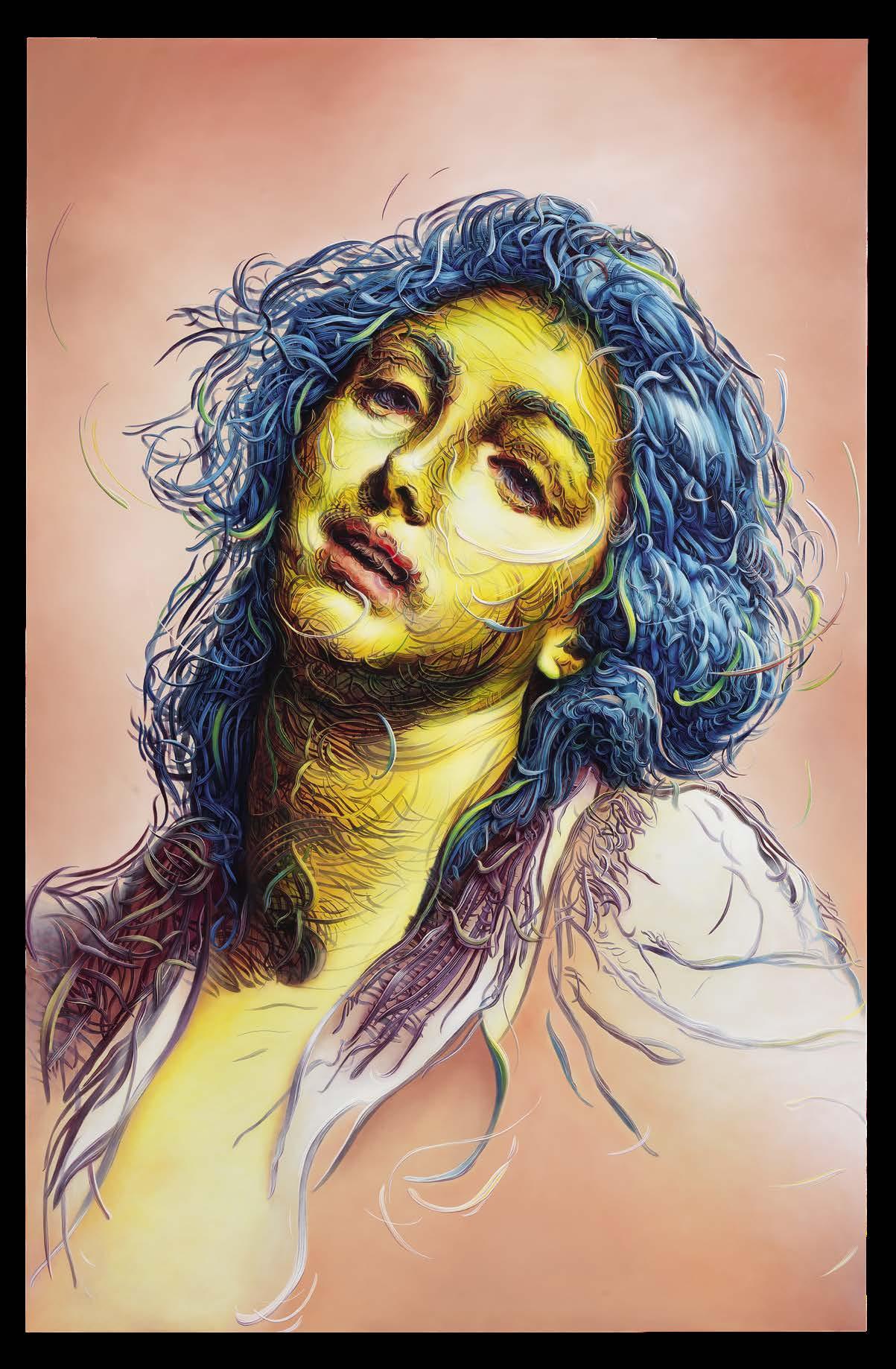
“But maybe it was also an effort,” I suggest, “to be a little mysterious.”
A bashful look comes into his face. “It seemed like a good idea.”
“Nevertheless you came to your openings, I assume—you made appearances.”
“Mostly. Sometimes I actually didn’t turn up.” He gives me a nervous glance before averting his gaze. “I mean—I’d tell everybody. I’m polite.”
His almost dandyish contradiction is extremely winning. Still, after all his talk of insincerity, inauthenticity, and performance, I find myself reminding him of his emotional speech about his father and Emerson at the dinner: how honesty and integrity is the most important part of being an artist.
Now our eyes meet, for a moment.
“One of the last paintings he saw me make was Dirty Creamer,” he tells me, referring to the first painting you see upon entering the show. It portrays the comical character of a hearty bagpiper, he explains, based on a Flemish Baroque drawing known to represent the Dutch proverb that the young always follow the example of the old. I sense a bit of sentiment suddenly rising in Brown. “He really didn’t like that painting,” he continues, and we both laugh. “‘Why would anyone want that painting on the wall?’ my father said. ‘He looks like such an unpleasant and untrustworthy guy. You feel like you’d need to check your pockets when he walked into the room.’”
“Nice,” I offer.
And as if to correct me, he says of his not-sonice bagpiper, “I don’t want you to like him. I just wanted you to think that, somewhere in his soul, was a little element of goodness that might make him interesting.”
51
THE ART OF BIOGRAPHY PARADISE NOW: THE EXTRAORDINARY LIFE OF KARL LAGERFELD
William Middleton’s forthcoming biography of Karl Lagerfeld, Paradise Now, comes as a major follow-up to his lauded history of Dominique and John de Menil, Double Vision from 2018. Here, curator Michael Cary speaks with Middleton about the challenges, strategies, and revelations that went into telling the story of this larger-thanlife visionary in the world of fashion and the culture at large.


MICHAEL CARY You’ve written two Francocentric biographies: Double Vision , about the de Menil family, published in 2018, and Paradise Now, about Karl Lagerfeld, which will be released later this year. I can see, here on Zoom, that you’re in Paris as we speak. How did your Francophilia begin, if I can phrase it that way?
WILLIAM MIDDLETON Well, I’m from Kansas. I had a formative teacher in high school, my advanced-placement English teacher, and she was focused on French literature, so I was engaging in that canon from a young age. I think that’s the beginning of my fascination with France. And then, at the University of Kansas later on, I had a little map of Paris that I found at a travel agency; I kept it for many years and treasured it. My adoration was always from afar until I first went to France, for Christmas and New Year’s in 1989–90. I was living in New York but I immediately felt the need to live in Paris, so ten months later I moved there, remaining for a decade.
Then in 2000 I moved back to New York—and I love New York, I’ve lived there many times and I’ve always worked for New York magazines and New York book publishers. Wherever I am, I’m always connected to New York—but leaving Paris, I immediately felt that I had made a terrible mistake. In the end, it took me nineteen years to get back! But these things happen for a reason, and the silver lining was that coming back to America prompted the de Menil book. I moved back to work for Harper’s Bazaar and I went down to Houston to do a story on the city. Before I even headed there, I knew that I wanted to look into the de Menil family. In 1986, there had been a cover story in the New York Times Magazine on Dominique de Menil and her five children. It was called “The Medici of Modern Art.” I thought the family’s connection between France and Texas was intriguing, so I filed it away.
I went to Houston for the first time in the fall of 2000. Dominique de Menil had died a few years before and there was interest in a biography. I wrote a book proposal and had a contract with Alfred A. Knopf and the editor Shelley Wanger. For many years I’d been writing magazine-length features and I wanted to find a project that I could really sink my teeth into. In fact, in 1998 I did a big story for W on Yves Saint Laurent, for the house’s fortieth anniversary, and I had the possibility of writing a
biography on Saint Laurent. But I never fully moved forward on it because frankly I felt like there was so little there that was relevant to life today, to the life of people around me. It put a block on the project— one that, interestingly, I didn’t encounter with this new book on Lagerfeld. Karl has always felt relevant to me; he’s always been connected to what’s going on in the world.
MC So you saw Karl as a less rarified figure than Saint Laurent?
WM Absolutely. I met Karl in January of 1995, when I was working for W and Women’s Wear Daily. From there we had a good working relationship that developed into a genuine friendship. I was in no way his best friend or anything like that, but we had a friendly rapport and he was somebody I always admired because of his connection with the culture of his time. He knew everything that was going on in terms of cinema, architecture, music, art, everything. I remember thinking at the time, and I’ve revised my thinking a little on this since, “There may be others who are more important in terms of fashion but Karl is superimportant in terms of the culture.” Now that I’ve done all this research on his career in the ’50s and ’60s and ’70s, I’ve realized how important Karl was in terms of pure fashion, even before he got to Chanel. Everything he did during the last two decades of his life was incredibly significant in terms of fashion—what he did with H&M, what he did with Fendi, what he did in terms of fashion photography, what he did redefining the fashion-week spectacle.
MC You make the point several times, and Karl does himself throughout the book in quotes and anecdotes from friends, that he’s not interested in retrospective. It’s the present, it’s what’s happening now. Everything past is past, why bother with it? But there’s also this contradiction, because he’s obsessed with the eighteenth century and studies history voraciously.
WM I always felt like that was a little disingenuous of him to say that he was only focused on the present or the future. He had an amazing grasp of history and the development of aesthetics; it was just his own history that he didn’t want to focus on. There’s a moment in the book where his colleagues, including Amanda Harlech, are working on staging a museum retrospective in Germany, and he’s happy to work on it, he plays along, and then it comes time for the exhibition to open and they want him to attend and he gets furious. Where so many designers want that consecration, want people to be admiring their past work, he saw any focus on his past as funereal.
And this is where the title for book, Paradise Now, comes from. Karl sat for an incredible number of interviews throughout his life—these were critical resources in the creation of the book—and in 2014 he did a radio interview with this brilliant French journalist Augustin Trapenard. He’s a serious cultural journalist and he was pushing Karl on this whole idea of posterity, and Karl was like, “Posterity, you know, I don’t care. I just don’t care.” He’s like, “It won’t do anything for me. It’s today that counts. Paradise now.”
MC That attitude must have presented some obstacles for you as a biographer. While he was larger than life and participated in many public forums, giving interviews and so on, he didn’t leave the resources that are so often key in these projects. He doesn’t have heirs. He didn’t keep a diary. What are the implications of that? I’m thinking, as an initial example, about the decisions you had to make around depicting his relationship with his mother.
Previous spread, left: Karl Lagerfeld in 1937.
Photo: courtesy Gordian Turk
Previous spread, right: Roe Ethridge, Karl Lagerfeld with Neon , 2013 © Roe Ethridge
This page: Karl Lagerfeld at Maison Chloé, Paris, 1972. Photo: Sueddeutsche Zeitung
Photo/Alamy Stock Photo
Below: Karl Lagerfeld with Antonio Lopez, Eija Vehka Aho, Amina Warsuma, and Jacques de Bascher at La Coupole, Paris, 1972. Photo: Sueddeutsche Zeitung

Photo/Alamy Stock Photo
Opposite: Ines de la Fressange, reinterpreting the classic style of Gabrielle Chanel in Karl Lagerfeld’s January 1983 debut for Chanel, photographed by Dominique Issermann. Photo: © Chanel/ Photographer, Dominique Issermann/Ines de la Fressange/1983 Spring/ Summer Haute Couture Collection
Following spread: Karl Lagerfeld, 1978. Photo: Guy Marineau/WWD/Penske Media via Getty Images

54
While he certainly revered her, she’s surrounded by many mysteries, and after she moves to Paris to live with him, she’s almost like this spectral figure. When you speak to Karl’s friends, even if they saw her, they don’t know anything about her—she was simply a woman wandering through the house while they were having lunch. And then when she dies, it’s as if the door is closed and it’s never mentioned again. Keeping in line with his focus on the present, she was immediately relegated to the past. WM A lot of the quotes that I use from Karl about his mother came in later years. He talked about her a lot, but you’re right, she’s not easy to locate as a fully dimensional person. I had to approach her obliquely. Amanda Harlech recounts talking about Karl’s beloved cat Choupette, and she says, “Beautiful, withholding, pampered: it’s your mother.”
And he’s like, “Exactly!” With direct references to her from Karl, it’s tricky, because I think some of the comments he has her saying sound suspiciously close to his own voice. Is that because he’s like his mother, or is he spinning that for effect? So, in general, I had to approach that material with caution, instead focusing on real material evidence and recollections of more impartial observers.
Luckily, I discovered this incredible notebook
from 1954 at a Sotheby’s auction that proved revelatory in terms of understanding her. As I detail in the book, the notebook had all these press clippings and notes and drawings related to Karl’s winning the Woolmark Prize in 1954, which really jump-started his career. The auction records had this listed as a work by Karl, which I found odd, given that Karl wasn’t likely to hold onto something so retrospective. It stayed on my mind for a while, and then I was able to speak with two people who knew Karl very well, Caroline Lebar and Sébastien Jondeau. Sébastien immediately clarified, saying, “Oh, that was his mother who compiled and kept that.” Of course it was his mother’s! It’s her handwriting. It’s in German. He sends everything back to her in Germany and she puts the whole thing together. And I think that’s not only revealing of the facts of 1954, when Karl won that prize, but it’s also superrevealing about what she really thought about her son: this was someone who was very proud of her son. Karl always tried to give the impression that she wasn’t. He quotes her saying something like, “It’s good that you’re not very ambitious, since you just want to be a fashion designer,” right? The truth is much more interesting.

Piecing together the details of Karl’s life was a radically different project from the research for the de Menil book, because the de Menils had an incredible archivist impulse long before they founded their museum. They kept all their correspondence. In the family archives, Dominique de Menil had not only her letters from her family but she’d recovered her side of the correspondence as well. A biographer’s dream.
MC And Lagerfeld seems like it’s the absolute opposite, right?

WM Exactly. He did not keep information like that.
MC I’d love to speak about Jacques De Bascher, who plays such a key role in the first half of the book. Lagerfeld’s relationship with him was obviously an intense one, but there are a lot of lingering questions. In terms of writing about Karl’s sexuality, there is this duality of guardedness on one side and unapologetic flaunting on the other, especially for 1970s Paris. There are several points in the book where people insist that Bascher and Lagerfeld had no physical relationship and it feels a little bit like the lady doth protest too much [laughter ]. How did you navigate the queerness of Lagerfeld’s life?
WM You’re absolutely right to point it out as a contradiction, because on the one hand, Karl never hid his sexuality. He never pretended he was straight. But he also wasn’t militant. It’s a funny contradiction, and Karl himself said that he was a bit of a puritan. I don’t think it was an internalized homophobia, but there was `a puritanism at play, most definitely. And yet he loved looking at and taking pictures of naked men. I think it’s another of those instances of, How can you really know someone’s truth? The only thing that I can do as a writer is to say what I know, what I’ve discovered, say what other people have said, and then readers can make up their minds. With Karl, that opacity and complexity make for a more interesting subject.
MC You open one of the chapters with a quote where he says, “Essentially I am a Calvinist attracted to superficiality.”
WM Which again is not fully true, do you know what I mean? That he’s a Calvinist, yes, but attracted to superficiality—well, yes, but also incredibly deep. There are some statements that he makes that are interesting and not exactly true.
MC In both of your books, I notice that you consider details of how someone lives—the seemingly
55
superficial, the materiality of ordinary objects, the way furniture is arranged, how someone greets a visitor—as important as what that person does. With the de Menil book, you go into so much detail about the opening of the museum, like how the napkins are going to be folded. It’s a beautiful detail that tells us so much. Where does that sensibility come from for you? Is it that you come across these details and they fascinate you? Are you searching for them?
WM I look for them. Detail makes for a good biography. In any life, I’ve found, the littlest detail can be unfolded and opened in revealing ways. But more generally, I find that the most compelling writing conjures images. The reader must be able to experience this life visually, especially for a subject as image-obsessed as Karl was.
MC And Karl also creates an image of himself, especially at the end of his life. After he loses the weight, he becomes this avatar of himself. How did
you use this extensive visual record of him to work on the book?
WM There are so many images. I can’t tell you how hard it was to do the photo research for this book! There were so many amazing pictures of Karl that we couldn’t include them all. Even if we couldn’t include them in the book, reviewing as many photos and videos as I could was invaluable. There’s one video that I found in archives in Texas, from his trip to Houston in 1979, when he was greeted by the marching band and pompom girls. That whole moment—the limousine with the steer horns on the front, and the horn plays “The eyes of Texas are upon you”—it’s just bananas, right? Those materials make for some of my favorite moments in the books.
MC That kind of excess and spectacle is a motif in the book. I’m thinking about the fact that Karl spent $1.5 million a year sending flowers to people. Everything is fantasy on a scale that is unattainable, and yet somehow this man attained it. You do a

great job of developing that grandness in its exponential growth throughout his life, and I wanted to ask you how you thought he was able to maintain this level of achievement and productivity for so many decades.
WM As you probably know, a lot of creators never get into the position to be able to concentrate fully on their work, or to have the best kind of conditions for their work. Karl made sure that he always did. He would get up in the morning, he would get ready, his pads were there, his pencils were there, he just had to sit there and design. He came back from the house, everything was ready. Silvia Venturini Fendi said she thought one reason their relationship lasted so long was that the Fendi house gave him the means to do everything that he wanted to. But it was the same way at Chanel and at every house he worked with: he always had this extraordinary kind of support so that all he had to do was work.
MC What do you think prompted people to give him that support? Do you think it was something he demanded?
WM Well, I think he earned that—through the work he did and the success he had. If he hadn’t been successful he wouldn’t have continued to get that. But also, Karl was equally generous in return for all the support he received. He didn’t take it for granted. There’s a story, which didn’t make it into the book, told by Anita Briey, who worked with Karl at Chloé and then ran the Lagerfeld atelier. Karl had an annual lunch at his apartment for the Lagerfeld team. Each year, he would give them a little Chanel bag. And Anita Briey said to him, “You know, there’s someone here and she has received a bag—it’s so beautiful—but she’s a lady of a certain age, and it’s red, and maybe that’s a little too much, and do you think it might be possible to change?”
And he replied, “Oh, absolutely,” and he got one that was navy or black and he gave it to her and she started to give the other one back, and he was like, “Oh no, keep both of them.” That’s someone who knows how to treat people who work for him, how to get good work out of people. I think Karl was a good manager in that sense. The teams at the various houses who worked with him adored him. It’s fascinating because he has this image of being so harsh, but that’s not at all the impression that people in the atelier had. This was someone who loved his work and encouraged other people to do great work.
MC You quote Alain Wertheimer, one of the owners of Chanel, saying that Karl was very, very nice, he just didn’t want anyone to know it.
WM Absolutely.
MC In the interviews you conducted, you get the sense of intense love and loyalty from a lot of the people in his life.
WM I once told him, I’ve rarely seen anyone who has a public image that’s so harsh, but when you get to know them you see that the reality is much warmer and almost touching. And he said, “Well, it’s better that than the opposite, non ?” [Laughter ] I love the fact that he was aware that it was a performance, that he was an avatar, as you said. There is an anecdote from the photographer Jean-Baptiste Mondino: he was getting ready to take some photographs of Karl, and as Karl was heading to the hair and makeup room, he said, “Time to go freshen up the marionette.” That’s someone very conscious of the effect that they’re having.
MC He’s a marionette but he’s also pulling his own strings.
WM Absolutely.
56
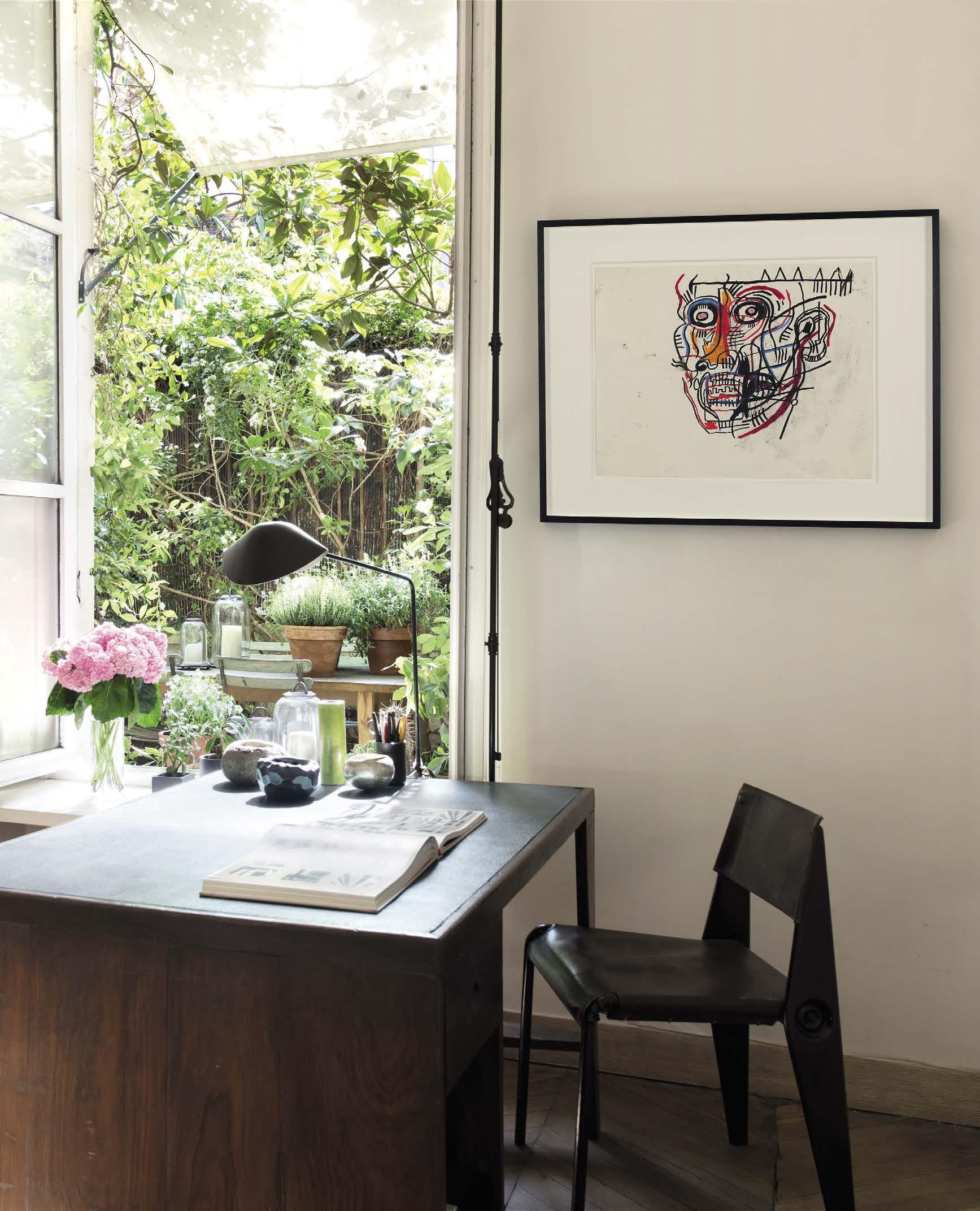





















CY GAVIN: ON THE OTHER

SIDE OF THE LIMIT
Tiana Reid reports on her encounter with the artist Cy Gavin’s new paintings.
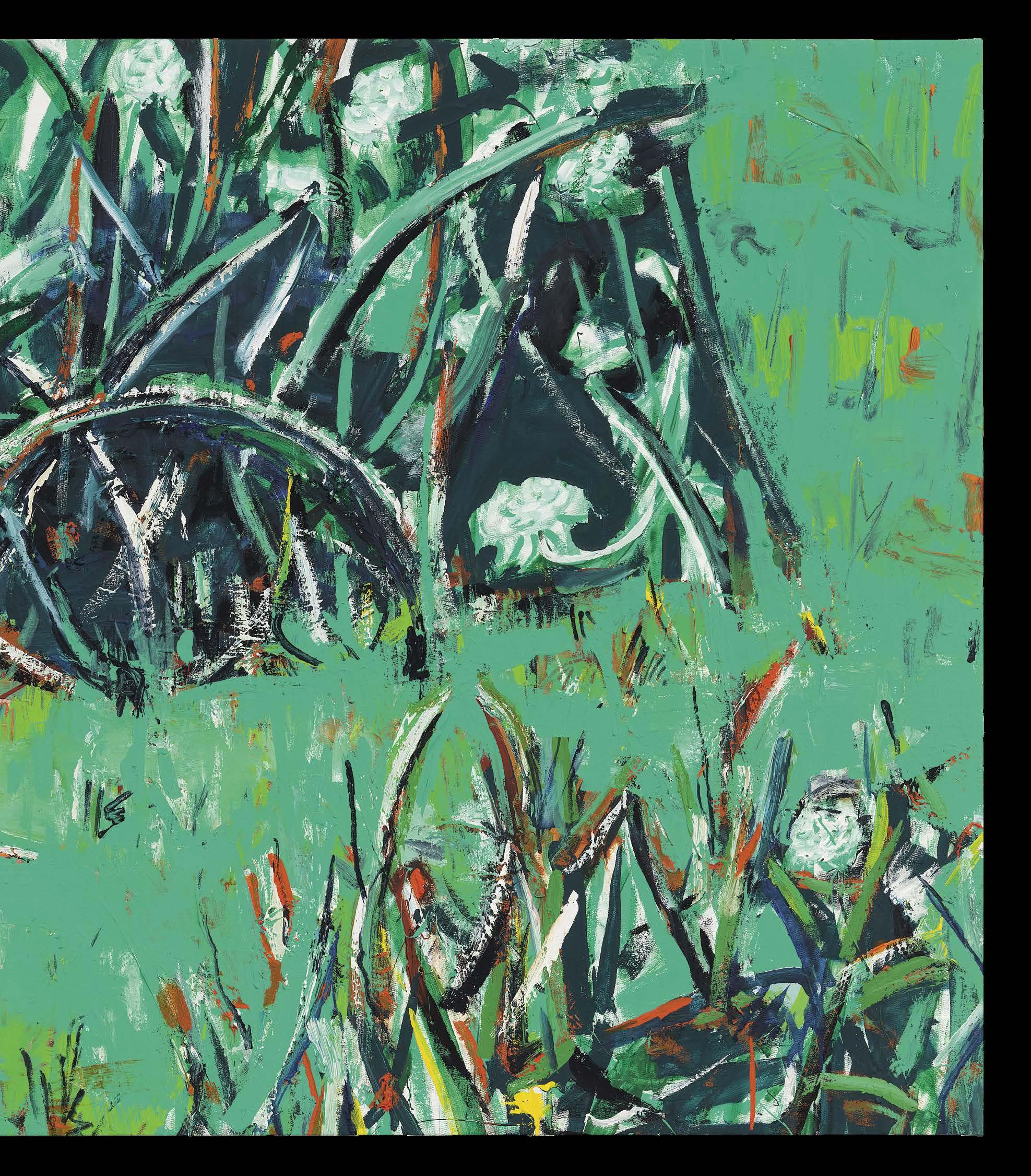
Previous spread:
This page:
Opposite:
Cy
In the neighborhood I moved into recently, real estate developers keep putting up signs demarcating their investment. This is the same neighborhood that my grandmother immigrated to from Jamaica in the 1970s, the same neighborhood where my parents first met in the 1980s, and the same neighborhood where I grew up in the 1990s.
Several of the infrastructure company’s warning signs read “ danger due to demolition.” But all over the fenced enclosure, “ demolition ” has been crossed out and replaced by words including “ profiteering,” “speculation,” “ lack of housing ,” and “capitalism .” In the midst of all that rewriting, an advertising poster for the future building has a tattooed white man modeling in a white T-shirt and khaki pants. Over that someone has written, “ diversity via fake working-class trousers.” I laugh, realizing I’m wearing my brown Carhartt jacket on the way to my office, and then I look down to change the song on my headphones and I keep walking.
It is all rather cute and rather funny, maybe even worthy of an Instagram story or two, but then, a few days later, the sidewalks don’t get shoveled
in front of the demolition site. I’m walking to the subway after an ice storm and the developers still haven’t salted their sidewalk either, and while I’m slipping and sliding, it is clear that the joke is in fact on me. Uh oh, property—a sick joke, mocking basic needs for housing as if it were some sort of private indulgence.
But before I cross a line, your little boundary, let me take a step back. I hesitate to push too much concept around here, too many narratives. I am here to discuss some new art by Cy Gavin. In Gavin’s telling, the work has him thinking about property lines, pathways, and boundaries. Just before a new exhibition, in conversation, he is often using that saying. He is always “thinking about” something, if my memory has it correctly.
At the same time, as the late critic Peter Schjeldahl wrote in 1993 in a review of a Gerhard Richter show (republished the following year in his book Columns & Catalogues), “Painting is art’s philosophical warehouse, stocked with visceral responses to Western culture’s every big idea.”

Painting stores the history of thought itself. Gavin’s richly colored paintings—bringing about illumination, shadows, movement, and lines in constant
flux—engage with the idea of painting itself. What does painting’s tortured availability yield? Gavin constitutes a world that seems to be growing, outlining, shifting, shrinking, changing, soaking, moving, selecting, swallowing, surrendering, allowing, forbidding, deepening, pronouncing, rising, historicizing, filling, contrasting. And so his sublime renderings (of waves, trees, paths, rivers, beaver dams, moons, stars) gesture to property as well as to the postindustrial contraaesthetics of boundaries more generally.
While the art world has an enduring preoccupation with figurative representations, postmodern, poststructuralist art-historical discourse has also embedded abstraction with possibility, transgression, and innovation. In critical discourse there has been some talk about abstraction in Gavin’s work. If this is true, it is perhaps only partly true. In the New Yorker, critic Johanna Fateman uses the phrase “semi-abstract,” writing, “In the past, Gavin has paired his panoramas of wild coasts with figures in mythic scenes drawn from the African diaspora and his personal history, but these semi-abstract expanses of craggy shadow are bereft of protagonists.” In 2021, the
60
Cy Gavin, Untitled (Paths in a meadow), 2022, acrylic and vinyl on canvas, 42 × 75 inches (106.7 × 190.5 cm)
Cy Gavin, Untitled (Grass growing on a weir), 2022, acrylic, vinyl, and pencil on canvas, 45 ½ × 77 ½ inches (115.6 × 196.8 cm)
Gavin, Untitled (Wave), 2022, acrylic and vinyl on canvas, 81 × 81 inches (205.7 × 205.7 cm)
writer Hilton Als likewise noted Gavin’s interest in landscape, confessing that “Gavin’s images helped me face the hour that I was living in then. I may spend time with the transcendentalists of yore, but acts of transcendence happen in the now. Gavin’s hour was the hour where I felt filled up, quenched, by his faith in art, which reinspired me to see there is faith in the moment of looking.” He continued, “Not too far from where those early transcendentalists set up camp, I saw what Gavin longs to make one feel: his cosmos of planets and colors that were bigger than you and me, and as big as the mind and eye makes them.”
I too feed off Gavin’s cross-wired sensorium, his historically fed and gravely pretty interpretations of settings too fleshly to be called merely “outside.” He moves across the self, the family, the community, the neighborhood, the city, the country, the earth. Gavin stays small, painting his own corner, yet he somehow still manages to address the concentricity of relation with a brutal honesty that has me baffled.
His newest paintings are unfussy recognitions of the artist’s vicinities in not-so-upstate New York. The geographic, social, and political contexts of his
wide-ranging engagements are varied. I also think of Gavin as a color theorist, though that sounds limiting. “I think that my colors can be strident, but I also think you can use strident things with subtlety. That’s what I’m trying to do,” Gavin told Alex Frank, in one of the Studio Museum in Harlem’s “Studio Visit” interviews, published in 2017. “It’s hyperbolic in the way of caricature, which can feel closer to the truth by being an exaggeration.” The effect of moonlight, for example, is conveyed in a rich palette of blues.
Taking in the artist’s latest work in person on a rainy and gray day in Long Island City, I got to see the depth and variety of Gavin’s brushstrokes, suggesting choral echoes, a frisson of impressionistic autonomy. In the middle of December, as the city gets duller, darker, blander, I see something of that hyperbole in what I, at first not knowing the work’s name, started referring to as the “pink painting.”
I don’t identify as a pink person but Gavin’s vision is almost aggressive, rising and falling with great violence. Relating to waves and drowning, this is not what in addiction-recovery circles they call a “pink cloud,” not a honeymoon phase. Pink is mired in a long and thorny gendered history; I’ve

never seen it used in such a way as to evoke a kind of terror that I can’t quite put my finger on. Spectacular fear, maybe. The uncertainty is exaggerated by Gavin’s decision to leave some of the canvas seemingly bare, leaving the viewer alone to think instinctively about what is beneath, and to inquire about painting in general.
To the contrary, a green piece is tight and dusky, melancholic yet somehow representing an opening. This indirect flare of light is both path-making and path-breaking. The painting offers a new drama of greenness, a pungency one can nearly smell. Gavin’s paintings of trees verge on orgiastic: branches and branches, rings and rings, myths and myths, secrets and shadows—multiples all engrossed in one. That tree there, though, is actually not as old as it looks; it is a young tree, he tells me.
But I cannot stray too far from the earth’s thick sedimentation of history. An example: one of Gavin’s newer 2022 pieces, carving out frantic cuts of yellows and oranges, ostensibly represents “crossroads/meadows.” I say “ostensibly” because his stylized reality is faithful not to whatever gets called fact but to the uneventfulness of danger,
61
the cumulative knots of social surrender. It feels like fire.
No doubt it is part self-will and the dominating transcendence of Gavin’s poetics—yes, I can and will call visual art poetry—that chains me to the unverifiable beauty of literature. A passage in the third volume of Mary Shelley’s well-known novel Frankenstein; or, The Modern Prometheus , of 1818, strikes me as an apt description of the quietly powerful scenes that Gavin forges: “It was eight o’clock when we landed; we walked for a short time on the shore, enjoying the transitory light, and then retired to the inn and contemplated the lovely scene of waters, woods, and mountains, obscured in darkness, yet still displaying their black outlines.” This is the kind of elegiac blackness to which Gavin commits: textural, brief, thoughtful, and able to be seen. Or is it sensed?
Where Gavin lives a symbiotic, intertextual relationship to process, his studio world and life upstate embedding themselves in the artistic outcome, I see the stark lines of American society and politics to which he has drawn my attention. To think of boundaries, material and mental, as complex designations of human and plant life is also to
find new ways to relate to the desire to turn inward, to isolate, to be single and to believe so wholly in singularity. On the surface this essay does the work of setting, describing the surroundings, walking about. However, as property lines have made and maintained the capitalist world order, they’ve also reordered our minds. I mean that brutality can feel familiar and soft, full of libidinal/ economic structures that stagger individual and collective attachments to property relations and juridical sovereignties.
The task of living, which we can only do day by day or minute by minute, can never be fully sanctioned. How else can I explain it? Let me conclude with a quotation from Ludwig Wittgenstein’s book Philosophical Investigations , which was published in 1953, two years after the German philosopher’s death. “When I talk about language (words, sentences, etc.) I must speak the language of everyday,” Wittgenstein exclaims. “Is this language somehow too coarse and material for what we want to say? Then how is another one to be constructed? —And how strange we should be able to do anything at all with the one we have!”
In a broad sense, I am also thinking here of Wittgenstein’s Tractatus Logico-Philosophicus (1921; translated into English in 1922), and especially of how he posits the limits of language as a “limit of the world.” How to unravel the aesthetic records of those of us who encounter the disappointments of the “limit of the world”? and the word? That is to say, the terms of language circumscribe our imaginaries about the past, present, and future. But “what lies on the other side of the limit,” to quote Wittgenstein again, for Gavin is an artistic practice and a poetic labor that looks at visuality the way a writer might look at language.
Expressed in a different way, it felt more impossible than usual to write this essay, especially at first. Every mad moment rushed back to peacekeep itself, to tame the wonder emanating from Gavin’s project. With every word, I feel the deep well of interiority in Gavin’s stunning, inimitable, and dense landscapes, outer and inner swaying back and forth, then a stumble. The trip is almost like the way, upon being born, the boundary you were used to dissolves, and then there is a universal trauma, all of it, and all of a sudden. All of a sudden: time, tears, blood, the difficulty of now.

62
This spread: Cy Gavin, Untitled (Crossroads/meadow), 2022, acrylic and vinyl on canvas, 90 × 185 inches (228.6 × 469.9 cm)
Artwork © Cy Gavin
Photos: Rob McKeever

Hans Ulrich Obrist’s Questionnaire
Joy Williams
64
Ulrich Obrist
In this ongoing series, curator has devised a set of thirty-seven questions that invite artists, authors, musicians, and other visionaries to address key elements of their lives and creative practices. Respondents are invited to make a selection from the larger questionnaire and to reply in as many or as few words as they desire. For the first installment of 2023, we are honored to present the author .
Joy Williams
3. What is the role of titles?
A: Titles should be at the end of stories or concealed within them somehow. And prove to surprise or complicate the reader’s conclusions.
9. What keeps you coming back to the studio?
A: I still harbor the hope (possibly delusion) that I might be able to create something marvelous through effort, chance, or inspiration.
6. What is your unrealized project?
A: Writing hymns in the manner of the great Welsh hymnist William Williams.
15. How would you like to die?
A: Well, after reading sister Alicia’s research on the subject in Cormac McCarthy’s ”Stella Maris”, certainly not by drowning.
19. What have you forgotten?
A: How to tan. I was once an expert. A true natural. Much admired.
17. Has the computer changed the way you work?
A: I’ve never used a computer. I think it would take an immediate and intense dislike to me.
13. The future is . . . ?
A: That which was ever intended.
20. What ought to change?
A: Experimentation on animals must stop. The whole ghastly system—breeders—labs— vivisectors—should be shut down.
31. What music are you listening to?
A: Glenn Gould playing anything. Albert Schweitzer on the organ. The piano music of G. I. Gurdjieff and Thomas de Hartmann. The symphonic works of John Luther Adams.
65
Hans
ADAM MCEWEN: AN ACT OF LOVE
Contemporary artists Adam McEwen and Jeremy Deller met up online over the holiday season to discuss McEwen’s upcoming exhibitions in London and Rome. McEwen delves into the motivations and criteria behind his work, as well as the challenges and complexities of memorializing the living.
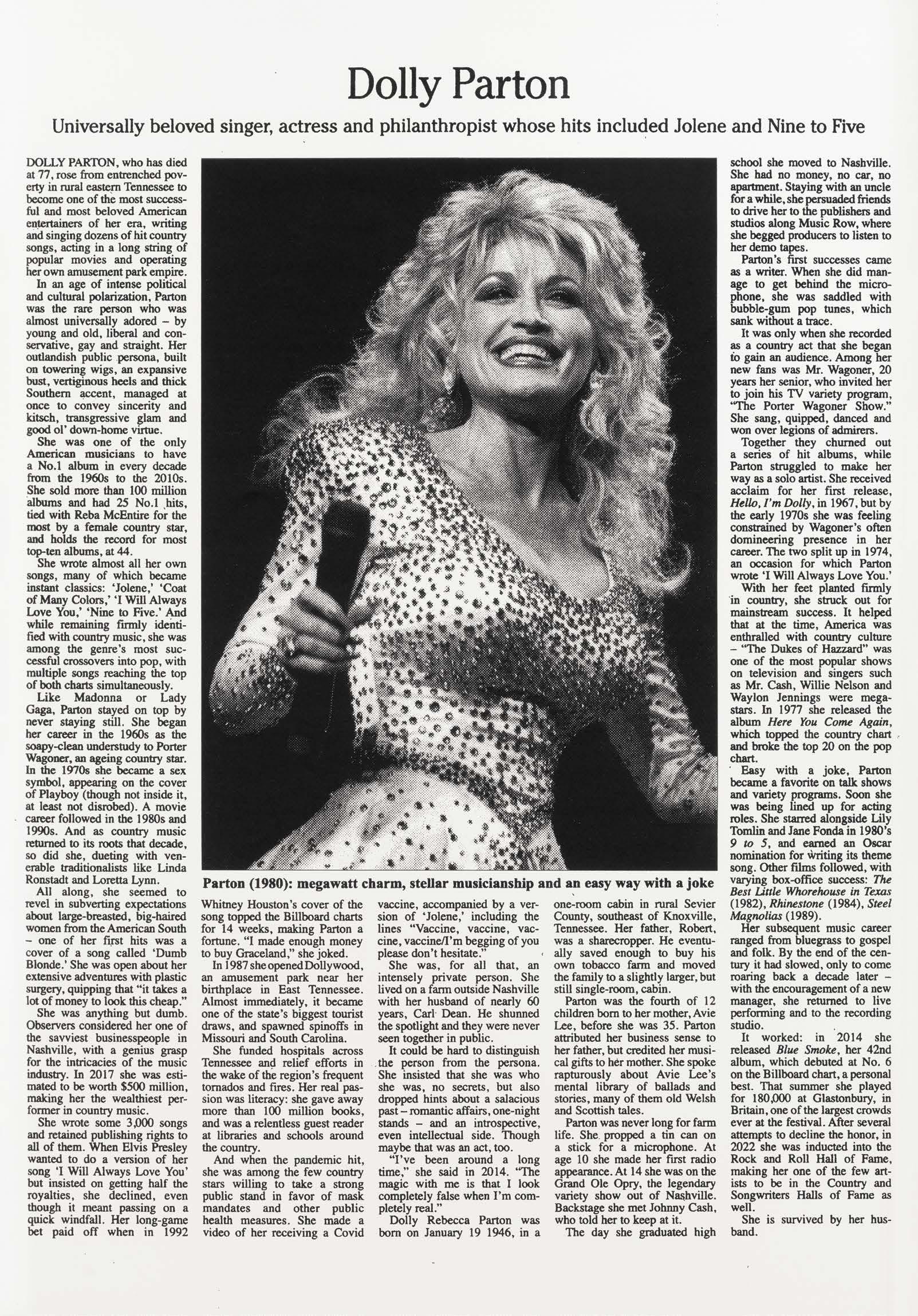
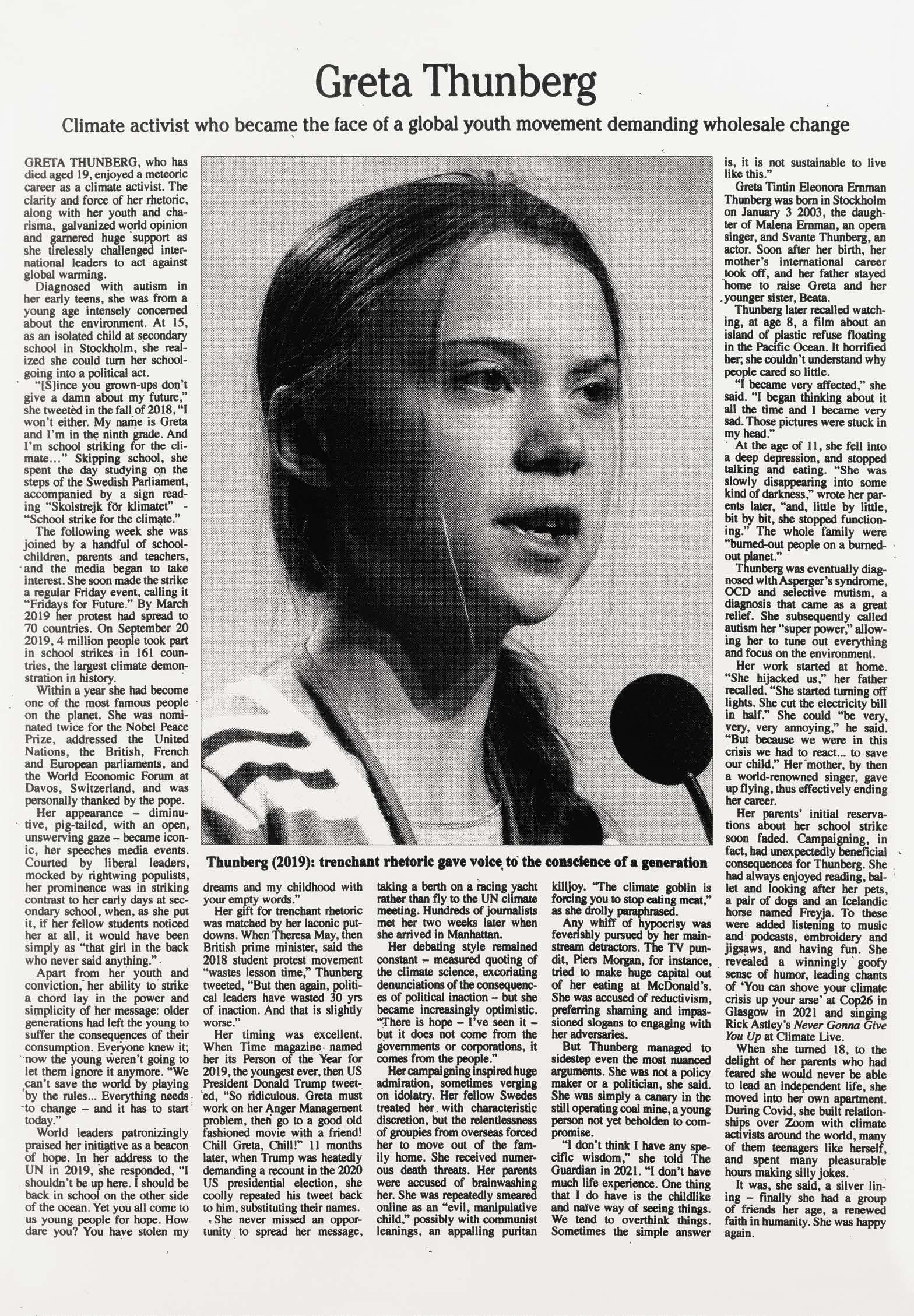
68
JEREMY DELLER You have an exhibition coming up in London; what will you be showing?
ADAM MCEWEN I’m showing a group of obituaries for living people. These are new works in a series that I started in 2000—I’ve taken around ten years off from making them so it’s been engaging to revisit the project.
JD Why the hiatus?
AM Honestly, they’re quite stressful. For a while, I simply wasn’t drawn to any particular subject, and forcing something wouldn’t work.
JD When you say stress, why?
AM The doing: the writing, the editing, the decision-making.
JD When you start, does a specific subject occur to you, or do you have a cast of characters you’re always thinking about as potentials? I imagine you have people telling you, Oh, you should do this person, you should do that person—is that helpful or does it feel like an interference? Because I’ve suggested people that you haven’t taken up, quite wisely [laughter ].
AM Sometimes people drift into my field of awareness, for any number of reasons, and I know they make a lot of sense. That said, people often make sense for a minute and then a week or a month later they don’t at all.
JD So sometimes you’re probably very glad that you haven’t done an obituary quickly and shown it because that would have been a mistake. You have to ruminate for a while.
AM Yes, I have to believe in it. I’ve done a few where history has moved on and the person’s own history has really changed afterward. I wrote an obituary of Aung San Suu Kyi from Myanmar; I’d been aware of her since I was a teenager because my dad knew her brother-in-law, so there was this sort of connection, and when I wrote the obituary she had won a Nobel Peace Prize, yet there was this underlying story and questions around her legacy that made it interesting. It seemed perfect. After I wrote it, everything fell apart over the course of the next couple of years and she’s now a very different figure.
JD What are the criteria, then?
AM It’s not totally consistent, but generally it’s a combination of homage, admiration, and interest. There must be a narrative there, a progression. At the same time, there’s usually a sense that they’re not in control of the story. So it’s not as simple as “I think this person is great.” Let’s say I think Stevie Wonder is great, a genius. But with Stevie Wonder there isn’t a counterstory; we’re all on the same page, in agreeing that he’s a genius. Whereas, with someone like Bill Clinton it’s more complex.
JD Absolutely. He’s a flawed character.
AM That’s right, but not all of them are what I’d call flawed, it’s just that they have some struggle around their persona. When I did Nicole Kidman, she seemed to be the only actress who in 2004 fit that old-school Hollywood-icon archetype, but then you see interviews with her on television, speaking about her marriage to Tom Cruise and this whole backstory of conflict—there’s a disconnect between what she’s presenting and what we’re seeing. That disconnect is crucial.
JD It’s interesting because you’re memorializing people before they’re dead, which ties into conversations around public memorials and monuments that have been playing out all over the world. In the UK there have been buildings named after people like Aung San Suu Kyi, because she was seen as a great civil rights champion, but now there are movements to take those down.
AM Exactly, scrub her out, Photoshop it.
Previous spread: Adam McEwen, Untitled (Dolly), 2023, chromogenic print, dry mounted on Dibond, 60 × 40 inches (152.4 × 101.6 cm). Photo: Prudence Cuming Associates Ltd
Opposite: Adam McEwen, Untitled (Greta), 2023, chromogenic print, dry mounted on Dibond, 60 × 40 inches (152.4 × 101.6 cm). Photo: Prudence Cuming Associates Ltd
This page: Adam McEwen, Materiel , 2023, acrylic on canvas, 84 × 65 inches (213.4 × 165.1 cm). Photo: Rob McKeever

JD But now she’s on to the next act, where she’s in prison. So she’s going through this huge vacillation of highs and lows in terms of public perception. Do you ever get superstitious about creating these? Like you might be jinxing someone by indicating their death with the obituary?
AM No, that doesn’t concern me. Most obituaries are prewritten, in any case: every big newspaper has filing cabinets with these texts already prepared. I’m simply opening the filing cabinet and taking out this object. I’m appropriating an already existing situation. More than anything superstitious, the anxieties lie in the responsibility inherent in consolidating someone’s life into a summary, which the form necessitates. You’re memorializing somebody, yes, but you’re essentially writing history. A journalist writes someone’s obituary in the afternoon, and the next day it gets read by a readership of a million or so in the Telegraph . And that then becomes a reference point. What they’ve written in a hurry becomes the material for scholars, biographers, and so forth. Whoever has the voice has the power to dictate the terms of history, which is strange and can be overwhelming.
JD And in many cases, when you read obituaries, you’re encountering people you’ve never heard of before. The first and last time you’ll ever read or know about this person is their obituary. They get a half page, a quarter page, and that’s it. That’s their moment of glory. And those are actually the more interesting ones, reading about unknown figures’ lives—maybe they worked for the secret service, went into the oil-exploration industry, were in a coup in Nigeria or something. You read these amazing life stories of people who lived in the shadows.
AM Exactly, and you’re like, How on earth can this amazing life have happened and I didn’t know anything about it? The more famous the person, the less likely the obituary will have anything you haven’t heard, because there’s so much to write about a
famous person that “needs,” in inverted commas, to be included. They’re generally much more bland.
JD Why do you choose celebrities, then, for your obituaries?
AM They’re not at all about celebrity, although it looks like they are. The only reason to use a celebrity, from my point of view, is that if the viewer knows that person, because they’re wellknown and they’re still alive, then in that split second when the viewer steps up and sees the work, there’s a strange moment of uncertainty. Like, Is Bill Clinton dead? I think that’s interesting because that weird little moment is as if the floor suddenly becomes unsteady. This is what I hope art can do.
JD Unsettling.
AM Not so much unsettling—
JD Or reality is run at a slight shift.
AM In a sense, yes. And that’s really the only reason for the celebrities. I’ve often thought about doing obituaries of unknown people, in fact I can think of a couple of people I’d like to do that with, but it would become an entirely different project. I mean, the other thing about these is, everyone’s going to die. So these works have a built-in sell-by date. I know that the thing I’m doing is going to happen in real life—an obituary very much like the obituary I write is going to be published at some point in the future. When that happens—and I don’t want it to happen, but it will—the artwork becomes irrelevant and redundant. I thought that was funny. There’s this little ticking clock that will eventually run out, at which point you could just trash the artwork.
JD It’s good that you didn’t do too many because you would just have been known as the obituary guy. You could have done them on commission.
AM People have asked to do them many times, but, again, I must be genuinely interested in the subject. People would say, Why don’t you write George W. Bush’s obituary? He’s a . . . you know. And it’s like, Why would I want to give my life and time to that? This is really an act of love.
69
JD It comes from a good place, as they say [laughter ]. You’re doing it for the right reason.
AM There’s a sort of sardonic, amused side to it as well, of course. The first one I made was Malcolm McLaren, for a group show that [London art dealer]

Paul Stolper curated. Everybody was given a muslin Vivienne Westwood remake shirt as their starting material and I printed the McLaren obituary on there. I met him, actually, and told him about this; he stopped for a second and then had a big laugh. I don’t know if it’s humor, exactly, but there’s a sort of wry—
JD There’s something very punk about it as well.
AM Right, and it spoke to the way punk slides over to Andy Warhol. I wrote an obituary of the adult film actress Marilyn Chambers. Behind the Green Door [1972] was the first porn film I ever saw—one of my sister’s boyfriends bought the VHS tape one holiday when I was thirteen. To have a good reason to make an artwork that had an image of a woman and to call it Marilyn was just a way for me to say to myself how much I love the paintings of Warhol. So in a way, that kind of pleasure is also part of it. It’s like being able to notate things you love in making it.
JD It’s interesting that you talk about Warhol. Although this series is very different from your other work in many ways, it’s massively related as well, since much of your work partakes in a dark Pop sensibility. If we’re thinking of Warhol or Roy Lichtenstein, what they were able to do so well was take a ubiquitous object, something we take for granted, something mass produced, and delineate its inherent beauty. I think you’re doing something similar. Is that fair to say?
AM Completely. With the obituaries I’m taking a celebrity, a beautiful mass-produced object, one I don’t really understand myself, and redirecting attention to it. It works in a similar way to my sculpture in graphite, that process of feeling around in the dark to find objects that work. Maybe
a watercooler is the same as Marilyn Chambers, in the sense of, you take them for granted, you have this relationship to them that many other people have also, and it’s hiding in plain sight. Your relationship is both straightforward and mysterious.
JD Right, and what could be more ubiquitous than a Bic pen? You’re working on more of your Bic paintings for an exhibition in Rome, right?
AM Yes. I’ve had the Bics as an idea for probably ten years. I took photographs of them and I kept them in the computer and I was like, I don’t know what that is, I really don’t. But I knew that Bic Cristals, the clear ones with a medium point, were somehow special objects. It’s a numinous object, it’s got an aura to it, this simplicity and this democratic ethos. And yet it’s just kicking around desks all around the world and not really revealing that.
JD I have ten of them within five feet of me now. The Bic paintings are also quite arresting because in some of them they look very aggressive, like missiles, and in others they look like legs. All of these paintings have their personalities.
AM They’re a bit heraldic.
JD Yes, potentially fascistic even?
AM Yes, that’s right.
JD They have a life.
AM And that only revealed itself when I made them at this size. Suddenly they seemed to relate to human scale. For Rome, I decided to only show Bic works on the wall. I want to keep it simple and just use that motif, instead of constantly trying. . . . I think there’s a thing that happens when one feels that one’s ideas aren’t good enough, so one shows as many ideas as possible at once. I’ve been guilty of this in the past, but this time I decided to just stay on that point—
JD No pun intended.
AM Yes, exactly, on that fine point, black ink, like this one in my hand [laughter ]. You know what’s weird is that when I wrote obituaries, as a job, long before the artworks, I was assigned to write the
obituary of Baron Marcel Bich, who bought the patent for what would become the Bic Cristal, which had been invented by the Argentinian László Bíró. It’s incredible how things come around. And I find the only good thing about getting to be incredibly old, as we are, is that you find that things you dismissed twenty-five years ago will later on prove to be pertinent. They feed work now.
JD The circle is squared.
AM I had ideas when we first met, which was a very long time ago, and I was trying hard to make anything, but some of the ideas that I did not make then now make complete sense next to things that I want to make now. One isn’t necessarily wasting time by daydreaming, as it were.
JD Is there humor in this work as well?
AM Not always. A lot of people have a problem with humor; there’s a contingency that says humor in art is a symptom of that art’s failure. I don’t agree; I think humor is part of the equation. I don’t go out of my way to make humorous art but I think humor is a glue that can hold together opposing ideas.
JD But the obituaries are mischievous, aren’t they?
AM They lay themselves open to it, certainly. I have a photograph of Jeff Koons standing in front of his obituary: he’s smiling, and it’s a very funny photo. Or somebody told me that they went to the Whitney Museum [of American Art, New York] and saw, God bless her, Monica Lewinsky reading Bill Clinton’s obituary. That was reported on Gawker at the time; it’s hard to imagine a more humorous and loaded situation. But again, I don’t intend for them to be funny or to act in this way.
JD It’s the classic thing that you make an artwork and it goes out into the world and you have no control over how it’s seen or who sees it. You’re releasing it and just seeing what havoc it creates.
AM And as you know, you’re very good at that, it’s quite difficult to set out with the intention of creating havoc and succeeding. More often, it’s this unexpected consequence of something made with different intentions. But I remember at the beginning when I first showed these, in 2004, I did think, Is this really okay to do this? Is this a weird . . . ? And as much as it was an uncomfortable feeling, I search for that same feeling now. You want that feeling because that feeling of being uncomfortable is a good sign.
JD Are you working on any sculpture at the moment?
AM I’m in the middle of a new piece that will be shown in London with the obituaries. It’s a rain puddle, milled from aluminum to look like the surface of a puddle in spitting rain, with ripples and rods—
JD With the rain landing?
AM Vertical rods meeting the center of each ripple indicating the rain, yeah. The more I think about this work, there’s some relationship to the obituaries that I don’t really understand. Hopefully they’ll look good in the same room.
JD Something about the passing of time and mortality, but also you’re making a sculpture of something that’s in a sense impossible to re-create as well. It seems like an impossible sculpture, effectively.
AM I hope it isn’t. I think in the back of my mind, it came from looking at Japanese woodcuts. I’m in awe of the way rain is handled in those; they figured out how to impart the feeling of being in the rain, but with such simplicity. I feel like that’s a goal. Maybe the art that we really like is the art that has as much removed from it as possible.
70
This page: Adam McEwen, Kling Klang, 2023, acrylic on canvas, 84 × 65 inches (213.4 × 165.1 cm). Photo: Rob McKeever
Opposite: Adam McEwen, Untitled (Grace), 2023, chromogenic print, dry mounted on Dibond, 60 × 40 inches (152.4 × 101.6 cm). Photo: Prudence Cuming Associates Ltd
Artwork © Adam McEwen
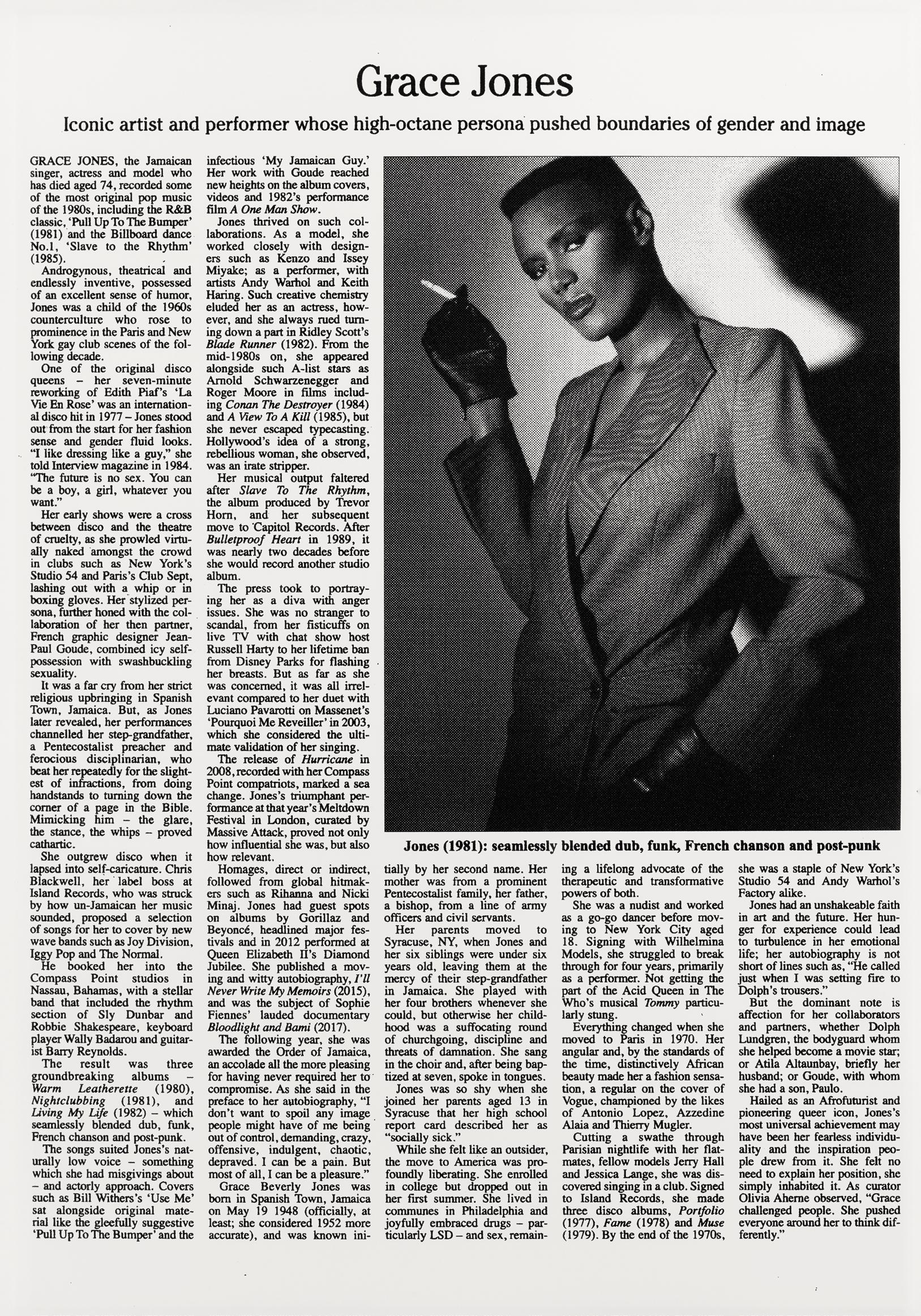
71
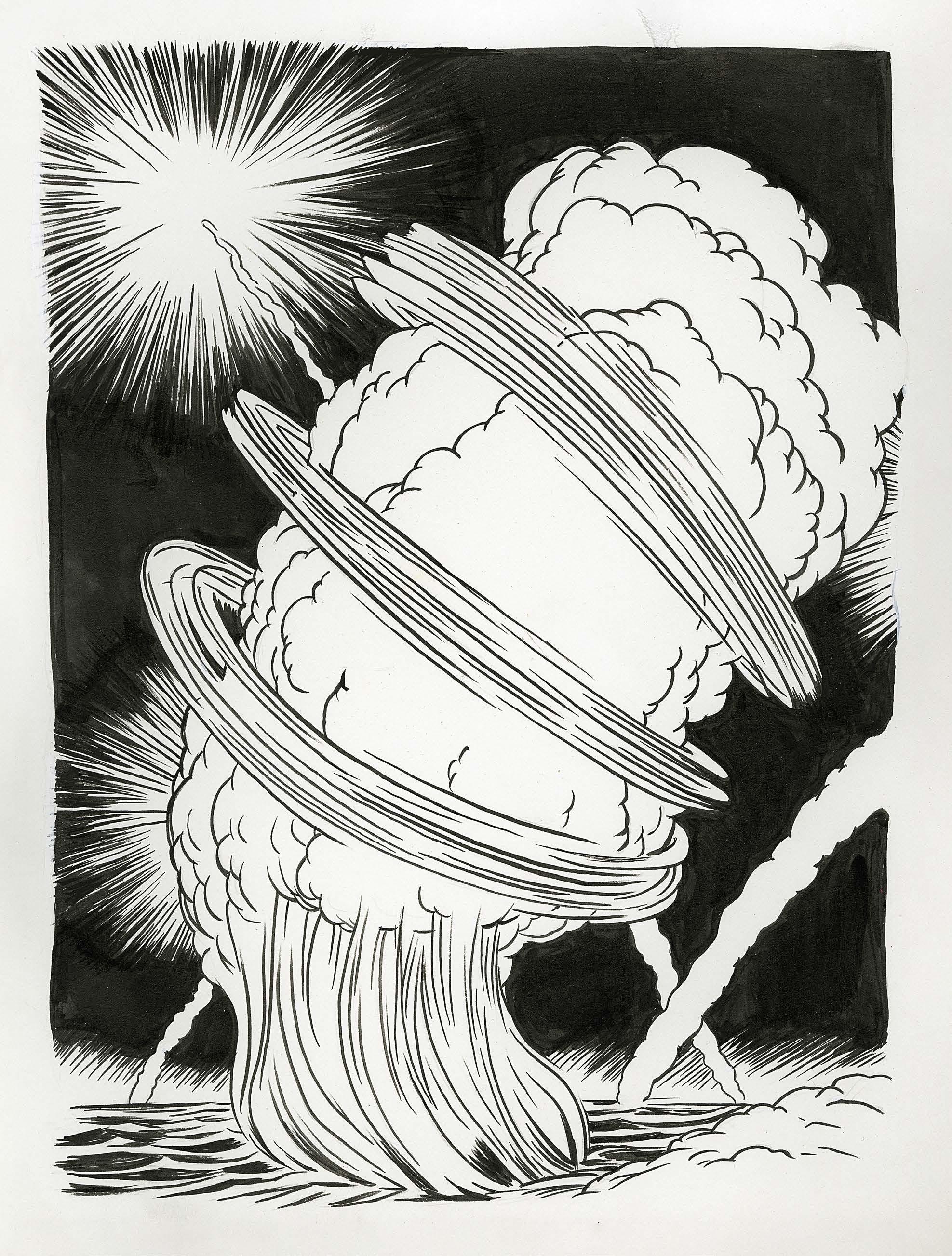





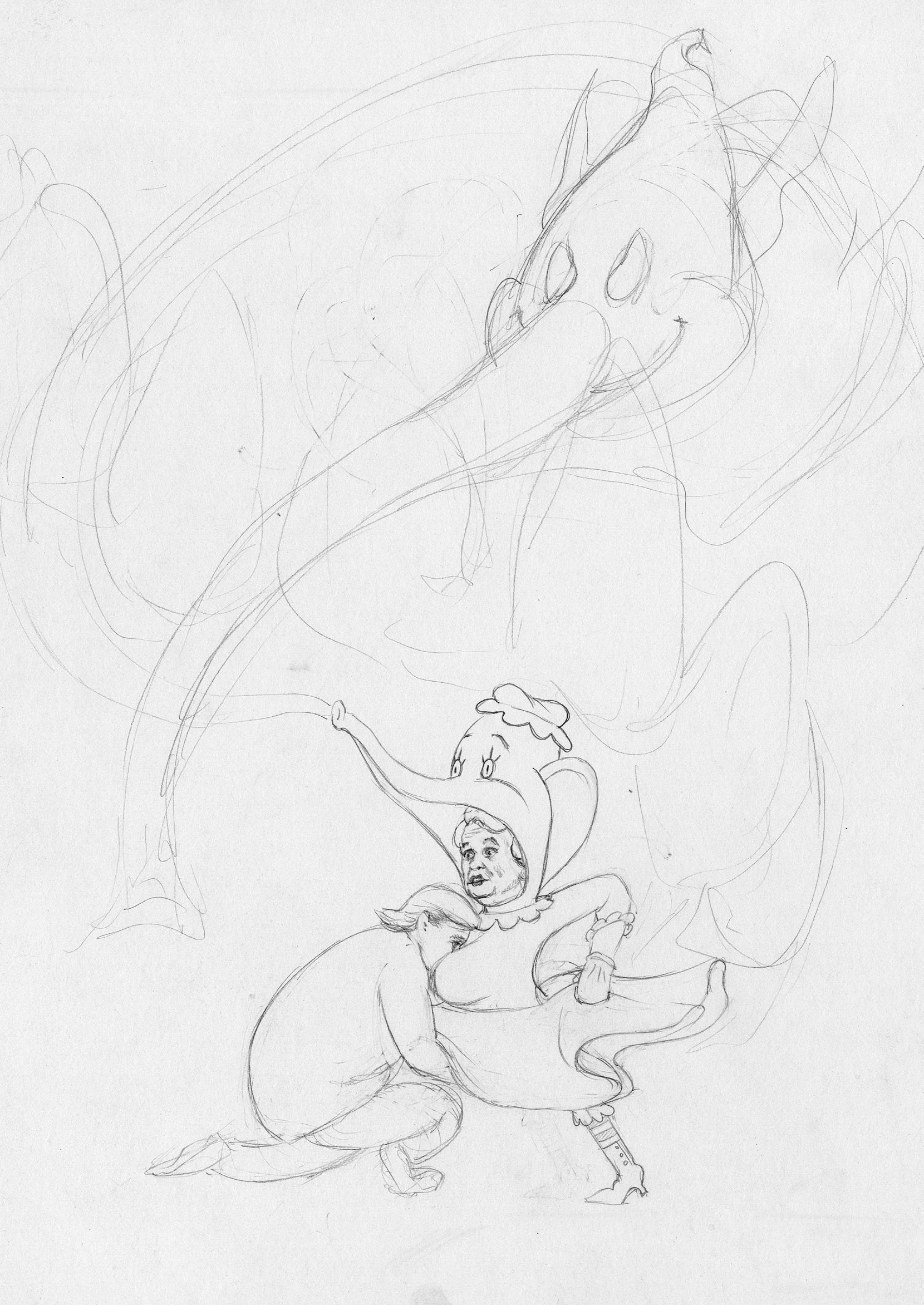

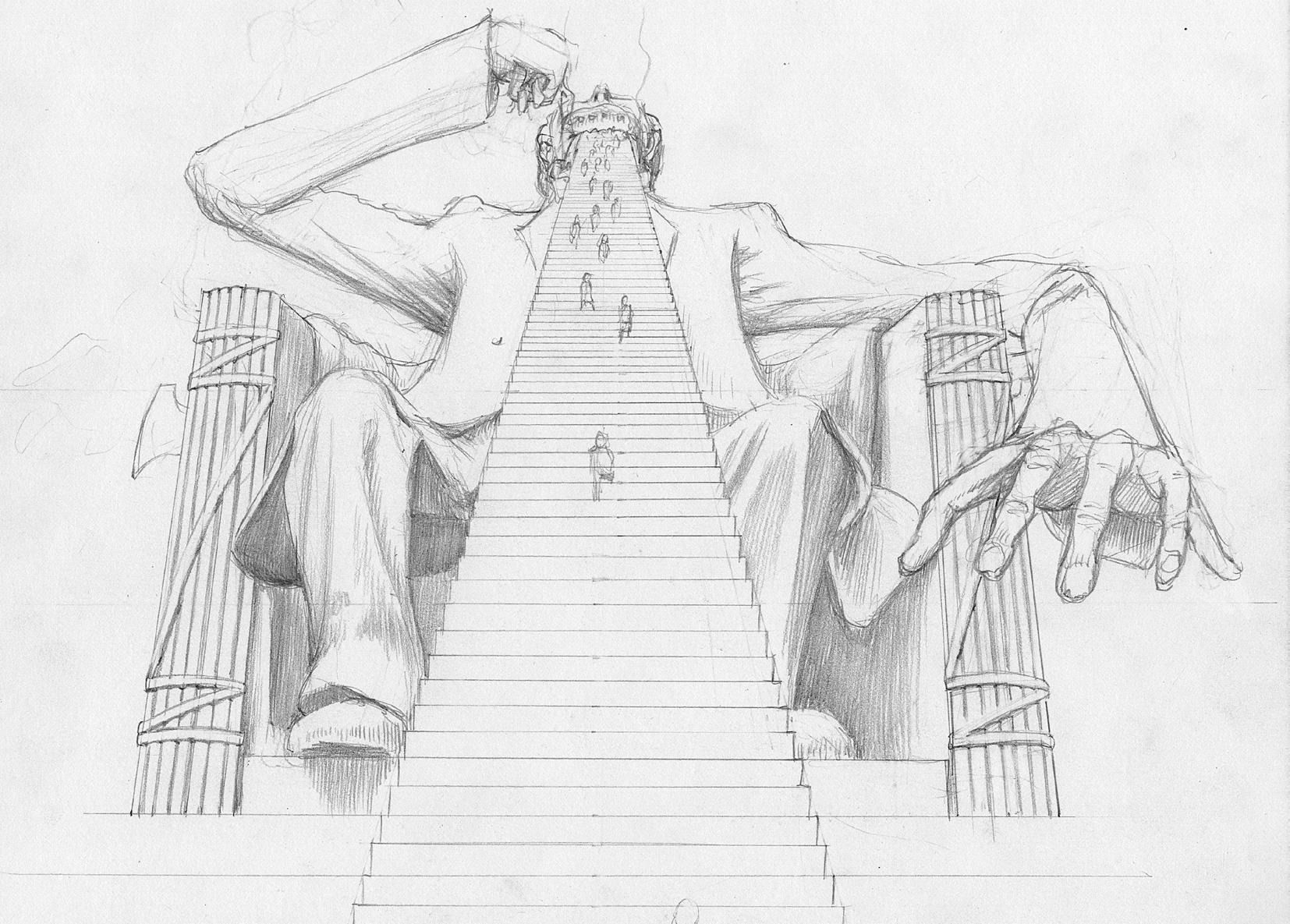

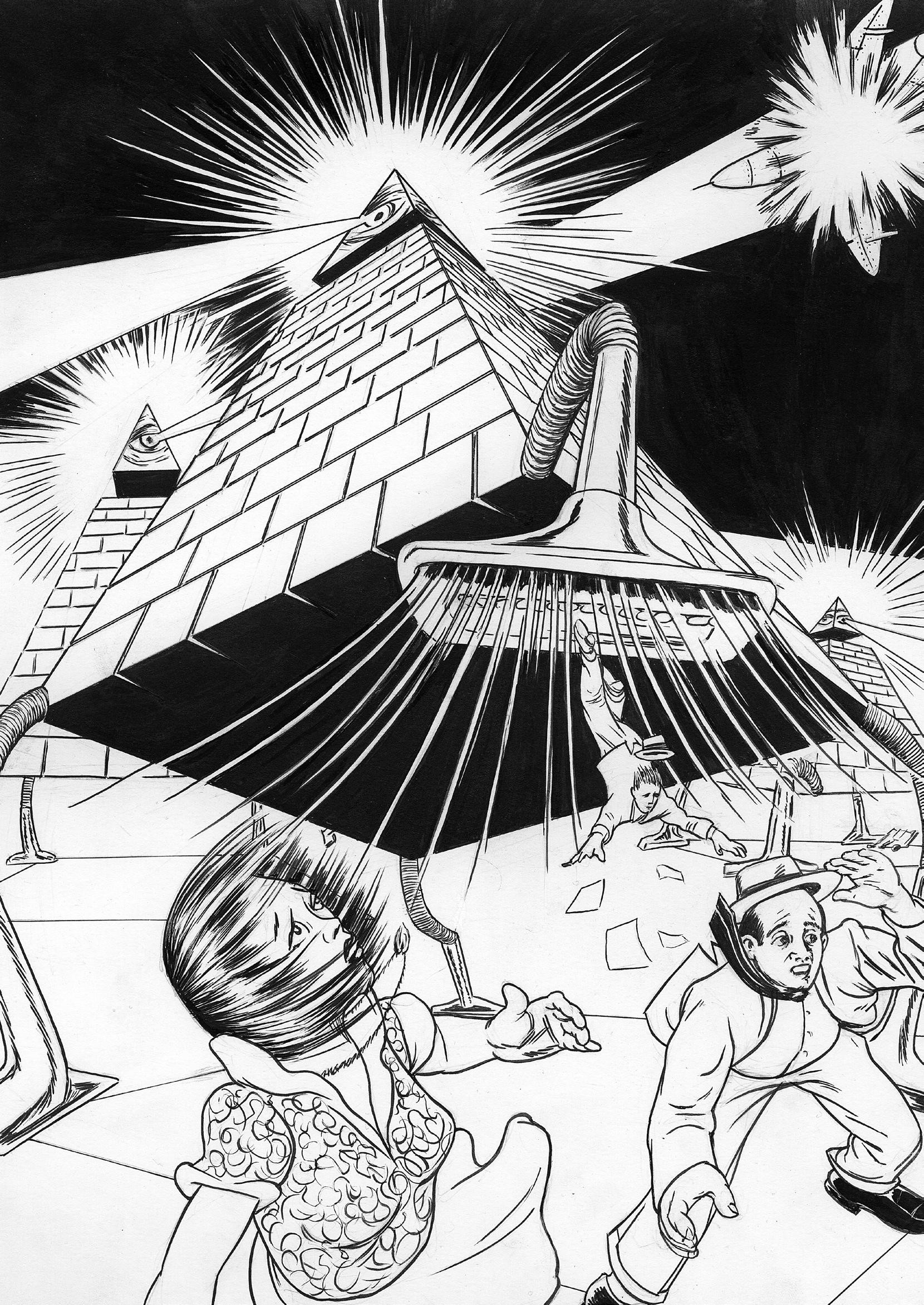
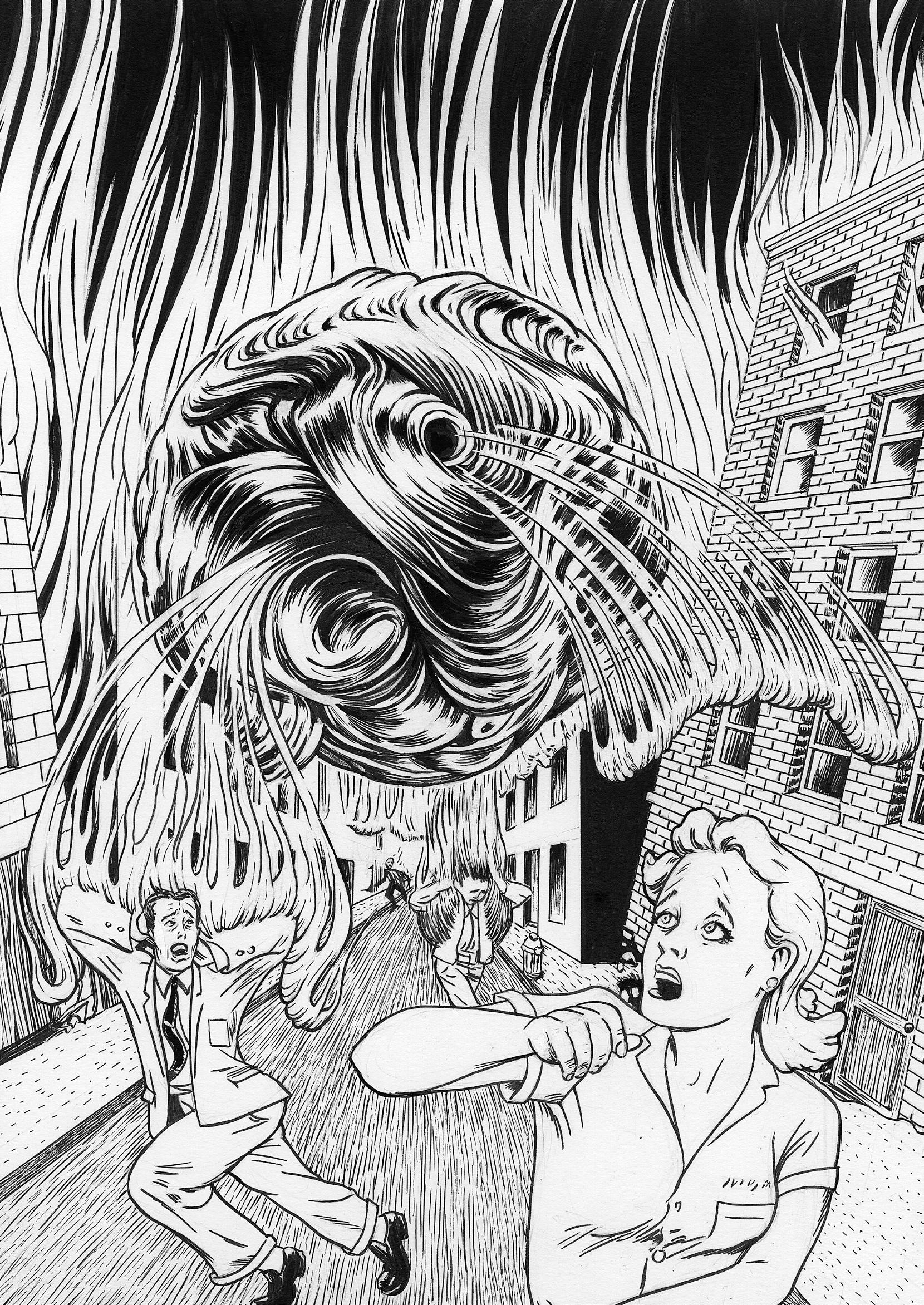

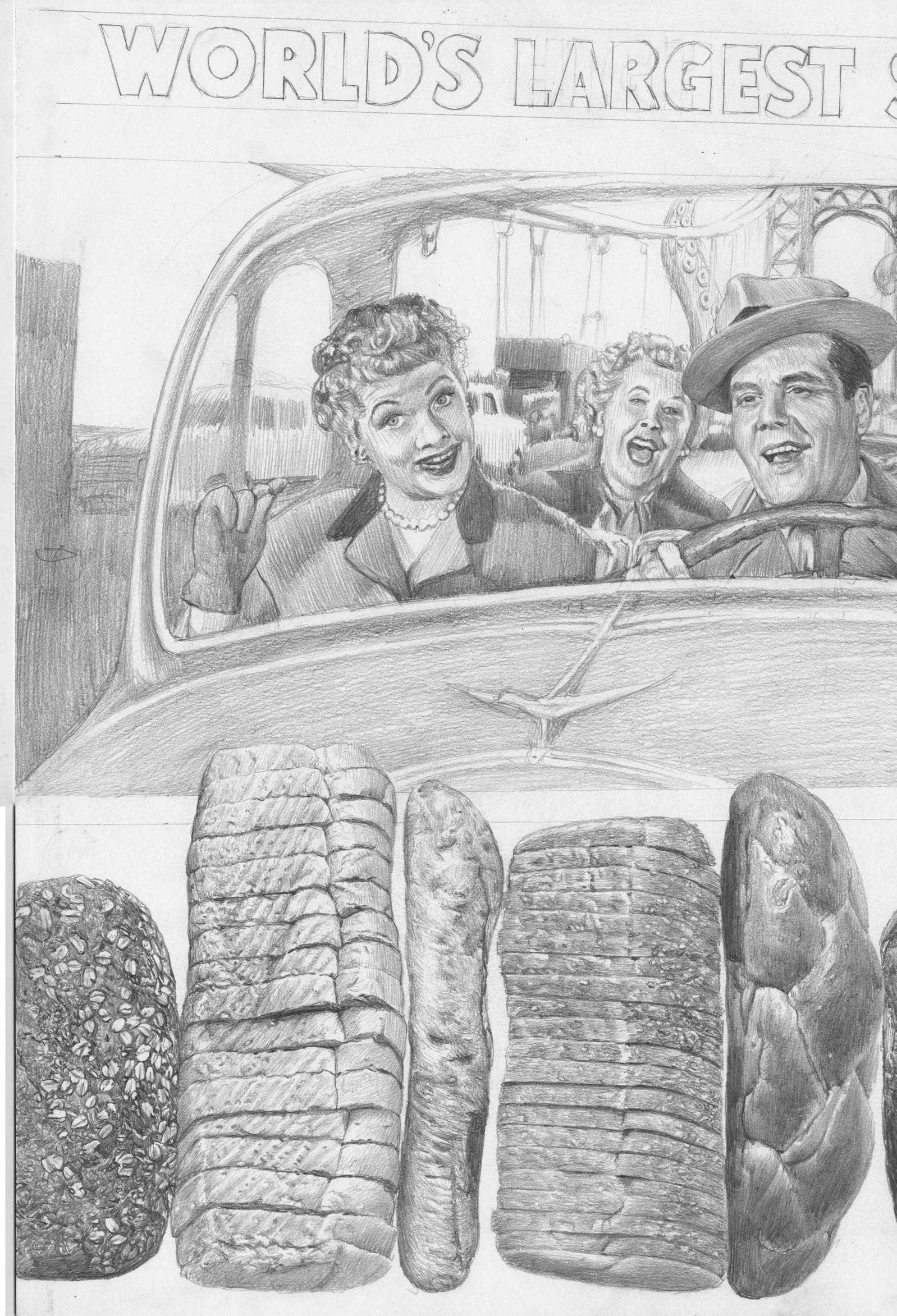


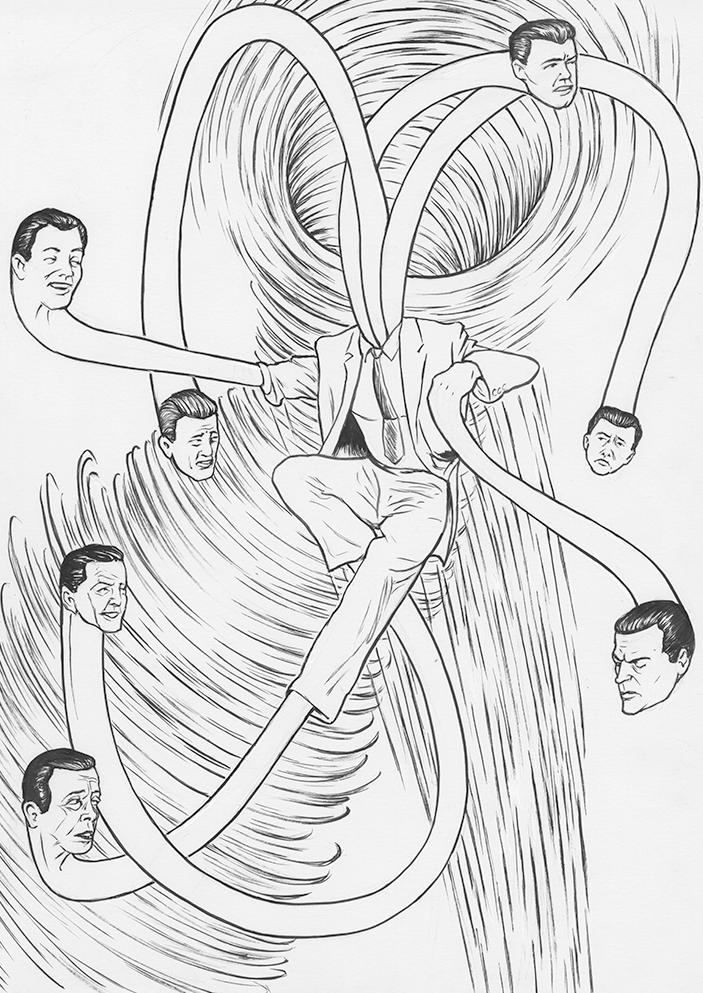
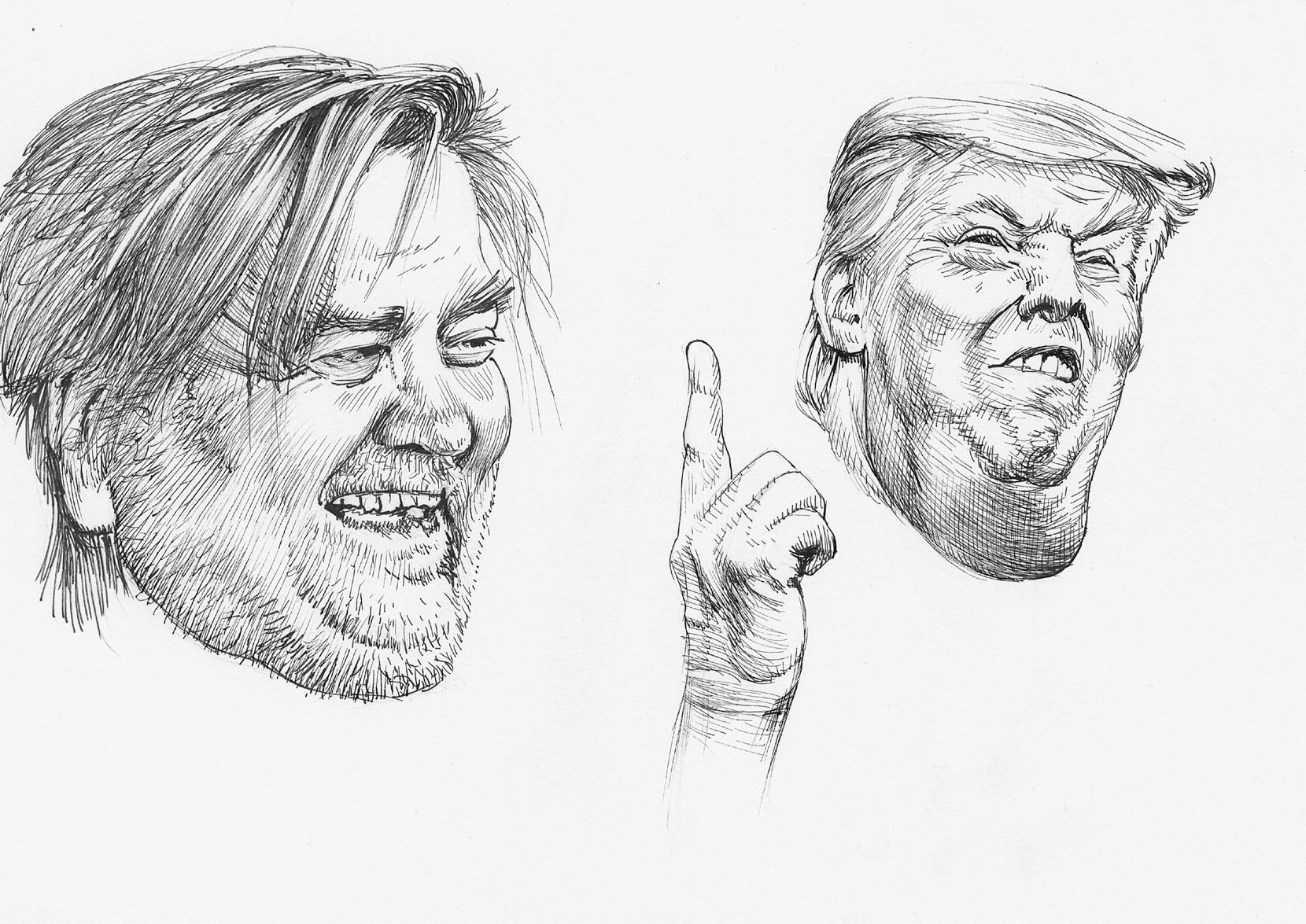
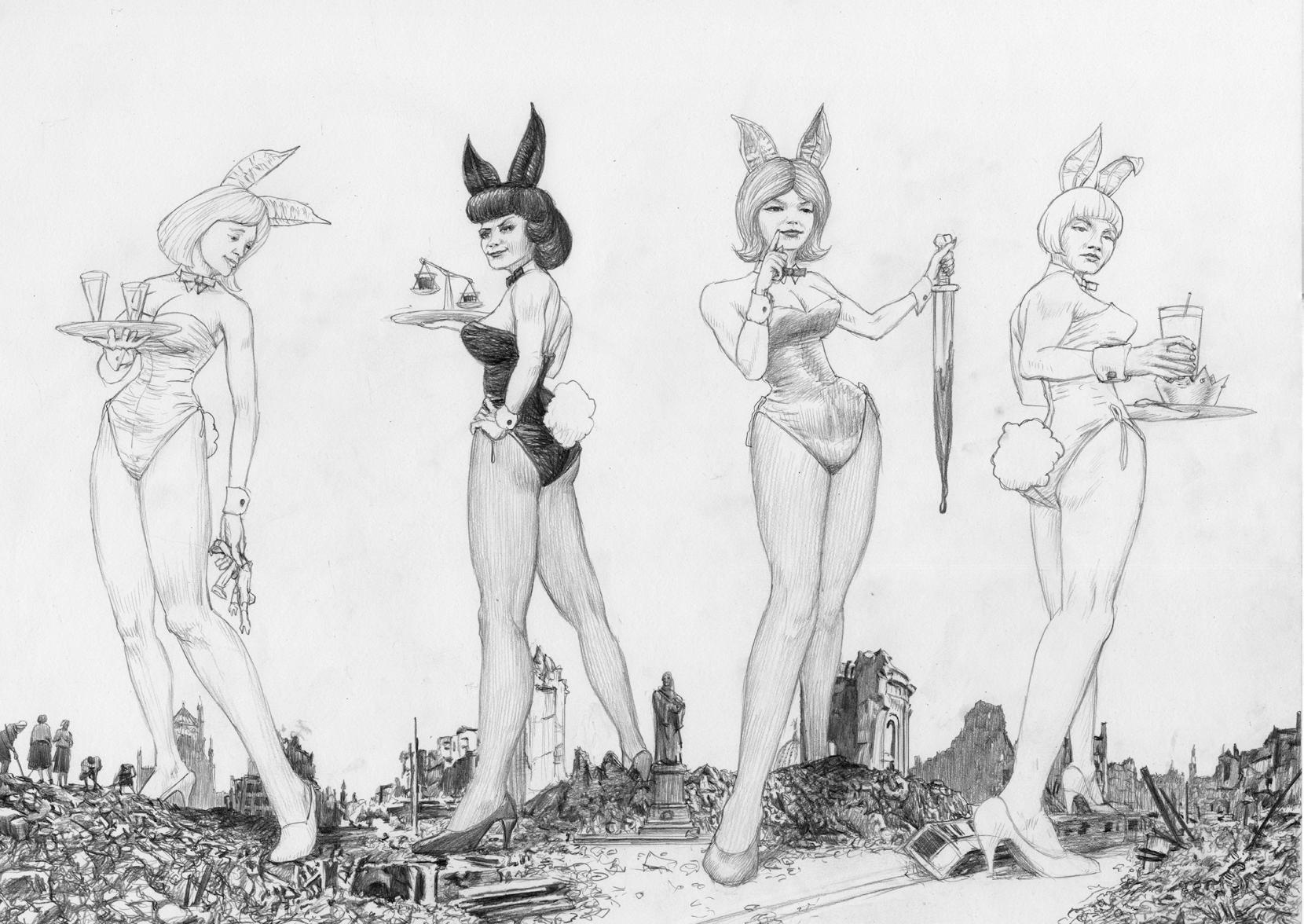
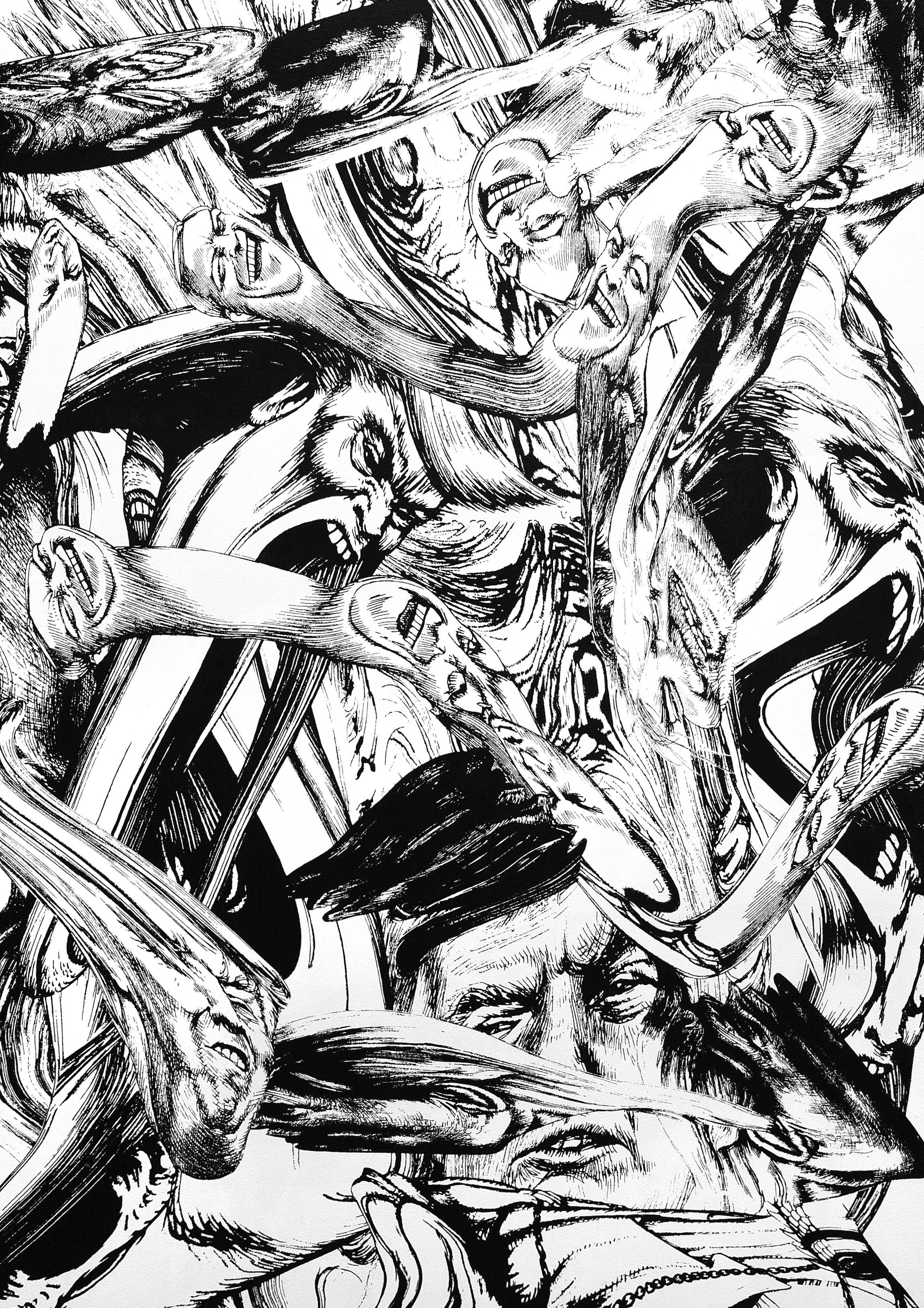
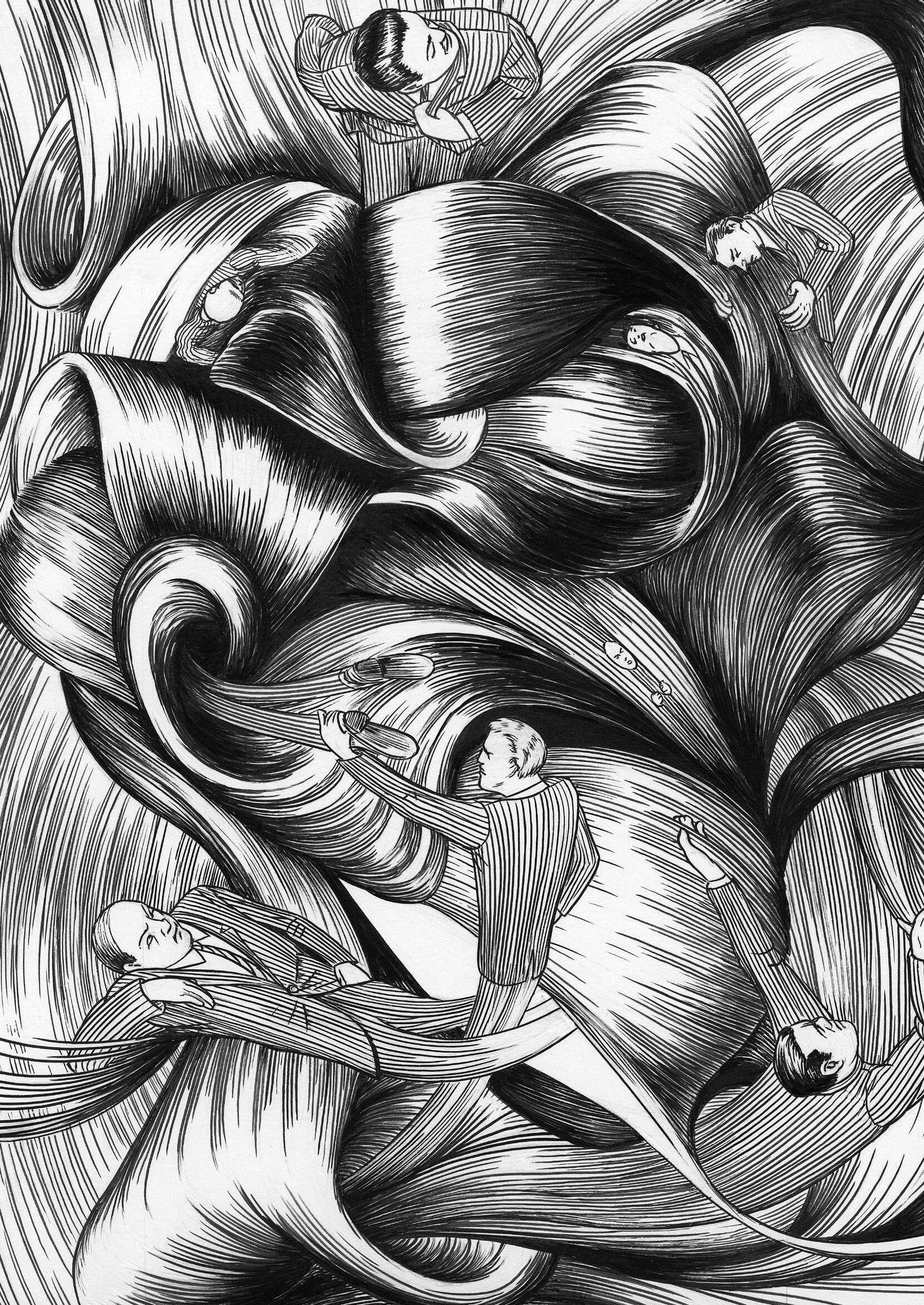
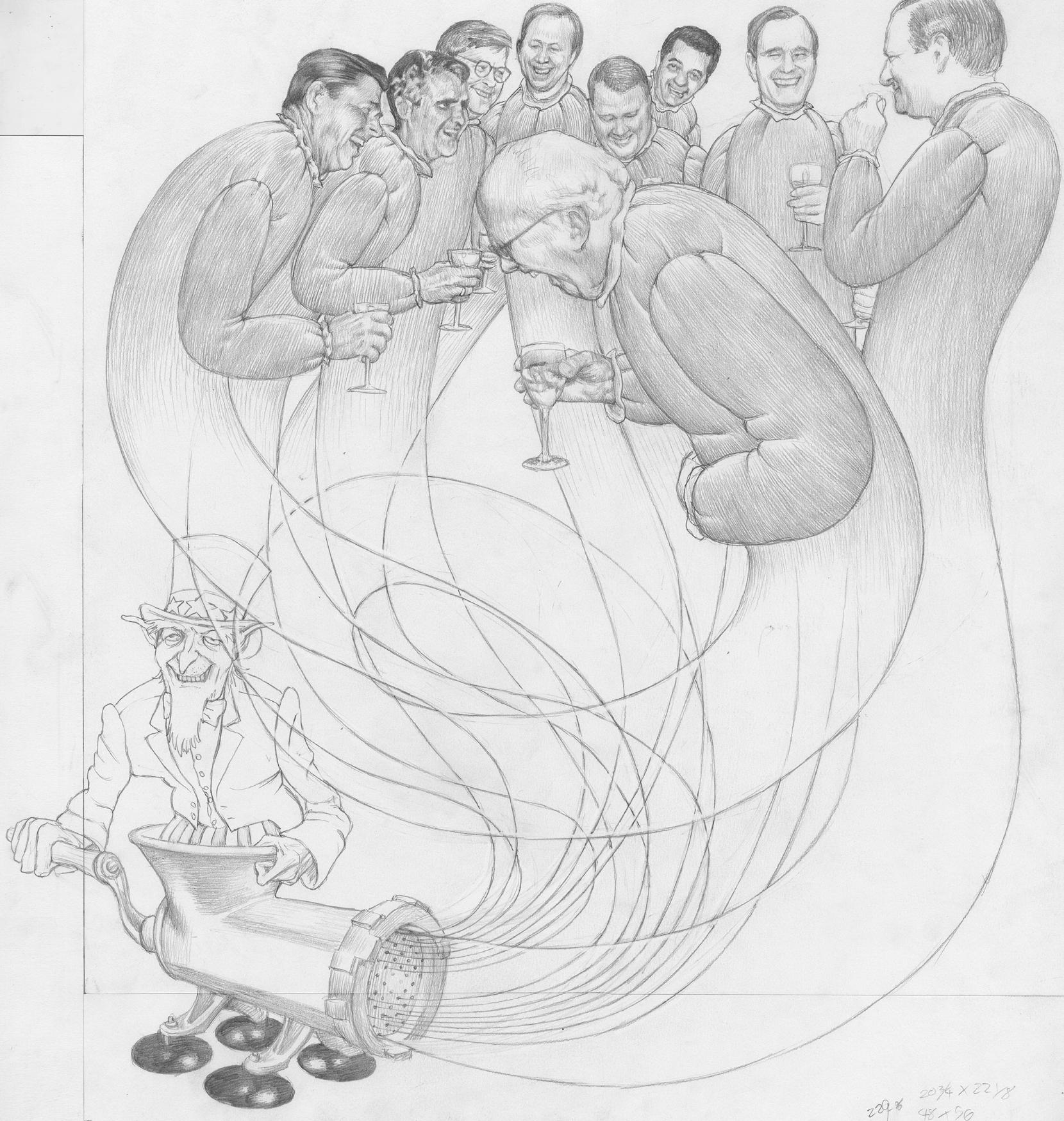


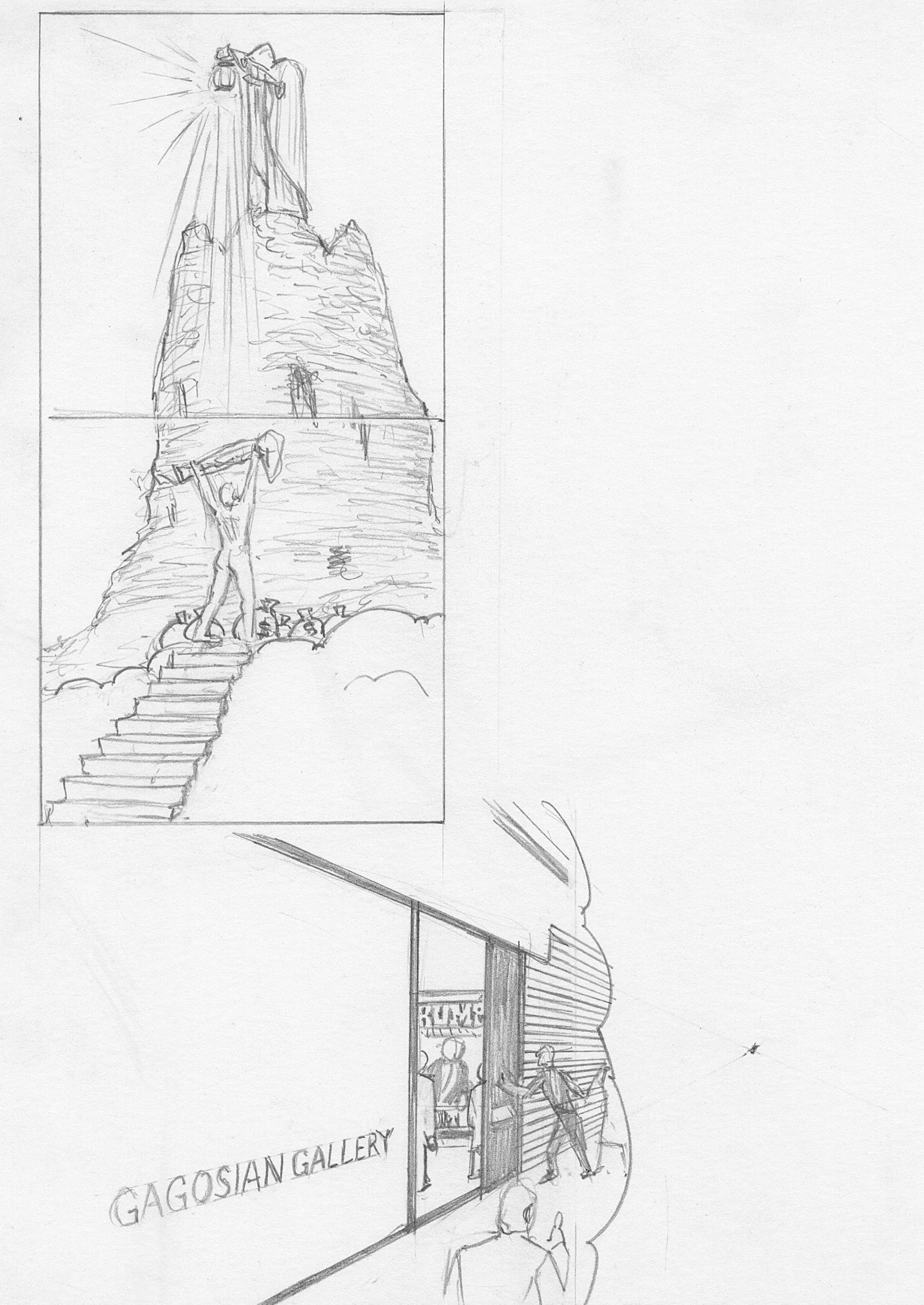
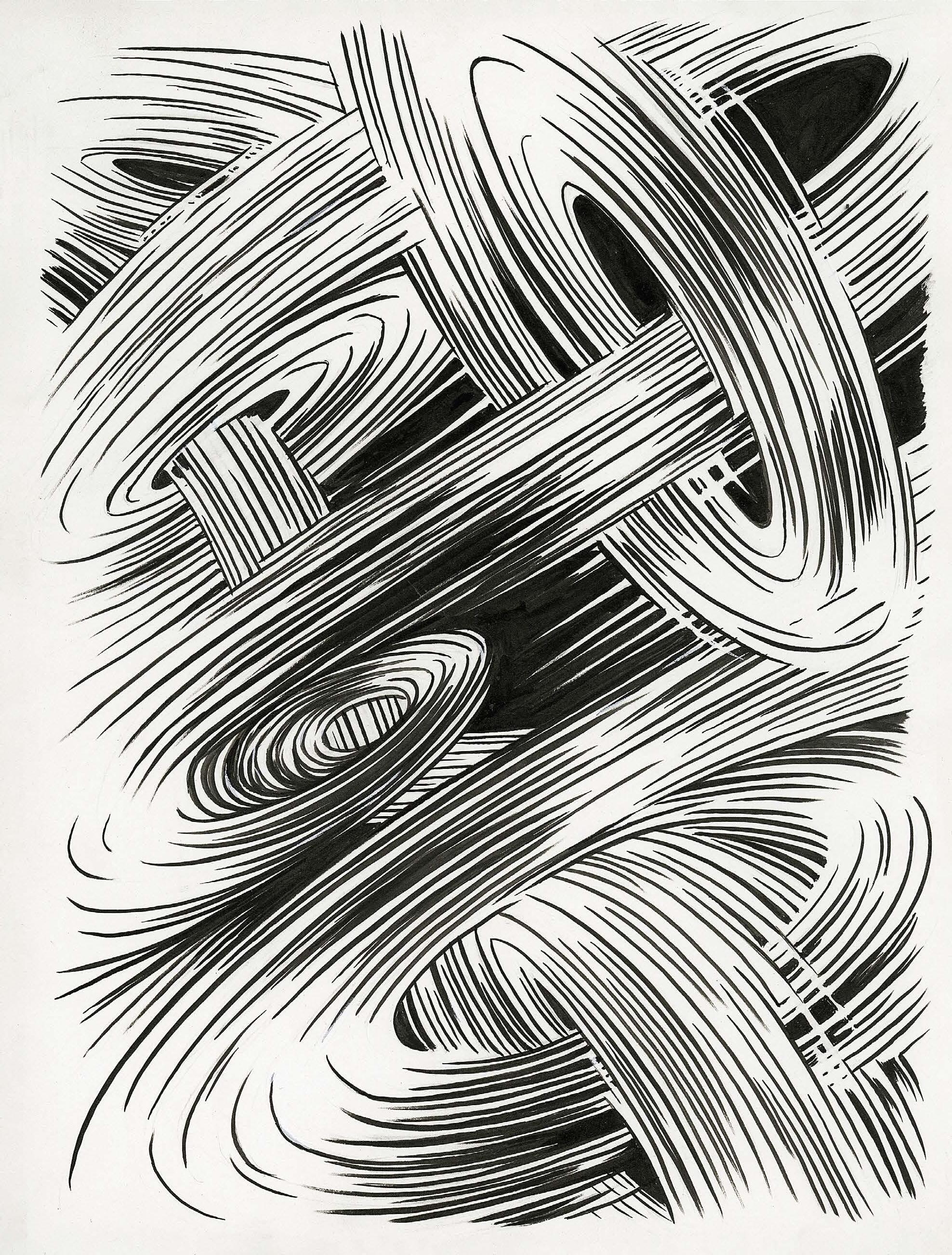
PICTURE BOOKS GENIEVE FIGGIS &
LYDIA MILLET
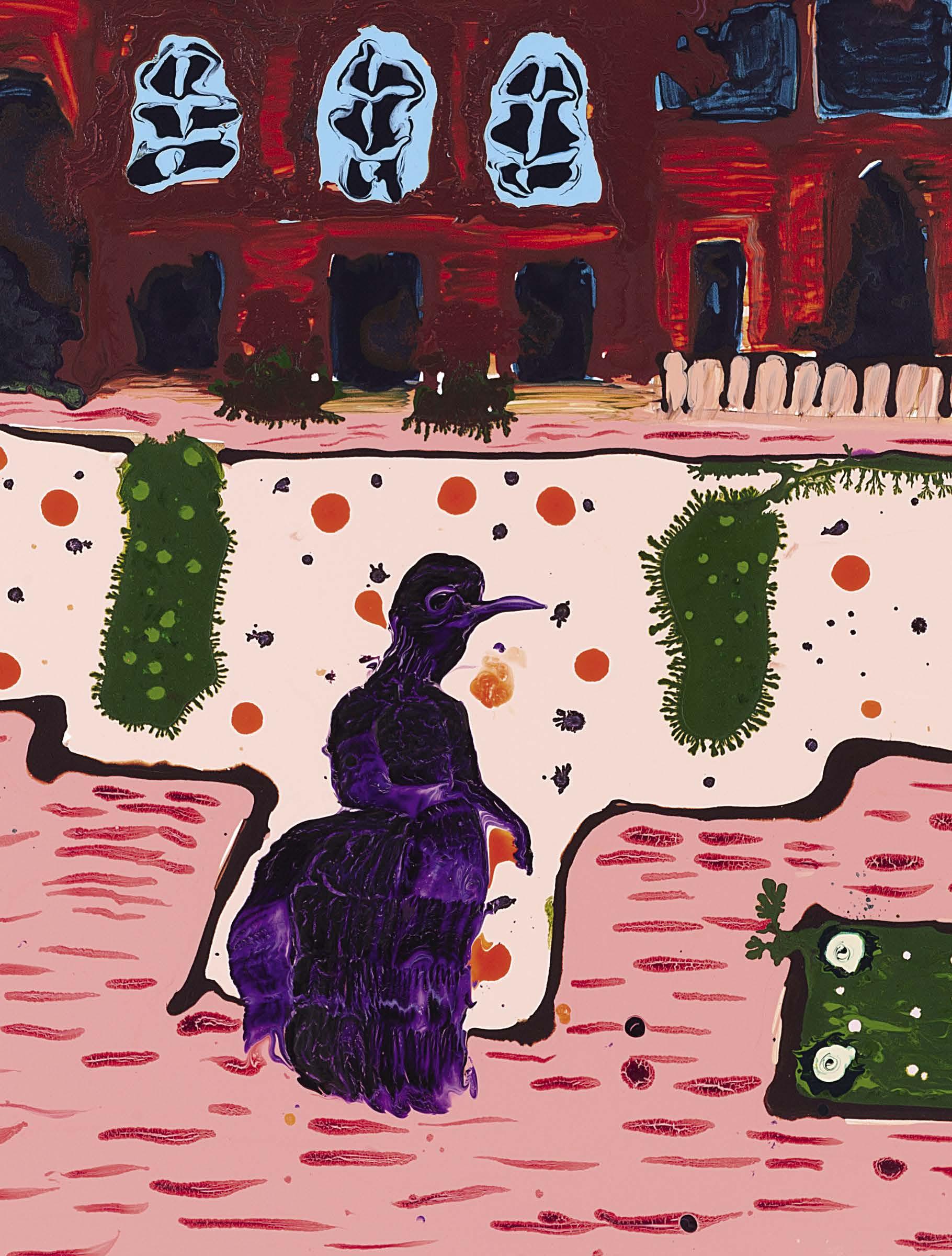
The fourth book published by Picture Books, an imprint organized by Emma Cline and Gagosian, is Lydia Millet’s novella Lyrebird . Accompanying the text is a painting by Genieve Figgis, inspired by the story’s lush setting. In celebration of this forthcoming publication, Figgis and Millet spoke to each other about the process, the role of humor in their work, and the genesis of their contributions.
Lydia Millet’s Lyrebird is an off-kilter fable that follows a woman’s journey into a new world. As in her National Book Award–finalist novel The Children’s Bible (2020), Millet is a master at summoning a precise atmosphere—a world neither fully realistic nor fully fantastic, but more of a shimmery in-between place that allows for mystery, for the existence of strange animals and unexplained invitations alongside cell phones and car navigation systems.
The paintings of the Dublin-born artist Genieve Figgis tweak the inheritance of art history, sometimes playing up the grotesqueries of wealth, other times finding a place for the women lost in classic portraiture. Both Figgis and Millet play with formality, distorting and exaggerating the environments we’ve come to expect. But in neither case is the work caricature; instead, it’s deeply tethered to the natural world, to real life.
Writer and artist speak here about allowing themselves to be surprised by what they find on the page and on the canvas, about the relationship between research and inspiration, and about saying no.
—Emma Cline
GENIEVE FIGGIS How are you doing?
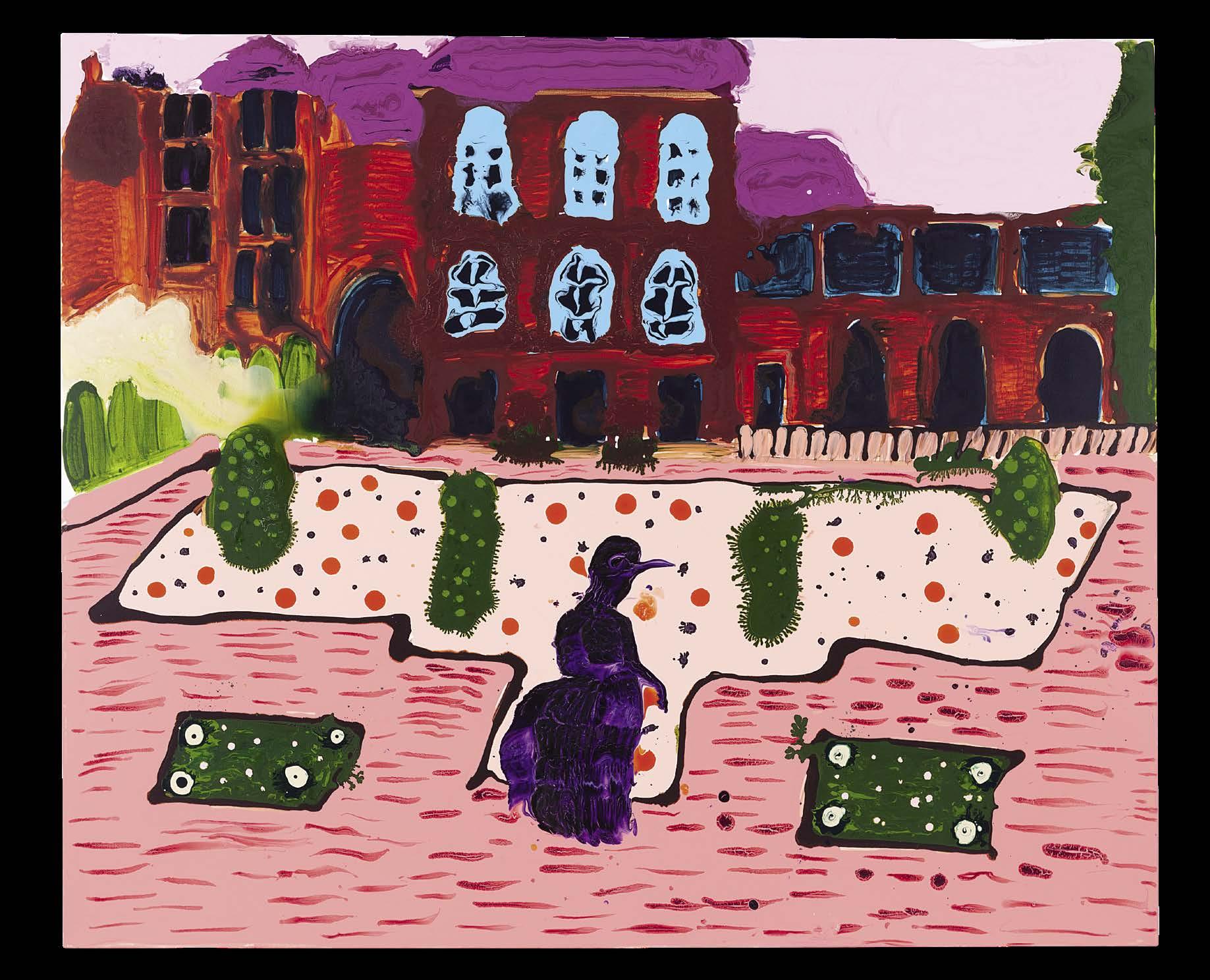
LYDIA MILLET Well, Thanksgiving is a crazy time for American people. There’s this drive to make a lot of food—it’s very stressful.
GF Yes, it’s the same with Christmas here. I do enjoy the decorations and all that, but it’s gotten to be too much hype.
LM Then family is in town, and that brings its own challenges. For example, my brother ordered octopus at a restaurant last night, which, for me, was just brutal. I had to run off to the bathroom to recompose myself, and then I came back and he was like, “What’s wrong, Lyd?” And I said, “Well, I don’t want you to get the octopus.” Which, of course, became this whole thing.
GF That wouldn’t be my cup of tea either now, Lydia. Because they’re very intelligent, aren’t they—
LM Right, and there isn’t any particularly good way that they’re being raised for food. It’s really bad fishery. But yeah, the octopus—I just can’t deal for some reason. I don’t know.
GF I gave up eating meat when I was about eight. I said, There’s something not right about this. But in my thirties I was working as a chef, and I started to introduce a little bit of chicken here and there—but I wouldn’t be the greatest meat-eater or anything like that.
LM Yeah, I’m not some sort of purist, I have no moral high ground on this, I eat sushi, salmon . . .
76
but certain things I just can’t handle. I think I’m getting weaker in my old age.
GF No, you’re just more aware of your surroundings and the situation we’re in.
LM I hope so. It seems like we both engage with natural environments quite a bit in our work. Let’s talk about the project—
GF The first thing I have to say, I loved your story.
LM I’m so glad you did. And I love your paintings. I was so excited to see that it was going to be you responding to the story.
GF I was so honored to be asked. I mean, my God, the story—there was so much in it, it was so colorful. I could have made a million paintings in response. It was a style of project that was new to me—are you more used to these kinds of commissions?
LM Not at all, but I have to say that I like to be given an assignment on occasion. Typically I just do what I want. I mean [laughs ], that’s sort of why we’re in this line of work, right? So to have someone ask you to do a project that has a certain goal or structure, a set of parameters, can be quite exciting. I’m not a very visual writer, and to some degree I wasn’t in this piece either, but I think I wrote differently because I knew there was going to be this other dimension to it.
GF Well, you certainly gave me a lot of wonderful material to launch from visually. It was so intuitive to pick up all of these elements from the story—the
Previous page: Genieve Figgis, Eternal Garden , 2022 (detail), acrylic on canvas, 39 3⁄8 × 47 ¼ inches (100 × 120 cm)
Opposite: Genieve Figgis, Eternal Garden , 2022, acrylic on canvas, 39 3 8 × 47 ¼ inches (100 × 120 cm)
This page: Genieve Figgis, Blue castle with Birds , 2022, acrylic on canvas, 47 ¼ × 39 3⁄8 inches (120 × 100 cm)

flora, the endangered animals, the settings. It’s such a complete world. How long did it take you to write it?
LM I wrote it in a couple of weeks. There was a pure enthusiasm that drove it forward rather quickly.
GF That’s amazing.
LM But from what I understand, you’re incredibly prolific in your painting, right?
GF Yes, I suppose I do make quite a lot.
LM Do you paint every day?
GF No, I’m not painting daily, but I do a lot of research, which is a fairly continual process. Research is what gets me excited about making work. It’s an essential part of my life. And I consider research in a rather broad sense—reading a story like yours or watching a film can be research, too. One striking thing about Lyrebird is that it opens with a refusal, a “No thanks.” That stuck with me.
LM The good thing about refusals, or beginning with a negation, is that it’s an automatic creation of suspense. That tension has been created from which narrative can quickly springboard.
GF Yes, and I imagine we, in our work and lives, have to be good at saying no. Painting is very solitary, and I imagine that would be your situation too. You’re on your own, creating; it’s very different from getting out there in the world and mixing and being social.
LM I also feel sometimes that making work and putting it into the world is a better conversation than the ones I get to have at parties. I’ve never liked small talk or been comfortable with it. . . . I develop this urge to be a bomb thrower at a party because I get so restless and bored. Maybe it’s better to do that in the privacy of your own home.
GF What inspired Lyrebird ?
LM I wanted to write a fable. There’s so much rich imagery in that genre, and it allows for all these layers: physical, material, emotional. And then, knowing that, I kept coming back to a work that my uncle made. He was a painter and a graphic artist by trade, and he did this one huge collage that I still have, called The Emperor’s Nightingale , based on that folktale. I grew up with the collage over our dining room table for my whole childhood, so I thought I’d do a version of The Emperor’s Nightingale , a sort of retelling of that fable.
I wanted to ask you, and it’s a tricky subject to approach, but I think it’s a legitimate one: how do you see humor and comedy in your work? In both of our practices, it seems fair to say, there’s real pathos, but it’s accompanied by moments of levity and humor. In what I aim to achieve, they both have to be present for me. I can’t stand to have a work completely devoid of laughter. And I feel like there’s quite a bit of funny inherent in your work, too, in your faces, your palette, all that stuff—and
77
forgive me if I’m not talking about this in the right painterly way because I don’t necessarily have the lexicon [laughs ].
GF No, I agree. Perhaps some of that is unavoidable with the subjects I’m drawn to, but it also relates to my obsession with color. As I work on a painting, there’s the light and the dark going on, from the eternal garden to the darkness of the unknown. It’s just life, really—can it honestly exist without humor erupting out of these contrasts?
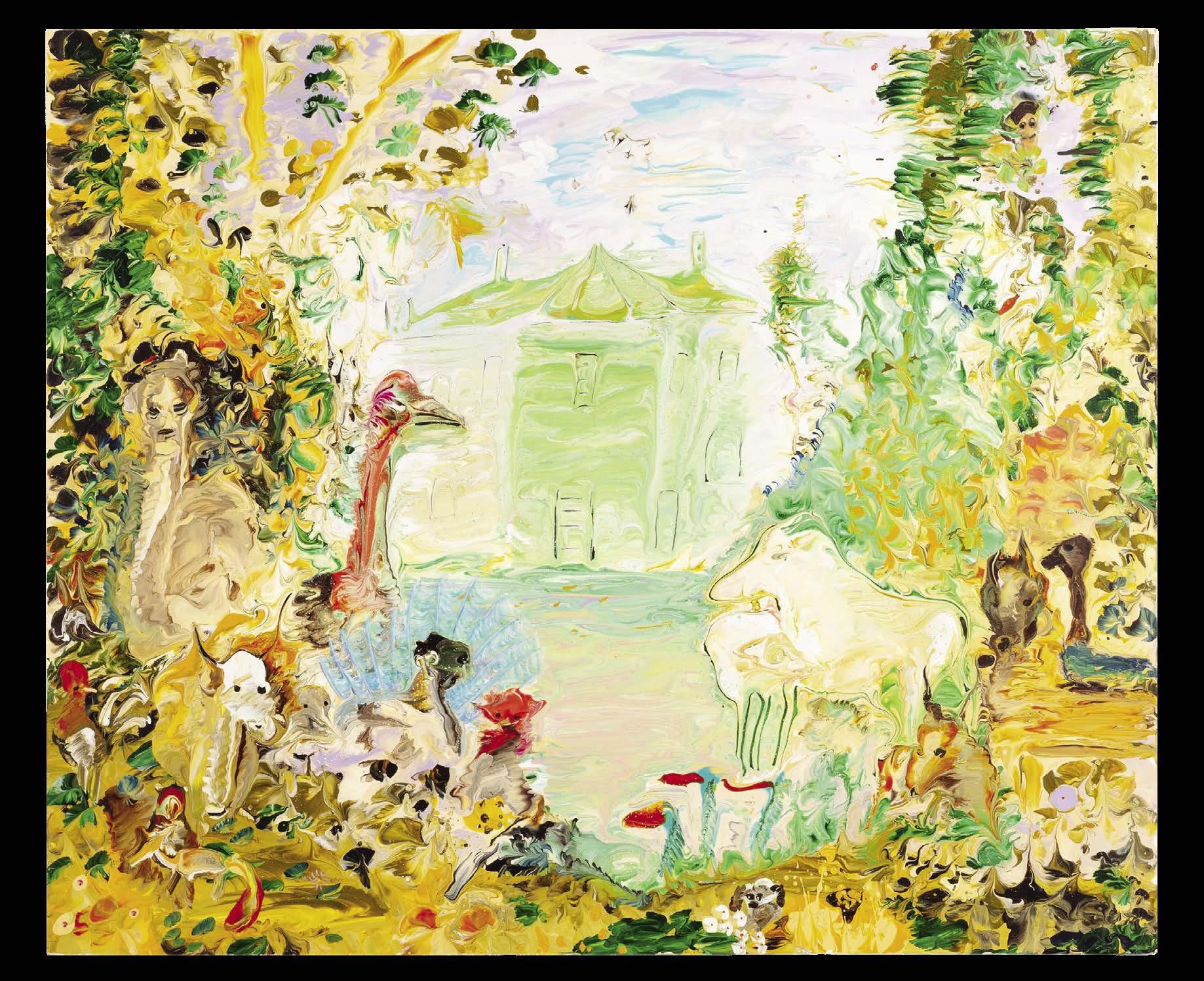
LM Absolutely. But you’re not intentionally setting out to create a humorous image?
GF No, I’m not setting out to create any particular mood. I paint in a zone that avoids that kind of thinking and control. At most, there’s what could be called an atmosphere that I carry through, but beyond that—
LM Okay, this happens to me when I’m writing, and maybe it doesn’t happen to painters, but I start laughing mid-sentence. Do you ever laugh when you’re painting?
GF Well, I scare the life out of myself sometimes [laughs ].
LM Really?
GF Oh definitely. I’ll be in the studio and stop to say, What the hell happened here? There are certainly some surprise elements when you’re collaborating with materials; they have their own
behaviors sometimes that you wouldn’t anticipate. So yes, I can see how my works, for certain viewers, may look a bit funny and creepy at the same time. But this is never intentional. At most, I’d say that whatever mood I’m in can saturate the work; it seeps in. And definitely who I am, I’d like to think I have a good sense of humor and I suppose the Irish do in general, but there’s light and dark there.
LM I completely agree. And I feel similarly about control, which you mentioned earlier. When I write, the control I have isn’t particularly a conscious or calculated form. I’m not measuring what I do or dispensing anything in a meticulous way.
GF If I tried to control anything too much, my head would just keep spinning around thinking about all I wanted to include and I wouldn’t get anything done. As artists, we, in a sense, have all the time in the world when we’re working on our own, and I’ve found that trying to overmanage that doesn’t result in much. It’s just working and then it’s luck, really, isn’t it? It’s just sort of fishing around and trying lots of different things—
LM That’s why I never plan anymore before I write something. There’s no plan. I just start and then, you know, it is what it is when I’m done [laughs ].
GF It’s good to be free, and then you can edit.
LM Definitely—you have to be a critic at a certain point, but you can’t be a critic at the beginning.
78
Genieve Figgis, House with Animals , 2022, acrylic on wood panel, 19 5⁄8 × 23 5⁄8 inches (50 × 60 cm)
Artwork © Genieve Figgis
Photos: Aoife Herrity
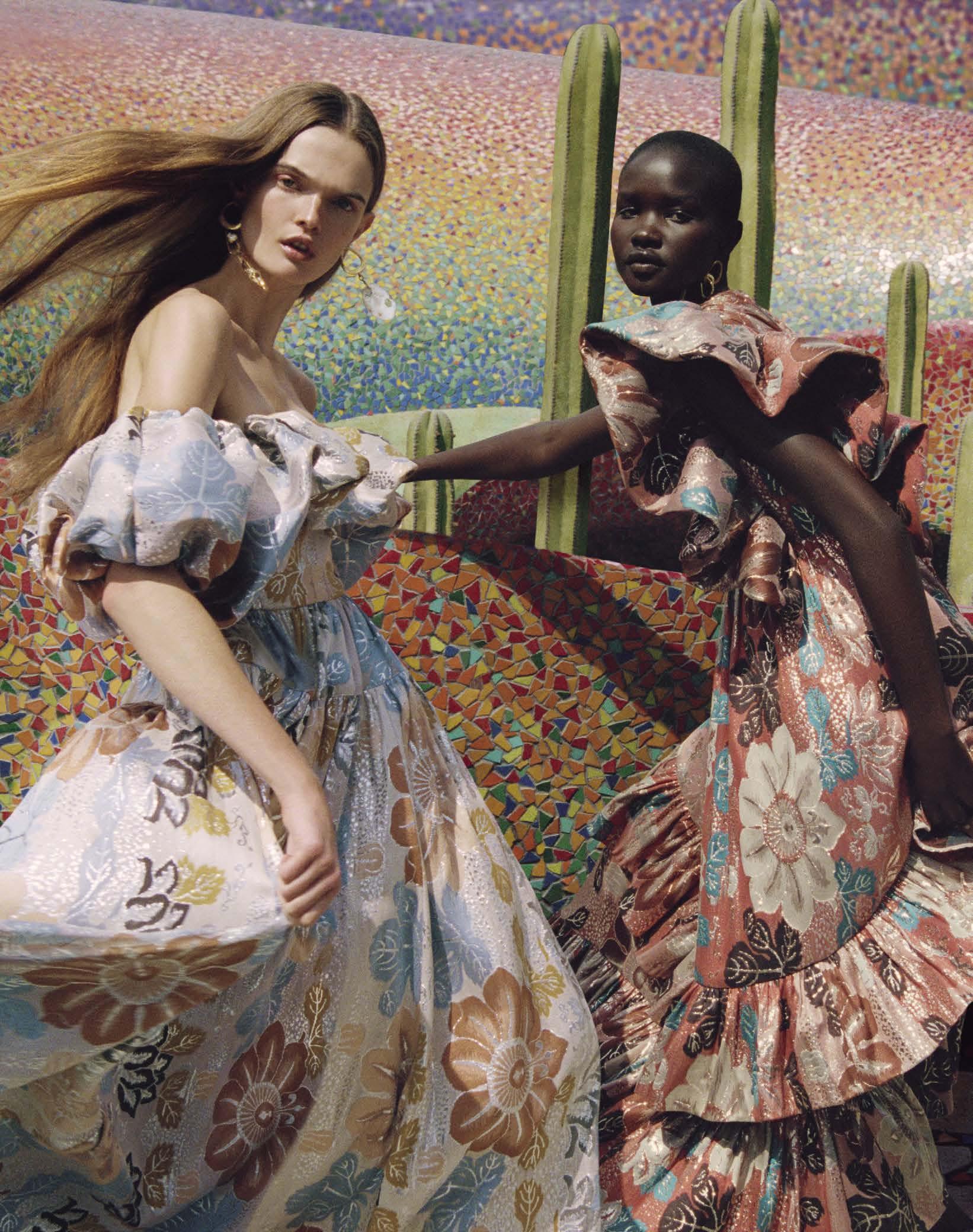
UL LA JOHNSON .C OM 8823 BE VERLY BLVD OPENING SPRING 2023
SALLY MANN AND BENJAMIN MOSER
During the 2022 edition of Paris Photo, Sally Mann and Benjamin Moser sat down for an intimate conversation as the first event in Gagosian’s Paris Salon series, initiated by Jessie Fortune Ryan. In light of Moser’s Pulitzer Prize–winning biography of Susan Sontag, Sontag: Her Life and Work (2019), recently translated into French, the two discussed the power and responsibility tied up in their respective practices of photography and writing.
SALLY MANN Y’all want to hear about our insomnia? [laughter ]
BENJAMIN MOSER We were talking about insomnia and traveling and jetlag. I have the solution. You didn’t think you were coming here to hear this, but in France you can go to any pharmacy and get for €3 the best sleeping pills in the world. This has been a big moment in my life [laughter ]. But we’re not here to talk about insomnia.
SM Not necessarily, but maybe it’s a symptom, or cause, of what we are coming to talk about, right?
BM Do you think it’s an artist’s affliction? It struck me pretty full on, actually, when I was writing this book.
SM Well no wonder. It’s an 832-page book.
BM And that’s volume 1.
SM How is it that it took you—and I didn’t mean to ask this question, but now that we’re sort of talking about the body—how did it take you 270 pages to reveal that Susan Sontag had never had an orgasm?
BM Oh. Well, that’s a great question. I didn’t know this because I’m a man [laughter ], you know, and I’m gay. What I’m trying to say is, I don’t—I mean, I’m not going to break down the fourth wall here—but I don’t have sex with women [laughter ]. I didn’t know about this. But Sontag was born in 1933, and when I started talking about this with a friend of mine who’s a feminist critic in the Netherlands, she said I should have written more about the orgasm.
SM I agree with your feminist friend.
BM So I thought, “What’s there to write about?” Honestly, it never occurred to me that it was such a big deal. But she said, “In our generation it was the biggest event of our lives. In every feminist memoir, every memoir of a woman becoming a woman, this is a huge moment.”
SM It’s true. I was reading along and I said out loud, “What?!” Because you’d written that she kept a list of all forty-six people she’d slept with.
BM By the time she was eighteen.
SM She’s had sex with over 100 people by the time she has her first orgasm. I think that merited more than just one offhand remark!
BM Sontag says that she only really becomes a writer once she has orgasms.
SM You differentiate between the orgasm she has with a man and then, years later, her first orgasm with a woman—and that, again, after she’s had 100 woman partners.
BM You know what she says when she finally has an orgasm with a man? This is my favorite line in the book.
SM See, I’m selling your book!
BM You sure are. She collapses onto the pillow and says, “Oh, shit, now I’m just like everybody else” [laughter ].
SM That’s a great line.
BM Actually, that part I did understand. I think when you’re gay, and when you become able to be happy and comfortable with that, the idea of heterosexuality—which when you’re twelve seems so great and enviable because you don’t get beaten up on the playground or whatever—once you get over that and you become a grownup, homosexuality becomes so essential to who you are. It’s something you’ve fought for. So I can imagine that to have an orgasm with a man might have felt a bit like a betrayal of that self she had fought for. Still, what was really interesting and sad for me about Sontag was that even though she did know that she was gay and she did have all these affairs, she never really became comfortable with that. It was always a source of shame and tension.
SM It was a generational thing.
BM Although not only. Gayness, even with younger
people, often remains fraught. And I didn’t know that because I didn’t have that experience. I don’t have a sad story about being gay. I didn’t realize how anomalous I was.
SM Even coming from the South you didn’t?
BM I came from Houston. My parents were Democrats. They were part of a progressive minority. In contrast, Sontag was living in the liberal hub of New York. And people would say, “You live on 24th Street and you’re this famous intellectual. Everybody knows you’re gay. Who cares? What’s the big deal? Not one person you’d ever meet anywhere would have a problem with this.” And yet she still had that shame.
As a biographer, I encountered a couple of things like that that I had to struggle to contextualize in different times. One was the attitude toward communist beliefs. I grew up, again, in a left-wing household in which everybody was very progressive. But I didn’t know anyone who was interested in communism in Houston.
SM I was sent to a left-leaning boarding school, Putney, Vermont, founded by a woman whose children lived for decades in China both before and after the revolution.
BM Really?
SM Yeah. Working on the state farms and living in caves, that kind of stuff. And I thought it was all good.
BM I was fascinated by this flirtation with communism because I’d never heard of it. I really didn’t understand why somebody like Sontag, and a lot of people like her in that generation, would have been so attracted to communism. Because they knew about Stalin and they knew about all the oppressions in the Soviet Union and later in China. Why would they go to a place like China and be interested in that? To bring it to photography, one of the great things Sontag says is, in China there’s a correct photograph. Do you remember that in On Photography ? They tell you where to stand to take the picture of the building. You’re not supposed to stand anywhere else.
SM But Eastman Kodak did the same thing.
BM That’s true. I learned that from her book also. They gave little guides of where you’re supposed to stand to get the best photos.
SM Of course, being the contrarian, as soon as I read the Eastman Kodak directions I said, “Aha, it’s forbidden, so let me shoot into the sun! Let me put the sun behind the head.” But in China I’d probably have been punished for that.
BM You would have been reeducated.
SM Oh yes, reeducated, of course.
BM Did you really read the Eastman Kodak instructions when you were a kid?
SM Heck yeah. I still have them. You think I’m kidding? No. I have the 1924 Leica manual and about five others from the earliest years. They’re thick, they’re a bible. Yeah, and I read all of Ansel Adams’s early books. I still use them, don’t laugh.
BM I don’t laugh. I’m fascinated by it. In 1924, with the advent of the 35mm camera, I’m just trying to think of how inevitable photography would have been. Did everybody do it?
SM Sontag herself had that realization, right? At first she thought it was just an aesthetic practice, but while she was in Sarajevo, didn’t she come to realize its importance and political potential?
BM Well, she thought it was kind of evil. In On Photography she’s very skeptical. She thought it was a perverted way of looking at the world, commodifying and reductive, and that it presented a sort of fake truth.
SM She’s absolutely right.
BM She’s right. It’s very interesting that she enabled and developed this negative view of photography that now exists in criticism.
80

81


82
Previous spread: Sally Mann, Thin Skin , 2006–09, ambrotype, unique collodion wet-plate positive on black glass with sandarac varnish, 15 × 13 ½ inches (38.1 × 34.3 cm)
Opposite, top: Sally Mann, God’s Whip, 2005, gelatin silver print, 15 × 13 ½ inches (38 × 34 cm)
Opposite, bottom: Sally Mann, Untitled , 2000, gelatin silver print, 30 × 40 inches (76.2 × 101.6 cm)
Artwork © Sally Mann
SM You read every photographic book in the world as part of your research for the biography, right?
BM Pretty much. And it was fun, because I learned there’s a clear genealogy of photography criticism. There are the essays that everybody’s read and the ones that everybody responds to. I read all this stuff and I thought it was so fascinating—and then I realized I’ve never taken a picture in my life. I mean, I may have taken a camera on spring break in the eighth grade, but nothing more than that. Then a friend of mine challenged me to go on Instagram and try to take one good picture a day. It was so fun. And it was so hard.
SM It’s hard. But, then again, so is writing. I just read this quote from Jim Harrison, something like: “Writing is no problem. If you can hoe corn all day long, twelve hours a day, seven days a week for fifteen years, you can write a novel.” And that’s what it amounts to. It’s just such hard work.
BM I remember, one of my great models, someone I venerate, I have a photograph of him—
SM Who’s that?
BM V. S. Naipaul, whom I met when I was very young; he made this thunderous impression on me. I was working my first—I think also my last—job. It was at his publisher, Knopf. I got to know him as well as a twenty-year-old kid could get to know someone with a Nobel Prize who’s seventy and the greatest writer in the world. I was so intimidated by him. I was almost crushed by that intimidation—nothing he did to me, just by what he’d written and achieved. And he said something like, “Just try to write 500 words a day.”
SM Pretty good advice.
BM It’s like shucking, husking, hucking the corn?
SM Hoeing the corn. Trollope wrote mechanically like that; he set a goal for himself of, oh, something like 3,000 words a day. He would try and fill X number of pages of his notebooks with those 3,000 words and when he got close to quitting time, if he wasn’t quite there, he would just write faster.
BM He would also finish a novel, go take a walk, and then start another novel an hour later. Speaking of intimidating.
SM But I think Trollope’s onto something. Next to Flaubert, he’s the hardest-working writer.
BM It’s work. And I think people who don’t appreciate the work side of it shouldn’t do it. I think that’s true for any art, probably.
SM If you can hoe a row of corn for fifteen years— that’s exactly what working on your craft, any craft, amounts to.
BM If you can sit in a room by yourself until you die, you can write some books [laughter ]. But the work itself relates to other people. What had never occurred to me was what Sontag calls the vulture aspect of photography.
SM It can be predatory and exploitative.
BM Well, so is writing the kind of books I’ve written, biographies.
SM I know. When a writer is born into the family, it’s the end of the family. That’s a great quote and I bet it was written by James Salter’s daughter.
BM It’s older than that. I can’t remember who said it. Tolstoy or somebody.
SM Oh, you know, you may be right. I’m just reading Tolstoy right now. I’m so in love with War and Peace . But it was James Salter who would go to dinner parties and be taking notes under the dining room table.
BM I once read an interview with Salter and his wife. I never forget this when I hear of him: as you said, they had a notebook at dinner parties, and after the party they gave everybody a grade. They were like, “Sally Mann, A-.” After I read that I never
wanted to read him again.
SM He was problematic, but he wrote some great books. I think the Salter marriage fell apart and he lost all his friends because he basically stole their lives, but photography steals lives too. One of the questions I was mulling over today was whether photography— thinking about Sontag—is uniquely predatory and exploitative as opposed to painting or writing.
BM Painting maybe less? Writing—I mean, I’ve written two biographies. And about the question of whether photography is exploitative: if you read Sontag’s writing about photography, and if you have a phone with Instagram, you realize how easy it is to make somebody look ugly or pretty. You can do a little filter here and a little snip there and then suddenly you can make a perfectly nice person—a friendly, kind person—look like a monster, just by shifting the light.
SM Just like that picture in Sontag showing that famous Abu Ghraib photo of this strung-up, sort of semiscarecrow-y figure, and to the right is a man taking a picture. Which is always cropped out of it, but the photographer originally chose to leave it in, I suspect, because it’s so interesting.
BM You see just a regular American soldier, a totally normal-looking guy with his camera. There is a voyeuristic aspect to it. A deliberate framing.
SM Yes, exactly.
BM And the same with writing. We can transcribe this conversation; I can pluck out five sentences you said and make you sound like a tyrant. You’re really aware of this when you’re writing about people’s lives. If you shine the light in a different way—everybody’s got some unhappy sexual relationship or some sort of financial issue that, when cast in a certain light, might look a bit weird. So you’re always asking, How can you actually tell the truth about people?
SM As if there is a truth about people. That’s what came out in your book: how complex and contradictory Sontag was. Toward the end you paint a pretty unflattering picture of her.
BM Much more flattering than other people painted of her. There are a lot of negative portrayals. And I tried to make as positive a portrayal as I thought was still honest.
SM I’m not in any way suggesting that this wasn’t deserved, I’m just saying, you wield an enormous amount of power as a writer. And as a photographer as well.
BM Yes. I actually thought people were going to pat me on the back and say, “Weren’t you nice to her.” Because I was, in a lot of ways. And in a lot of ways, you do have to tell—I mean, certain things really do happen.
SM How did you choose Sontag as a subject?
BM I got an email from a woman I knew in New York who said, “You know, they love your book about Clarice [Lispector] and would you like to do this book about Susan Sontag?” And I was so terrified. Because Sontag—
SM Did they put any strictures on you?
BM Well no, that was a legal thing that we negotiated. I said, “I’m not a hagiographer.” So I had complete freedom. But then, as a photographer, as a writer, where’s the balance between telling the truth about somebody and painting an honest portrait? Your honesty’s not my honesty. And we all know when we hear recordings of our own voices how weird we sound to ourselves. Same when we see photographs of ourselves.
SM We can’t believe we really look like that.
BM Or that even someone would think we do.
SM As a photographer, you’re really at risk of causing a lot of anguish.
BM I think you’ve got to go for it.
83
SM Yeah, but I worry about that.
BM That’s natural; you have a lot of power—
SM And responsibility to your less sophisticated, relatively powerless subjects.
BM But it’s not just the subjects; you also have a responsibility to the person looking at the photograph or reading the book. You can’t totally whitewash stuff. There are certain things that happen in people’s lives that are simply true facts. If I take out a gun and shoot you—I might be a great guy, but the biographer or the journalist has to say, “It was all going along so well, but then he murdered her” [laughter ]. If you talk about crime objectively, legally defined crime, not everybody who commits crimes is an evil person.
SM Mr. Dostoevsky, are you in the audience? Hello?
[laughs ]
BM There is a demand from a lot of readers or viewers to produce something flattering. With Sontag, people worship her, particularly women intellectuals, artists, lesbians. She was really an example for all these people. And they get sensitive about what they see as criticism.
SM I just think she’s a really complex woman.
BM Who isn’t?
SM Precisely. I mean, I found some of the things you pointed out to be definite blots in her ledger book. I thought she was a terrible mother for the first several years.
BM She was nineteen when she had her kid.
SM Yeah. So who am I to criticize someone that young.
BM We’ve all fucked it up in so many ways—I don’t think it’s really a judgment. But I also think that if I want a saint, well, the Virgin Mary is available for worship in any number of buildings in this town. I don’t want to read about a perfect woman or a perfect man. I have a friend, the Dutch photographer Erwin Olaf, who says that a photographer’s eye isn’t beautifying, not necessarily. It’s actually not interested in beauty. Do you think that’s true?
SM Well, you’d have to break it down into categories. I do tend to make beautiful landscapes. Portraiture, no, it often doesn’t have anything to do with beauty, if you’re really making representational portraiture, which I don’t do particularly. But I think of [Richard] Avedon. And [Edward] Steichen when he photographed J. P. Morgan: he was given three minutes to go in and photograph this titan of industry. The great man comes in and sits himself down and stares at the photographer. The photographer sees what Morgan himself doesn’t see, which is, the way he’s gripping the armchair, and the way the light is falling, makes it appear he’s holding a knife. So Steichen takes one picture, does it in the required three minutes, and walks out knowing he’s got this absolutely damning picture. That happens all the time to photographers. I was photographing a twelve-year-old from the back and I realized that from where I was sitting, I could see her emerging breast bud. And I thought, “Do I do it? Do I not? Her face doesn’t show.” And I did it. And it’s absolutely one of my favorite pictures.
BM That’s the thing. You do end up doing it.
SM Most of the time you do. I mean, I photograph my husband, often in unflattering and occasionally embarrassing situations, and I’m thinking, “He’s a good guy. He’s trying to be helpful [laughter ]. And what is this that I’m doing to him?” But he’s my husband and he can always say no. The “innocents,” as Avedon called them, are far less likely to feel they can say no.
BM I think that photographers and artists and writers of all kinds, we’re always pushing the envelope. And sometimes—I mean, you’ve pushed a lot of envelopes.
SM Yeah, I love pushing envelopes. Get me an envelope, I’ll push that sucker [laughter ].
BM Witnessing atrocities and their documentation in Sarajevo—with her partner, the photographer Annie Leibovitz—informed Susan’s thinking about the camera, violence, and mortality. I’m curious about your work with gruesome topics, the dead bodies. What was in your mind?
SM You mean when I was photographing at the body farm [the University of Tennessee’s forensic anthropology facility in Knoxville]? Well, I feel like I didn’t aestheticize them particularly. Particularly with the color, they’re direct and straightforward depictions of decomposition. I was just interested in an almost scientific way when I was there.
BM And what about consent, do you think about that?
SM I think about it a lot. I still am troubled by those questions of consent. When I was doing the work there the people who ran the body farm were fine with me doing it. Nobody raised these questions at all. My understanding was that the donors had signed off on photography once their bodies were placed.
BM So they did consent.
SM They consented for photography, but whether or not they consented for my photography is another matter. But you know, people who work with dead bodies on a day-to-day basis are fairly cavalier about death. I would see them with a garden rake out there, piling up bones and throwing them into garbage bags. I mean, I wasn’t there more than about half an hour before to me, too, death began to feel like the most normal thing in the world. Which in fact it is.
BM Including your own?
SM Well, yeah, it’s right around the corner.
BM For all of us.
SM Yeah, well, no, I’m a little bit older than you are.
BM Did it make you look at your own body differently?
SM I try not to look at my own body. When I do, I see my aged mother and I think, “Oh God, I’m there.” Although I did a series of self-portraits after I had a riding accident that really tore me up. I did them as an inoculation. Seeing those pictures, I think, “How bad can old age be? I look like shit in this picture right now. My skin is peeling off. I’m black and blue and swollen. I look horrible.” I was staring death in the face.
BM Well, that relationship is the electricity of photography. It’s also the electricity of any sort of writing, because we know—and this is something that goes back to Plato—that the word “glass” and glass itself are two different things, and it becomes a mystical question to bring those two together. It’s almost an alchemic, Kabbalistic mystery. But in photography, what I find fascinating with all the fake news and Instagram retouching is that everybody with a smartphone now experiences it. This used to be a bit recondite; you could do it if you had Photoshop and figured it out. Now it’s so easy to just click click and make a totally different picture.
SM Change the lips.
BM Yeah, change the skin color, change your eye color, change your hair, change everything. And even though we’ve all done it, I don’t think it always quite sinks in with people just how different the photograph can be from the reality—and then, on the other side, how close it can be to the reality.
SM Yeah. Do we want to get into a political discussion about how important photography’s going to be in the next election?
BM It’s important in every election.
SM I know, but I’m worried about the next one. I think it’s more dangerous than ever. People want to believe photographs.
84
As a photographer, as a writer, where’s the balance between telling the truth about somebody and painting an honest portrait? Your honesty’s not my honesty.
—Benjamin Moser
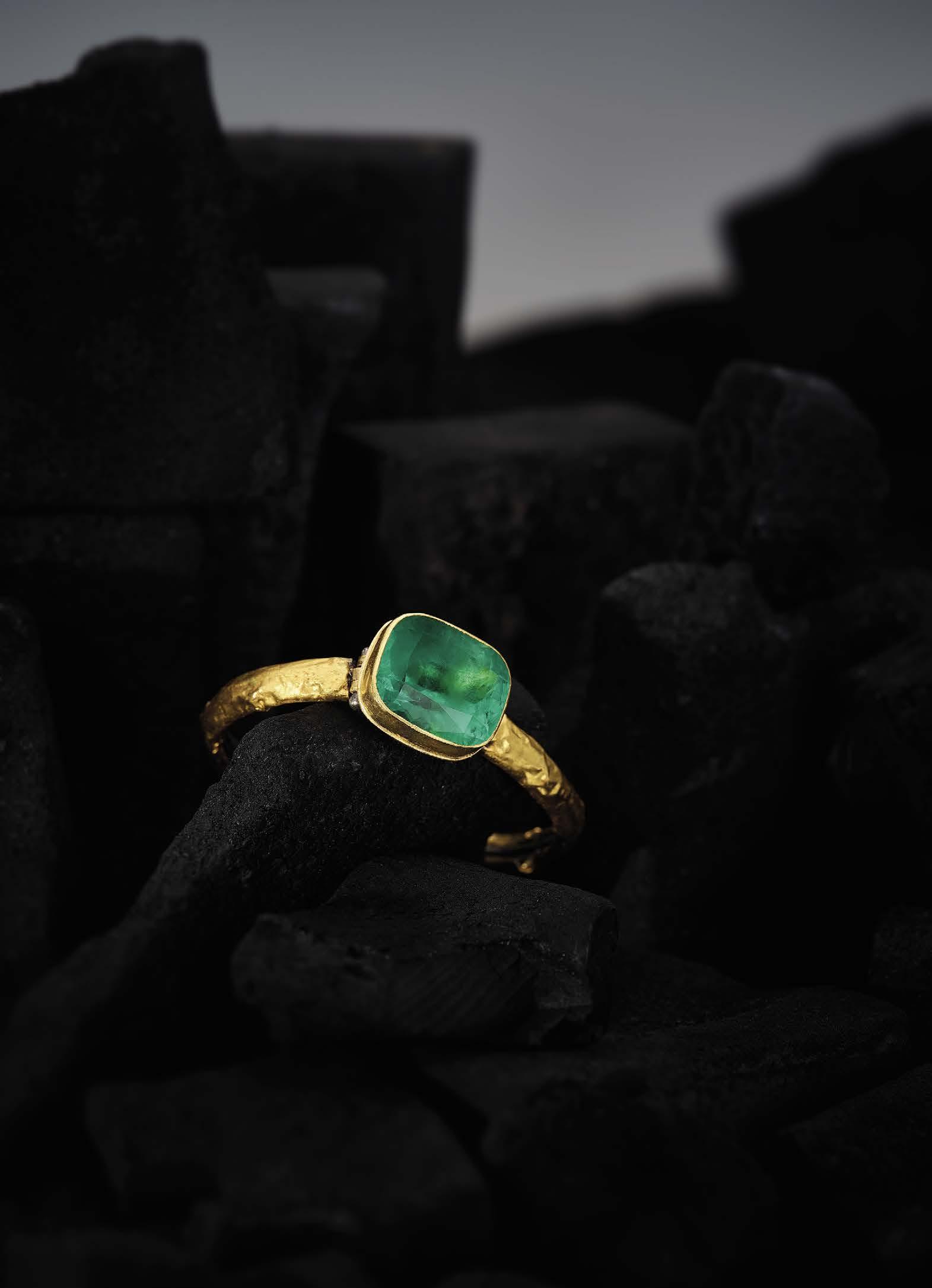 Cuff bracelet featuring a giant Colombian emerald , 22k gold and silv e r. judygeib.com
Cuff bracelet featuring a giant Colombian emerald , 22k gold and silv e r. judygeib.com
Building a Legacy
This
series
For this installment, Lisa Turvey, editor of the catalogue raisonné of Ed Ruscha’s works on paper, met with Ben Gillespie, oral historian, and Jennifer Snyder, oral history archivist—both at the Smithsonian’s Archives of American Art—to discuss the institution’s Oral History Program. They discuss the origins and evolution of the program, its responsiveness to shifting needs, and the varied uses of their ever growing collection of these histories.
LISA TURVEY With upward of 2,500 interviews, the Archives of American Art’s Oral History Program, at the Smithsonian Institution, is the world’s largest collection of interviews about American visual art. Could you give us a brief history?
BEN GILLESPIE The Oral History Program began in 1958, alongside the founding of the Archives. It started with the desire to collect stories from artists who had participated in the Armory Show of 1913, namely Louis Bouché and Abraham Walkowitz. That led to the Archives’ first big oral history project, of nearly 400 interviews: to collect interviews with artists and administrators who had participated in the New Deal art programs.
At the time, oral history itself was a nascent discipline in the United States. Many anthropology departments and universities, especially Columbia, were interested in collecting firsthand witness accounts and testimonies as primary sources. The Archives of American Art helped to shape the form for the visual arts. Oral histories became a way to document history that couldn’t be captured by other modes of historical research, such as paper records and correspondence.
LT
What is the funding structure of the program?
JENNIFER SNYDER The Works Progress Administration interviews were generously funded by the Ford Foundation. Sometimes we approach a funder and sometimes a funder approaches us. The majority of our interviews are privately funded through cultural foundations, or what we call “trust funds” at the Smithsonian. We do relatively little interviewing with federal funds.
BG It depends on the project. We might have a foundation come to us and say it would like oral histories with a specific subset of artists, or sometimes our advisory team notices a gap in our records and then we approach a funder to help remedy that gap. Oral histories are massive undertakings. Getting people to give you their whole life story is a huge undertaking in and of itself, and on our side, we’re archiving that record in perpetuity.
JS An oral history isn’t free. There’s a cost for transcription, for the editor, for preservation, for
staff. We can expect the process from start to finish to take at least eighteen months.
LT You interview not only artists but collectors, dealers, administrators, and educators. Could you say more about how you select subjects, who are called narrators?
BG We’re often looking for narrators who speak to an era, an artistic movement, or a geographic area. One significant recent project was the Nanette L. Laitman Documentation Project for Craft and Decorative Arts in America, which contains over 200 interviews with an unbelievable assortment of artists working in craft. And our project in coordination with the Keith Haring Foundation, Visual Arts and the aids Epidemic, gave voice to people who experienced the aids epidemic firsthand and saw how it affected the art world. Focused projects enable us to think through pivotal moments in the history of art and these human moments alongside it, but we also have the flexibility to go after life stories that don’t necessarily fit within a larger project.
LT Usually you approach narrators, not the other way around?
BG We invite people 99-plus percent of the time, but we do have people reach out and say “It’s time for my oral history.” And they might already have been on our priority list. Usually, if you think you’re suitable for an oral history, you’re probably on the priority list.
LT Your focus is generally mid- and late-career artists?
JS Usually late career. But that hasn’t always been the case throughout the history of the program; we do have a good number of midcareer interviews with artists, including Emma Amos, Ed Ruscha, and Wendy Red Star. When we approach a narrator and ask if they would like to be part of the program, we make it clear that this is an oral history. It’s not an interview for a magazine or a journalistic interview; it’s for the Smithsonian, and we want to talk to you about your whole life.
LT From birth to present—background, family, education, influences, methods, practice, work?
JS Yes. That communication about what the
interview is is essential, and a huge part of the ethics of oral history. And then we choose an interviewer collaboratively.
LT How do you pair narrators and interviewers?
BG We have a pool of interviewers we work with frequently and they’re usually oral historians. We also work with a lot of subject-matter experts—art historians and curators. The relationship with the interviewer is key—narrators have to feel comfortable, and the interviewer may have to help push them when their memory is failing or if they have trepidation about diving into details.
LT Ben, you’ve described the difference between oral histories and other types of interview formats as one of both degree and kind. What makes oral histories unique primary sources? What gaps can they fill?
BG Our oral histories are different in scope. We give narrators the space and the freedom to articulate their experience as they experienced it to the best of their ability. We’re taking them away from a targeted interview that accompanies a show or small body of work.
In the critical sphere, there’s been so much backlash against biographically inflected readings. Biography is seen as muddying the power of the object itself, the work of art. Not to say that biographical reading is all that we should do, but oral histories give us so much insight into the people who made the works. We’re breaking away from the standard artistic-genius model into something that’s much more real and grounded, to see who made the work. Oral histories give us a way to humanize art.
LT It’s an opportunity for narrators to tell their side of the story. Can an oral history be a tool to shape or influence one’s legacy? Do narrators see this as a chance to speak on behalf of their work and about how they might want it to be interpreted or historicized?
BG Absolutely, but it really varies from narrator to narrator. Some narrators might talk about their practice more generally, their influences, what brought them to art, even significant shows, but
86
ongoing
features conversations with experts in the fields of artists’ estates and legacy stewardship who offer insights that might prove useful to artists, their staff, foundations and estates, scholars, and others.
they don’t want to get into the significance of individual works. At times you’ll even find narrators and interviewers who disagree productively over definitions and labels, like in Jennifer Bartlett’s 1987 oral history with Avis Berman.
Other narrators love to speak about individual works and tell the story behind them. In Kay WalkingStick’s oral history of 2011, she talks about Messages to Papa , a transformative work in her practice in the 1970s. In her oral history you hear about the significance of the death of her father, about her coming to terms with her Native heritage, trying to make it as an artist, figuring out what she’s doing with painting. The installation is a site of mourning as well as a site to heal and look forward. And that was completely absent in the critical apparatus, but it’s right there in the oral history. There are so many examples like that where you really gain insight into what was the impetus for a work, how it was shown, how it was received—gems like that. You stumble upon these profound moments.
JS We are all in charge of our own story, and that comes into play a lot. What’s interesting is when you have people from the same circle and same time tell the same story, or tell the story of an event and it’s different. My experience is different from your experience and we might have been at the same place at the same time. Events and time and place talk to each other.
LT In terms of the process, does the interviewer provide a list of questions to the narrator in advance? Is anything fair game?
BG It should be more like a map, with possible questions or topics of interest that the interviewer then integrates into the conversation.
JS Our interviews take place over multiple sessions on different days. And that gives everyone a chance to review the last session and map where they want to go in the next session. During the interview we encourage people to take breaks and to speak candidly with each other about what they do or don’t want on the record.
LT What makes for an engaging narrator?
BG There are many gregarious narrators, and
they make the interviewer’s job easy, like when I had the pleasure of interviewing Walton Ford over the summer of 2022. But you can also have narrators who are more circumspect, who take time with phrases and offer a little less but are open to questions and take them as they are and as they form, which can also be fantastic. The main thing is being open to the experience and being open to talking about your life in its completeness.
JS I think what makes a good interview overall is when you can tell that it’s a collaborative process between the interviewer and the narrator. They may not know each other very well, but people who are comfortable with that collaborative process during the interview, with keeping that communication open, make for the best interviews.
BG There are amazing moments where you can see people working out ideas, or interviewers engaging with what the narrator said and coming back to it and giving them the chance to look at things through a different perspective. You can see the movement of thought in a way that you’re not going to catch in, say, a monologue or a targeted interview. I especially enjoy the moments of selfreflexivity in Sarah Charlesworth’s oral history.
JS You get these moments where narrators say things like “Oh, I’ve never said that out loud before,” or “I’ve never thought about it,” or “I’ve never put it together in that way before, but as I’m saying it, this is what’s happening.” Leo Castelli offers a few epiphanic moments in his 1969 interview with Barbara Rose.
LT How do interviewers navigate what might be conflicting imperatives: to get a full account of a life and a practice, which will be a future resource, without guiding the conversation or asking leading or prying questions? How do good interviewers do that well?
BG Being a good listener is step number one. We always tell interviewers to not break the silence. This is oral history 101, because as people are ruminating, that’s when the next memory will come, so you want their mind to make the connection. That will make for a natural flow. We work with
interviewers to reflect on how the oral history serves the narrator. The interviewer is a conduit, there to provide a little traction and help make sure you’re creating a resource that is useful for scholars, curators, and others in the future. The interviewer has the knowledge to give that critical traction but is also someone who’s there to say, if you’re talking about things that are uncomfortable, This is a safe and open space for us to address those issues to better understand your life and career.
LT I know that access to oral histories can be restricted to a certain point. Is there also an opportunity for a narrator to edit or retract?
JS Absolutely. Part of the ethical practice of oral history is allowing for a review period to take place and allowing your narrator to be able to shape their story and make factual corrections. But other times, people will want to revise something they said, and we take that into account. We have many layers of review that happen here before the interview even goes back to the narrator. After it’s conducted, it goes to our transcriber, and then we have another layer of review called the audit edit. The audit editor listens to the interview and makes sure that what is on the recording is in the transcript, doing this unseen work to clarify the sentences and paragraphs.
BG Then we go back to the narrator and interviewer for review and approval. We may have additional questions for clarification, and they also have a chance to go through to make sure that they’ve represented themselves the way they want to.
JS We encourage narrators to correct things like names, but we also encourage keeping our verbatim transcript. That is crucial for accessibility, so that what appears on the page is the same as what someone is hearing, and everyone has the same experience of that interview. Part of the understanding is that the interview will be available and accessible, which is fundamental to our mission.
LT Speaking of access, does your audience mostly use the transcripts online? What about in-person visits to the Archives?
JS We have 1,700 transcripts available online.
87
We’re breaking away from the standard artisticgenius model into something that’s much more real and grounded, to see who made the work. Oral histories give us a way to humanize art.
— Ben Gillespie
Some transcripts aren’t online because they’re restricted or because they only exist on paper. We have people use our transcripts in our reading room or from the comfort of their own home: researchers are able to contact our reference team for access to transcripts and recordings that aren’t available directly on our website. They use the recordings for many different reasons. Sometimes we have family members say, “I’ve never heard my great-grandfather’s voice.” But then we have people who say, “I’m a curator, I’m doing an exhibition and putting together the audio tour, and what can we use?” When SFMOMA had their big reopening a number of years ago, they used a lot of our interviews for their audio tours.
LT What other uses are made of oral histories?
BG As primary sources, they’re used in thousands of books, dissertations, theses, articles, and exhibitions every year. They are also fodder for many novels and history books, because these first-person accounts really flesh out the experience of a period. These uses and adaptations speak to their legacy-shaping power: they’re so accessible. If somebody’s coming into the Archives of American Art twenty, thirty, fifty years after your death, your oral history becomes a viable resource for reclamation and recuperation. And our collecting process is so broad. We’re not just going after blue-chip artists who have massive retrospectives; we’re looking for significant figures who help us to tell the bigger story of the visual arts in the United States, like Margaret Taylor-Burroughs, Katherine “Lehua” Domingo, and Frederick Weston.
JS It’s not just scholars and curators using oral histories. We see a lot of undergraduates, graduate students, History Day students. Another big use of our transcripts is for writing obituaries. Artforum , Artnews , the New York Times , the Washington Post , the LA Times —their reporters are mining these transcripts.
LT In the case of obituaries, the oral history is literally used for the last word, to fact check and confirm information. You mentioned Columbia earlier, which has an MA program in the discipline, and
there’s also the Oral History Association [OHA]. Many museums, universities, and other institutions have oral history initiatives. Is there a set of best practices in the field?
JS There are absolutely best practices in the field, through the OHA. We also have our own best practices in the Archives. It’s a doubleheader of best practices.
BG Part of keeping up with best practices, both with the OHA and internally, is maintaining a style guide for oral histories. Ours is consulted widely and it’s about to emerge anew with important additions, including best practices with captions.
LT Being interviewed for an oral history is a significant time commitment—less so than writing an autobiography or making a body of new work, but an undertaking of at least several hours. Do you ever have narrators on your priority list who are initially hesitant but then decide that doing an oral history is worth their time?
BG We work to accommodate schedules as best we can, but sometimes that can be an issue. Our timescales are quite long at the Archives: we might have approached someone in the early 2000s for an oral history and the timing didn’t work out, but they’re still alive, we can do an oral history with them now. We don’t think year to year.
JS The narrators in the Visual Arts and the aids Epidemic project knew each other, so they would talk to one another about their interview experiences through back channels. It was helpful because people knew what to expect, and it put them at ease talking about potentially traumatic and emotional times and events.
In terms of time commitment, it’s not just the interview, it’s also the review process. We give the narrator a timeframe for review, and we are clear: you do not have to review your transcript. If you’ve done a six-hour interview, that’s a couple of hundred pages, and you get that by FedEx and you’re like, Oh my god, now I have to relive my story again [laughs ].
LT Your Pandemic Oral History Project, interviewing artists, educators, and curators about their
experiences during the summer of 2020, was on a more condensed timeline.
JS The pandemic threw everything off. We really ramped up with that special project: we did eighty-five interviews in a row, which was bananas—in a good way.
LT On video? Remote?
JS Yes, almost all on video. It really got us into doing video interviews for the first time.
BG The remote interviews have been a real opening for us to think about what you can capture with video, and they help alleviate scheduling problems while protecting immunocompromised and older narrators.
JS For years, we’d only do video oral history with a film crew and a three-day shoot. And then the pandemic hit and we were seeing people at home in their living room with their earbuds on and whatever technology they had available. And we thought, Oh, we can do this too.
BG There was fear too about remote interviews and the intimacy and rapport that the interviewer and narrator could have, but we’ve been able to mitigate those concerns. Although we are continuing with the in-person interviews that we’ve always done, this is another tool to capture more interviews.
LT In addition to the Pandemic Oral History Project, the Between Artists: In Conversation with History series is another recent initiative.
BG That series is on our podcast, art iculated, which makes the collections available in new ways. Six emerging artists had the opportunity to dive into our oral histories and curate their own episode based on their research. It speaks to the relevance of the Archives and the ongoing influence of oral histories—how they capture an artist’s voice and influence—and it has been rewarding to connect with different generations of artists.
88
What’s interesting is when you have people from the same circle and same time tell the same story, or tell the story of an event and it’s different. My experience is different from your experience and we might have been at the same place at the same time. Events and time and place talk to each other.
— Jennifer Snyder
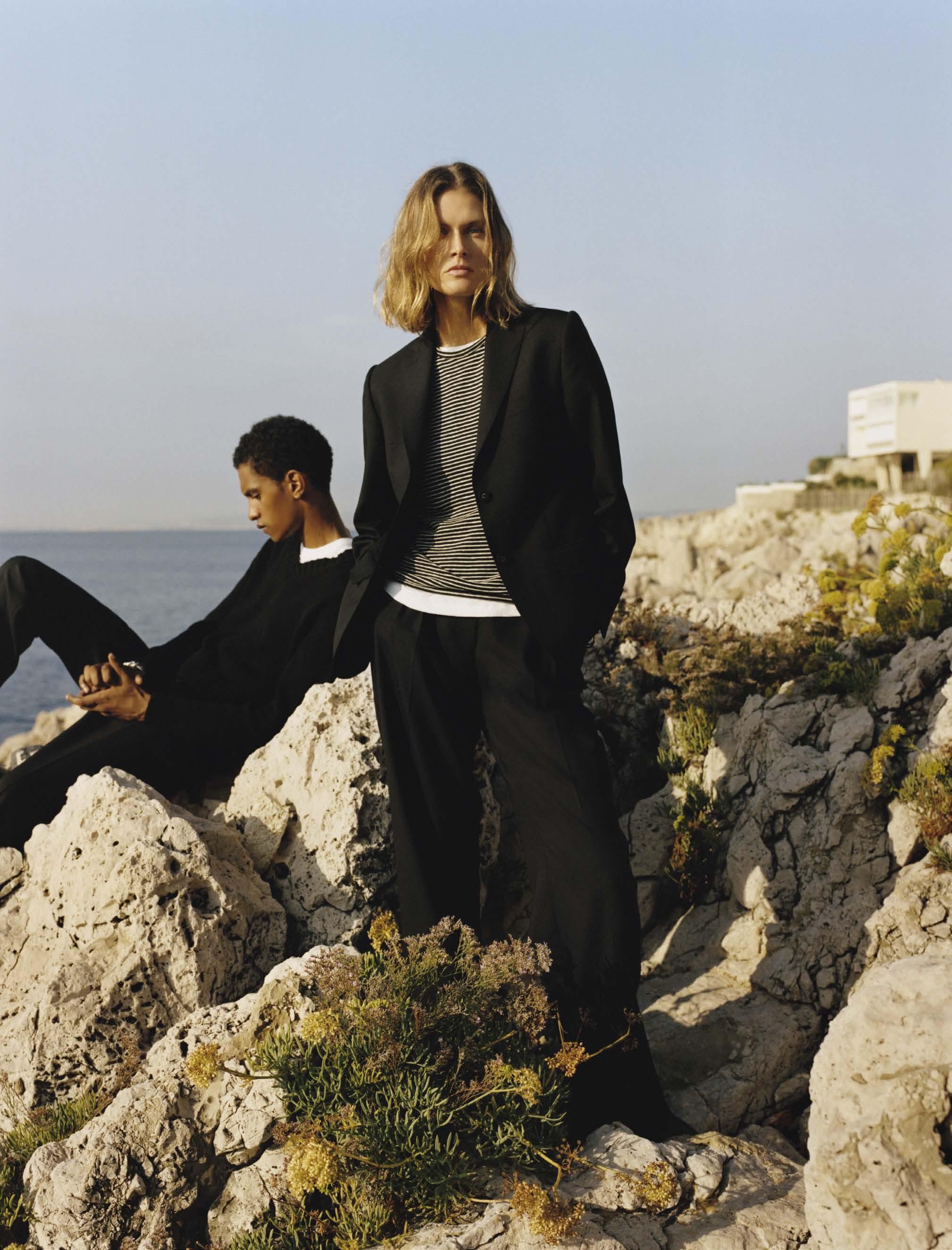

HAO LIANG
EMACIATION NOW: PAINTINGS OF MY CONTEMPORARIES
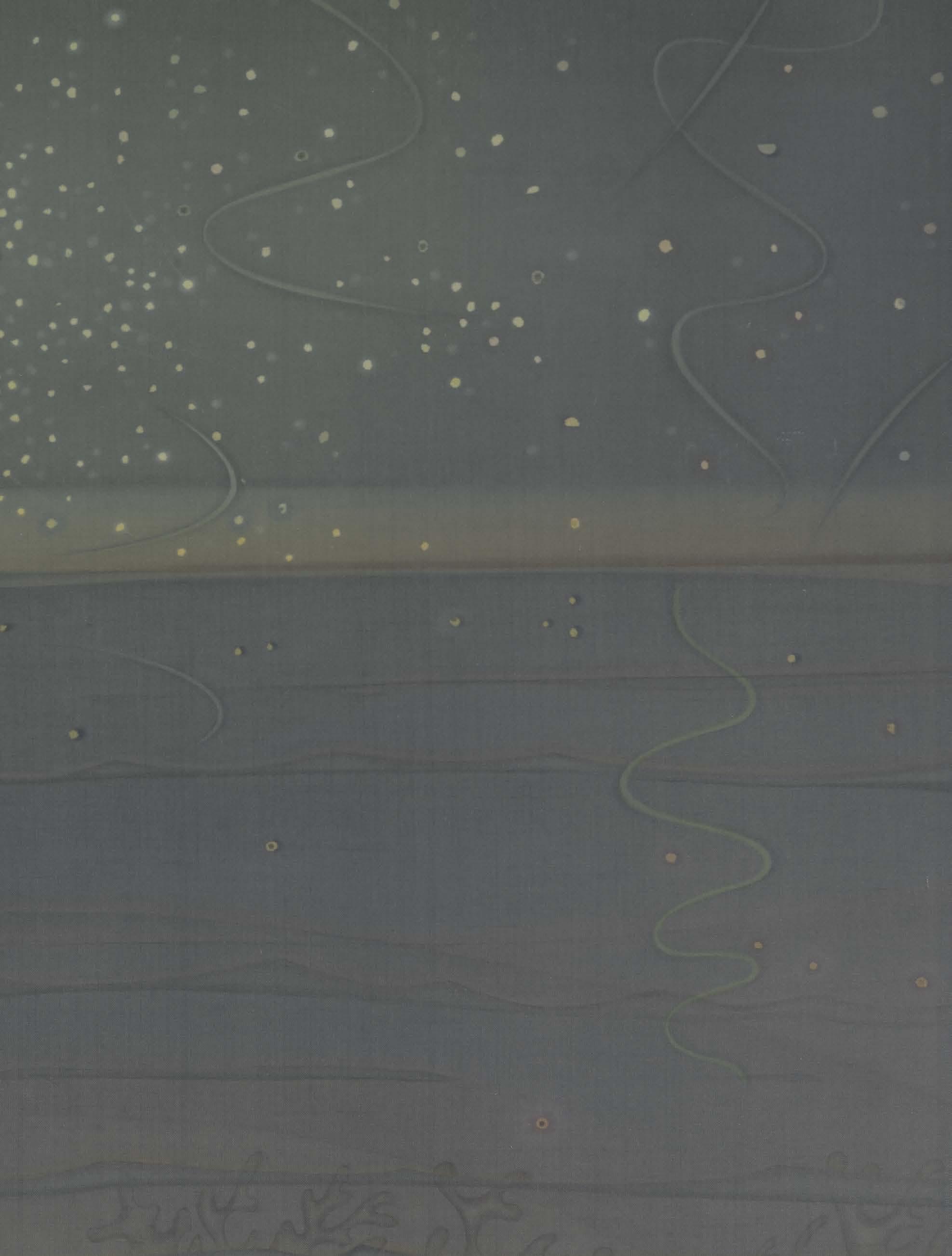
1
Here’s a contemporary experience: one of Hao Liang’s new paintings reminds me of a joke I remember seeing a stand-up comic tell on TV. You’re on an elevator, alone, maybe in New York or London or Beijing, ready for a private moment, when someone slides between the closing doors. You can’t help but notice it’s Jack Nicholson, and he doesn’t look so good—he’s haggard, collar lopsided, two days of beard, big black shades hiding what you can only imagine are bloodshot eyes. But he’s looking you up and down, too, and it’s him that says it: “You look,” he says, “like I feel.” I was a kid when I heard that joke, and I didn’t get it.
The painting, a gauzy portrait set in a gossamer jungle, is called Spring and Emaciated Horse (2022). The figure doesn’t look so good. He looks like I feel. He’s gaunt and cardboard skinned, ribs showing like a pig’s, rash-colored pupils sliding between their wrinkled, closing lids. Even his arms are prickly with stubble. He peers resignedly over his shoulder, as if spotted in the act of simply existing. The figure seems almost guilty to be there in the roiling new life, among leaves so delicate his outline shows through, caught out naked in the forest in a painting that should be about spring and thin horses but is now about him, his emaciation and equine aura, his being beaten and saddled.
Previous spread: Hao Liang, Poetics of Li Shangyin II , 2021 (detail), ink and color on silk, 14 5 8 × 20 ½ inches (37.1 × 51.9 cm)

This page: Hao Liang, From Assyria to the Beijing Botanical Garden , 2021 (detail), ink and color on silk, 10 3⁄8 × 9 3 8 inches (26.5 × 23.8 cm)
Opposite:
Hao Liang, Spring and Emaciated Horse, 2022 (detail), ink and color on silk, 17 3⁄8 × 12 ¾ inches (44.1 × 32.3 cm)
3
4
Hao’s guohua technique, based on centuries of paintings in ink and mineral pigment on silk, heightens the ambivalence of his subjects; his tight tonal range, flecked with highlights of bare fabric, flirts with abstraction or at least offers a kind of mist in which figures and buildings can hide. Hao’s paintings are about reaching for feelings that can’t be described any other way—they convey a mix of humor, distress, resignation, awe; a taste for deep human themes; the feeling that to be alive today, to be contemporary, to be of multiple times, is to feel out of joint— lost in the right place.
A smaller work from the previous year, From Assyria to the Beijing Botanical Garden (2021), reads like a precursor or companion to the emaciated man. The guy here doesn’t look so good either—his whole face seems bloodshot, although the edge of the painting clips off most of his features. The lily against his cheek resembles an organ more than a flower, bulging with veins, the pistil like a bone. He looks like I feel—he is one of my contemporaries, with me in this slice of time, riding into eternity. As with most guohua, the painting looks through history or histories in order to find the present—to resurrect the deranged population of the contemporary, their skeletons like scholars’ rocks. The swirls in his haircut and beard are like water stirred clockwise.
92
2
Text by Travis Diehl
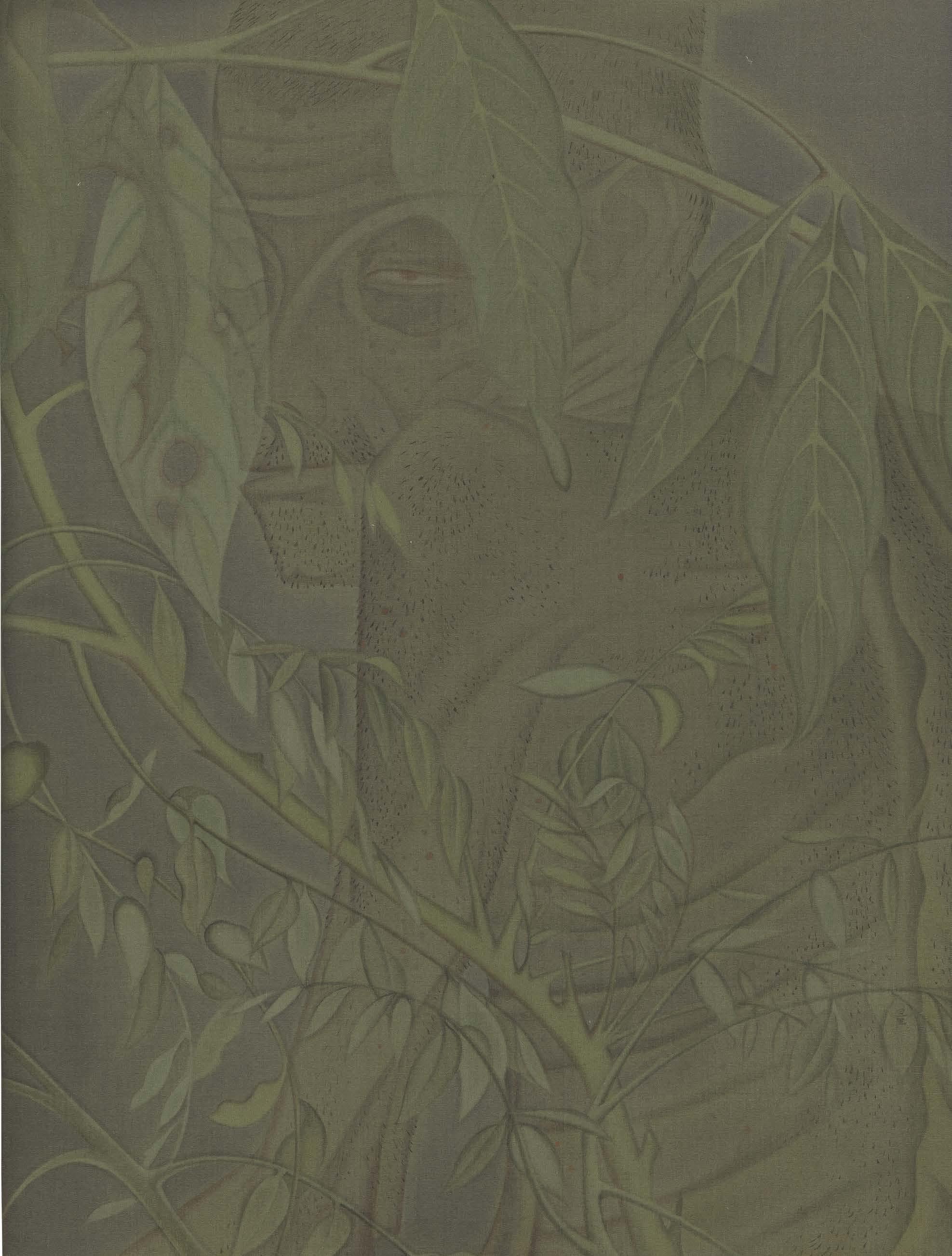
5
6
Under a Tree in Britain (2022) features a lake. The trees are off to the side. Most of this large painting— three yards or almost three meters wide—is consumed by the feathery arms of a whirlpool. It’s not in the lake, exactly—there’s no funnel or abyss—more like a labyrinth etched on the water’s surface, a lazy, confident spiral. A fantastic philosopher monk, with claws and a tail, stands under the leftmost tree. A lean dog stalks toward the shore. A young man with red hair strolls along the bottom edge, although we see him only from the waist up. Maybe he contemplates the branches full of birds before him or the flurry of golden leaves behind him, oblivious at any rate to the catastrophe unfurling on the water and his contemporary under the tree.
Hao knows the labyrinths of Jorge Luis Borges. Borges wrote “The Garden of Forking Paths” during the Second World War but set it during the First. The narrator of that story, a Chinese national teaching in England, serves as a spy for the Germans; in his last act before he is captured, he murders a sinologist named Albert and thereby sends a message to the enemy to bomb a town by that name. Before he pulls the trigger, however, Albert—by coincidence? no, contemporaneity—reveals that he has long studied the work of the narrator’s ancestor. This inheritance, an elaborate labyrinth, takes the form of a novel in which every choice unfolds simultaneously, branching out, indefinite and confounding. The labyrinth is the contemporary.
7
Hao’s work borrows freely from past styles and innovations. Modernism, psychedelia, photography, all needed to happen in order for him to make his paintings. So, too, did Tang poetry and guohua silk painting. His work would be postmodern if it weren’t so vast and insistent. Hao’s painting doesn’t pick and choose; it isn’t pastiche but rather a maze of concurrent paths, so that several eras might take place on the surface of the silk. Hao’s paintings have a grandiloquent scope that seems almost inappropriate to the twenty-first century, more proper for the nineteenth or the ninth. Maybe all these centuries at once. There’s humor there, too—in the absurdities of anachronistic meet-cutes, like a modern man about to meet an animal monk among the Paul Klee trees.
This spread: Hao Liang, A Thread of Sky, 2021 (detail), ink and color on silk, 81 ½ × 58 ¼ inches (207 × 148 cm)
Opposite: Hao Liang, All Things , 2022, ink on silk, 13 ¾ × 10 5⁄8 inches (35 × 27 cm)
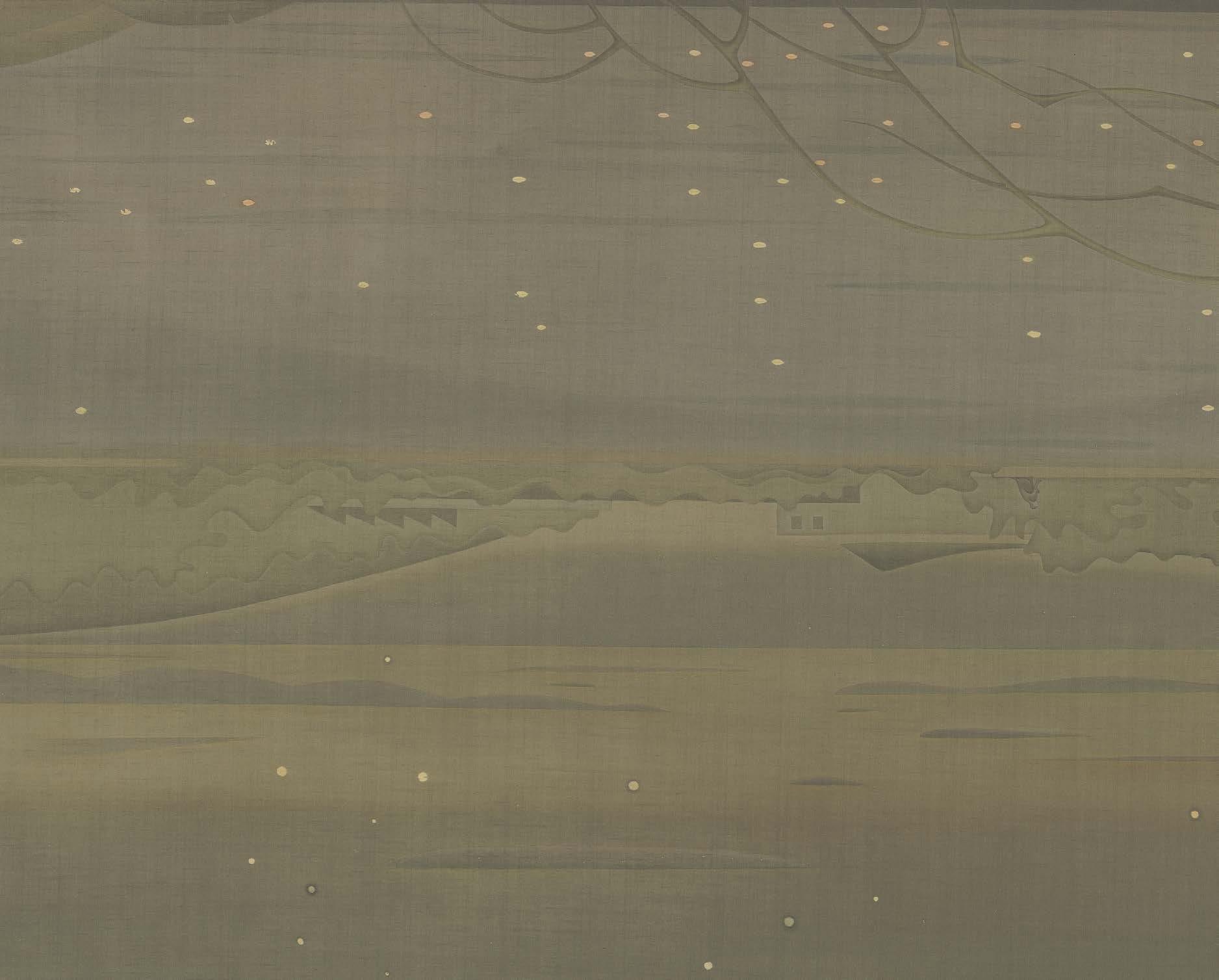
94
8
It’s contemporary to dip back into the past and to look to the future. It’s un contemporary to live entirely in the present, resisting the pull of other times. In Hao’s work, historical reference and present realism and futuristic speculation wear ambiguous clothes; his painting names the contemporary as a state of temporal ambivalence. In the vertical painting called A Thread of Sky (2021), two figures hug the bottom edge; one hunches against the wind or maybe against gravity; the other, a kind of medieval man-beast, perches in the branches—and notices, where the bent figure doesn’t, the other horizon looming opposite theirs, with what could be modern buildings and the sawtooth symbol of a factory roof in the hills. This second foreground, set off by a band of sky, could almost be its own planet, crashing into another.
At the top of the painting, along the bottom of the inverted ground, is an astral landscape, each crisp crater holding clouds or kinked crags, another swirling little multiverse.
9
10
In Chinese art history, artists have returned to the same subject again and again as a rule—cycles of paintings of a particular mountain across seasons and moods, a series of poems remarking on a given river valley, or a whole career spent observing, depicting, responding to bamboo. Hao has approached these modes in the past—he’s painted his share of sweeping landscapes and tangled groves. Here, he spends three small horizontal paintings returning to the poetics of the Tang bureaucrat and poet Li Shangyin. It’s one thing to depict a mountain, but how does an artist depict a poetics?

It’s like returning to history, in which events won’t change, although their retelling might, and the feeling we find in them changes every time.
The three paintings float near abstraction, grounded by flecks of figuration. They almost form a series, a descent. Poetics of Li Shangyin I (2021) starts in space: a crescent moon, halos around the stars, cloudlike striations and the moon reflected on the cratered water. II dips into the sea; a concentration of confetti resembles a galaxy through a telescope or bacteria on a microscope slide. A ruffle of coral runs along the bottom edge. In III, ranks of raindrops lance the surface of the picture, and water covers most of the composition; a pair of pale puffballs or tumbleweeds, their scale uncertain, catch the eye, but an octopus controls the painting from behind a shell, and two corners of land, maybe submerged, pin the composition to art history.

95
11
12
Ambivalence and ambiguity aren’t quite the same thing, although one often prompts the other. Li’s writing is famous for obscure references and unusual imagery, a mix of banal particulars of Tang life and crystalline images of nature. In Hao’s new paintings, I’m not always sure what I’m looking at, and that feels right. If the idea is to read a guohua painting, unpacking the number and kind of birds and branches or punning on the words for “carp” and “profit,” it’s not so easy to put words to Hao’s paintings. The imagery is ambiguous; the paintings’ poise between the past and the future declares the ambivalence of contemporary life.
Holding up my iPhone to a book of Li Shangyin’s poetry, I watch Google Translate butcher the Chinese syntax. Instead of the evocative lines given by Chloe Garcia Roberts, Li’s foremost contemporary translator, my phone produces garbled little pads of text, crammed into the poem’s grid of characters. This wronged language has its own kind of poetics: where Roberts and others write “miscellaneous notes,” Google puts “miscellaneous diamonds.”
13
Nostalgia can be dangerous, especially so-called nostalgia for the present, as if there’s not simply the feeling of something missing but the rising demand that this lack deserves appeasement. But the lack belongs to the contemporary. The joy of new life comes with the sadness that you might not live to see its full flower. It’s all a little too much. Hao’s All Things (2022) is a relatively small painting with a constrained palette of creams and ochers. Yet within this range, its variegations display a compendium of forms, like strata twisted by eons of earthquakes and new mountains, a gallery of possible lines, squidges of life trapped in there forever. The painting incorporates, somehow, in its “All,” the as-yet-unaccomplished fact of its destruction.
14
We see most of Hao’s epic Divine Comedy II (2022) through a chain-link fence. There’s a snake coiled among the bare, stoic tree trunks. A figure from an ambiguous time walks with their head down, wrapped in winter coat and scarf: hell looks cold. A couple of demons perch in the branches; one brandishes its wings. The figure doesn’t seem to notice. The fence obscures the scene, but it’s also part of it, an extension of or metaphor for the substrate, the densely woven silk threads, as if we’re zooming in on a cotton shirt in a detergent commercial, suddenly aware of the oils and germs inhabiting our clothes, perched on the fibers like demons. The painting is a permeable microcosm. To the left of the composition, a patch of inky fire seems to break through the fence and spill toward us, out of the picture. It makes me think: “chain ink.”
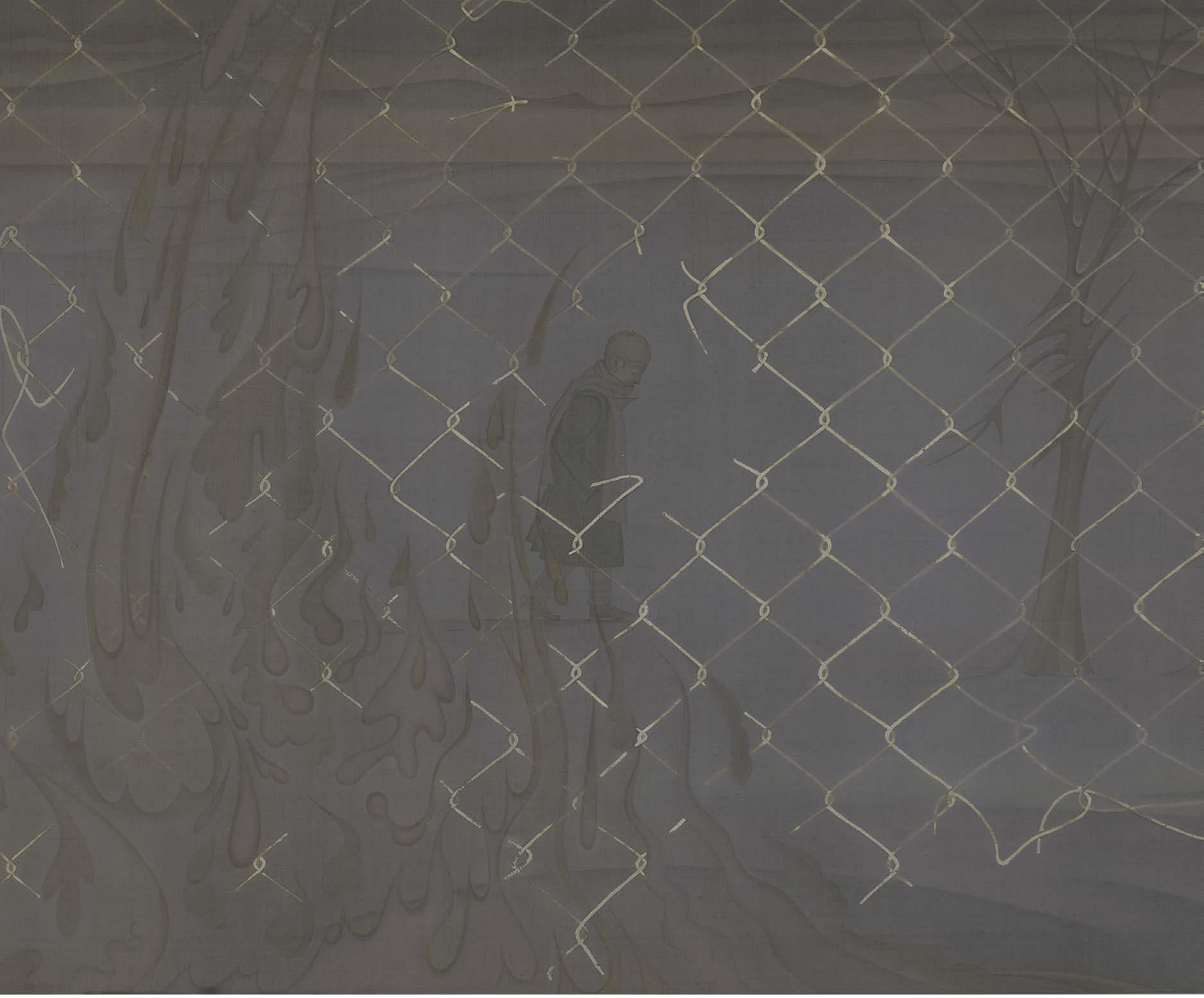
96
15
Me in New York, Hao in Beijing, his paintings and my text in London: does this text convey the feeling of several places and times at once, of quoting history but also imagining— not even distant relatives or future historians—but simply Hao Liang or the people who see his paintings reading it at some point in the near future? Is Hao my contemporary? If so, I’m the one in the leaves.
16
The figure wrapped in a robe, emaciated almost to the point of abstraction, leans back against the left edge of the painting. Behind him are maybe the bars of a jail cell, but they’re incomplete; it feels like he could escape if that were what he wanted. To the right, loops of razor wire garnish the sill of an open window with a view onto a kind of surrealist cartoon, a wet crater, a perfectly round eyeball on the horizon near a trio of tall mushrooms. Fire licks up the wall. A couple of the tongues of flame resemble the beads in a lava lamp, only with grinning faces. The painting is called Poetics of Spring in Jiangnan in Year of Renyin (2022), nodding to a verse by Du Fu, another Tang poet, in which his contemplation of a landscape leads him to imagine all the once vital temples now abandoned in the fog. It’s a
poem about the sadness of empires passing. The poet says of the landscape, “You look like I feel.” But I prefer—and I think Hao might, too—the way Li Shangyin surveys the ruins of the past in a poem Roberts translates as “Twisting River.” “Heaven became a wasteland,” Li writes. “My heart foundered.” Then he flicks his slender poem into the gulf of the contemporary: “Yet compared with the anguish of spring,/this means almost nothing.”
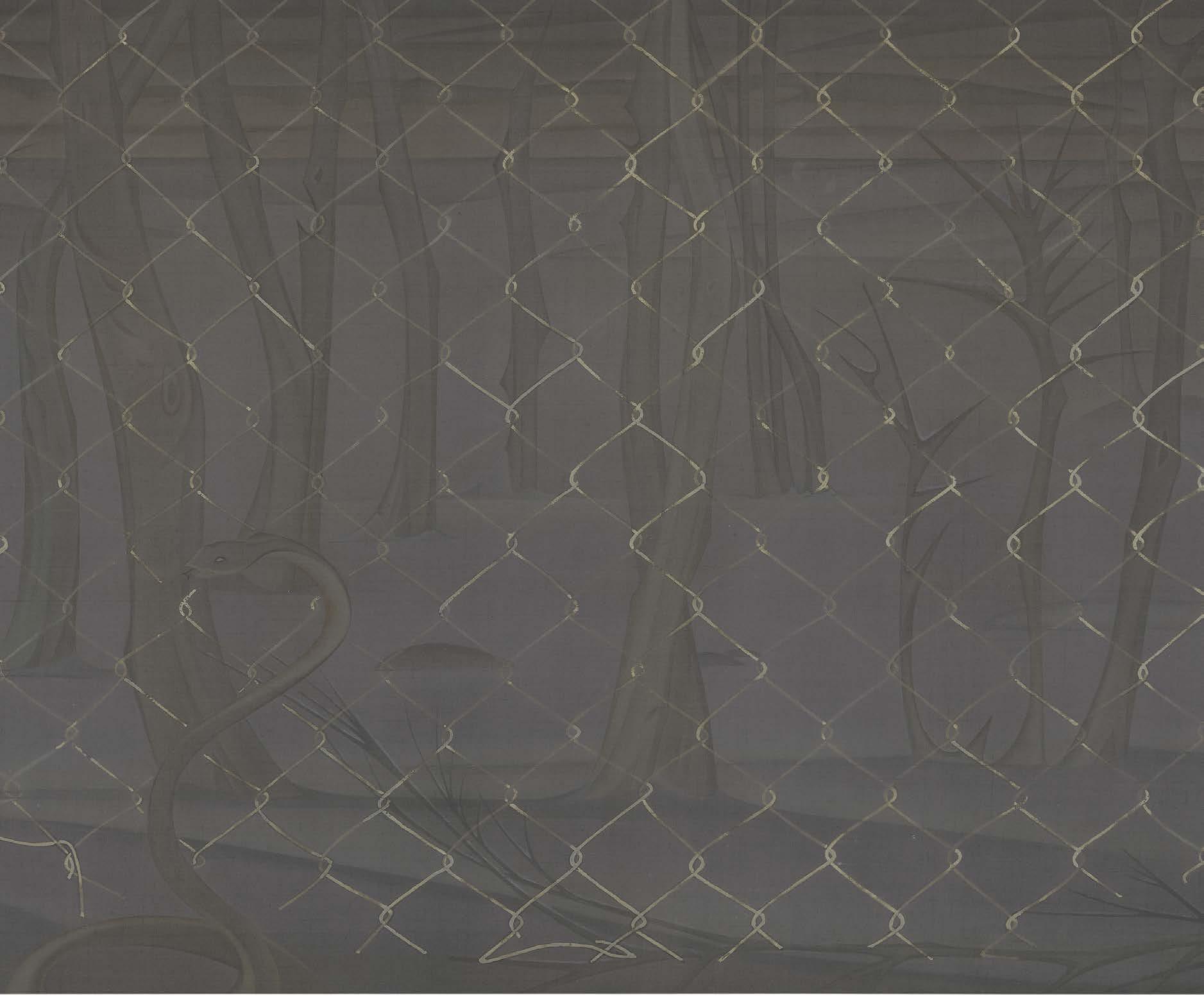
97
This spread: Hao Liang, Divine Comedy II , 2022 (detail), ink and color on silk, 57 1⁄8 × 88 7 8 inches (145 × 225.7 cm)
Artwork © 2023 Hao Liang Studio
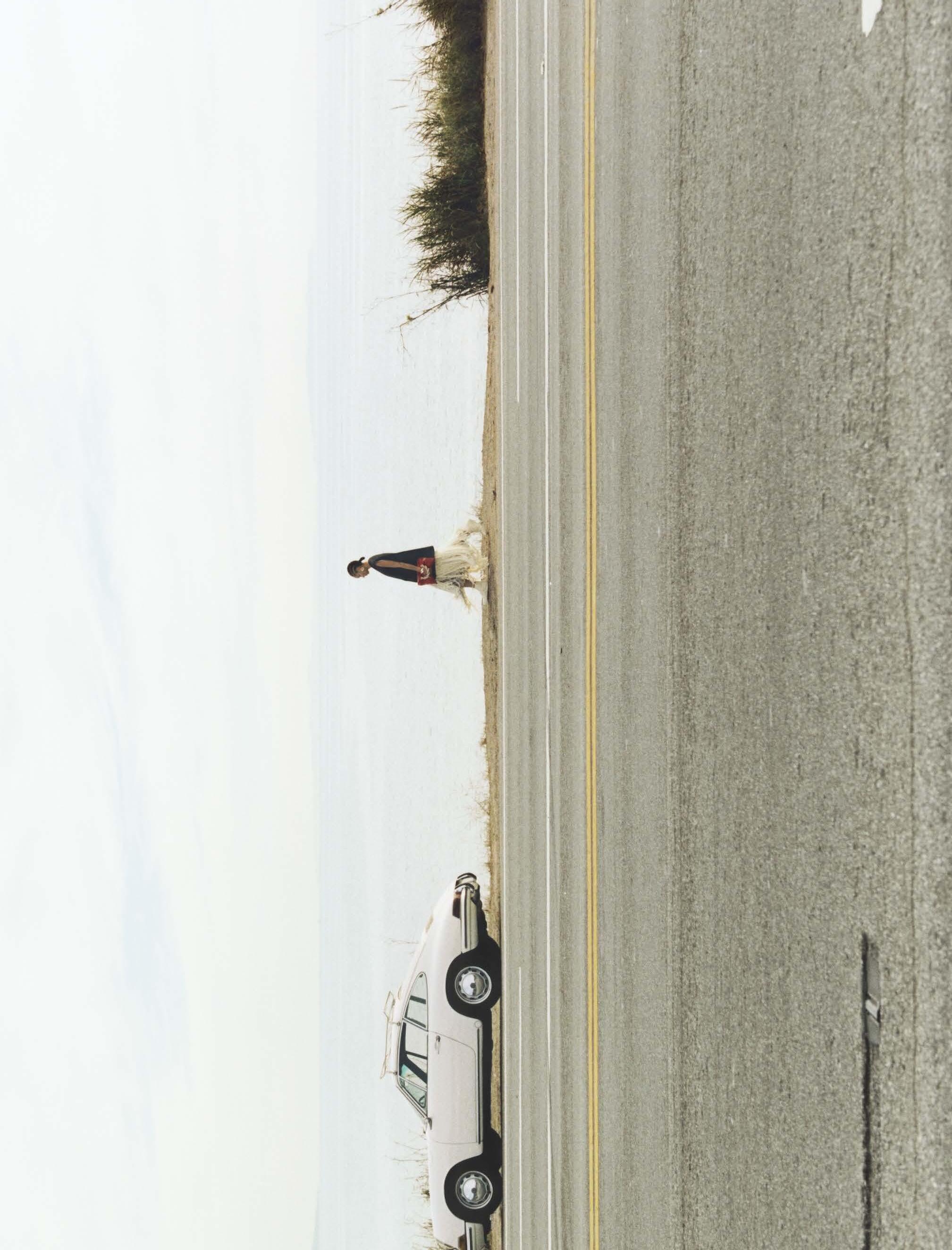

BY LEONORA MCCRAE
BY PERCIVAL EVERETT
A VERA TATUMNOVEL
100
The shadows of mountain mahogany and sage stretched west across the valley floor below, shortened, and finally reached eastward and would soon be gone, disappeared into the ghostly flurries of snow that had come from nowhere and promised to leave nothing. Gray drapes of rain moved up from the south, warmer air. The woman calculated that she had a couple of hours left before the weather found her. Enough time to put away the horses and walk the dogs.
Her name was Vera. It was a name she had never liked. She thought of it as an old woman’s name, a name from a different era. She knew that one day it would be an old woman’s name. People often commented, but she couldn’t tell them it had been her grandmother’s or great-grand’s or even a great-aunt’s name. It had merely been a whim of her mother’s, whose name was Lauren, a young woman’s name, Vera thought, a whim that had not been met with adequate objection by her father, Sean, a young man’s name. Her father’s response to Vera’s childhood complaint was, “You should have heard your mother’s first choice.” Her parents had referred to themselves as retired hippies.
Vera called it walking the dogs, but it was more an accompaniment. Mutt and Mongrel, both the color of dusk, ran wildly through the brush, also the color of dusk, while she served as a sort of home base, surprised by each explosion of reappearance. There were no skunk or porcupine on her mountain, so there was little to worry over in the way of nuisance, but there was the occasional bear and more frequent coyote, neither of which would pay the dogs any mind. There were rattlesnakes. There was nothing to say about them except that they were there.
Night was just falling, as was the rain, washing away, as she had known, any chance of snow, as they made their way back to the house. Owls’ wings whispered past, the raptors trying to hunt before the storm. The chill that had found the air was gone and somehow the firs presented that prerain fragrance that she could never explain. Sheet lightning flashed over the plateau and then came the thunder, lopsided and loud. Strange for February. Vera sat in her kitchen, alone on the mountain. Not an old woman. Not young. Thunder shook the house. For a while this storm was hers.
Upstairs, the final coat of paint on her bedroom walls was dry. It was called Elephant’s Breath.
Vera looked out her window and was surprised that there was more than a dusting of snow. And it was cold. Snow was a normal event in winter but it had been unseasonably warm in Northern New Mexico. She was packing a bag and waiting for her helper Miguel to make his way up the mountain, not always a sure thing, given the condition of his ancient Chevy luv pickup. He would stay in her house, feed her horses, walk her dogs, and keep the pipes from freezing while she went to an artists’ colony outside Santa Fe for a week. It was something she had never done, but she had been talked into it by a friend who would also be there. Lisa had used the retreat some four years running, claimed it was the only reason she was able to finish her one and only book of poems.
“You can get back to painting something other than walls,” Lisa had said. “Besides, you have to get off that mountain and see people.”
Vera hadn’t disagreed. She applied and was accepted. That was the language of the letter: We are pleased to inform you that you have been accepted to spend one week with us at Kachina Arts Retreat. Accepted by them, even though she would be paying them $2,000 for the week. That had grated on her a little, but what did she know of the world and culture of artists’ retreats.
She heard the rattling of Miguel’s pickup coming up the drive. She was standing just outside her door, a bit surprised at just how cold it was. She hadn’t gotten up periodically through the night to sweep the snow
off her brick walkway because she hadn’t known it was snowing and now it had crusted into a treacherous sheet of ice.
“Be careful on the bricks,” she said.
The dogs ran to greet the man.
Miguel waved that he understood. “I’ll check the horses’ water,” he said.
The bubblers in the horses’ troughs had never worked very well and now they didn’t work at all, so one had to break the top layer of ice. Vera was momentarily concerned that she hadn’t remembered to do that first thing. Though she was only fifty, she was always looking for evidence that she was becoming old. Orson had died six years ago, suddenly, at sixty-two, and had never seemed old. The only time he had even mentioned age was by saying that he had grown a beard when he was a young man to look older and then shaved it at sixty to look younger. The day after shaving he had a heart attack and looked like a dead young man.
Miguel came back to the house. “Hardly any ice,” he said. He looked at the sky. “This is blowing through.”
“Thanks, Miguel.”
“All packed?”
“I think so. I’m not used to packing.”
“My father always asked if I remembered my toothbrush.”
“I did.” She looked at the yard. “Well, I guess it’s time.”
“Everything will be fine here,” Miguel said. “Don’t worry about nothing.”
“Okay. Thanks, Miguel.”
Vera drove down the mountain in the 1970 Bronco that she had given Orson shit for buying but that turned out to be worth a small fortune, a car for which she received constant unsolicited offers, and was remarkably reliable. It was a bit of a beast to drive, but she had gotten used to it and it had made her stronger. She stopped quickly for an overpriced coffee at the hipster coffee shop at the edge of the plaza, then drove on. There had been no snow down there, but it was cold and the wet road glistened and she knew she’d better be careful, especially once in the pass. Black ice was no joke. Orson often recalled hitting a patch with the dogs in the car and referred to the event as the five-mile scream. Dogs and man. She missed him.
Mid-morning found Vera in Santa Fe. Check-in at Kachina, the retreat, wasn’t for another hour, so she went to the La Fonda hotel for breakfast. Though she had grown up and lived in San Francisco, Santa Fe now felt like a city to her. She wasn’t crazy about that. She was even less pleased with the idea that real cities now scared her.
The waitress came to her with a menu and a sincere smile. “It’s freezing out there,” she said.
“I hope I packed warm-enough clothes,” Vera said.
“Where are you from?”
“North of Taos.”
Vera thought she detected a shade of disappointment in the woman’s face. But why not, tourists typically tipped better than locals. And Vera further disenchanted the woman by ordering nothing but oatmeal.
Vera contemplated again whether she had packed appropriate clothes. She would buy a couple of overpriced things from one of the shops. She didn’t like spending money, but she had plenty of it.
She ate her oatmeal and left a more-than-generous tip, realizing that the gesture would either please or irritate the waitress. That didn’t matter. She was sure the woman could use the money.
A short walk and she entered the Overland sheepskin store, laughing to herself, realizing that she was simply ensuring that she would overspend. A tall woman with clonelike good looks approached, asking her in that retail way if she needed help.
101 1
“I’m looking for a wrap,” Vera said, feeling old using that word. “Something to wear around the house.”
“It is cold, isn’t it,” the woman said. “Where are you from?”
Having learned her lesson, Vera said, “San Francisco.”
The woman brightened. “We have some nice shawls.”
Vera nodded. She paid attention while the woman described the details of the processing of the wool. “The dye is all natural, of course.”
“Of course.”
“This blue would look wonderful with your eyes.”
Vera was unaccustomed to flattery and not much taken in by it. “I’ll take the green sweater that’s on that manikin,” she said. “A large. I like
things loose fitting. And some socks. Some warm socks.”
“Of course.”
Of the socks there she chose the loudest-orange ones. She could tell the woman disapproved.
She paid and left, paused at a shop window to consider a knit cap, and remembered she had one in the car. In the Bronco she took in a deep breath, imagined that it smelled familiar, then cranked the engine that had never done anything but start and it didn’t. She sat back and looked at the dash, turned the key again, and the engine turned over and purred.
The drive from Santa Fe to Kachina was beautiful. The road took her high, past the firs and into the first stands of aspens. There was snow up there but not much. More would no doubt fall. March seemed like a strange time to have a retreat, but some people liked winter. An icy wind penetrated the Bronco and she thought about pulling over to put on her new sweater under her jacket, but she didn’t. Like most of New Mexico the road had been plowed and graded to washboard perfection. She turned off onto a better-maintained private road. She came to an old wooden one-lane bridge and knew she had followed the directions correctly. The bridge felt dicey as she slowly crossed it. The stream beneath was shallow and frozen. Another two miles and a cluster of cabins appeared, all facing a large central building. It was nestled in the trees and offered no view out to the mountains or down toward the plateau. Cars were parked in the gravel lot. Some were expensive, sporty cars and she wondered how they had managed the road up. She turned off her engine and before she was out, Lisa was at her door. She nearly disappeared into a giant red parka.
“You made it,” Lisa said.
“Apparently.” Vera looked around. “This is a pretty place. You all do realize it’s winter?”
“I know. The idea is that we huddle together for warmth.”
“That’s some road.”
“You should see it when it rains. Let’s get you checked in. You can leave your stuff in the car.”
Vera followed her to the office in the central building and stepped to the wide window. The back of the wall of mail cubbies was facing the man who greeted her.
“You must be Vera,” he said.
“I am. Vera Tatum,” she said.
“Well, Vera, pleased to meet you,” he said, reaching to shake her hand. “I’m Opie.”
“What’s that short for?” Vera asked.
“I could say Oppenheimer but that would be a lie. Cool, but a lie. My parents loved The Andy Griffith Show and so I’m Opie. Like the kid in the show. Ron Howard.”
“That’s cool, too,” Vera said.
“I like your friend, Lisa,” Opie said. “Okay, Vera, we have you in Shavasana six.”
“I’m in five,” Lisa said.
“Towels are in there, more here if you need them,” Opie said. “Come to me if you need anything at all.” He shook her hand again, held it for a extra second and nodded. “Namaste.”
Vera smiled.
“Namaste right here while Lisa takes you to your cabin.”
“Fifth time for that joke today,” Lisa laughed. “Come on, girl.” Outside, Lisa leaned close and said, “Cute, right?”
“Half my age, but yes.”
The cabin was one room. A kitchenette, a single bed, a desk and chair and rough-looking sofa facing a wood stove.
“There’s wood behind the cabin,” Lisa said.
“Nice.” Vera stepped over and looked into the bathroom. It was funky but looked clean enough. In her head she was thinking, for two grand this was no great shakes.
“Is there studio space?”
“You’re standing in it.”
“I’m supposed to paint in here?”
“Of course.”
Vera walked over to the windows and checked them to see if they would open. They did, but then didn’t close completely. She pulled hard and they snapped together.
“Everything okay?” Lisa asked.
“Just want to be sure I can get good circulation. Even if I freeze to death.” She bit her lip and looked again at the room. “It will be fine. I think I’m going to do some watercolors anyway. Not ready for the mess of oils.”
Lisa nodded. “I’ll help you with your things.”
“It’s okay. It’s not that much.”
“Well, I’m just on the other side of that wall.” Lisa pointed.
Vera nodded.
“Lunch is in thirty minutes.”
“I feel like I just had breakfast,” Vera said. “But I’ll sit with you. How’s the food?”
Lisa made a face, but said nothing. “I’ll swing by for you in a bit.”
Vera watched her leave.
Lisa and Vera sat at table by the windows. They faced a gap between the Dishti cabins and there in the trees stood two elk cows.
“They come by every day,” Lisa said. “Beautiful creatures.”
“How do you know it’s the same ones?” Vera asked.
Lisa stared. “I guess I don’t.”
“That’s even better, right? So many elks coming around. Elk or elks?”
“Either,” Vera said. “Yes, it’s pretty cool.”
“Speaking of wildlife,” Lisa said, pointing at the door with her eyes. “There’s Tad Gibson.”
Vera smiled. “Sorry, I don’t know who that is.”
“He was a National Book Award finalist a couple of years ago. Isn’t he hot?”
102
2
a
vera tatum novel by leonora mccrae by percival everett
“I guess.”
“He’s teaching the poetry workshop.”
“I didn’t know there were workshops,” Vera said.
“Only that one and a memoir one. There are some artists here available for consultation. And a couple of agents.”
“I thought it was just a place to work,” Vera said. “A retreat.”
“Well, it is.”
“That’s Sparrow Stephenson. I hate her.” Lisa made a face like she smelled something bad.
“Who’s she?”
“She thinks she’s a famous poet.”
“She’s not?”
Lisa looked around, whispered. “She’s a politician, that’s what she is. Somehow she wormed her way into being poet laureate of Indiana.”
“That’s a thing?”
“She was on the cover of Poets & Writers. For what? One book that got some attention?”
“Maybe it was a good book,” Vera said.
“It sucked. It had a picture of a vagina on the cover. First time anyone ever did that. Of course it got attention. And what kind of name is Sparrow? There’s a lot of chatter about who the model is. If you know what I mean.”
Sparrow Stephenson saw Lisa and immediately came toward her. “Lisa, Lisa, Lisa,” she said. Her skirt was long and was held to her thick waist by a concho belt with a turquoise stone in the buckle. She had
bought into the New Mexican style with abandon.
Lisa stood and hugged the woman. “Sparrow. I didn’t know you’d be here.”
“And yet here I am,” Sparrow said.
“Sparrow, this is my friend Vera.”
“Hi, Vera. Another poet?”
“Painter.”
“Oh my. I’ll have to come by and see your work.”
“When there is some,” Vera said.
“I see.” Sparrow turned her attention back to Lisa. “Well, darling, I’ll see you at the reading. It’s going to snow, you know. Listen to me, rhyming without even trying.”
“See you there,” Lisa said.
Sparrow walked away, greeted someone else.
“I hate her,” Lisa said, again. “You do too, right?”
“Sure.”
Vera was already regretting being there. She wasn’t certain why she had come. She had wanted to spend time with Lisa, whom she hadn’t seen in over a year, but she could have done that in Taos or Santa Fe. And perhaps she wanted to paint again, but why? She was missing her horses, her dogs. She was even missing Miguel and his truck. She watched the people in the cafeteria, mostly women and a smattering of men, and realized she’d blown two grand. But here she was and she was going to make the best of it. It was only a week.
What Vera hadn’t considered, which was unlike her, was that she would need to eat. The lunch in the cafeteria looked functional enough, but she had a kitchenette. Had she known, she would have shopped for groceries all those miles back in Santa Fe. It turned out there was a commissary of sorts at the retreat, with cereals, eggs, milk, and the like. She walked over to the store and collected a few things.
The man who took her money looked exactly like Opie from the front desk but seemed more reserved, so she ventured an “Opie?”
“Nopie,” the man said. “Opie’s my twin brother. You can tell us apart because I’m handsome.” He smiled. “Andy.”
“Vera.” They did not shake hands. “I take it it’s not short for Andrew.”
“And you would be correct. I’m just lucky my parents didn’t name me Barney or Otis.”
Vera laughed. “You two look exactly alike.”
“Except?”
“You’re more handsome,” she said.
“There you go. You’re not a poet.”
“How did you know?”
Andy looked around. “Just between you and me, the poets never think I’m funny. They laugh, but only at each other. What do you make? My guess is you’re a composer.”
“I don’t make anything yet. Trying to get back to painting.”
“I’m a painter too. How about that?” He pushed the bagged items toward Vera.
She thanked him. “See you later.”
When she was at the door, Andy called out, “Coffee some time?”
“Sure,” she said. She felt silly for feeling flattered by the young man’s attention. She bumped into Sparrow.
“Valery, right?” Sparrow said.
“Vera.”
“Sorry.” But she didn’t seek to refresh Vera’s recall of her own name. “Your first time here at Kachina?”
“Yes.”
“You’ll love it. We all love it. And this is a very special year. A very special year.” And with that she flounced into the store.
Vera went back to her cabin and started a fire in the stove. It was a nice touch, she thought, that kindling and a couple of medium logs had been set up to simply be lit. The draw was good and the fire got going quickly. She went outside and behind the cabin to fetch some logs for the night. She grabbed one and was startled by a mouse. She looked at where the mouse had been and saw that the not-very-seasoned fir log was stained red. Perhaps one of the rodents had been squashed when the wood was moved around. She collected five logs in her arms and carried them inside. In no time the room was almost too hot. She opened a window.
Outside two women talked as they walked by.
“Last week,” one of them said. “Only last week.”
“Well, she should have known,” said the other. “She had to have known.”
“Too late now,” from the first. And then they were gone.
Vera opened the cardboard box she had brought with her. It was marked with red marker as supplies. She had thrown things together, not really knowing what she was doing. On inspection it became clear to her that the only things she was prepared to make were watercolors. Much neater and easier to manage than oil paints, but requiring control and technique that she knew she lacked. She decided to not worry, to just have fun. That’s what her late husband would have told her. It was good advice most of the time.
103
3
a
vera tatum novel by leonora mccrae by percival everett
There was a knock at the door. It was Lisa. “Come in.”
“It’s getting colder.”
“I noticed.”
“Ready to go to orientation?”
“Do I have to?” Vera asked.
“Kinda. Come on, you’ll like the scene.”
Vera nodded.
“I heard about you flirting with Andy,” Lisa said. “What?”
“He’s taken a shine to you.”
“What on Earth are you talking about?” Vera asked. She might have been blushing.
“Don’t worry about it. Just remember, what happens at Kachina stays at Kachina.”
“I thought that was Las Vegas,” Vera said.
“Yeah, well, I doubt anyone here has ever been to Vegas. So grab a wrap and let’s go.”
Vera smiled at the word wrap again.
There were around forty or so people crammed into the auditorium in the main building. The din of voices reminded Vera of a courtroom drama where the actors all repeated the phrase “peas and carrots” with different inflections. She chose to sit in the back row on the aisle even though Lisa wandered toward the front.
A heavyset woman called the gathering to order. She tapped on the microphone, which offered a second of feedback. “Everyone, everyone.”
The room became quiet.
“Hello, I’m Beverly Klein. I’m the director of social interaction and synergy. I’m here to make sure you all have a productive time. I’m known as the great facilitator. At least that’s how I like to be known.”
A few laughs.
“This is the ninth meeting here at Kachina. This is the only winter arts retreat in New Mexico. It’s not for the weak of heart.” Applause.
Beverly took a sip of water. “We have a couple of new faces. Would the first-timers please stand up.”
Vera stood. Another woman in the middle of the seats stood also. She looked back at Vera. The room cheered.
“Theresa there is a poet. She’s from Denver. Yet another poet. I know, I know. And Vera, as I understand it, is a painter from right here in New Mexico.”
More applause.
A man seated beside Vera, whom she had not noticed, said, “Welcome to our little village.”
Vera sat back down.
“A couple of housekeeping things before I turn the mic over to the head honcho. If anybody finds a copy of D. H. Lawrence’s Women in Love, please return it to Harvey Balsam or simply leave it at the desk. Some of you have said that your stoves aren’t functioning properly. Jaime will come by tomorrow to fix everything. Some people have complained that the wood this year is a little green. Tough. That’s our wood and we have to live with it.
“Some people have asked if we have cell service this year. The answer is, Hell no.” Applause.
“We come up here to get away from that shit. No cell service. No Internet. There’s a landline in the main office for emergencies only. We’re off the grid here, people. We have enough fuel for our generators and
more than enough food. Any questions?” She paused.
“Will there be a town trip this year?” a woman asked.
Beverly nodded. “The town trip is tomorrow night. Music and dancing at the La Fonda hotel. That’s to get your ya-ya’s out before we settle into work up here.”
“What are you going to do about the temperature outside?” a man called out.
“I know, right. It’s colder than ever. We’re working on it.” Beverly looked back. “Here’s Harv.”
The room erupted into very loud cheering, whistling, and stomping. Harv was a tall, slender man with thinning sandy hair and darker mustache and goatee. He took the mic from Beverly and held it between two fingers as if it might drop at any second.
“Good evening, artists!” he shouted.
“Good evening!” they shouted back.
“Why are we here!?”
“To make beauty!”
“And what is beauty!?”
“What we see!”
“And?”
“What we seek!”
Vera was surprised and a little bit amused. She smiled as she peered around the room. They were happy to hear Harv.
“I know it’s even colder this year. But everything is an opportunity. We will become better fire-builders. We will move more, keep that blood flowing. We will huddle together and share body heat.”
Someone whistled.
“Damn right,” Harv said.
“Where does art come from? It comes from the inner soul. But that’s not so easy to access and so we come to places like Kachina. We call this a retreat, but it’s more of an attack, isn’t it: we attack the world and extract its beauty. The people out there, they don’t want us to find it. They want us to just go to work and go home and watch ads on TV and then buy shit. But here we make pictures and music and poems. So go out there and do what?!” He raised his cupped hand to his ear.
“Make art!” the audience screamed.
“Do what!”
“Make art!”
“Which is?”
“Making beauty!”
“Goodnight,” Harv said, and disappeared.
Music started playing. Crosby, Stills, Nash & Young sang “Our House” from the rafters. The audience stood and all hugged each other. The bear of a man beside Vera surprised her with a hug.
“Welcome,” he said. “I’m Jerry. I’m a composer.”
“Painter,” Vera said. “What kind of music do you write?”
“By day I’m an insurance executive. By night I write folk songs.”
Vera smiled.
“I’ll play some for you one night.”
“That would be nice.”
“Vera,” a young man called to her.
“Andy?” Vera said.
“Opie. You can remember because Andy is better looking.”
Vera actually laughed at that one.
“In fact, have you seen my older brother? Older by two minutes, but it was enough that we have different birthdays.”
“Really?”
“I was born at one minute past twelve am, January first.”
Vera shook her head. “And?”
104
a vera tatum novel by leonora
mccrae by percival everett
“Andy was born at eleven fifty-nine on the thirty-first of December. So I’m a year younger than my twin brother.”
“That’s crazy.”
“No, that’s serendipitous. My brother is crazy. He had to wait a year for me to show up. That’s why he’s so impatient now.” Opie laughed. “Anyway, if you see him, tell him he’s to man the desk tomorrow.” Opie paused, then as if seeing a need to explain, said, “I like to sleep out in the woods at night.”
“It’s pretty cold out,” Vera said.
“It’s dry, though. A small fire, some hot cocoa.”
Vera nodded. “You’re a romantic.”
“I have to be. I’m the homely brother. Anyway, I’m sure I’ll see you tomorrow.”
Vera stood around for a few minutes wondering if Lisa might find her way back, but she didn’t. She walked back to her cabin, feeling isolated, much as she had anticipated she would feel, but searching for some positive spin she might put on being there. She was out of the house. There was that. She didn’t smell like a horse. At least she imagined that she didn’t smell like one.
When she stepped into her cabin, she didn’t smell a horse, but woven into the mildewy smell of the cabin and the smoky odor of the fir bark was a sweet fragrance that she didn’t recognize. The closest thing to perfume that she ever wore was shampoo and goat’s-milk soap she bought from the retired hippies down the mountain. Perhaps it was from Lisa.
The shower was surprisingly forceful, if not overly hot. The towels were thin and scratchy but the fire had made the studio toasty. Wearing
sweatpants and one of her husband’s sweatshirts, she curled up in bed with the novel she had been reading for weeks. She didn’t much care what it was about. Getting through it was now a matter of principle. The book won again and soon she was asleep, or believed she was asleep. In her dream, that sweet fragrance from earlier was thicker, heavy in the room. The fire roared behind the screen of the stove but the cabin was not overly hot. She looked at her door and saw it ajar, but for some reason it did not alarm her. She felt the light touch of something, a brush, maybe, maybe even a finger on her ankle. She closed her eyes instead of looking at the site of contact. She breathed slowly and the touch moved up her leg. She could feel herself becoming wet. It had been a long time since she’d felt that. The touch continued up, past her knee, and stopped just before it reached her vagina. She opened her eyes, or dreamed she opened her eyes, and there was a man, but not a man. She couldn’t tell if he moved like a big cat, but he was a big cat. His eyes told her to close her own. And she dreamed that she did. She waited for a sensation, any sensation, but none came. She then opened her eyes, or dreamed she opened her eyes, and then she was certainly awake. The fire had died down and the room was cold. She got up and put on another log, realizing as she stood in the middle of the room that her underwear was damp. She walked to her door. It was closed, but it was not locked. She locked it. Her watch told her it was midnight. She fell back into bed. It hadn’t been a bad dream and though disturbing, she felt oddly undisturbed. She could still feel the tickle on her leg. But it had to be a dream. Her lamp was still on from reading. She switched off the light and closed her eyes.
Vera awoke at 5:30 but had no horses to feed, so she lay there in bed for a while, staring at the ceiling. The dream had deteriorated but the vapor of it remained. She got up, washed her face, and dressed. She made herself some oatmeal and watched it become light outside. She put on her hiking boots, bundled up, and walked out.
It was easily light enough that she would not get lost in the dark but she had heard plenty of stories of people getting lost in the light. A couple of the stories were even hers. There were a number of well-worn trails. She could have left a mark at every junction, but instead she opted to veer right at each fork. Coming back, she would go left. In a very short time she was away from the rumbling of the compound’s generators and happy with the silence. And she was happy with the trail. It was deep in the forest, offered no views to speak of, but was thick with aspens. The leaves quaked and shimmered with the morning breeze. She stopped a couple of times to look at elk off in the trees. The second time they spooked and ran off. She covered a couple of miles easily and turned to start back. That’s when she felt that someone or something was watching her. It was a weird feeling, one that she couldn’t really describe to herself but she felt it nonetheless. She walked faster.
Then she was certain she was hearing steps that matched her own. When she stopped, they stopped. Perhaps it was an echo off the trees, she thought. Perhaps she was simply hearing her own footfalls. Soon she was walking fast enough that she considered it running. She was moving quickly enough that she became concerned she hadn’t noticed all the forks. One missed turn and she’d be lost. She caught herself, stopped running, and looked around. She wanted to laugh at herself for panicking. What did she think was out there? A bear matching her strides?
She walked on and was relieved when she spotted an outbuilding of the retreat through the trees.
She ran into Lisa coming out of her cabin. “Hey, I was just coming to get you for breakfast.”
Vera was still slightly out of breath and sweaty. Sweaty was not a good thing in cold weather.
“Are you okay?” Lisa asked.
“I’m fine,” Vera said. “I walked a little faster than I should have.”
“Are you sure? Were you running?”
“Sort of. Tell you what, I’ll clean up and come join you in the cafeteria.”
“All right.”
The cafeteria was buzzing at breakfast. The clouds had blown out and the winter sky was bright and it seemed to affect everyone. The big room was filled with laughter.
“This is fun,” Vera said. She sat across from Lisa and another woman.
“Vera, this is Tori. Tori makes soft sculpture.”
“Dolls,” Tori said. “I call them dolls.”
Vera smiled.
“What do you make?” Tori asked.
“I’m going to try to make a couple of watercolors. We’ll see.”
There was a tapping on a microphone. It was Beverly. “Morning announcements, people. I’m here to say that there are no announcements. Except to tell you that the bus will be here to take us to town at six. Okay, keep stuffing your faces.”
“She’s got a lot of energy,” Vera said.
“Yes, she does,” Tori said. “Where are you from?”
105
4
a
vera tatum novel by leonora mccrae by percival everett
“North of Taos,” Vera said. “You?”
“Portland. Maine. I have to say that because everyone assumes I mean Oregon. How did that happen anyway? We were first.”
“It’s not fair,” Vera said.
“This is my second time here,” Tori said. “I was about to not come.”
“Oh, Lord,” Lisa said.
“Why?” Vera asked.
“Because she had a heartbreak last year,” Lisa spoke over her.
“Not exactly,” Tori said.
“Pretty much exactly,” Lisa said.
“Why did you come back?” Vera asked.
“You know that old face-your-fear, get-back-on-the-horse bullshit.”
“And he’s not here,” Lisa added.
“Well, yes,” Tori said.
“Men,” Vera said. “Can’t live with them.”
Tori waited. “And?”
“That’s it,” Vera said.
Vera was astounded that the driver had been able to negotiate the roads and especially the bridge to get that bus to them, but there it was, waiting as if to take tourists to Las Vegas. Lisa was apparently not as eager to board as many, but there was no lack of seats. The first empty one happened to be beside Tori.
“May I?” Vera asked.
“Of course.” Tori looked around. “I’m happy to see you.”
Vera looked at the woman.
“A lot of people here don’t really like me,” Tori whispered.
“Why do you think that?”
“I just know it. Last year was a mess. I got entangled with a man and I didn’t know he was married.”
“Oh.”
“Anyway, he was married to one of the writers here. I apologized. She vowed never to come back. They split up. And it’s all my fault.” She paused for effect. “I didn’t know.”
“I’m sorry. Why did you come back?”
“Harv called me. Out of the blue. He asked me to come back. He said I could change the energy of what happened.”
“What’s that mean, change the energy?”
“Anyway, he makes me nervous and I said yes.”
“I mean, if he asked you to come back. Doesn’t everyone understand that?”
“The wife came back, also. I did not know she would be here. She vowed never to return.”
“Yikes.”
The bus pulled out and everyone cheered.
The driver took the dirt lane slowly. Vera looked past Tori out the window.
“This is a beautiful place,” Tori said.
Vera agreed. She looked down the aisle and out the front window as the bus approached the little bridge. The man didn’t slow down, but got across swiftly, faster than Vera would have. However, after consideration she figured the driver had done it right. The bus would be no lighter for going slower and probably better to get over it quickly if there was a problem.
The women laughed.
A hand gripped the back of Vera’s chair, brushed her shoulder. “How are you ladies?” It was Harv. He smiled down at Vera. “Vera, right?”
“Yes.” She shook his hand.
“Enjoying yourself so far?”
“I am.” Vera looked over to see that Tori had retreated into herself a bit.
“Good. Good.” He looked at each of them in turn. “I’m glad the town trip is tonight. Looks like some weather’s headed our way later in the week. God, I love winter. Well, see you around.”
“He’s got a vibe,” Vera said.
“Oh, yes,” Lisa said. She had taken Vera’s comment more positively than it had been meant.
“Harv scares me,” Tori said.
“Everybody scares you, Tori.”
Vera didn’t like how Lisa had dismissed Tori. “Me, too, a little,” she said.
The La Fonda hotel was a beautiful old affair. The lounge, however, was small, so not everyone could fit. Some drifted to the dining room; a hardy few ventured out to walk the freezing streets. Tori was nice enough but Vera found she couldn’t shake her. Lisa found them, though, and slowly, somehow, Tori fell away and Vera found herself seated at a table in the lounge with Lisa and Beverly. The music was loud and Vera could not hear much of what they were saying. Beverly did say something about Tori. From Lisa’s reaction Vera imagined it was something unflattering. Vera nursed a beer.
“May I have this dance?” It was Andy or Opie.
“It’s Andy,” Beverly said, seeing Vera’s confusion.
“Go on,” Lisa said.
Vera walked with Andy to the dance floor. It was a moderately fast number and it turned out Andy was an expert dancer. They two-stepped all around and Vera felt her cheeks flush. She was out of breath at the end, fanning herself with a loose hand. She looked up to see that everyone had been watching them. The crowd whooped and shouted.
“Well, look at you,” Lisa said when she came back to the table.
“Thank you, Vera,” Andy said and left.
“No, thank you ,” she said.
“Not bad,” Beverly said.
“He’s quite a dancer,” Vera said.
“Yes, he is,” Lisa said. “So are you glad you came?”
“It was one dance, Lisa.”
“Yeah, yeah.”
The beer that Vera had been working on was still half full when they were called to get back on the bus. Once aboard, she sat in the same seat she had been in, but Tori wasn’t there. She looked forward and then behind to see Tori glaring at her from the very back of the bus. She sat alone on the ride back to Kachina. That was fine; she was tired and was able to drift off to sleep.
The ride got rough once on the county road and Vera sat up and looked out the window into the darkness. A lot of people were still dozing and she wondered how, then remembered that they had been drinking. It was a slow, tedious drive and she hoped the driver was fully awake. Then they came to the bridge, but this time he stopped. Vera tried to look ahead but could see nothing. The bus moved and she could hear the
106
5
a vera tatum novel by leonora mccrae by percival everett
vera tatum
a
timbers of the structure complaining. Then there was a loud crack that made those who were awake or close to it jump and scream.
“It’s okay,” the driver called back. “The bridge, she hold up.”
A light snow began to fall.
The participants disembarked in front of the central building. Many of them stood face up, trying to catch snow in their mouths. They didn’t seem childlike to Vera but seemed rather to be acting like children self-consciously. The former might have been interesting, the latter was a bit sad. The bus driver herded the rest of them out into the yard, eager to get back down the mountain before the weather made the roads more dangerous than they already were.
“Winter, winter, winter!” Harv chanted, walking through the bodies. “That’s why we’re here. Winter, winter, winter!”
The group chanted together, “Winter, winter, winter!”
For some reason Vera thought to look for Tori, but didn’t see her. She did find Lisa and they walked back to their cabins together.
“What’s the story with Tori?” Vera asked.
Lisa shrugged. “She’s kinda crazy.”
Vera didn’t like that sort of talk. She thought about saying nothing, but didn’t. “I suppose all of us seem crazy to somebody.”
“She had to know that he was married,” Lisa said. “I mean why else would he have been here?”
“There are men here who seem unattached.”
“They’re artists, poets. Yul, that was his name, was no artist. So why would Tori think he was here?”
Vera said nothing.
“Well, here we are,” Lisa said. “Are you comfortable in there?”
Vera nodded. “See you tomorrow.”
The interior of her cabin had retained no warmth. The stove was
cracking, whining. The actual sound had been so sudden and jarring that she hadn’t felt whether the structure had moved, but she imagined that it had. How could it have made such a noise without considerable movement?
remarkably cold to the touch. She had already stocked up on wood and kindling and got a fire going quickly. She kept her coat on, sat by the stove, and read a little.
She might have drifted when she was startled by a sound from outside. It might have been an animal sound but she really didn’t know. She listened for it again but nothing came. The fire was doing its job so she removed her coat.
She showered and looked for her new cozy socks but couldn’t find them. She had left them in her bag, had not put them away in one of the drawers—she recalled making a note of that. But they weren’t there. She put on other socks and went to her bed, pulled back the covers, and noticed tiny specks of red on the bottom sheet, like paint splatter. The spots were definitely bright red and dry, so she didn’t think they could be blood: blood usually dried dark. She looked at her watercolors on the desk on the other side of the room. She decided the specks must have been on the sheets before.
In bed she lay looking at the ceiling. It was an ugly, institutional ceiling with stained panels. In fact she was finding this whole adventure somewhat ugly. Lisa might have been right to tell her that she should come down off her home mountain, but perhaps Kachina was not the right place.
Vera awoke to find that it was still snowing. There was a good six or more inches on the ground and the place was beautiful. She thought back to the chanting of winter the previous night and considered that perhaps they were right, that was why they were there. And it was rather glorious. She got dressed, laced her boots, and went out for a walk. There was no one else up and certainly not out of their quarters. The snow was pristine except for elk tracks at the edge of the campus. The tracks were nearly filled in so the animals had passed by a while ago. She wouldn’t walk as far this morning as she had before. She wouldn’t because it was colder, because of the snow, and because, frankly, she was still a little spooked from the feeling of having been watched. Yet it was having been spooked that made her feel she had to walk this morning. She walked the same route for perhaps a mile, then turned back.
She could see the buildings in the trees. She heard a scream. She walked faster. People were spilling out of cabins, some not dressed for the snow. They were headed for the far side of the compound, toward the Dishti cabins.
By the time Vera got there, Harv and Beverly were turning people away from Dishti nine.
7
“What happened?” Vera asked Sparrow Stephenson.
“I think someone committed suicide,” she said.
Before Vera could ask who, word spread through the crowd that it was Tori’s cabin. Vera felt her stomach tighten. She didn’t know Tori at all, but the last look she had seen on the woman’s face should have caused her to seek her out.
Harv’s expression showed real fear, even more so than Beverly’s. “Everybody, please,” he said. “This is really sad and unfortunate. The police are on the way.”
Opie or Andy came trotting over. “I’m afraid they aren’t,” he said.
“Why not?” Harv asked.
“The phone,” the young man said. “The phone isn’t there.”
Beverly and Harv stared at him.
“It’s not where it always is and it’s not in the office. I tore the place apart.”
“Oh shit,” a man in the crowd said.
Vera turned and walked past Lisa toward her cabin.
Lisa ran after her. “Where are you going?”
107
Vera believed she could hear the wood of the bridge still creaking, 6
She looked out the window. It was snowing heavily now. She recalled the driver’s insistence on getting on the road and hoped he’d make it back safely. Depending on the snow, she might be headed down in the morning herself.
novel
“I’m driving down to Santa Fe for help,” Vera said. “My car can handle the snow.”
by leonora mccrae by percival everett
“I’m going with you,” Lisa said.
“Me, too.” It was one of the twins. “Andy.”
Vera nodded. She ran into her cabin and grabbed her keys. Andy was in the back and Lisa was in the passenger seat. She knelt at each of her front tires and locked the hubs. As she inserted the key, she remembered how the Bronco had not wanted to start last time she tried. But it did this time. She drove them to the bridge and stopped.
The bridge was gone.
“Shit,” Vera said. She got out of the car and walked to the edge of the ravine. She expected to see the bus at the bottom of it but it wasn’t there. The cross pieces were scattered on the broken timbers of the bridge, tossed around and over the ice.
“How could this happen?” Andy asked. “The weight of the snow? It didn’t snow that much.”
“We’d better go back and tell Harv,” Lisa said.
As they were about to get in the Bronco, a Land Rover pulled up behind them. The composer, Jerry, got out. “What’s going on?”
“The bridge collapsed,” Andy said.
“What?”
“No bridge.”
“Is there another road?” Jerry asked.
“Not that I know of,” Andy said.
“Well, let’s go back and find a map,” Vera said.
“She’s right,” Jerry said. He returned to his car.
Vera looked west down the stream gorge for any kind of trail or path.
“Let’s go back,” Lisa said.
Back at the compound everyone was understandably, predictably agitated. Vera thought she could actually see the rumors moving through the falling snow. She walked behind Andy into the central building and observed the crowd at the main desk. Some were actually looking for the phone.
“What’s it look like?” a woman asked.
“It’s a phone,” another snapped.
Others were demanding what was going to be done. Are you sure she’s dead? How do you know she killed herself? Did a doctor see her? All good questions, Vera thought. Especially the last: who would want to be pronounced dead by a poet? She found that like the others she was a little short of breath, a bit panicked.
She saw Andy through the doorway to the copy room. He was opening a map. She went to it.
“This is all I could find,” he said.
Vera pulled up the corner and looked at it. It was a county map from 1982. “This is almost forty years old,” she said.
“It’s all there is.”
The map showed no other roads. The map didn’t even show the bridge.
“This is for shit,” Andy said.
“Did you hear a weather forecast yesterday?” Vera asked.
“I did,” Andy said. “According to Weather Wally it should be sunny. But it’s not.”
“So we have no way of calling anybody,” Vera said.
Andy remained silent, trying to fold the map. Vera took it from him and did it easily. “You young people have no experience with paper.”
“What do you think?”
“I think it’s a bad idea, but I’m going to drive parallel to that creek for a while and see if there’s a place to cross.”
“I’ll come with you.”
“They might need you here.”
He looked at the crowd in the office. “For what? Maybe one of them will find the phone. That’s so weird. It was on that table yesterday.” He pointed. “Right under that sign that says phone. I was told there was a pay phone here the first year. I haven’t seen a pay phone since I was a kid.”
“Let’s go.” 8
Vera was behind the wheel. Andy sat in the passenger seat. He stared out at the terrain ahead of them, trying to spot anything in the snow that might be a problem.
“Do you know how she killed herself?” Vera asked. Andy didn’t say anything.
“Andy?”
“That woman didn’t kill herself.”
“What?”
“I saw her,” he said. “Let’s just say you can’t do that to yourself.”
“Who found her?”
“Opie. He was making his rounds and saw her door open. He ran to get Harv. I guess he panicked because he left the door open. Some woman from Scottsdale looked inside and screamed. That’s when everybody came out.”
“You mean somebody murdered her?” Vera felt suddenly colder.
“I mean she didn’t kill herself.”
“Where’s Opie?”
“He’s pretty broken up. To walk in on something like that.”
Vera wanted to know and yet she didn’t. She certainly wasn’t going to ask Andy for a description of the scene.
But he offered a brief one anyway. “She was torn apart.”
Vera skidded to a stop. There was a stand of trees in front of them. They could drive no farther. “There’s no way down this way.”
Andy was shaking.
“Well, let’s go back.”
“Look,” Andy said. He pointed.
Across the ravine were two boys sitting on a sway-backed black horse. Vera and Andy got out of the Bronco and walked to the edge. The snow was barely falling now.
“Hello!” Andy called.
The boys waved. The older one looked to be a teenager, but he was small.
“Is there a road across the stream?” Andy asked.
The older boy pointed up mountain and said, “Bridge up there.”
“Any other way across?” Vera asked.
The boy shook his head.
“Can you call the police?” Vera asked.
“We don’t have a phone.”
“Can you get down to town?”
“Our papa has the car. He’ll be back tonight.”
“Shit,” Vera said.
“When he gets back tell him we need police at the Kachina Retreat,” Andy said. “Tell him we have an emergency.”
“At the what?” the older boy asked.
“The artists’ colony,” Andy said.
The boys looked at each other.
108
a vera tatum novel by leonora mccrae by percival everett
“Tell your father that someone up here needs the police and a doctor,” Vera said.
“We’ll tell him,” the older boy said.
“He’ll be back tonight,” from the younger one. “He went to get grain for our sheep.”
“We’ll tell him,” the older one repeated.
The boys rode away into the trees.
“Tonight,” Vera said. “He’ll get home tonight and he’ll drive back down in the morning and the police will be here tomorrow.”
“Doesn’t sound good.” Andy looked at the sky. The snow was no longer falling. “What a mess.”
“I guess we should go back.”
“We could check the other way,” Andy said.
“Might be able to hike down?”
“Twenty-three miles in a foot of snow?”
The scene at the retreat was pretty much how they had left it. The office was still packed with upset people. Someone had taped off the door to Tori’s cabin with silver duct tape. People were formed in clusters outside near cars, as if something might change at any second.
“I’m going to go check on Opie,” Andy said.
“Okay. What do we tell everybody?” Vera asked.
“What is there to tell them? I’m going to tell Harv that we shouldn’t expect any police until late tomorrow.”
Vera nodded.
Lisa came running to Vera. “I guess you didn’t find a way down,” she said.
Vera shook her head.
“Anything happen here?”
“No,” Lisa said. “Everybody’s just freaked out. We’re supposed to meet in the auditorium in ten minutes.”
“Okay.”
“What is it?” Lisa asked.
“Nothing,” Vera said. “Let’s get in there.”
Vera watched everyone. They were all terrified. It saddened her that not one of them was expressing grief for the dead woman. They all just wanted a way off the mountain. But she guessed that was normal enough.
“Okay, settle down,” Harv said. When everyone was quiet: “We’ve had a tragedy at Kachina. Tori Lockwood died last night.”
“How did she die?” a man’s voice called out.
“We believe she killed herself.”
“That’s not what I heard,” a woman called.
“Well, that’s what we think happened,” Harv said, irritated. “Please, may I finish?”
Quiet.
“As you probably heard, our bridge is out. And also, you’ve probably heard that our phone is missing. None of you can fix the bridge, but if anyone has seen the phone, please find me or Beverly or Andy.”
“So the police have not been notified?” someone said.
“No. Andy talked to some boys on the other side of the gorge and they said they will contact the police.”
“When will they get here?”
“We don’t know.”
“Who screamed?” someone asked.
Vera nodded. “Yeah, you’re right.”
Once back in the car, Vera turned to Andy. “You saw her?”
He nodded.
“Torn apart?”
“You don’t want to know.”
“Well, I’m stuck up here now, so I think I need to know.”
“It was like an animal just ripped her up. Didn’t eat her, just ripped her up.” Andy looked down at the floorboard. “I’ve never seen anything like it. And I was in Afghanistan. Opie is broken up.”
“We should go back and check on him,” Vera said.
Andy nodded. “Yeah. Thanks.”
She started the engine and put the Bronco into gear. “I was hiking yesterday morning and I thought something was following me,” Vera said. “I didn’t see anything. Just a feeling.”
“You probably shouldn’t go hiking again.”
“It was a woman’s scream,” Sparrow Stephenson said.
Harv sidestepped the question. “It was Opie who found the body.”
“That wasn’t Opie who screamed,” Sparrow said.
“I need to get down the mountain,” Tad Gibson said.
“Me too.”
Harv raised his hand to silence them. “We all need to get down the mountain. That’s clear enough. But we’re stuck here until the police arrive.”
Jerry the composer said, “And how are the police supposed to get to us? Snow, no bridge.”
Vera found herself speaking up. “They can climb down and back up the gorge,” she said.
“Right,” someone said. “They’ll send up one fat county deputy. What’s he going to do?”
“I don’t know,” Harv said. “But this is the situation. We have to wait. That’s all we can do.” He looked around the room at the scared and angry faces. “Food will be served as usual. Please be kind to the kitchen staff. They’re stuck up here just like the rest of us. And aside from the cafeteria, may I suggest that we all stay in or close to our cabins.”
“It’s like prison,” a woman said.
Vera flowed out with the crowd and walked to her cabin. She considered trying to climb down and up the gorge. It would be difficult, but she thought she could do it. But then there was that really long hike through the snow, as Andy had pointed out. She wondered how far down one would have to go before finding cell service.
When she entered her cabin she found Lisa sitting in the desk chair.
“If you think I’m going to be alone here, you’re crazy.”
“I get it,” Vera said. “The cafeteria is open.”
“Who can eat?”
“It’s at least another place to sit. Let’s have some tea.”
Lisa nodded.
They sat at the same table as before. Unfortunately, it provided a view of the duct-taped door of Tori Lockwood’s cabin.
“I heard it wasn’t a suicide,” Lisa said. “She was stabbed. Who stabs herself to death? That means there’s a murderer up here.”
“Listen to yourself.”
“Murder happens. That’s why we have the word. The phone? What about the phone? Jesus, something’s going on.”
Vera said nothing because there was nothing to say.
109
9
a vera tatum novel by leonora mccrae by percival everett
Jerry came and sat with them. “So,” he said to Lisa, “write any poems this morning? You know, about solitude, suicide, that sort of thing?”
“Yeah, right,” Lisa said.
“A woman is dead,” Vera said.
Jerry and Lisa fell silent.
“No one here seems to care that Tori is dead.”
“Of course we care,” Lisa said. “But what are we supposed to do about her? We’re stuck up here. We’re scared.”
Vera sighed. “Well, yeah.”
“So, no cops until tomorrow?” Jerry asked.
“I hope. We were talking to children and we didn’t tell them that
someone was dead. I’m thinking of walking.”
“That’s crazy,” Jerry said. “A woman alone in this weather?”
“What?” Vera stared at him. “You’d be warmer out there because you’re a man?”
“That’s not what I was saying,” he said.
Vera had had enough of these conversations in her life and didn’t feel like having another. “I’m going back to my cabin.”
“Wait for me,” Lisa said. “I don’t want to walk back alone.”
“I’ll walk you back,” Jerry said.
“Of course you will,” Vera said and left them.
The sky was now bright blue. The only clouds were white and far away. Vera and Lisa sat in the cabin and read. Vera had finished her book and had moved on to one that Lisa had brought with her. They didn’t speak for a long time.
“Are you angry with me?” Lisa asked. “No.”
“You seem angry.”
“I’m not.” Vera looked out at the snow. It was beautiful. “Tomorrow morning I’m going to try to hike out of here. I’ll be on the road and if the police are on their way up they’ll find me. If I don’t see them, then I’m sure I’ll find some traffic when I get out to the main highway.”
“Just like that.”
“Lisa, I have to do something.”
Lisa wandered off to talk to her friends. Because he was wearing the same clothes, Vera identified the man as Andy. She stood behind him in the lunch line. “How is your brother?” she asked.
“Better.”
“You said you were in Afghanistan,” she said. “Marines.”
“That must have been hard. Opie didn’t join?”
“No, we’re different that way. My brother is the gentle one.”
“And you’re the good-looking one.”
Andy laughed.
They got their food and sat.
“I guess you could say that Opie is the artist in the family.”
Vera nodded. “Do you think it’s a conscious thing? I mean for twins to try to be different?”
“I suppose.”
“Not so much that you have different haircuts,” she laughed.
“It’s called a family mop. Not so much a style as a lack of hygiene. Our father wore it the same way.”
“Where are your parents?”
“My father’s in heaven, my mother’s in—” He stopped. “My father died when we were sixteen.”
“I’m sorry,” Vera said. “Where did you grow up?”
“Chicago. Outside of Chicago. Northbrook. The archetypal suburb. Boring with a dash of boredom. What about you?”
“San Francisco.”
“I love San Francisco.”
“I live north of Taos now. My husband died six years ago.” “Sorry.”
“Everybody dies.”
“Some people more than others.” He laughed. “Sorry, bad joke.” He pushed his sandwich aside. “How can anybody eat with that woman in there like that?”
Vera looked at her untouched salad. She tried to not imagine the scene that Andy had described. She also tried to not picture the live Tori, especially the last expression she’d seen on the woman’s face.
“Do you mind if I ask your age?” Vera asked.
“I think you just did,” he said. “I’m twenty-seven.”
“You look younger,” she said.
“I hope that’s a good thing. How old are you?”
“Fifty-one. And before you say it, I look fifty-one.”
Andy looked around the cafeteria.
“Harv and Beverly are going nuts,” Andy said.
“I bet.”
“There’s never been a problem here, as I understand it. This is my first year here.”
“I thought you were a fixture here.”
“Been here for a few weeks getting everything ready, so I know the layout. But I’ve never been around—” He paused to think.
“Flailing artists?” Vera offered.
“Flailing something,” Andy said. “I didn’t expect such a date-happy bunch. And now this.”
Vera thought about telling him her plan to walk out but decided against it. He might try to talk her out of it. More important, he might succeed.
“Word is out,” Andy said.
“What are you talking about?”
“Look around. Check the way everyone is looking at each other. They know that it was no suicide.”
Vera did look around and she saw the suspicion in the room also.
“This is bad,” he said. “They’re all looking for the murderer.”
“Harv needs to tell everybody the truth,” Vera said.
“He’s the boss.”
Vera grabbed her coat and stood to put it on.
“Can I walk you back to your cabin?” Andy asked.
Vera looked at him and thought it might be a good idea, but then she looked at him again and thought it was a bad one.
The yard was empty as she walked back to her cabin, and plenty creepy, but there were eyes on her from everywhere—the cafeteria, the cabins, the central building. If anyone or -thing attacked her now, then everyone was in on it.
She was pleased to have her cabin to herself, but she knew that Lisa would be back. She knew that Lisa was going to insist on sleeping there.
110
10
a
tatum
vera
novel by leonora mccrae by percival everett
Vera didn’t know how to turn her away.
Lisa did knock on Vera’s door thirty minutes later. Vera undid the latch and let her in. “Did you see what I did there?” Vera said. “I unlocked the door to let you in.”
“So?”
“Our doors lock.”
“So?”
“So, you can lock your door and be in your cabin.”
Lisa laughed softly. “That’s not happening.”
Vera went back to her chair and started reading again.
“Why don’t you want me here?” Lisa asked. “Expecting a visitor later?”
“What’s that supposed to mean?”
“Oh, come on, Vera. Was that Andy or Opie with you at the table?”
“Andy.”
“See?”
“I hope his brother is okay.” Vera was purposely deflecting the conversation. “Andy said he was the one who found Tori.”
“Oh. I don’t think I’ve seen him.”
Vera looked at her little bed and her little bathroom. “You don’t even have your toiletries.”
Lisa held up her little bag.
That night, sleep came quickly and deep. Vera tried to move but could not. Her arms were plastered to the bed. She tried to lift her feet but could not. She tried to relax her body and have it move. It wouldn’t. She then felt a cat move through her. She couldn’t explain it to herself while she lay there asleep, despite the fact that time had slowed way down. It was a cat, a big cat, a panther or a cougar, and it moved through the soles of her feet up through her legs, her chest, and out her mouth. She felt it as clear as anything. And then there was a weight on her, against her thighs, against her stomach, and there was a breathing in her ear. She could see nothing but she could feel a rumble against her chest, not from within her but from without. She tried again to move but paused as she imagined or dreamed or was actually penetrated. She felt it and liked it momentarily and then again tried to move her limbs. Nothing. A smell, a fragrance, found her nose, the sickly sweet fragrance that she had found earlier. Finally she kicked one leg, the other, an arm. She sat up. She thought she would be drenched in perspiration but she was not. She touched herself to see if she had in fact been penetrated. There was no reason to believe she had been. The stove was dark. The room was cold. The window was open. She got up and closed it, then went to the stove. She looked down at sleeping and shivering Lisa. She grabbed her coat and draped it over her friend and then worked to start a new fire.
“Jesus,” Lisa said. “It’s freezing in here.”
“The stove went out,” Vera said. “I’ll have this lit in a second.”
Lisa sat up. “God,” she said.
Vera got the kindling going. She didn’t know how the fire could have gone cold so fast. All of the previous logs had burned down to ashes that didn’t glow at all. She put some sticks in, watched the flames stand up.
Lisa pulled her covers tight.
“Why did you open the window?” Vera asked.
“What?”
“Did you open the window?”
“No,” Lisa said. “Why would I do that?”
“Where do you plan to sleep?”
Lisa looked at the bed.
“Nope,” Vera said.
“Down here on the rug, in front of the fire. It will be toasty.”
“Okay. The light is going off at nine.”
“It’s your room.”
At 8:30 Vera lay reading in bed. She looked at Lisa lying near the stove, reading with a flashlight. “Sorry, I was being a hard-ass,” she said.
“No worries,” Lisa said.
“I’ve lived alone for a long time.”
“Really, it’s okay.”
But Vera could tell it wasn’t completely okay. That was fine, she thought; it wasn’t completely okay with her that the woman had camped out on her floor. But of course she understood that Lisa was terrified.
At nine Vera reached to switch off the nightstand lamp and was about to tell Lisa it was bedtime, but saw that the woman was already asleep, her flashlight shining into her blankets. Vera got up and quietly put another log into the stove. She thought she saw something move at the window. She walked to it, peeled back the curtain, and looked out. The snow that had been beautiful that morning was now trampled and filthy.
Vera looked at the freezing woman. “Go get in the bed.” She put on a log, used the poker to open up the bark.
“The bed is warmer than the floor,” Lisa said.
“Good,” Vera said. “I’ll put some water on for tea.” She looked at her watch. It was 11:30. She was disappointed; she had hoped it was nearly time to get up. How could the fire have gone out and become cold so quickly?
Soon the two women were sitting up in bed with their mugs of tea. The room was not warm but the edge had been taken off.
“Sorry if I’m crowding you,” Lisa said.
“You’re not. I’m scared too.”
“So you couldn’t find any other way down the mountain?”
“I’m sure there is one but I don’t even know where to look.” Vera put her tea on the nightstand. “The boys said something out there.”
“What?”
“Something about terrorists in New York. They were kids, not exactly the best source for news.”
“Oh no,” Lisa said.
“Did you know Tori well?”
“Not at all, really.”
“Tell me about Harv.”
“This is my third year here. He and Beverly are a couple, I think. Sometimes I think that. Other times, no. He likes the ladies.”
“What about Andy and Opie?”
“They always have an Andy and an Opie. First time for twins,” she laughed. “But always a couple of guys to take care of things. Wood, generators, fixing stuff.”
Vera nodded.
“Do you really think someone killed her?” Lisa asked.
“I don’t know. I do know that we’re both exhausted and we need to get some sleep.” She reached over and turned off the lamp. They were crowded against each other in the little bed but they were warm. She could tell that Lisa felt safer. To tell the truth, Vera thought, so did she.
111
11
a vera tatum novel by leonora mccrae by percival everett
It was still dark but it was time to get up. Vera removed herself from the bed and went to the bathroom to wash her face. She looked at the mirror and tried to see fear in her own eyes. It was there, but it was hidden behind a titillation that she was embarrassed to admit. She was, of course, sad that Tori was dead, scared by the reality of that fact, but she was ashamed and a little confused that she didn’t know the woman well enough to feel actual grief.
Lisa did not move at all while Vera put on her long silk underwear, her warmest clothes, and her hiking boots. She was concerned that her boots wouldn’t keep her feet dry and considered putting plastic bags around them, but thought that might lead to other problems she couldn’t anticipate. Laced up and in her coat, she left her friend, but didn’t bother to leave a note.
The sky was clear and just turning light when she stood at the door of her Bronco. She listened to the pristine silence in the yard. If she cranked that engine in this quiet, everyone would wake, someone would come out to see her leave, someone would follow her, and someone would try to stop her. It was just under two miles to the bridge. She decided that walking that distance would not add anything significant to the long hike she was undertaking. She was immediately sorry she had considered the word undertaking
Those first steps away from the compound were difficult. Not because of the snow, which was only moderately deep now, but because her better judgment was tugging at her. She recalled that her husband had always said that one appealed to better judgment for the same reason one asked for advice: to ignore it.
The fact that it took her almost forty-five minutes to cover that nearly two miles didn’t fill her with confidence about the venture. At the site where the bridge had been she looked up and down the creek to see if there was anyplace where it might be easier to climb down and back up. They had chosen a rather steep-walled place for the bridge. About a hundred yards downstream the rocks were almost like stairs, though the opposite bank was almost sheer. She would climb down and then walk downstream to find an easier way up.
Making her way down was far more difficult than she had imagined. The path down was much steeper than it had appeared from a distance and the rocks were slippery. Almost immediately she managed a small tear in her left leather glove. And of course, at the bottom, she was reminded that it was in fact a creek, a frozen creek. The body of water was much wider than it looked from above. The tread of her boots would not grip the ice or the slick surfaces of the stones, and the ice appeared alarmingly thin toward the middle of the stream. She was exhausted but there was no place to sit and rest. There was also no way to even stand and rest. Her body remained tense so she found it difficult to maintain her balance. Every movement was a fight. Even standing still required effort.
She heard something. Movement through brush perhaps. She tried to listen. There was something moving through the arroyo, creating a whining sound, like a wind. She was still on the same side of the creek,
had not yet even begun to look for an easier way up. Another sound. Not the wind, but breathing. And then a growl. She spun on her heels, turned back to the bank she had just climbed down, too quickly. She slipped, fell. Pain shot through her elbow. She scrambled to her feet, fell again, got up again. She heard the growl again, couldn’t locate it in space.
“Fuck, fuck, fuck,” she said. To herself. To the rocks she couldn’t hold on to. Her arms and legs were moving but she managed only to move sideways. Finally she grabbed a bush and was able to move up a bit, and then to another bush and she was nearing the top. Her chest was hurting from breathing so hard in the freezing air. She dug into the dirt and pulled herself. Something grabbed her.
“Vera.”
“Andy?”
“Opie.”
She hugged him. “Jesus,” she said.
“No, Opie,” he joked. “Are you okay? What was down there?”
“I don’t know. Something. I thought I heard a growl.”
“Like a cougar, maybe?”
“I don’t know.”
Opie looked into the ravine. “Nothing there now. What are you doing out here?”
“I was going to hike down the mountain and get help.” She looked at him. “Did you follow me?”
“I saw you leave from my window. I had to get dressed and by the time I got to the bridge I couldn’t find you.”
“It’s crazy down there,” she said. “I couldn’t make it across. I don’t know what I was thinking.”
“You were thinking somebody had to do something,” he said. “Andy told me you might try this. I didn’t believe him. But here you are.”
“Yeah, great plan,” she said. “There is something down there.”
“Let’s go back,” Opie said.
“Okay.”
They walked in silence for a couple of minutes.
“Did your feet get wet?” he asked.
“No. No, I don’t think so.”
“That was really brave. I can see why Andy likes you.”
Vera didn’t say anything.
“But you have the right idea. Andy or I should make the hike down. And I think I’ll do it. I’m faster than he is.”
“You should do it?”
“No offense, but I’m younger.”
“Yes, of course.” She remembered the pain in her elbow, grabbed it.
“You all right?”
“Smashed my elbow. I’m fine. It’s really cold.”
Opie fell back a stride and looked at her back. “You’re pretty wet. At least the back of your coat. Your pants.”
“I don’t know when that happened.” It was as if the knowledge of being wet caused her to feel even colder. She shivered.
“Let’s hurry.”
112 12
I of IV
a
vera tatum novel by leonora mccrae by percival everett
Part
BY PERCIVAL
Text ©
Percival Everett
NOVELTATUM
MCCRAE A VERA
EVERETT BY LEONORA
113






OR AL REPRESENTATI ON S CANN OT BE RELIED UPON AS CO RREC TLY STATIN G TH E REPRESENTATI ON S OF TH E DE VELO PER. FO R CO RREC T REPRESENTATI O NS , MAKE REFERENCE TO THIS BROCHURE AN D TO TH E DOCUM ENTS REQUIRED BY SECTIO N 718.503, FLORIDA STATUTES , TO BE FURNISHED BY A DE VELO PER TO A BUYER OR LE SSEE RIVAGE BAL HARBOUR CO NDOMINIU M (the “Condominiu m” ) is deve lope d by Ca rl to n Te rrace Owner LLC (“Deve loper” ) an d th is of fe ring is m ade only by th e Deve loper’s Prospe ct us fo r th e Co n dominium Consul t th e Deve l oper’s Prospe ct us fo r th e proposed b udget te rm s, co nditi ons specificati ons fe es an d Unit dime nsions Sketches re nderings or photographs depi ctin g li fe st yl e, amenities fo od se rv ices hostin g se rv ices finishes designs, ma te rial s, furnishings, fi xt ures appliances ca binetry soff its, lighting co un te rtops, floo r plans, specifications design or ar t are proposed only an d th e Deve lope r rese rves th e righ t to modi fy revise or withdraw any or al l of th e same in it s sole disc retio n. No specific vi ew is guaran te ed Pursuant to li ce ns e ag re ements Deve lope r also ha s a righ t to us e th e trade names, marks, an d logo s of : (1) Th e Re la te d Group; an d (2) Two Ro ad s Deve lopment, e ac h of whic h is a li ce nsor Th e Deve lope r is not in co rporated in lo ca te d in no r a resi dent of New Yo rk This is not in te nded to be an of fe r to sell, or solici ta ti on of an of fe r to bu y, condominiu m unit s in New Yo rk or to resident s of New Yo rk or of any othe r jurisdic ti on where prohibited by la w. 2023 © Carl to n Te rrace Owner LLC, with al l righ ts rese rved Fu ture residences loca ted at: 10245 Co llins Avenue, Bal Harbour, FL 3315 4

STERLING RUBY THE FRENETIC BEAT
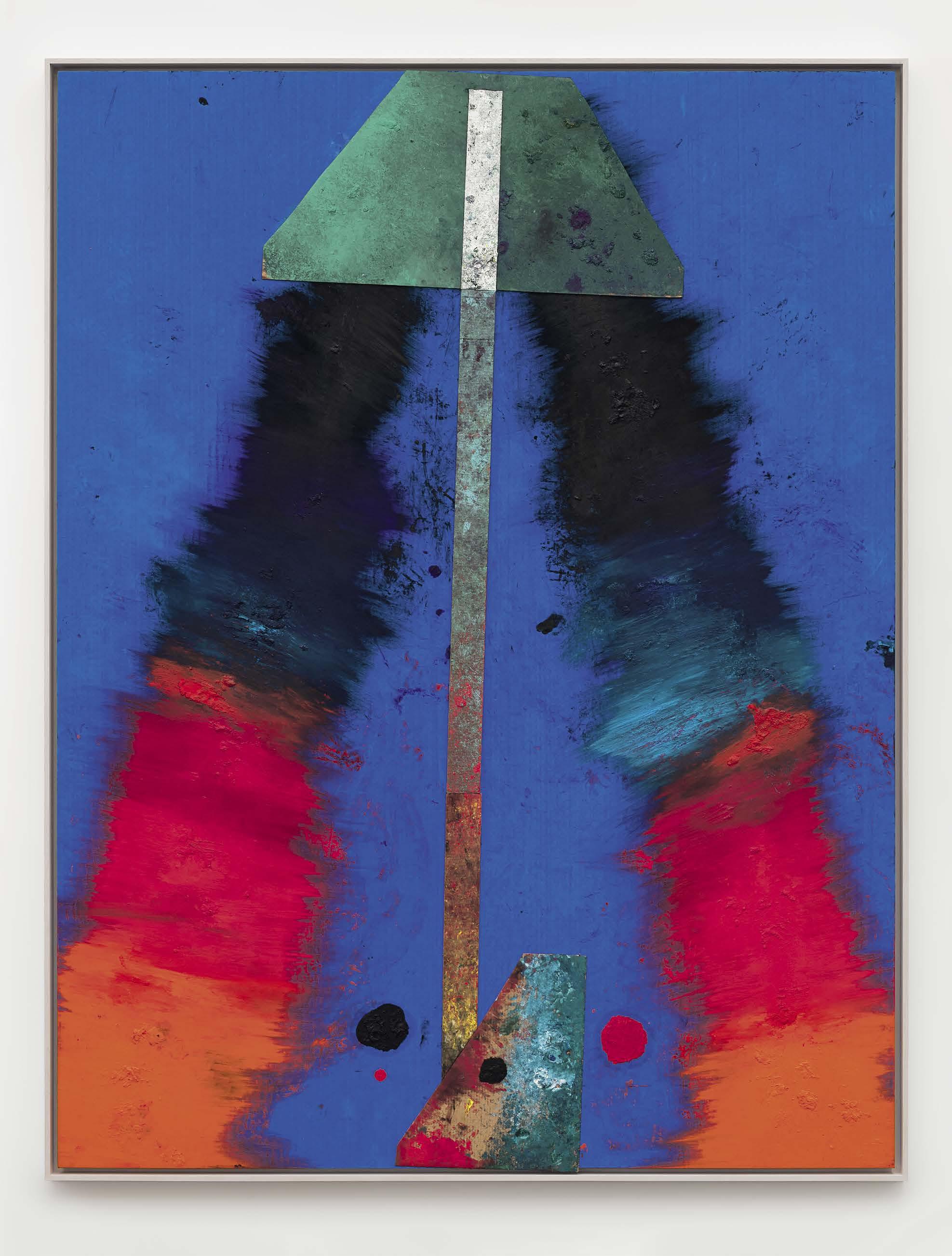
RECOVER, RECYCLE, WHIRL
Recover, adapt, repurpose, recycle, reuse, spin, whirl, twirl, swirl. The continuous, tumultuous, unsettled, irrepressible principle of the universe is to be in continuous transformation and constant disturbance. Sterling Ruby likewise collects, amasses, accumulates, throws together, then observes. His studio contains many piles of materials subdivided by type, a crazy collection of things and forms that have already experienced other places and spaces; in these abandoned structures Ruby finds something capable of rekindling the potential for energy, which otherwise at this point has vanished. He identifies something these things share, something to be prodded and extracted from the apparent inertia. It is a new phase of creation—a different phase, but still in line with the extraordinary vitality of Ruby’s work.
Ruby is a politically accountable artist, engaged in questions of racial and gender equality. Analysis of his collections of materials and scraps might allow one to trace a visual map, historical and universal, and to extract from it materials for a denunciation; and then to find the strength to reactivate the positive value of things through systems of heterogeneous realities, weavings of new relationships—all rather more complex than the auratic nature of an individual creation. All Ruby’s originality and tension focus within this two-faced-Janus vision, where past, present, and future coincide in a single glance and where past and future run along the same line of continuity. This simultaneous synchronism revives the conceptual resolve of the early avant-gardes, those inclinations that, in rift and rupture, identified a model for transforming forms and languages—for a metamorphosis of existence.
THE SPELL IS BROKEN
Si è rotto l’incanto (The spell is broken): during a recent visit to the house, in Rome, of the Futurist artist Giacomo Balla, which still shows traces of his protean activity, Ruby encountered this painting from 1920. Si è rotto l’incanto is made up of variations of a single color, a pink that intensifies until its tone swells into a strident bright fuchsia. In stratified planes marked by simple geometric forms, one glimpses black lines that modulate until they blur into a transparent gray, creating an illusory sense of three-dimensionality. They twist and turn in the space, wedge into it, harpoon it, then reassemble as if articulating a fleeting figure, or the wings of an imaginary pinwheel, springing the entire surface into action. In its simplified principles and metrics, Si è rotto l’incanto is highly modern, while at the same time, through the complexity of its composition, it is labyrinthine. Even more modern is its use of a color that, a century later, is charged with ecological significance: chromatic testament to the survival of the ecosystem. The most ancient colors in the geological

record, found in rocks deep in the Sahara, are pinks, the “molecular fossils of chlorophyll that were produced by ancient photosynthetic organisms inhabiting an ancient ocean that has long since vanished,” according to Nur Gueneli, a paleobiogeochemist at Australian National University. The Pantone shade 1775C is based on that pink, the company’s “color of biodiversity” for 2023. 1
A TIME TO EVERY PURPOSE
There is a time to every purpose, scripture tells us— but in current thought that time is no longer seen as fixed and universal. Instead, contemporary scientists see a dynamism between multiple times: the temporal structure of the universe does not coincide with individual perception and experience, yet we can intuit a sense of duration, a congruence between existence and what we perceive as the passage of time. With all our knowledge, increasingly sophisticated devices, and advanced scientific data, the nature of time remains mysterious, even today, and in that dimension of mystery it is intrinsically interwoven with the infinite other mysteries that accompany our existence—mysteries to which philosophers and scientists have sought answers for millennia, always returning, after fascinating hypotheses and endless approximations, to the original question.
That question transcends and traverses centuries, annulling times and generations to arrive at an incredible correspondence: the affinity between pre-Socratic philosophies of nature and the extraordinary modern discoveries around relativity. Between Anaximander, in the sixth century bc , and Albert Einstein, in the twentieth, we find a surprising temporal loop. Even when the only fragments and slivers remain of ancient hypotheses, even the aphorisms surviving are enigmatic, they are always fascinating. Anaximander, for example, wrote, “Things transform into each other according to necessity and
Previous spread: Sterling Ruby, TURBINE. DUTCH WIP., 2022 (detail), acrylic, oil, and cardboard on canvas, 126 × 96 inches (320 × 243.8 cm) © Sterling Ruby. Photo: Robert Wedemeyer
Opposite: Sterling Ruby, TURBINE. IRIDES., 2022, acrylic, oil, and cardboard on canvas, 126 × 96 inches (320 × 243.8 cm) © Sterling Ruby. Photo: Robert Wedemeyer
This page: Giacomo Balla, Si è rotto l’incanto (The spell is broken), 1920, oil on canvas, 42 × 30 inches (106.5 × 76.5 cm), © Giacomo Balla/Artists Rights Society (ARS), New York. Photo: Mondadori Portfolio/Art Resource, New York
do each other justice according to the order of time.” The calculation of time, then, is correlated with the transformation of things and events in sequences determined by necessity. Centuries later, Einstein measured the evolution of one time according to quantities correlated to others, denying the uniqueness of any single unit of measure. His theses were seductive at the beginning of the last century, when the science of the time was colliding with an ancient and obsolete past. But how can one help but react to surprising scientific revolutions in a world in transformation, imagining an art capable of representing the frenetic rhythm of the contemporary moment, and the elusive essence of its energy?
MIXING TIMELINES
“I’m mixing timelines.”2 Ruby draws a temporal parabola with an immeasurable range, a trajectory launched into the present but journeying back among innovative and radical signs and expressions until, ideally, it touches the deep heart of the universe. The encounter with Futurism occurs along these material coordinates, pantheistic and conceptual. The Futurists called themselves “primitives of a new sensibility”—a violent, impetuous assertion, apparently contradicting their idea of modernity. With the power of a primordial thought, the statement holds a strong creative tension, and the Futurists wanted to include the essence of that dynamism in painting. To recover that tension is to rekindle the full potential of a visionary impulse, suggesting a sensibility that reconnects and synthesizes every moment of history, making the weight of the past a legacy for the future, making inventories and repertoires the foundation for new inventions. “I had this idea that my work was operating between expression and repression, and I wanted my work to represent both. I saw my work as an intermediary between law and crime, old and new, future versus past. I wanted the work to be a balance of these things.”3 Looking back to move forward, uniting opposing forces by creating frictions between them without canceling their potency, maintaining the intensity of contrasts at the moment of their clash: Sterling reads these polarities as his own character traits. They highlight qualities of an artist engaged in weaving narratives of the present through the imaginary metaphors of art.
AVANT-GARDES
“I always looked at the Bauhaus as the most significant historical movement. I love Russian Constructivism. I love Vladimir Tatlin, I like El Lissitzky, Kazimir Malevich, Lyonel Feininger, Theo van Doesburg. They represent a nonhierarchy.”4 In the imaginary map that Ruby traces, references to artists and movements are references corresponding to his own consciousness. The places, times, and figures he chooses express moments, occasions, circumstances of independence, of freedom, of study. Constructivism: the projection of a social model of autonomy freed from the logic of power. The angular sculptures and pictorial reliefs of Vladimir Tatlin include his Monument to the Third International , of 1920—the same year as Balla’s Si è rotto l’incanto The structure makes a political proclamation as enveloping as the spiral on which it unfolds, in a continuous geometric succession—a “divine” or golden proportion that tends toward infinity. In the thirteenth century, the Italian mathematician Fibonacci translated exponential growth in nature into a mathematical formula that finds the same constant in shells, sunflowers, snowflakes, eddies, cyclones,
119
Ester Coen meditates on the dynamism of Sterling Ruby’s recent projects, tracing parallels between these works and the histories of Futurism, Constructivism, and the avant-garde.
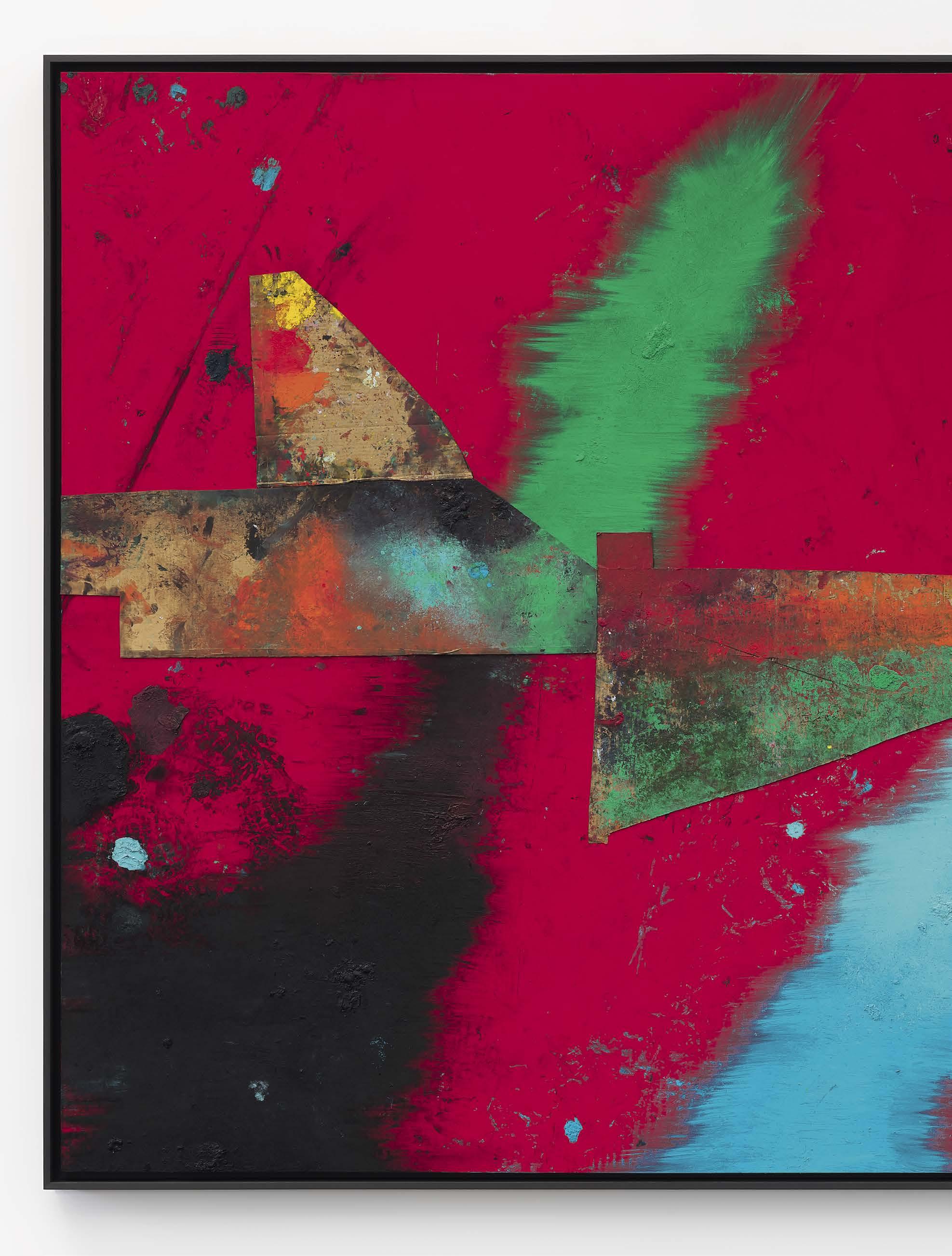
galaxies.5 Ruby too translates a constant in his new turbine series: “I wanted these paintings to feel turbulent, frenetic, and convulsive. I keep asking myself, how can I make something that inevitably reflects the charged time in which we live, to evoke a political tension, without being explicitly bound to that interpretation?”6 El Lissitzky’s collages, his Proun works, explore the limits of painting, expanding toward architecture in their complex constructions of axes and perspectives. But Ruby goes further: he stitches up the threads of that history in rotations of colors and elements whose frenetic beats evoke a disunited and tragic musical tempo, the zenith of a contemporary conflict.
LINES OF FORCE
“We stand on the last promontory of the centuries! . . . Why should we look back, when what we want is to break down the mysterious doors of the Impossible?
Time and Space died yesterday. We already live in the absolute, because we have created eternal, omnipresent speed.”7 Filippo Tommaso Marinetti’s explosive Futurist enunciation of 1909 came in the wake of astonishing scientific discoveries and in the spirit of a new time, the mechanical era that aimed to supplant the slow biological rhythms of nature. In reinterpreting twentieth-century artists and movements that have left a significant mark on art, Ruby chooses those that respond to his own experience and that offer, including from a formal perspective, a prod of momentum that can still stoke and trigger preserved energies. If the strong initial thrust is the power of identification, its suggestions pass through various levels of metamorphosis until they manifest in the traces of a thought, a motivation, an empathy, not as elements ripped from the past and translated into a modern lexicon but as shadows to pursue and revitalize. How, then, is it possible to freeze those images, at this point transmuted into the fluid fragility of malleable materials, the free spatiality of metallic reflections, the opaque translucence of salvaged and reassembled ceramics? How do we attach them to a place, a history, a time that is no longer linear and uniform if not through a frame, a series, a play of vectors and lines with strong directionality and visual impact?
ENTROPY
Initially, the paintings took their cues from my observations of tagging, vandalism and the power struggles associated with gang graffiti and visual strife but, as with a lot of my work recently, the paintings have become formal and abstract. I stopped thinking about them conceptually. I became hooked on the activity of painting. I think about the paintings in terms of space, depth, punctuation and color, which I suppose is similar to how artists have thought about paintings for centuries. I have become more comfortable with the idea that my context is already fixed, and to sit with something like a painting and to work through it only in terms of formalism is very liberating. I hole up in the painting studio and strip down the baggage.8
Ancient techniques, paradigms of the past, the search for a form—but a form is more than a relationship between materials. Ruby’s universe originates and grows out of textile artifacts, agricultural elements, scraps, bits of metal, and other recycled materials, and out of the multiplicity, the diversity, the analogy in which these things combine, for each cycle or series, in a sort of cyclopic cohesion. Their interaction creates a dynamic field, a correspondence of moving forces that encounter one another in the work and find an equilibrium there, up to the maximum degree of entropy. This is the famous dynamic field intuited with
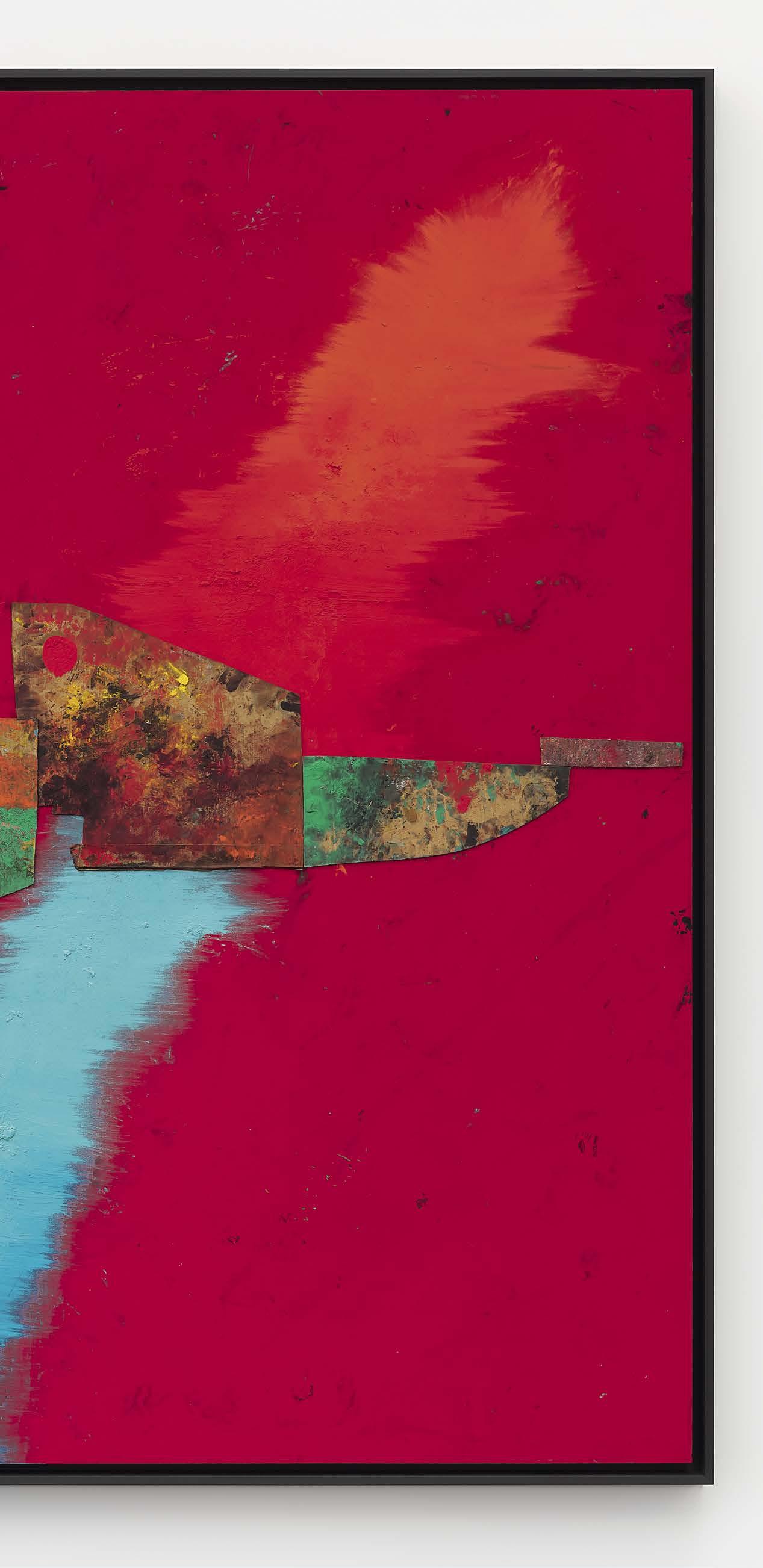
121
clairvoyance by the Futurists. Imagining a painting that, on the surface, reproduces a concept of pure abstraction, such as the dynamic essence of a body or of a machine in space; imagining the representation of a simultaneous action between an object and the environment: this is the Futurists’ true revolution. In a world in continual transformation, in the succession and interweaving of fleeting events, reality is no longer solely what it appears.
HEX/TURBINES
Entropy, concatenation, color, ecology, time, simultaneity, collage, assemblage, polymaterialism, lines of force, trajectory: a visual transposition of these terms coheres on the facade of the Palazzo Diedo, Venice, in the first act of a four-act project that Ruby is completing simultaneously with the restoration of the palazzo, the new headquarters of Berggruen Arts & Culture. A large-scale sculpture diagonally traverses five of the seven large windows on the top floor. A formal reference to the Futurist, Constructivist, and Suprematist avant-gardes is obvious here, as is the use of different materials and colors: the three primaries plus green, the complementary of red and the color resulting from the union of yellow and blue. The blades of what looks like the core of a piece of farm machinery are grafted onto an inclined supporting axis, forming a vector like the spine of a gigantic fish; toward the bottom, a yellow pennant counterbalances the large red disc oriented toward the sky. One can intuit the deep meaning of this installation in the stripping down of the image, powerful in the contrast of the two solid colors that pierce the unity of the facade. The work’s title, hex , falls between the explicit and the allusive, referring to the apotropaic talismans, propitious and auspicious, affixed to barns in the Pennsylvania Dutch community of Ruby’s childhood and adolescence. Hex signs are stars, often with sixteen points—an ambivalent number in its duality of the material and the spiritual. Both modes are inherent in Ruby’s thought, in a binary comparison where doubt drives every action and where the work assembles all antitheses within a superb complexity.

Like Balla’s Mercurio passa davanti al sole (Mercury passing before the sun, 1914), hex constructs an architecture of linear forces based on study of the universe of planets and constellations. It is as if the impulse to penetrate the secret of things were proportional to the search for the truth of creation: “The constellations have . . . a particular spirit that I find full of fascination and would like to express as best I can on the canvas. It is a difficult task, but there is too much poetry in the eternal passage of those worlds for an artist not to attempt it.”9 Just as Balla shifts the gaze from the elementary structures of vision to the principle of the dynamic universal form, Ruby, along the diagonal of hex , ignites abstract quantities of energy that spread out beyond the visual space. His response in four acts echoes the Futurist desire to reconstruct the universe into a reality that, now as then, shatters and fractures in a thousand directions.
It is also the prologue for the new series turbine . In these large-scale works on the wall, words enumerated above are articulated to an irregular and febrile beat, like a furious drumroll cutting across the bright space with the stridency of harsh and disharmonic colors. These alternate with quieter, apparently more intimate surfaces, such as a pink that brings to mind Si è rotto l’incanto. The term “synesthesia” must be added to all the others in the complex poetics of these paintings, whose unrestrained rhythm is accompanied by the roar of an internal clash—a
deafening noise conveyed through onomatopoeic lines and colors, recalling a thunderous line in one of the Futurist manifestos: “All the colors of velocity and joy, of revelry, of the most fantastic carnival, of fireworks . . . colors in motion felt in time and not in space.”10
Among the euphoric notes in this clash that Ruby ignites, there emerges the odor of fire, iron, rust, laceration, battle, threat. Diagonals sometimes broken by straight lines evoke imaginary horizons to cut the surface into distinct and opposing fields. They are sometimes reunited at the center by a vertical that, as in Rorschach inkblots, marks an inverted and mirrored dichotomy, activating visual and psychological stimuli beyond the dynamic thrust already set in motion. Lines of force, forms of force, are mostly oriented downward, discharging the electric tension of the inner forces built on these assemblages of oil and cardboard on canvas. In turbine gabapentin (2022), meanwhile, they head upward, to detonate, in an almost geometrical partition, the magmatic energy ascending from the bottom of the abyss. The paint flakes off at the lines’ edges, like the fraying of a vision clinging tight to those lines of force that define the fixed coordinates of a cosmos of which we perceive only a blurry, partial image. The meter sets a relative tempo, a perspective to be repositioned and revitalized by the spinning and whirling rhythm of the indelible traces of history and memory.
1. Nur Gueneli, a researcher at the ANU Research School of Earth Sciences, discovered the oldest pigment on Earth in the 1.1-billion-year-old marine sedimentary rocks of the Taoudeni basin in Mauritania. See Amy McKenna, “Ancient Chlorophyll Was Pretty in Pink,” National High Magnetic Field Laboratory, July 11, 2018. Available online at https://nationalmaglab.org/ news-events/news/ancient-chlorophyll-was-pretty-in-pink/ (accessed January 23, 2023). Pink is also generated by the action of bacteria on algae in high-salinity environments such as the waters of the Great Salt Lake, Utah, a site of great inspiration for Robert Smithson and for his studies of the logarithmic curves of primordial geological elements for his Spiral Jetty (1970).
2. Sterling Ruby, in Hili Perlson, “‘I Was Angry and I Sewed’: Sterling Ruby on How Growing Up in Small-Town America Drove Him to Make Art—and Break the Rules,” artnet news , April 29, 2022. Available online at https://news.artnet.com/art-world/ sterling-ruby-sprueth-magers-berlin-2104855 (accessed January 23, 2023).
3. Ruby, in “Sterling Ruby,” Alain Elkann Interviews , April 2, 2017. Available online at https://www.alainelkanninterviews. com/sterling-ruby/ (accessed January 23, 2023).
4. Ibid.
5. Leonardo of Pisa, known today as Fibonacci (c. 1170–c. 1242), devised the Fibonacci sequence, a series of whole numbers in which each number is the sum of the previous two. The result is a mathematical formula that tracks organic growth in nature. The formula had been codified as early as 200 bc by the Indian poet and mathematician Acharya Pingala.
6. Zoe Leung, “Sterling Ruby Presents Thought-Provoking ‘Turbines’ Paintings at Gagosian New York,” HypeArt , November 13, 2022. Available online at https://hypebeast.com/2022/11/ sterling-ruby-turbines-gagosian-new-york-exhibition (accessed January 23, 2023).
7. Filippo Tommaso Marinetti, “The Futurist Manifesto,” 1909. Available online at https://arthistoryproject.com/artists/ filippo-tommaso-marinetti/the-futurist-manifesto/ (accessed January 24, 2023).
8. Ruby, quoted in Jérôme Sans, “Schizophrenic Monuments,” L’Officiel Art , no. 5 (March–May 2013): 277.
9. Giacomo Balla, in L’Alfiere 2, no. 25 (January 24, 1911), in Balla, Scritti futuristi , ed. Giovanni Lista (Milan: Abscondita, 2010), 194.
10. Carlo D. Carrà, La pittura dei suoni, rumori e odori , manifesto, August 11, 1913. Available online at https://www.google.com/ books/edition/Lacerba/CYJFAQAAMAAJ?hl=en&gbpv=1&dq=tutti+i+colori+della+velocità+e+della+gioia,+della+baldoria,+del+carnevale+più+fantastico,+dei+fuochi+di+artifizio+(…)+colori+in+movimento+sentiti+nel+tempo+e+non+nello+spazio&pg=PA186&printsec=frontcover (accessed January 24, 2023).
122
Translated from Italian by Marguerite Shore.
Previous spread: Sterling Ruby, TURBINE. EXIT NEXT., 2022, acrylic, oil, and cardboard on canvas, 96 × 126 inches (243.8 × 320 cm) © Sterling Ruby. Photo: Robert Wedemeyer
This page: Sterling Ruby, HEX , 2022, installation view, Berggruen Arts & Culture, Venice © Sterling Ruby. Photo: Andrea Avezzù
Opposite: Sterling Ruby, TURBINE. GABAPENTIN., 2022, acrylic, oil, and cardboard on canvas, 126 × 96 inches (320 × 243.8 cm) © Sterling Ruby. Photo: Jeff McLane
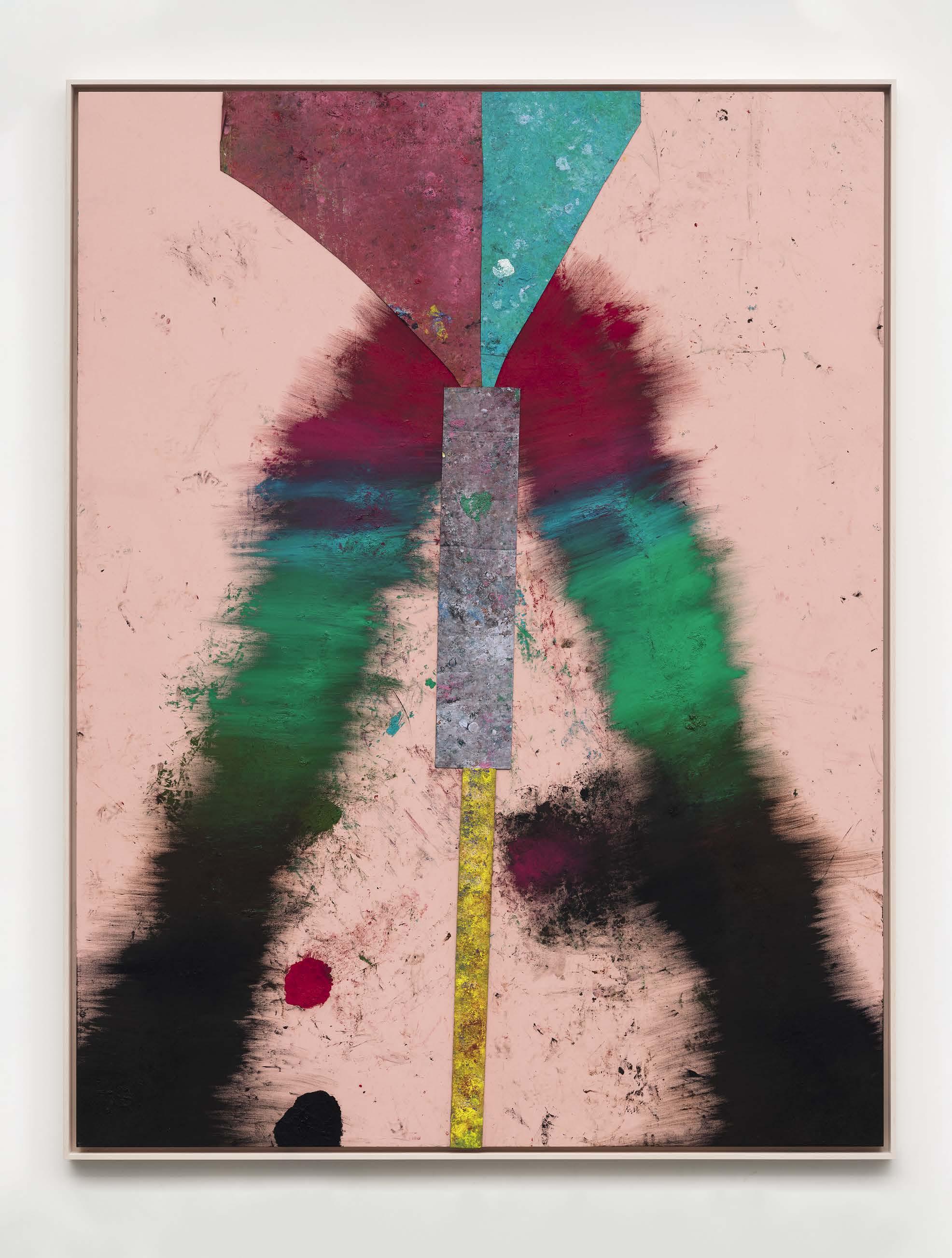
The Plac e You’ ve Ci rc le d the Globe to Find
Li ve on the world’s most pr ivate isla nd Estate-s ty le home s on Fisher Island ’s pr is ti ne shoreline, steps from the Spa Internaz ionale, racquet club, and aw ard-wi nning golf course. The Residences’ unprecedented amenit ie s and white-glove serv ic e set a new standa rd , wi th fi ve -star dining , re sort-s ty le po ol s, and a wa terf ront lounge . It ’s the pinnacle of coas ta l li vi ng , minutes from Mi ami bu t
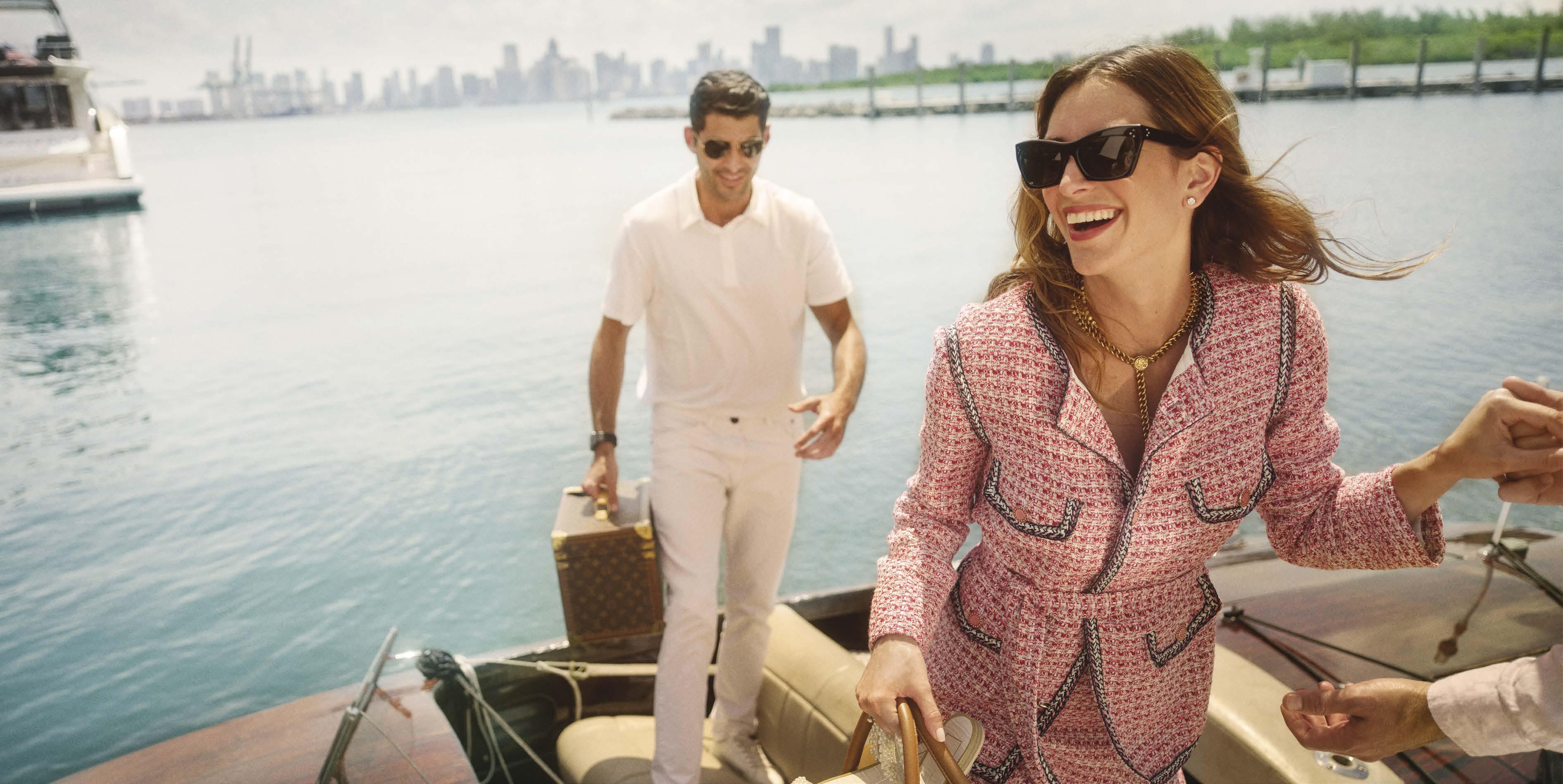
THREE– TO –E IGHT BE DR OO M RE SI DE NC ES FR OM 3, 80 0 – 15 ,5 70 SQ UA RE FE ET 6- FI SHER IS LA ND .C OM +1 (3 05) 42 3 75 50
a
aw ay OR AL R EPRESENTATIONS C ANNOT BE R ELIED UPON AS CO RRECT LY S TATING R EPRESENTATIONS O F TH E DE VELO PER. FOR CO RRECT R EPRESENTATIONS , MAKE R EFER EN CE TO THIS B RO CHUR E AN D TH E DO CU MENTS R EQ UIR ED BY SEC TIO N 7 18 .503, FLO RIDA S TATUTES TO B E FURNISH ED BY A D EV ELOPER TO A B UY ER O R L ESSEE. Six Fisher Island Condominium (th e “Condominium”) is marketed as Th e Resid ences Six Fisher Island an d is develo pe d by PRH Parcel 7 Ow ner LLC (“ Develo per”), which use s th e marks of The Related G ro up BH Grou p, a nd of Fisher Island unde r licens e ag re ements. The D eveloper s not incorporate d in, loc ated in, n or a resident of, N ew York. This is not intende d to b e an offer to sell, or s olicitation of an offer to bu y, a condominium u nit to resident s of N ew York o r to resident s of a ny other jurisdiction were prohibite d by law C onsult the P rospectus of Develo pe r to u nderstan d th e amenities, proposed b udget, terms, conditions, sp ecifications, fees, U nit dimensions site p lans, an d to lear n what is inclu de d with p urchase an d by p ay ment of reg ular c ondo minium a ssessments . 202 2 © PR H Parcel 7 O w ner, L LC , with all r ight s reser ve d.
world


126
Marc Newson, Extruded Tables, Gagosian, 2007 © Marc Newson
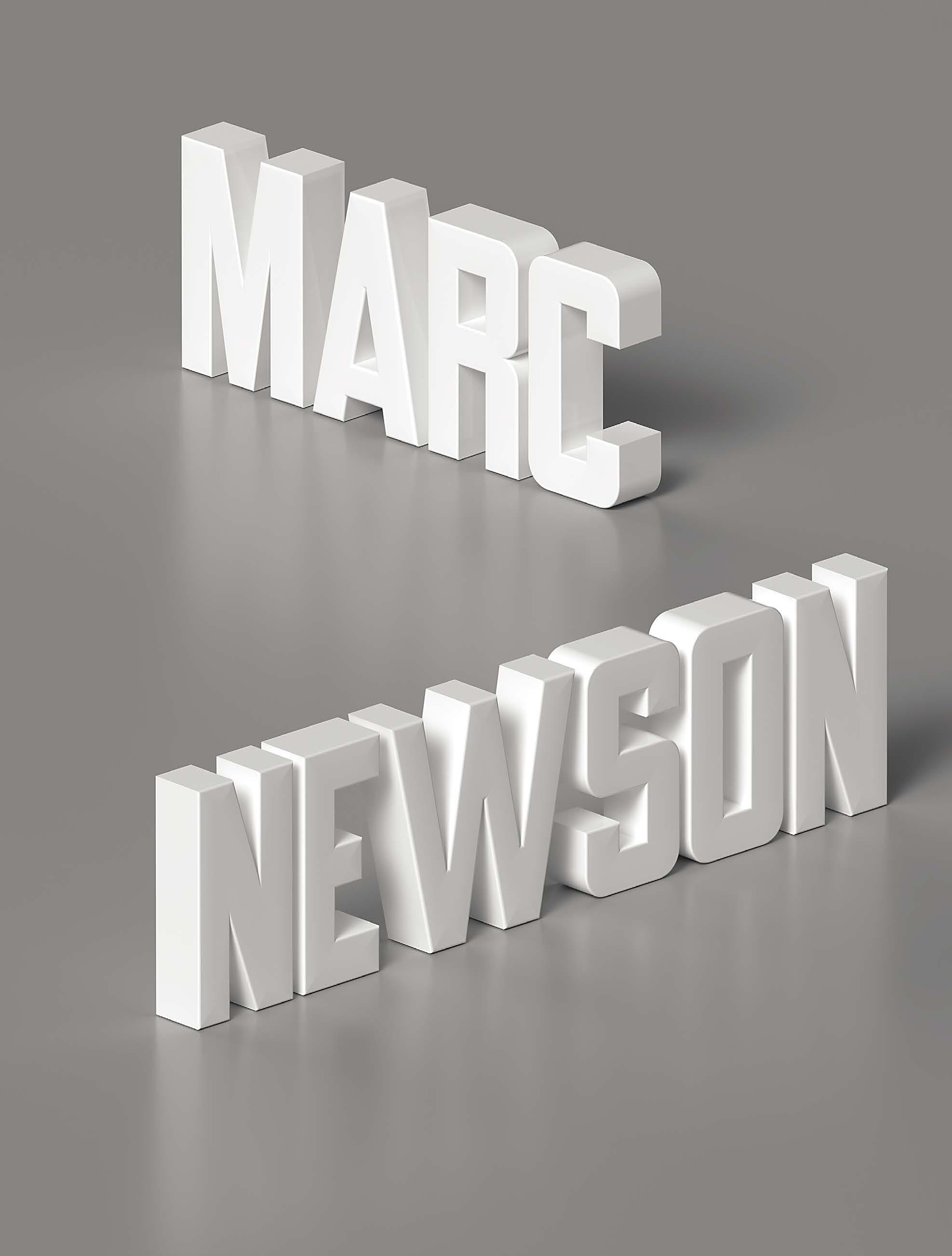

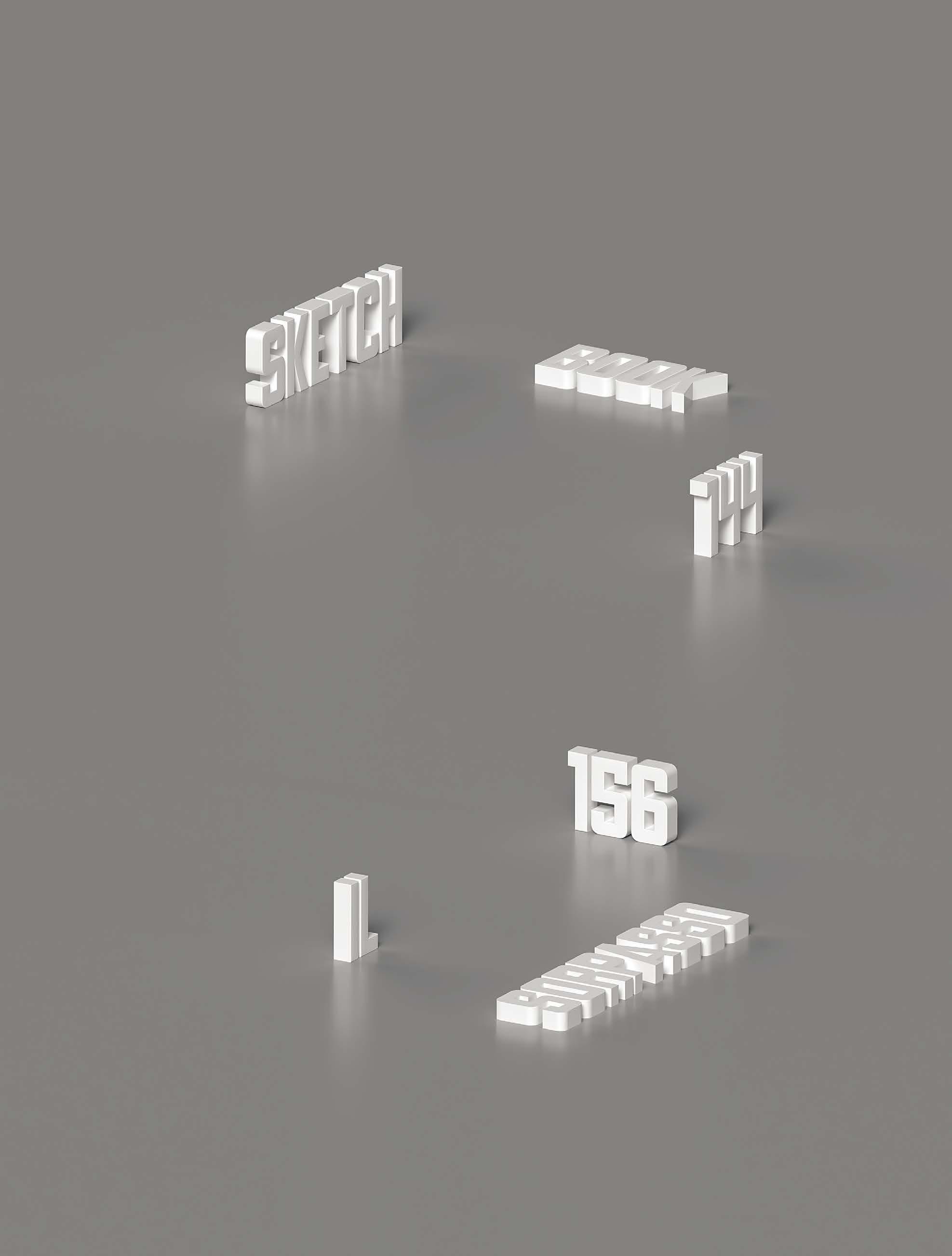
In Conversation: Ruth Rogers and Marc Newson

RUTH ROGERS: Marc, you’ve been enlisted to curate a selection of features for the Gagosian Quarterly. How did you go about selecting the stories you wanted to include?
MARC NEWSON: I wanted to keep a sense of levity throughout, avoiding anything terribly heavy-handed or academic. There’s no overarching thesis per se, it’s more a compendium of topics that I’ve been thinking about. For instance, I wanted to include a piece about my favorite film—
RR: Ever?
MN: Absolutely. It’s just so fantastic. The film is Il Sorpasso [1962], by Dino Risi. It stars a young Vittorio Gassman and Jean-Louis Trintignant.
RR: Oh, I love Vittorio Gassman.
MN: If you’ve not seen the film, you must. It’s one of the first road-trip films. Gassman plays this loose cannon—a real happy-go-lucky, carefree guy on the lookout for anything that might add some excitement to life. He drives a Lancia Aurelia convertible in the film, which I love. The film starts in Rome, with Gassman driving around the city, which is absolutely empty and sleepy. He’s just cruising around looking for something to do and he eventually sees a window open in an apartment. He starts throwing stones at the window and someone comes out, and it’s Jean-Louis Trintignant. He befriends this guy and somehow coaxes him out of the apartment, dragging him away on this road trip.
RR: When did you first see the film?
MN: A friend of mine was able to get me a copy of it a long time ago, but it was in the original Italian with no English subtitles. I think you can find it now with subtitles, but I’ve only ever seen it in Italian.
RR: I love that era in Italian film.
MN: Dino Risi was a wonderful director, but he’s not that well-known outside Italy.
RR: So what else are you doing with the magazine?
MN: I’ve asked my friend Alison Castle to write an essay about the history of concept cars done by artists, architects, and others coming to the automobile world from outside that industry.
RR: I know that you’ve designed a car in the past—the Ford 021C concept car [1999]—and am I right in thinking that you’re working on another one with Ferrari?
MN: Jony [Ive] and I are partnering up with Ferrari for a series of projects. It’s going to be a longterm collaboration, part of our work with the LoveFrom collective. I’m really excited to be working again with this quintessentially Italian brand, and given that they’re so successful and publicly traded now, it’s great that they’re still producing in Italy. I’ve been working in Italy for around thirty years now.
RR: Have you?
MN: Yeah, one of my first gigs outside of Australia was in Italy. I had some early successes there and started working with a lot of those Italian brands, like Cappellini and B&B Italia.
RR: Did you live there?
MN: Never. I lived in Paris at the time. I probably should have but I had personal reasons for living in France.
RR: Italy is a place that I don’t think I’ll ever tire of. It’s incredible how, for instance, just going to a farm, you go down these really rural roads, and it’s dusty and it’s rocky and it’s got fields and whatever, and then you park the car and you walk into the kitchen where they’re making parmesan, and it’s like rocket science! They could be making a nuclear weapon—they’ve all got hairnets on, they’ve all got white aprons, everything is so orderly. It speaks to a real respect for their production process. There’s a sense of pride that you would not get in so many other places.
MN: And there’s a kind of conservatism to it. It’s like Japan in that way. The two countries really share many qualities, culturally.
RR: There’s a bit of that in France as well. I’m thinking of Laguiole, the knife producers who make these incredible pieces in the same manner as when they started, in the nineteenth century.
MN: France is a really interesting example because they’ve done an amazing job at turning their savoir faire into a marketable product. They’ve been able to engage their past in a way that is now synonymous with luxury. It’s been parlayed into a meaningful, commercial, modern thing. Whether we agree about the definition of luxury—
RR: What do you think is luxury? I was asked that the other day.
MN: Me too. What’s luxury?
RR: I said, Going to a museum that’s closed [laughter].
MN: That’s such a great answer.
RR: That is the greatest luxury.
MN: Wow. I’ve been asked that question so many times and I always say something really boring, like “quality” or something. But to go back a little bit, that’s what I was trying to say about Ferrari: they’re one of those companies that have this savoir faire. They have their thing and their way, and they’re so intrinsically linked to Italy.
RR: In that context, it’s interesting and I imagine quite tricky to balance the dictates of the past, maintaining that control while also pursuing something in the future—an ambition that’s required for business.
130
MN: You’re absolutely right to point that out, and it does require an incredible amount of control. For many of these brands, like Ferrari, there’s this completely new metric based on no rather than yes. I can’t recall the exact number, but Ferrari has set a finite number of cars that they produce in a year, and they won’t do more.
RR: That reminds me of a conversation I was having with Wolfgang Puck. He came in here a few months ago and I said, “Wolfgang, I want to be like you. I want to have forty restaurants.” And he said, “Ruth, I want to be like you and have one” [laughter]. And both of us are wrong: I don’t need forty, but I don’t think he does want just one. He wouldn’t have had forty otherwise.
MN: The grass is sort of always greener—
RR: Yeah, you’re always thinking—
MN: But also, there’s a wonderful elegance in the control you’re able to have at this scale. Any expansion comes at a price. I’m an advocate of the one-restaurant philosophy. RR: I agree. I’d rather have the one. Somebody told me yesterday, if you go into the supermarket you can choose between twenty different types of apples or ten types of tomatoes or whatever, and people think that’s what luxury is, having choice. But in fact you’d rather have somebody select the best tomato, stock that one tomato and simplify life a bit, right?
MN: For us, definitely. I’m not sure everyone would agree, but you and I, in our respective fields, I think we strive for simplicity. Simplicity in its best form is incredibly elegant and incredibly sophisticated. And, as you know, incredibly difficult.
RR: And difficult. I was going to say the same thing.
MN: I work like a designer sometimes and I work like an artist at other times. And these are radically different ways of working—a designer has structure, rules, parameters, while an artist has virtually none of these limitations. Many people probably assume that working like an artist is easier because you don’t have a client, you can do what you want, whenever you want, however you want. But it’s the exact opposite.
RR: Structure and restraint go a long way.
MN: Yeah, when you work within a box, you start there and you end there, and you can’t go there and you can’t—I like that structure.
RR: Yes, that applies to the restaurant as well. Obviously for the ingredients there’s the restraint of seasonality, their availability, the size and versatility of the kitchen itself—all of these things matter on a day-to-day basis. It’s challenging, but also what makes it worthwhile. On top of that, there are the clients themselves, with everybody coming at once so you have to perform. It’s quite theatrical.
MN: It’s very difficult for people to understand that in a way, it’s more about what you can’t have than what you can have. That’s a much more considered place to start.
RR: We used to take our whole family to this hotel on this little island off the coast of Tanzania. We would go there for what we didn’t get. You didn’t get music, you didn’t get Wi-Fi, you didn’t get tennis courts, you didn’t get nightlife—essentially, all you could do was walk the perimeter of the island. And taking those walks remains such a fond memory. I agree completely about the elegance of what you can’t have.
MN: It’s a healthy discipline to embrace, if you can.
131
You and I, in our respective fields, I think we strive for simplicity.
Simplicity in its best form is incredibly elegant and incredibly sophisticated. And, as you know, incredibly difficult.
—Marc Newson
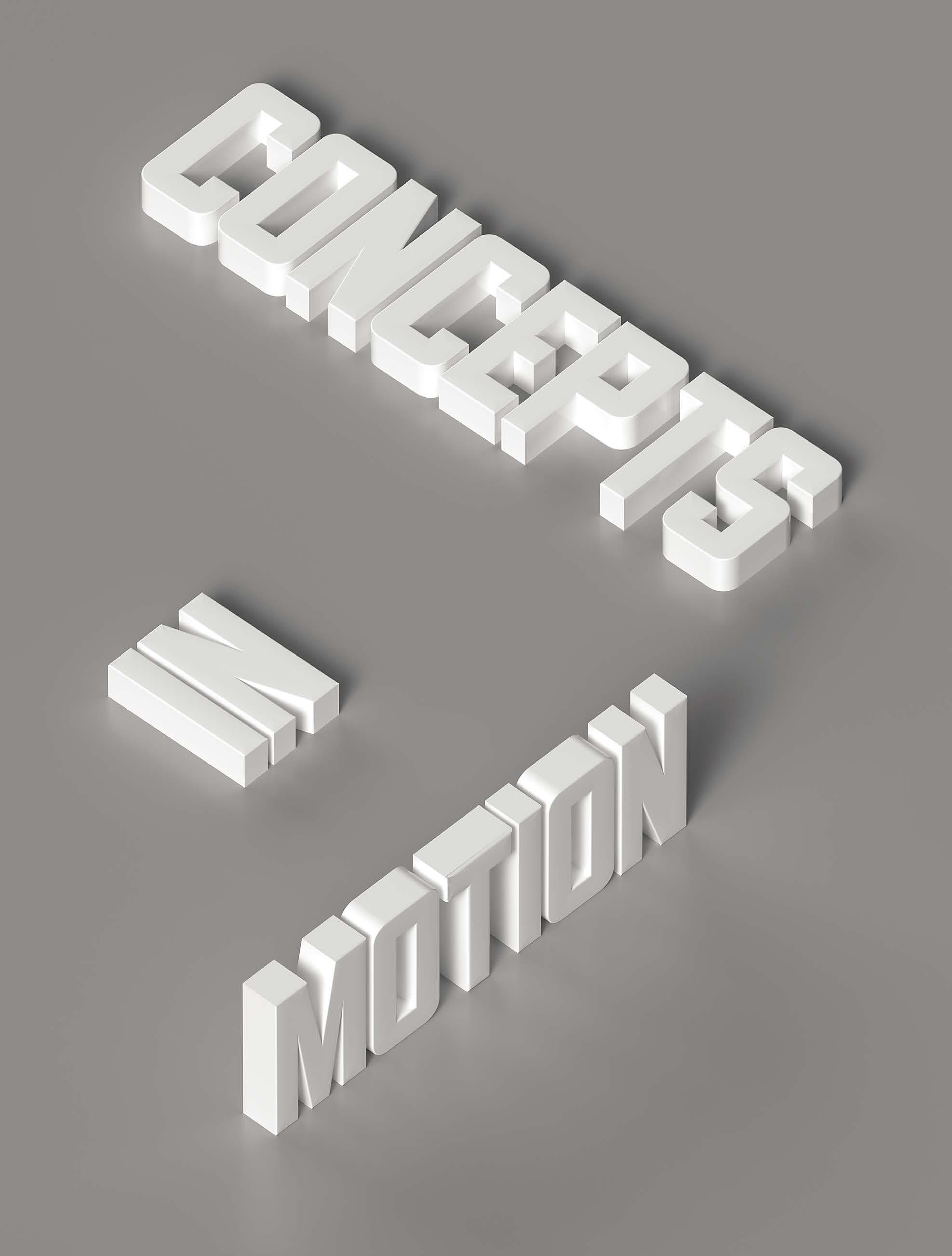
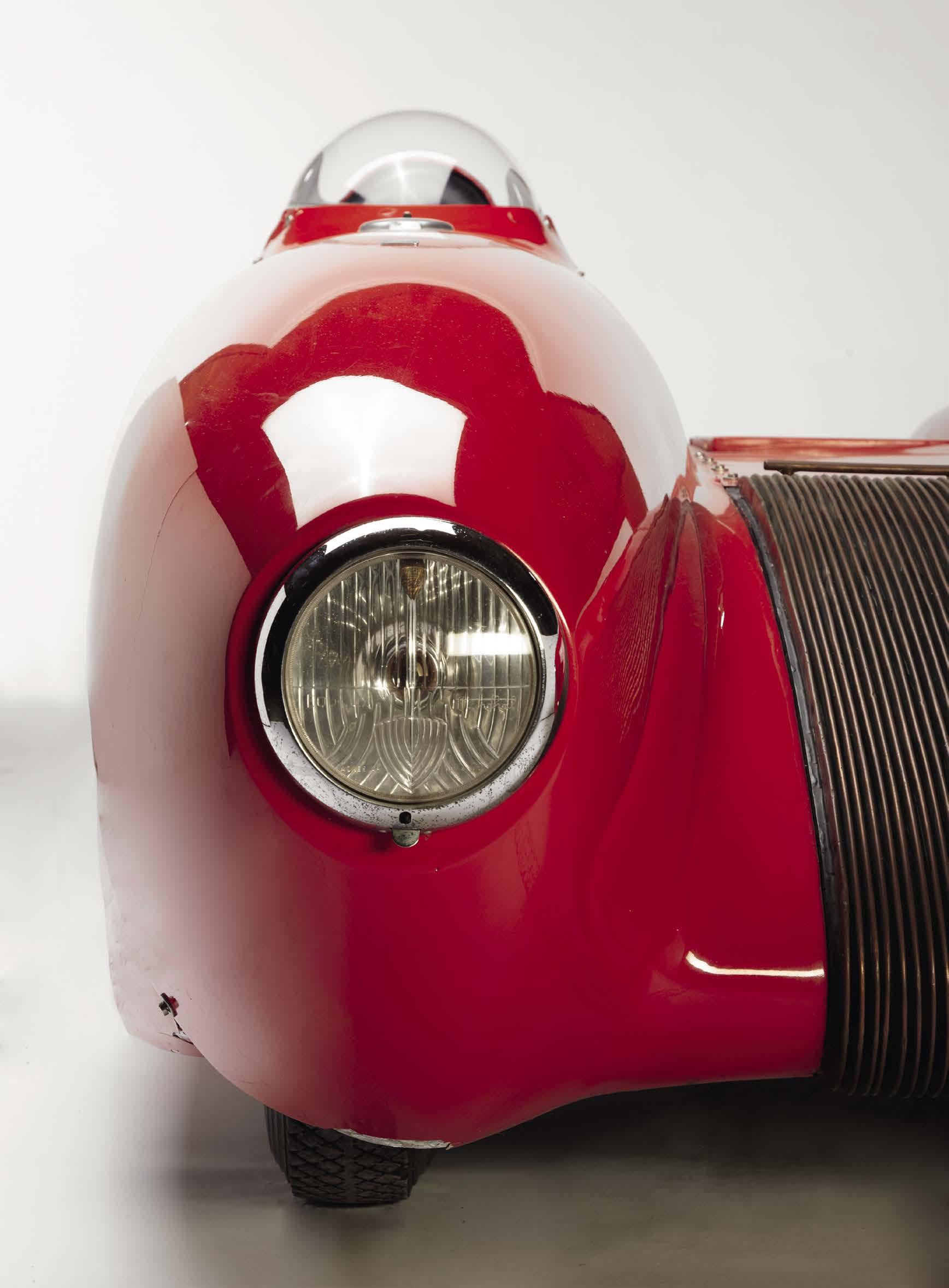
133
A layperson developing an interest in classic cars quickly discovers that the more one learns, the less one knows. Car culture is an insular world that, while by no means closed to outsiders, can seem impenetrable to anyone who might wonder, say, how it is that a four-cylinder can be more powerful than a V8. If that poor soul doesn’t already understand how combustion engines work and what turbocharging means, the answer will quickly devolve into nonsense. By and large, car people have spent their lives absorbing everything there is to know about cars, and in an advanced connoisseur this knowledge spans history, science, engineering, restoration, design, and aesthetics and includes an encyclopedic knowledge of car models, brands, coach builders, and designers. It seems like a lot because it is. You just have to dive in.
The point of entry can be anything as long as it draws you in. For art lovers, I suggest an exploration of some of the exceptional cars that were designed by people not working in the automotive industry: artists, industrial designers, architects—people known in other fields, or even self-taught. This is a very small niche in the car world but a fascinating one, and a perfect area of study for amateurs in the creative sphere. Indeed, the crossover between cars and art has more famously been the other way around: artists making art from actual cars. Two of the most famous examples are César Baldaccini and John Chamberlain, who worked extensively with car bodies. Gabriel Orozco, Erwin Wurm, and Maurizio Cattelan have made notable use of cars. (In 2000, Cattelan, who has said he “always wanted to create a rhetorical car,” wrapped the body of an Audi sedan around a tree trunk as if the tree had sprouted right up through it.) Less known but no less impressive examples include Ichwan Noor’s VW Beetles compressed into perfect spheres and cubes, a series begun in 2011, and Marcus Bowcott’s Trans Am Totem, a public installation in Vancouver (2015). The artist and filmmaker

Matthew Barney has featured classic cars, and sculptures made from them, in many of his films. Ant Farm’s Cadillac Ranch in Amarillo, Texas (1974), features ten graffiti-tagged Cadillacs half buried in the ground, lined up like headstones or monoliths. And the list goes on.
In a more liminal space hovering between the art and the car worlds are numerous examples of commercial cars painted by artists. Over the span of her career, the French artist and textile designer Sonia Delaunay painted several cars, including a 1924 Bugatti Type 35 and a 1925 Citroën, with adaptations of her textile designs. In the mid-1960s, Judy Chicago, in the wake of her husband’s death in a car crash, enrolled in auto-body school and created a remarkable series of painted car hoods. Since 1975, BMW has commissioned oneof-a-kind cars by artists including Alexander Calder, David Hockney, Jenny Holzer, Roy Lichtenstein, and Andy Warhol, but aside from the ice cocoon that Olafur Eliasson created for the BMW H2R in 2007, the artists’ interventions were limited to painting the bodies. Ironically, some of these unique works of auto art are valued at a fraction of what the artists’ work draws at auction. Car collectors tend to be interested in a car’s provenance, restoration quality, and racing history, while many art collectors habitually invest in pieces that can be displayed on a wall or a pedestal; artist-painted production cars exist in a kind of no-man’sland.
Perhaps most fascinating, though, is a third category, where automobiles collide with art and design right on the drawing board—in the hands of industry outsiders. Take, for example, the Phantom Corsair and the Norman Timbs Special, both superb examples of what self-taught amateurs can achieve. The former, created in 1938 by Rust Heinz (grandson of ketchup magnate H. J. Heinz), is a lavish riot of Art Deco drama that really cannot be described in words. I’m tempted to say it looks like a cartoon robot shark on wheels with a
134
Alison Castle reports on concept cars created by visionaries—architects, artists, amateurs— from outside the field of automotive design.
hippopotamus’s snout, but that doesn’t begin to do the job. The car’s swooping lines and fanciful detailing are really quite stunning. Devoid of running boards, with flush fenders, fully skirted wheels, a split front windscreen, and hidden buttons rather than door handles, the Phantom Corsair was not just ahead of its time but outside of time altogether. It also had a 190-horsepower V8 engine, automatic transmission, and advanced suspension, and despite weighing 4,600 pounds, it could reach speeds of well over 100 miles per hour. Considering that Heinz had no experience in design or business, his achievement is quite incomparable—though it likely wouldn’t have been possible without Heinz money. His plans to put the car into production, and the promise of a bright future in automotive design, ended with his death in a car crash in 1939.
The legendary French-American designer Raymond Loewy was a quintessential polymath, designing buildings, logos, Coca-Cola bottles and vending machines, locomotives, refrigerators, nasa spacecraft interiors, aircraft livery, furniture, textiles, wallpaper, watches . . . the list is ridiculous. Loewy called his design philosophy “maya”: “most advanced yet acceptable.” He had a keen instinct for the ideal balance of the familiar and the innovative, introducing accessible and realistic yet future-forward designs. During his career, he designed several cars, the most interesting of them surely the BMW 507 Custom Build of 1957. Described as “a competition sports car with Gran Turismo characteristics,” his prototype was built on the chassis of the 507 but otherwise bore no resemblance to the original, designed by Count Albrecht von Goertz. Here Loewy achieved a rare synthesis of futurism and familiarity, with novel features such as rectangular headlights, a honeycomb grille, and a swooping oval rear window. From behind, the car looks rather like a personal spaceship, but viewed from the side it looks reassuringly like a sports coupe. Loewy’s 507 wasn’t intended for production and remained a unique piece, but its influence can be seen on the Avanti that he designed for Studebaker in the early 1960s.
The Bisiluro Damolnar was a race car designed in 1955 by Carlo Mollino in collaboration with Mario Damonte and Enrico Nardi. Though best known as an architect and to a lesser
extent as a furniture designer and photographer, Mollino was a true Renaissance man whose interests were remarkably catholic. His Bisiluro (Italian for “twin torpedoes”) sports a single seat, an asymmetrical form, a left-mounted engine, and an exposed frontal radiator. Some deem it a masterpiece, others the weirdest car to have raced Le Mans. It was aerodynamic, fast, and exceptionally lightweight—so much so that when it raced in the 1955 24 Hours of Le Mans, it was literally blown off the track and severely damaged as a result. It has since been restored to its original resplendent glory and now, fittingly, resides in a Milan science museum named after Leonardo da Vinci.
In fact, a number of prominent architects have tried their hands at designing cars, although in many cases these projects began and ended at the drawing board. In 1920, Frank Lloyd Wright sketched out the Cantilever Car, which shared with many of his building designs a suspended roof projected from a central pillar, which allowed for the windows to wrap around the cabin uninterrupted by posts. Adolf Loos’s inspired but somewhat clunky contribution, which he modeled for Lancia in 1923, had a third row of seating elevated above the first two rows, with its own little windshield for unobstructed views. Walter Gropius’s attempts for Adler in 1929 gained more attention than those of Loos, but they were most notable for prioritizing elegance-enhancing superficial features over aerodynamics. Even Jean Prouvé threw his hat into the ring, but alas, little is known about his concept aside from rudimentary sketches.
More interesting yet is Gio Ponti’s 1952 foray into automobile design. Intended for an Alfa Romeo 1900 chassis, his Linea Diamante bears absolutely no resemblance to an Alfa, or to any other mid-century car full stop. Ponti’s aim was to concoct an antidote to the swollen, curvaceous, small-windowed cars that were ubiquitous at the time. The Diamante is an unbearably endearing little fellow, and well ahead of its time, too. With its flat-paneled body, low hood, big square and triangular windows, and generous hatchbackstyle trunk, it foreshadowed the boxy compact cars that would come along in the 1970s and ’80s. The white line that encircles the car isn’t just for decoration: it’s a rubber bumper to help prevent dings from any angle. Ponti sought

135
to have the car produced, but both Carrozzeria Touring and fiat turned him down, dashing his hopes to see the Diamante come to life. Sixty-five years later, fiat made a conciliatory gesture by collaborating on the creation of a 1:1 model with Domus, the architecture and design journal that Ponti founded, on the occasion of its ninetieth anniversary.

Of R. Buckminster Fuller’s many talents, architecture is probably the one for which he is most renowned, particularly thanks to his popularization of the geodesic dome. Fuller was also a great thinker, futurist, and inventor who developed a series of projects under the name “Dymaxion,” a portmanteau of the words “dynamic,” “maximum,” and “tension,” collectively referring to his goal of “maximum gain of advantage from minimal energy input.” First came a prefab house, then, in the early-to-mid-1930s, a car. Fuller’s Dymaxion work continued to evolve for decades, embracing the ambition to “make the world work, for 100% of humanity, in the shortest possible time, through spontaneous cooperation, without ecological offense or the disadvantage of anyone.” Irrespective of form or field, his projects always began with a question, and that question usually related to how humanity could best be served and advanced by an invention. True to this principle, the Dymaxion car was both democratic and progressive: it would carry eleven passengers and was intended to eventually be upgradable, thanks to its aerodynamic teardrop shape, into a flying machine by the addition of wings. With two wheels in the front and a third in the rear that steered the car, the Dymaxion could turn on a dime; Fuller imagined that once capable of flying, the car could easily extract itself from a traffic jam, take off like a bird, and sidle back onto the road at a more convenient location. Three prototypes were made, but physics and reality were the enemies of this ambitious project: the Dymaxion was dangerously unstable on its three wheels, and flying cars were, and remain, a strictly quixotic proposition.
Renzo Piano’s VSS modular concept car, commissioned by fiat in 1978, reimagined automobile construction from the ground up, with the main part of the chassis consisting of a load-bearing internal frame and interchangeable front and rear elements. The exterior panels, made of plastic,
were all hung from the central chassis, allowing the same base elements to be made into an exceptionally lightweight and compact sedan, hatchback, station wagon, etc. Piano’s project, made in collaboration with I.DE.A Institute, was innovative on an efficient, economic level; it was a “concept” car in the literal sense of the term, exploring how engineering could be optimized for a utilitarian car, but above all it was genuinely conceived to be producible. A working prototype was made and tested, but although fiat didn’t end up putting the VSS into production, the concept’s hatchback version came to life in the form of the Tipo, released in 1988.
Where Piano’s fiat envisioned itself as a way to revolutionize how cars are manufactured, Marc Newson’s Ford 021C, of 1999, was an exercise in imagining how a car could profoundly elevate the user experience. A polymath in the tradition of Loewy, Newson has designed everything from a fountain pen to an airplane, with an abundance of furniture and product designs in between. When he was hired by Ford design director J Mays to create a concept car, he mostly got free reign, thanks in part to the project being kept largely out of view from executives who might not have understood its value. Newson created a full-scale clay model from computer models based on drawings, and the final working prototype was built in the legendary Carrozzeria Ghia in Turin. The car’s minimal, symmetrical form belies its innovative features, such as swivel seats, rear-hinged doors that open to a surprisingly spacious, completely pillarless interior, optical-fiber ceiling lighting, a height-adjustable dashboard, simple aluminum touch buttons for door handles, and a trunk that opens like a drawer. The analog controls recall Newson’s Ikepod watches, and indeed every detail of the car has a signature Newson touch (he even designed the custom gunmetal-colored Pirelli tires, whose treads match the pattern of the ceiling and carpet). By starting with an empty cabin and inserting only necessary elements reduced to their simplest forms, Newson created a car designed to give its passengers comfort, ease, space, and nothing superfluous. It’s a great shame that the 021C was never put into production, but such is the fate of car concepts that dare to truly rethink how a car should be.
136
Opening spread: Bisiluro Damolnar, 1955, designed by Carlo Mollino in collaboration with Mario Damonte and Enrico Nardi.
Photo: De Agostini/DEA/MUST/ Getty Images
Previous spread, left: Voiture Minimum, 1936, rendering based on design by Le Corbusier.

Photo: Antonio Amado
Previous spread, right: Linea Diamante, 1952, rendering based on design by Gio Ponti.
Photo: Domus, Italy
Opposite: Z-102 Cúpula, 1952, designed by Pegaso and committee of students from Spain.

Photo: courtesy Louwman Museum, the Hague, Netherlands
This page, above: Quasar-Unipower, 1967, designed by Quasar Khanh. Photo: Reg Lancaster/Express/ Hulton Archive/Getty Images
This page, below: Ford 021C Concept Car, 1999, designed by Marc Newson for Ford Motor Co. Photo: courtesy Ford Motor Company
Speaking of rethinking, the Spanish automaker Pegaso reasoned well outside the box with its Z-102 Cúpola of 1952. Though primarily a manufacturer of trucks and buses, Pegaso made some limited-production sports cars in the 1950s, and for the Cúpola it tried something truly inspired: the company asked Spanish students to submit their ideas for what the sports car of the future might look like and then brought to life what was essentially a crowdsourced car. The students clearly had rockets and flying saucers on their minds, but rather than a mash-up or a pastiche, the Cupola is an absolute breathtaker. Against all odds, the curvaceous yellow body, red-walled tires, shiny, perforated side exhausts, straight-skirted fenders, top-hinged windows, and boxy, bulbous rear windscreen come together in a kind of beautifully coherent alchemy.
Examples of imaginative cars such as these, designed by automotive outsiders, are far fewer than one would think or hope. It makes perfect sense to cast a wide net to find new ideas, but the car industry is not daring. In the project description for the VSS, Piano writes, “Why entrust this task to an architect . . . rather than one of the many successful automotive engineers fiat could count on? Probably the choice was motivated by the belief that to get real innovation you had to draw on external resources, free from the technical constraints and production limitations affecting every car.” Indeed, outsiders have created some of the most interesting car concepts in automobile history, ranging from the feasible (like many of the above), to the handmade work of art (see Serge Mouille’s retro-futuristic Panhard Le Zebre of 1953), to the outlandish (the 1967 Quasar-Unipower, by designer and engineer Quasar Khanh, is a fantastic example of an uncarlike vehicle that is still, somehow, a car). But pushing them through to production is another matter entirely. Car companies are profit driven and risk averse, which makes them poor purveyors of anything but incremental, market-tested innovation. Features cherrypicked from concept cars do get introduced, of course, and the public’s fascination with concept cars isn’t lost on automakers. But it takes a different kind of thinking entirely to imagine that a car could have its very own identity, envisioned by its creator just like a work of art.
137
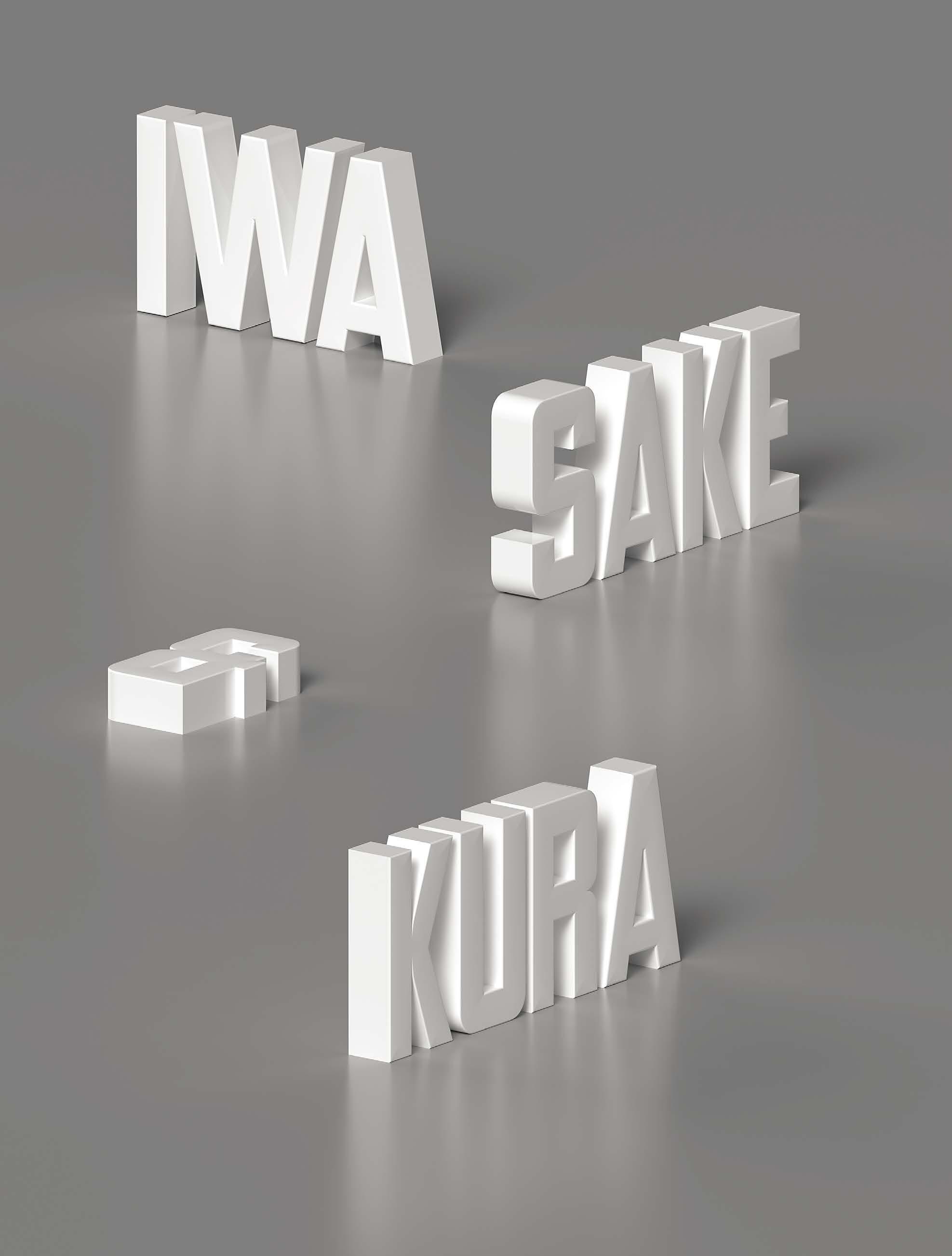

139

140
Richard Geoffroy and I bonded over our admiration of Japanese culture, particularly the high value placed on skill and craft, and the obsession with minute detail. The process behind IWA exemplifies Richard’s unique approach: from the bottle to the brewery, he places a similarly high value on design.

The parameters were fairly defined in terms of the functionality of the bottle: we wanted it to look like a bottle and have a recognizable silhouette, and be subtle and sophisticated. We were more playing with materials and finishes to achieve a subtle elegance.
 —Marc Newson
—Marc Newson
141
Previous spread: the brewing process at IWA Sake, Shiraiwa kura, Japan, 2021. Photo: Nao Tsuda, courtesy IWA Sake This spread: IWA Sake bottle and glassware, designed by Marc Newson, 2020. Photos: Jonas Marguet
We considered history within the context of local culture. The roof directly references the traditional houses of the Gokayama region. Historically, the people and the koji yeast live together under one roof.
 —Kengo Kuma
—Kengo Kuma

I always had a fascination for Kengo Kuma’s contribution to reviving the Japan-ness of Japan’s architecture: deeply and proudly rooted yet reaching out to the world. His philosophy has been a source of personal inspiration in creating IWA. In actual fact Kengo’s collaboration with IWA is beyond architecture; I am grateful he keeps guiding me through the arcanes of the cultures of Japan.
— Richard Geoffroy
142
This spread: IWA Sake’s Shiraiwa kura, Japan, designed by Kengo Kuma, 2021. Photo: Nao Tsuda, courtesy IWA Sake

143
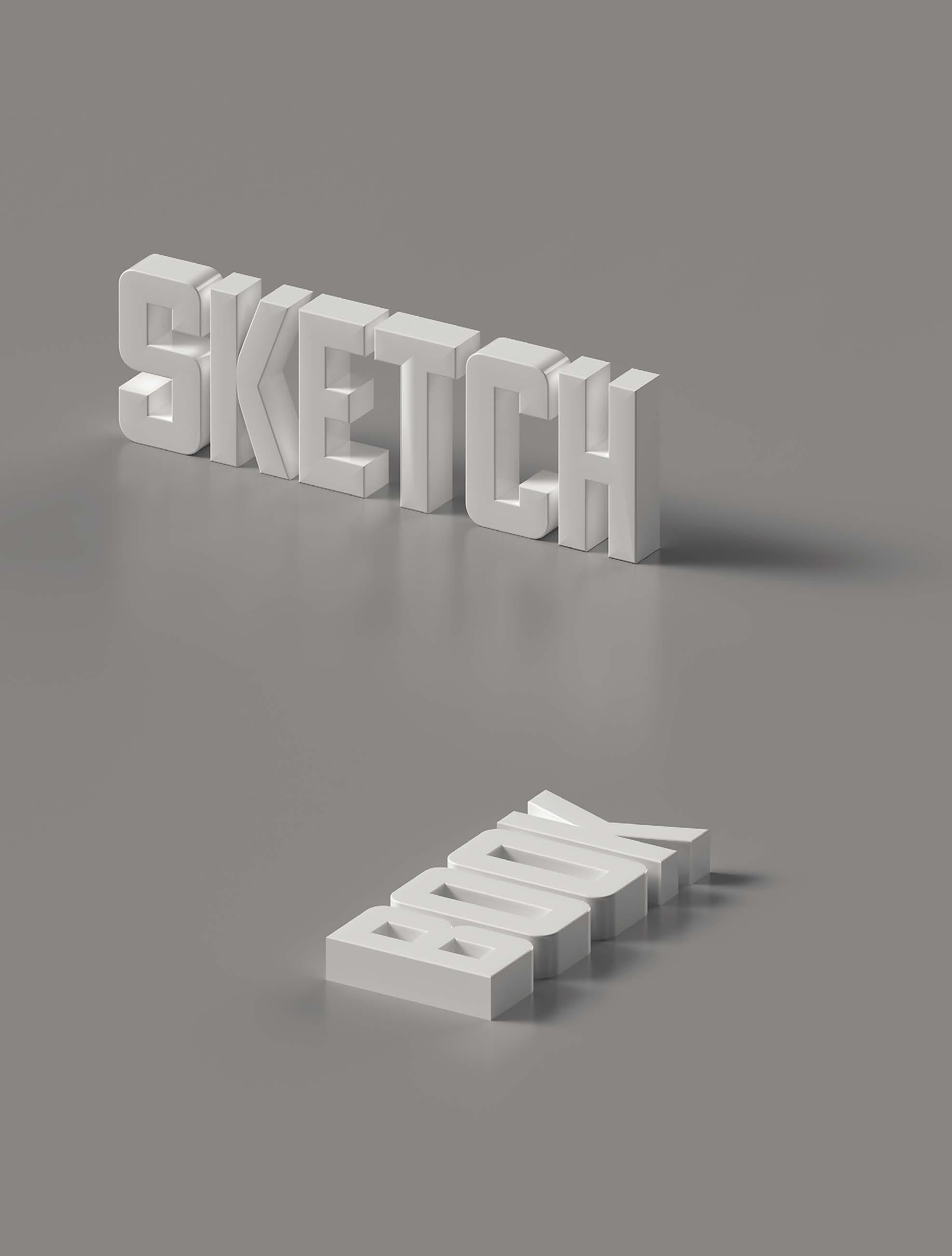

145
Marc Newson, Aquariva, Riva, and Gagosian Gallery, 2010 © Marc Newson

146
This spread: Marc Newson, Bicycles, Biomega, 1998–99 © Marc Newson

147

148
This spread: Marc Newson, Kelvin40 Concept Plane, Fondation Cartier pour l’art contemporain, 2003 © Marc Newson

149

150
Marc Newson, Zvezdochka Sneakers, Nike, 2000 © Marc Newson

151

152
Marc Newson, Embryo Chair, 1988 © Marc Newson

153
Marc Newson, Wood Chair, 1987 © Marc Newson

154
Marc Newson, Strelka Cutlery, Alessi, 2001 © Marc Newson

155
Marc Newson, Kitchen Appliances, Smeg, 2008 © Marc Newson
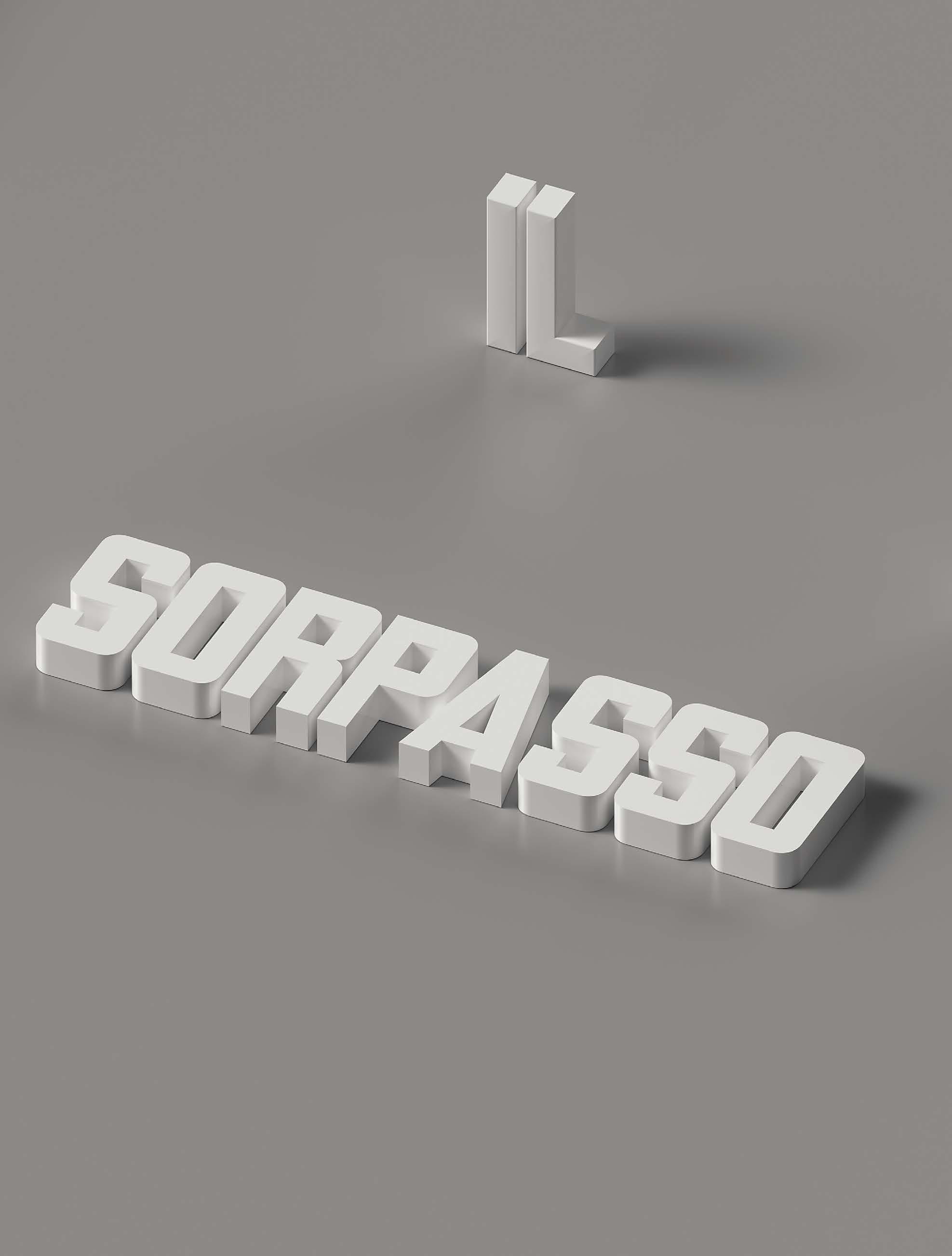

157


158
What makes Dino Risi’s 1962 Italian road comedy Il Sorpasso such a lean, dexterous, lovely, and ultimately sad work? It’s not quite the heresy it may sound like to the Sorpasso fan (and I’d consider myself one) to say that the film is low on big laughs. Compared to the extended gags and guffawinducing situations that pile up in Pietro Germi’s Divorce Italian Style (1961) and Seduced and Abandoned (1964), or in Mario Monicelli’s Big Deal on Madonna Street (1958), the comedy in Il Sorpasso is played at a far more muted level. I find it helps to approach the film more in the vein of a Jacques Tati comedy: don’t expect outsized reactions. If they come, they come. Stay for the steady, clockwork development of character and see what happens to your body when, having gone along with a plot for as long as it can be pushed, you find yourself wondering, Well, what next? And then everything crashes down, one of the greatest 180-degree twists in cinema history unfolds, and you’re beside yourself in sudden emotion, a total shift in perspective in what you only took for a charming road jaunt.
An impulsive, swaggering drifter, Bruno (Vittorio Gassman), convinces a meek, shy law student, Roberto (JeanLouis Trintignant), to leave his books behind and set out, the two of them, on a spontaneous road trip across Italy. Most of the film involves the gradual melting of Roberto’s defenses as he comes to embrace what Bruno (for better and especially for worse) represents: “the easy life”— obligations later, live now.

It is a 105-minute film. For 104 minutes it feels like a meandering short story. Then the final minute happens and everything brutally snaps into place. It’s strange how a movie can take on such crisp shape with such a seemingly arbitrary finale, which yet, on reflection, makes the entire venture make perfect sense: Obviously this is the only logical way out. This is what happens when you play with fire, when you live life nihilistically and without aim, just go go go. Everything must stop eventually. It’s physics.
Bruno acts as the most incorrigible Don Juan to pretty women while saving his strutting alpha-male bit for threatened men who are just as cocksure as he is but lack his particular fluidity-of-gesture or solidityof-build. Meanwhile Roberto’s just along for the ride, observing Bruno overtake cars with obnoxious flourish in his Lancia Aurelia convertible while honking madly on its unforgettable Woody Woodpecker–like horn. Roberto sees that people take to Bruno with a swiftness that he, a lowly grad student, envies. After all, isn’t there something wickedly admirable in a man who, to avoid getting a parking ticket for his obviously illegally parked car (which he can easily move), takes the parking ticket off another car illegally parked nearby and puts it on his? It’s the audacity of the action, the brazenness, the seductive effrontery to basic moral codes. But Bruno’s illusion unravels: turns out he’s not a thirty-something swinger but a middle-aged near-has-been who’s been married, and glumly, since he was twenty to a quick teenage fling (Luciana Angiolillo) whom he impregnated. This resulted in a daughter (Catherine Spaak) who, now eighteen, is romancing a middle-aged tycoon despised by Bruno for class and age-gap reasons.
Gassman’s vibrant performance as Bruno was stamped into the Italian consciousness, and “sorpasso” (which literally translates as “surpassing,” i.e., what hot-headed Bruno keeps doing to cars painfully slower than his on the road) quickly became the standard term for a certain brand of Italian man: quick-tempered, bon vivant, with fatal whiffs of the pathetic and adolescent hidden beneath a busy exterior. But the path to becoming a cultural milestone was far from set when the movie first opened. Gassman was box-office poison at the time, having just starred in Roberto Rossellini’s notorious flop Anima nera (Black soul, 1962). That movie had been such a fiasco that, according to screenwriter Ettore Scola in an interview with the Criterion Collection, moviegoers initially avoided the main Roman theater where Il Sorpasso was playing in December 1962, reacting with disgust when they saw the cinema still had Anima nera posters up with Gassman’s face plastered all over them. But the word of mouth quickly spread: this was a new beast of commedia all’italiana. Within a week, Scola says, the cinema was packed with people in hysterics at the antics of the wily Gassman. Perhaps the guys identified with the blustery oaf that Gassman represented, and the girls recognized his type, or plain desired it in that clandestine movie house manner. Gassman’s Bruno is a broad-chested man’s man with insider knowledge on how to game the system of life. He’s the kind of character who would be mercilessly satirized and mocked three years later in Richard Lester’s anarchic, brilliant, complicated film The Knack . . . and How to Get It, based on a play by the English playwright Ann Jellicoe. But there’s a specificity to Italy’s codes of masculinity. Bruno’s own life is a mess, naturally, but he doesn’t talk about that. He doesn’t have time to slow down, to reflect. That’s not something a real man does, with the fast car and the big balls. No sir. Not Our Guy. His armor must remain intact.
That is, until he finally connects with his estranged daughter. Or, until he finally forges a genuine platonic connection with another man by whom he does not feel threatened, a young man whom Bruno successfully pushes
159
Carlos Valladares writes on Dino Risi’s Il Sorpasso (1962), examining the narrative structure and underlying tensions that keep viewers returning to this classic film.
outside his meek shell and teaches to appreciate life’s rush. Until he finally forges a feeling that, for the first time in his life, may be love.
Maybe, it seems, he is maturing.
Then, continuing to play his dumb little road games in the last minutes of the movie, Bruno recklessly crashes his car off a rocky cliffside, killing Roberto, while he himself survives with a small cut on his face.

Who was the dead man?
Poor Roberto. He was played by the great Trintignant, who specialized in these weak-willed, shaky-limbed, yet secretly perverse boys, as any glance at his performances in Éric Rohmer’s My Night at Maud’s (1969) or Bernardo Bertolucci’s The Conformist (1970) will attest. He’s another kind of man: shy, romantic to a nauseating degree, afraid of saying something out of line. The love of his life is a neighbor named Valeria who lives across the street from him, but with whom he has never had a single conversation. He barely knows what she looks like; the locket photo he keeps in his wallet is blurry, taken of her in her apartment from a creepy Rear Window–y distance. It takes Bruno to shake Trintignant up and make him take some kind of action. And so he does. The joke: once he does call Valeria, she’s nowhere near the phone that she’s always hovering near; she’s at the beach, and can’t pick up. That’s okay, says Roberto to himself. He’ll just try once he’s back in Rome.
And now, that ending. Having Bruno be the one killed would make too much perfect neat sense. It would be unforgivably puritanical. Moral punishment would be meted out to the hell-raiser, and his meek buddy would think twice before calling that girl on the phone. And if both of them were killed . . . well, there’d be delicious irony, but that would fall on the side of the patly nihilistic. It would be too down. But having the hell-raiser survive? While his barely nascent charge goes fatally careening off the side of a cliff, stuck in the passenger seat? Now that’s cinema, which is to say: edging life. One life had ended just moments before: a life of safety, collusion, and conformity, a life that pledged faith to the institution of postwar Italian neocapitalism ushered in by the famous Italian “boom.” That was Roberto before the phone call, Roberto before Bruno. And another life had just been born: one of hard-won freedom, a life of damn-what-society-says, a life led purely by instinct and personal pleasure. But in that crash, all comes crashing down on Bruno, the seemingly chill, seemingly masterful teacher. Life is chancy. Life is savage. Life does not care if you’re planning to call your sweetie tomorrow. If you gamble, them’s the risks. That’s the nature of chance. Fuck around, find out, and don’t be surprised if the dice don’t come out in your favor—maybe next time, with a new Roberto, they will.
It’s a perfect tag to the story. It’s the only tag possible.
And now I’d like to know: while these two-days-that-feellike-a-week were unfolding, what was Valeria doing? What’s Valeria’s story? What was Valeria’s week of wonders?
Throughout: Stills from Il Sorpasso (1962), directed by Dino Risi. Photos, opening spread and previous spread: Fair Film/ Album/Alamy Stock Photo; photo, this spread, left: Picture Lux/The Hollywood Archive/Alamy Stock Photo; photo, this spread, right: Mondadori Portfolio/ Bridgeman Images

160
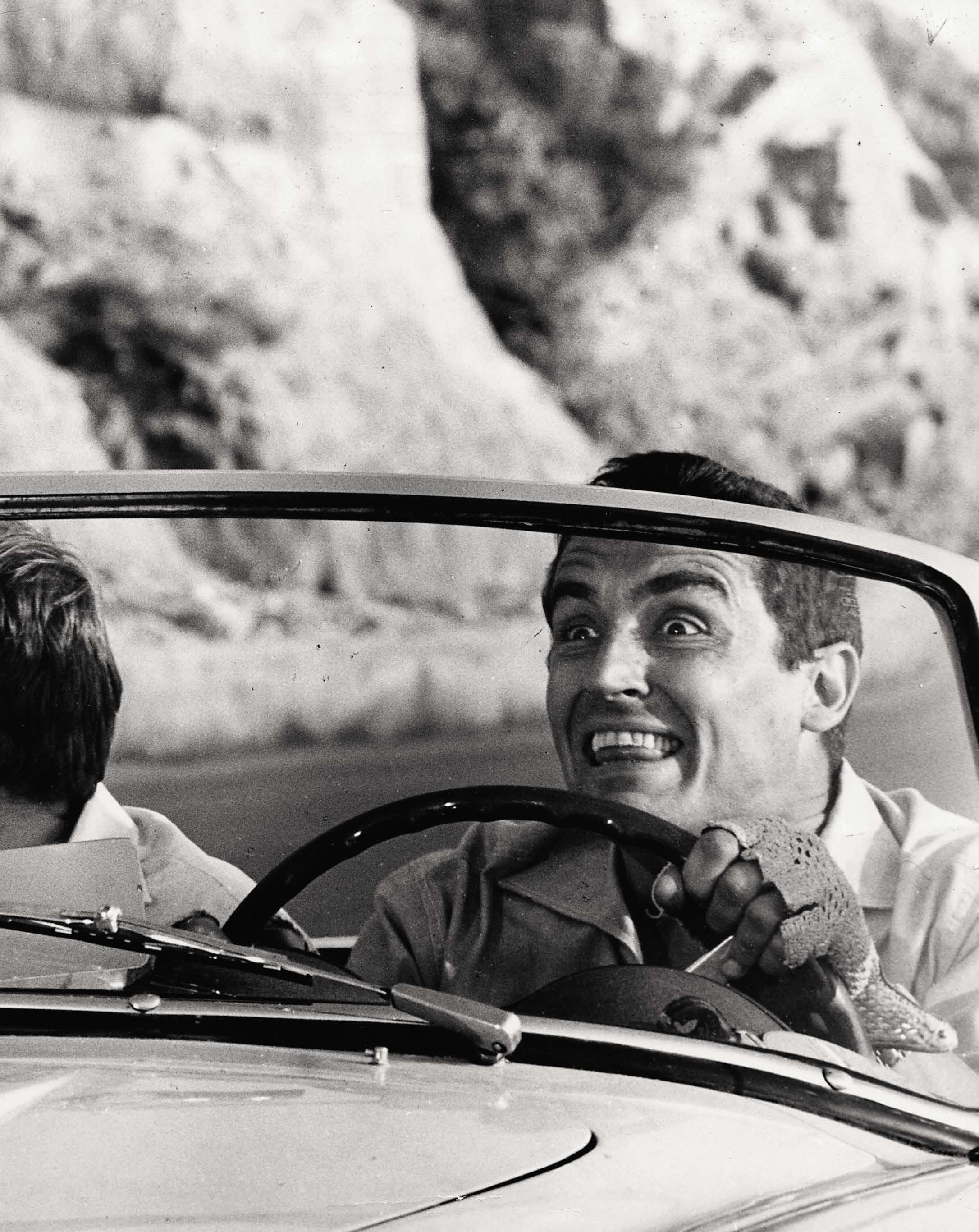
161
FU THE
The Internet and digital technologies, from smartphones to social media, have transformed everyday life for their users, mapping and multiplying the connections one makes, be they jokes or financial transactions. Communication and capitalism have accelerated. Surveillance has become a given; data is the new currency. These changes have been so epic and so swift, normalized but not yet naturalized, and often creepily imperceptible (how apps can manipulate the human nervous system, for example), that it’s been difficult to keep up with what is actually happening on a structural level, especially when an estimated 5 billion people worldwide are online to distract and overwhelm. As one viral tweet put it, “We was not supposed to know this many people existed, let alone they thoughts” (Twitter handle: @ethnyagami).
Two people whose thoughts you might actually want to know about, professors Tiziana Terranova and Mindy Seu, have each just published books on the recent history of the Internet. Terranova’s After the Internet: Digital Networks between Capital and the Common , part of Semiotext(e)’s Intervention series, collects dispatches from her firsthand research on the emerging technologies and techno-economies that have defined the last decade, including the attention economy and its psychopathologies. Complementing Terranova’s slim volume is Seu’s cake of a book Cyberfeminism Index , an “anticanon” encyclopedialike collation of more than 700 diverse international manifestations of cyberfeminist activism, art, community, engineering, and scholarship. Drawn from a website of the same name (originally commissioned by Rhizome), Cyberfeminism Index in book form becomes an art object: wrapped in “chroma key” green-screen green, it re-creates the rhizomatic web of its subject matter through extensive cross-references.
In an effort to better understand the recent past, present, and future of the Internet, we brought Terranova and Seu together to discuss their practices and their latest publishing projects.
—Fiona Alison Duncan
FIONA ALISON DUNCAN If you could introduce yourselves and your practices in your own words, I’d love to hear how your work extends beyond writing and publishing.
TIZIANA TERRANOVA I’m a full-time professor at the Università di Napoli L’Orientale. My practice there is typical of a full-time academic—research and teaching—but for many years I have also been an active member of Uninomade and Euronomade, which are “free universities” that have aimed to produce and disseminate politicized knowledge for social grassroots movements such as those running “occupied” spaces in Italy and elsewhere. They call these “liberated” spaces run as commons.
MINDY SEU I’m an assistant professor at Rutgers University and I teach in the MFA Department at the Yale School of Art. My practice is also grassroots centered. I focus primarily on the activation of digital archives, specifically those that are community created. This expands into digital technologies at large, such as smaller Internet cultures, revisionist histories of the Internet, and considering how to surface those for new readerships while paying respect to the people who have pushed forward those communities from the start.
FAD Both of your books collect existing writings and documents from a specific period of time. Both end with the same year, 2020. Could you talk about the bracket of time that you chose?
MS The Cyberfeminism Index begins in 1991 because that was the year the term “cyberfeminism” was coined simultaneously by two different groups, the Australian art collective VNS Matrix and the British cultural theorist Sadie Plant, each unbeknownst to the other. Cyberfeminism emerged as a provocation to ask women
162
and marginalized communities how they might shape cyberspace in opposition to the stories told by the hard sci-fi of the 1970s and ’80s. The book ends in 2020 but the online archive from which its contents are drawn, cyberfeminismindex.com, will grow in perpetuity. It’s still open source, open access, and continuing to be crowdsourced.
TT I read the Cyberfeminism Index . It was exciting. I was in the UK during the 1990s and early 2000s and would travel to Warwick University to see the events that Sadie Plant organized. It was a really exciting time. My book for Semiotext(e) comes after that— it belongs more to the 2010s, after I had moved back to Italy. It’s a collection of essays I wrote while active with Uninomade and Euronomade’s free informal networks of scholars and activists working in the wake of the Italian postworkerist tradition. Most of the essays in After the Internet were written in the 2010s, when
TT Because these platforms have constructed something different. From a certain point of view, the Cyberfeminism Index documents all that has been pushed to the sidelines, which is not to reduce its importance.
MS It seems like you’re describing this infrastructural shift from Web 1.0 to Web 2.0. Now, with Web3, this evangelism around the commons or cooperatives is emerging again.
TT What do you think about it? Is there a cyberfeminist kind of blockchain?
MS Absolutely. The focus of Web3 has been on decentralized protocols, from blockchain to P2P, seemingly pseudonymous yet mapped onto an open ledger. Early adopters of new technologies have always been cyberfeminists, and specifically sex workers,
the cyber utopia of the 1990s and 2000s was being captured and reprogrammed by platform capitalism.
FAD In your incredible introductory essay, Tiziana, you help clarify what we’ve been experiencing with regards to the Internet, social media, and digital technologies over the past decade, calling the 2010s “the accelerationist decade,” for example, and introducing the ominous term “corporate platform complex (CPC).” Could you explain what you mean by CPC?
TT If you look at the way the topology of the Internet has changed, there is this myth, taken from Paul Baran in 1964, that the Internet is a mesh network where every point can connect to any other point. That was part of the utopia of the 1990s. In reality, the Internet was always more of a decentralized network, there was always a backbone and centers that were more powerful. But that is still different from what we have today. The topology of digital networks has changed. What we have are a few content and service providers, endowed with large server farms, that describe themselves as “platforms.” You go from platform to platform, from Facebook, Instagram, and TikTok to WhatsApp, YouTube, Google, and then maybe you have Telegram or Signal. Most people relate to platforms. In the introduction I say that the Internet is dead, but only in the sense that it’s become residual—it operates in the background but it no longer signifies for most people the possibility of a different, better world.
FAD I love when you call the Internet “not so much dead as undead.” A zombie Internet.
because their work is so criminalized, forcing them to find the new cutting edge. Sex workers were some of the first people to use cryptocurrencies, since traditional payment processors considered those that did not abide by their morality clause “high risk.” They have chains that use great puns like “titcoin” instead of bitcoin. I do see some of the potential of the Web3 space. I think what confuses me are these claims of decentralization. It feels centralized, since many NFTs are circulating through the same platform, OpenSea, and most transactions are happening on the same handful of chains. It also doesn’t feel as ubiquitous and open access as its evangelists’ claims are because it requires such tech literacy to onboard people. It’s like someone telling you this is the future but not letting you know how to join them.
TURE OF
163
MS The format was inspired by a lot of things, namely The New Woman’s Survival Catalog [1973], which was billed as the feminist Whole Earth Catalog [1968] of the 1970s, as well Lucy Lippard’s Six Years: The Dematerialization of the Art Object from 1966 to 1972 [1973]. Rather than an essay anthology, Lippard’s book is an annotated chronology of excerpts from different writings about the dematerialization of art. That felt like a good lens for how to structure the Cyberfeminism Index , which acts as a sourcebook or encyclopedia, something that you pick up, open, and intuitively select. You have your primary index, an annotated chronology. You have an index of titles, people, and images, and then each entry has cross-references that push and pull you to different entries with complementary or juxtaposed themes. The design also leant on early examples of analogue hyperlinks. Hyperlinks emerged as cross-references, footnotes, and bibliographies in printed volumes long before we had them on the Internet.
TT The book I’m working on at the moment, which I started after finishing most of the essays in After the Internet , is called Network Social . The idea started with this return to the social (social web, social media, then social computing, computational social sciences, etc.) in the early 2010s. With relation to the “network social” (which is neither network society nor social network, as I explain in the book), I was immediately fascinated by the ways in which the blockchain was at least at the beginning deliberately anti social. It was the idea that you could do without the social component of communication, a reaction against the hegemony of social media.
MS It seems like a retaliation is happening against these platform oligopolies and their viewership model. Venkatesh Rao writes about “the domestic cozy,” Gen Z–focused online social happenings for a very small group, rather than the late–Web 2.0 desire to have as many followers and viral hits as possible. In some ways, this kind of privatized, smaller social group allows for more of this online intimacy to happen.
FAD Already in our talk we’ve pointed to how your practices and books complement one another: After the Internet references diffuse countermovements and resistances that the Cyberfeminism Index thoroughly documents, while the Cyberfeminism Index references the power structures that After the Internet reports on. One way to contrast each book’s scope is as mainstream and countermainstream. There’s also a gendered element: feminisms contra the predominantly white-male ownership of big tech. I was also thinking of scattered power versus consolidated power.
MS It’s tricky. While the framing always seemed to describe a primary or hegemonic class and then the people on its outskirts, some groups in the Cyberfeminism Index did not want to be positioned as other or in the margins. Many groups tried to develop their own infrastructures, refocusing the parameters of these spaces and who is at the center. It’s interesting to think about the different forms of cyberfeminism that have emerged in different regions. What was happening in Australia, Europe, and the US is different from what was happening in East Asia, Latin America, and South Africa. Cyberfeminism continues to feel like this very rhizomatic web where different manifestations have complementary themes even if they didn’t come from the same root. In that way, if you imagine it as a net, it does actually feel very decentralized.
FAD Which is echoed in the construction of your book. Could you describe the formatting of the Cyberfeminism Index in print and how it mimics this rhizomatic web?
FAD Exploring the book made me conscious about how I read books in print and how I use or am used by the Internet. A hyperlink in print is much clunkier than online, with the efficacy of clicks. I wanted to talk about use and users. I’ve heard Mindy speak about web “users” being “a contentious term.” I’m also thinking about this quote from After the Internet : “The ‘user as mas-
THE INTER
ter of the machine’ has waned but what has waxed in its place is also not quite reassuring. The consensus seems to be that the user has morphed from master to addict.” I don’t even know where the term “user” comes from in a computing context.
TT In A Prehistory of the Cloud [2015], Tung-Hui Hu describes it as “a product of the invention of time-sharing, which initially occupies a ‘peeping’ and intimate position with relation to the machine,” but it was with personal computing that the user came to be refashioned in ways that mapped the identity of the user onto the time she or he spent on the machine. In Wendy Chun’s genealogy of software, there is also a very gendered history of programming at work: 1990s hacker groups were all about mastery of the machine. You had the hacker figure, the heroic figure, the programmer, the masterful subject, which was mostly coded as male. The
164
racialized language of user as master, and of man and machine as master and slave, has been problematized by recent work on the intersection between race and technology—from Louis ChudeSokei to Neda Atanasoski and Kalindi Vora to Denise Ferreira da Silva’s brilliant critique of the TV series Black Mirror. In the 1950s, the French philosopher of technology Gilbert Simondon argued that the master/slave model of the human relation to the machine was established during the industrial mode of production; we’re more aware of it now in terms of its derivation from the plantation economy. In the industrial factory, the machine was below or above, you were either the overseer or the slave. What does it mean to have instead a sympoietic relationship with machines, as Donna Haraway has argued for organic critters? We need a language of being with machines that is not the language of using and being used, mastering or serving. That also implies a liberation of machines from our racialized and gendered projections of our fears and desires.
FAD With the term “user” I also think of drug use and addiction. Being addicted to one’s phone is something I hear people bemoaning all the time now. It’s interesting that it’s the phone . “I’m totally addicted to my phone,” not—
MS The software.
FAD Exactly. After the Internet tackles the attention economy and Internet addiction. Tiziana, could you speak to that?
TT As the Internet became a mass thing, you got this exponential usage. New kinds of interfaces were developed that aim to maximize engagement. They follow design principles recalling those studied by anthropologist Natasha Dow Schüll in her book Addiction by Design: Machine Gambling in Las Vegas , which shows how
the design of betting machines changed so people aren’t in the social space of a casino any longer, they’re just spending time and money on machines. They don’t even want to win anymore—they just want to lose all feelings of mastery, to divest themselves of power, almost. That happened with the Internet as well. The attention economy surfaced. We were no longer in the 1990s and early2000s world of unlimited abundance, where the idea was that everything was free and could be freely shared. For mainstream economics, there is no economy without scarce resources—the economy is the allocation of scarce resources for alternative ends. Only once there was something that could be scarce—users’ attention—could there be an economy. I noticed how neuroeconomics describes pleasure as the necessary mechanism that makes an economic subject; you need to be able to strive for a reward. One of the essays in After the Internet is something I wrote for the “Psychopathologies of Cognitive Capitalism” conference series organized by the artist Warren Neidich. I use a neuroscientist’s experiment on anhedonia, the incapacity to feel pleasure. Anhedonia became a pathology to be very concerned with, because you have to be able to feel pleasure to be an economic subject; you have to pursue pleasure, you have to pursue rewards. If you reject them you’re pathologized.
FAD This actually reminds me of one of the illustrated entries in the Cyberfeminism Index , Shu Lea Cheang’s science fiction porn film I.K.U. [2001].
MS I.K.U. is an amazing example of soft science fiction that begins where Blade Runner [1982] left off. In this dystopian techno future, Cheang illustrates a new economy built around I.K.U. coders who extract orgasm data rather than using money.
TT You know, I started by writing SF, then ended up writing mostly academic essays. My BA, MA, and PhD theses were all about SF: Joanna Russ, Philip K. Dick, and cyberpunk. After the Internet ends with a short SF story about a fugitive AI, too.
INTER NET
MS I’ve also been drawn to science fiction and you see a lot of that throughout this book. The root of the word “fiction” is actually the Latin for “to form.” It’s easy to see why these narratives and science fictions end up shaping future infrastructures. They change the cultural consciousness of what technology is able to do.
FAD From the zombie Internet to sci-fi—I love how we are getting into narrative here. Could we also think about Greek tragedy? It seems like we are witnessing a hubristic rise and fall with some of these megalomaniac tech figures. Can narrative precedents give us any clues into what the future of the Internet might be?
TT I think that Yuk Hui has a point when he says that we need to recognize how much myth there is in our philosophy as well as in our relation to technology—Prometheus or Icarus, for example, in Greek mythology. Maybe we should explore other mythological stories about technology (Hui starts with a Chinese story where there is no hubris but a relation to the elemental forces of the cosmos), or make up new ones. Cyberfeminism and Afrofuturism would be good places to start.
165
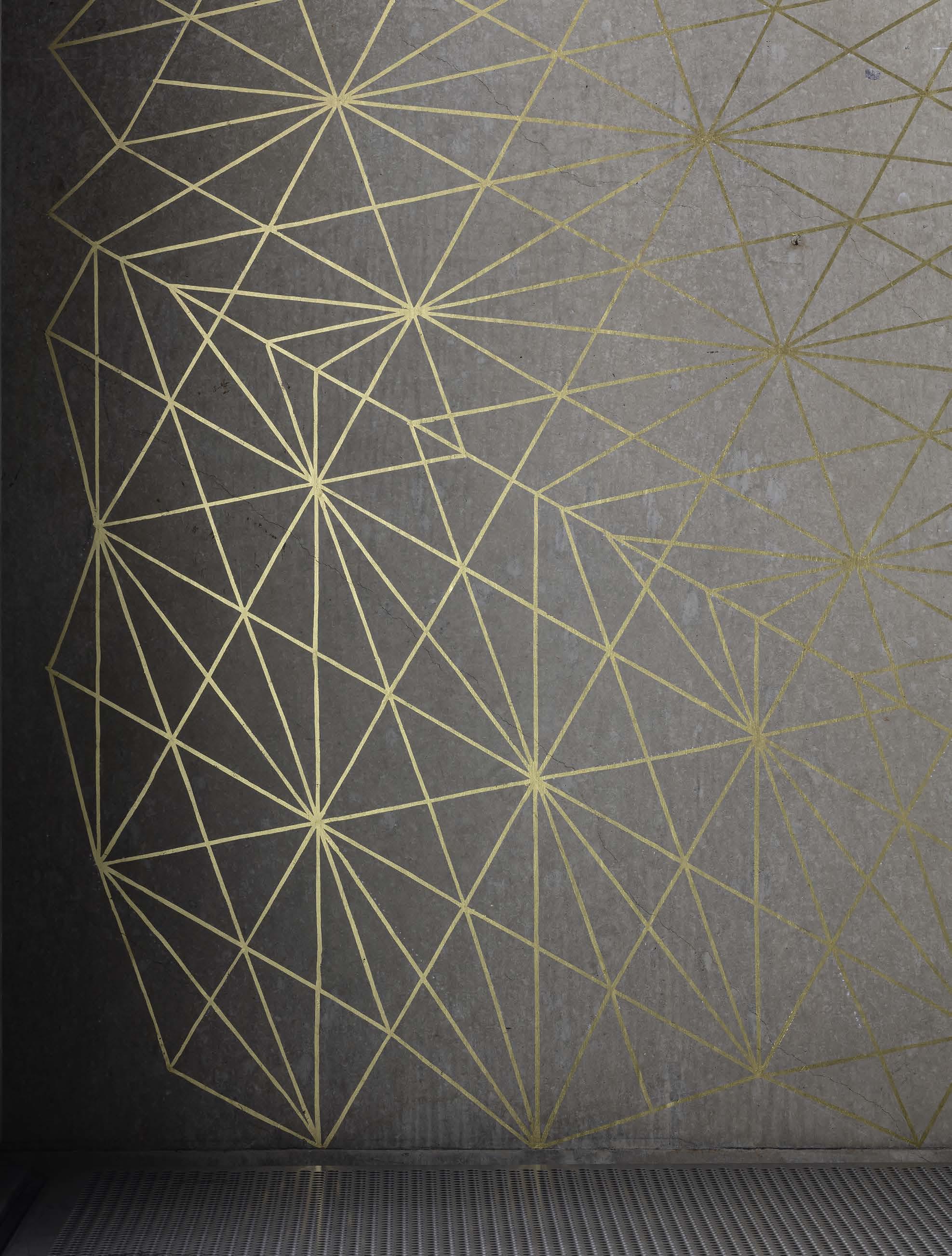
In 1984 I dreamt of a painting. Or more particularly of a landscape with two figures (which would later become a painting). In the gloomy translucence a figure lay outstretched on the ground, with another figure crouching over it. In the right hand of the crouching figure there was a saw (this was a bow saw like the one I had used to cut firewood that day). In the left hand of the crouching figure there was an antler; this was being cut by the saw. The antler was attached to, and growing from, the head of the outstretched figure. The outstretched figure had an arrow sticking out of its left eye. On the ground there was a bow and some arrows. Behind the two figures was a soft landscape (hills, trees,
sky). To the left there was a dog sitting upright and looking at the action taking place in the hands of the crouching figure. The next day I got up and made a drawing that would become a painting (the painting was to measure 5’ x 4’).
Some months later I was on a bus in Edinburgh reading the New Edinburgh Review. I was surprised to see an image of my painting above some text. I was more puzzled to see an image of another painting next to it. This second painting bore striking similarities to my own. The painting was by Piero di Cosimo: it had been known as The Death of Procris (c. 1495) but was latterly retitled A Satyr Mourning over a Nymph . I don’t remember much about the text, but I do remember that it was a “positive” review (art-historical references always gratify the cultivated reader). What was truly surprising about all this was that this was a painting that I must have walked past many times, but one which I had no recollection of ever having seen. I had spent many days in the National Gallery, but I had no memory of this work at all and its existence was completely new to me.
That night I got on the bus to London and the next morning I was standing in front of the painting itself in the National Gallery. I wished I had looked at it before because it was haunting, beautiful and I could have learnt so much. My painting, on the other hand, showed more the influence of Picasso’s classical period but was crude and inarticulate. Dreams can be like this sometimes, so flawless and perfect and you wonder where it all came from, the exquisite detail. But so much of this dream clearly emerged from a painting that I did not know. I must have taken this in at a glance without registering any aspect of it. This reveals just how completely a painting can condition vision, but also how secretly this can take hold. I have a reproduction of this work in front of me now and even in this form it is beautiful (utterly charming), but the painting itself is something quite different. It holds something more, a presence that induces a magnetic state and fills me with longing. I feel the painter close to me. Those waves of air, his breath, touch my face and move through me. From his hand to my hand—I am charged with urgency—I
167
no title I
In an excerpt from his forthcoming monograph, Richard Wright pens a personal and philosophical text about painting.
must work. The painting feels like it was made in a world that is not this world. This is to do with a kind of perfection: a perfection that endlessly unfolds like the perfection of dreams.
Delacroix said that you should be able to draw a man falling from a window on the fourth floor by the time he hits the ground. On the surface of it he is talking about facility, but perhaps in a few words he comes close to the very heart of painting. Painting is an act that connects reality and consciousness. It is more than a collective codification of signs. It is a performance that awakens the delirium of vision. Drawing describes the mind in the act of seeing, but this action comes before consciousness. It is only through touching this concrete world that I can leave myself. The silence of things is disturbed into vibration. The task is not conceived, it is not understood; it is lived. The painter goes out into the world and momentarily changes the order of things. The hand has grown to be part of the tool and the tool has grown to be part of everything that surrounds it. If there is
Previous spread: Richard Wright, No Title , 2018, gold leaf on ceiling, Tottenham Court Road station (Elizabeth Line), London, commissioned as part of the Crossrail Art Programme © Richard Wright.
Photo: Lucy Dawkins
Above: Cimabue, Santa Trinita Maestà , c. 1280–90, 12 feet 7 ¼ inches × 7 feet 3 inches (385 × 223 cm), Uffizi Gallery, Florence, Italy.

Photo: Wikimedia Commons/ Google Art Project
Right: Giotto Di Bondone, The Lamentation of Christ , c. 1305, fresco, Scrovegni Chapel, Padua. Photo: Scala/Art Resource, New York

knowledge here it resides in the muscles. For Leonardo the first principle of the “science” of painting is geometry. In his notebook he writes:
If you were to say that the contact made on a surface by the very tip of the point of a pen would create a point, this is not true. Rather we would say that such a contact as this would actually be a surface around a centre and that centre is the location of the point. And such a point is not of the material of the surface. If all the points that are potentially in the universe were to be united—should such a union be possible— neither they nor a single point would compose any part of a surface. And given, if you were to so imagine it, a whole composed of a thousand points, and dividing some part of this quantity by one thousand, it may fairly be said that this part will be equal to the whole. This may be demonstrated by zero or nothing, that is to say, the tenth figure in arithmetic. 1
When you look hard at something it disappears. The point is there is no point and this is the place where painting begins. Unlike speaking or writing, painting emerges not from the mind but from the mud. The very tip of the pen , the exact place where I touch the material of things, is nothing, but at the same time it is the concrete point between the senses and the seeing world. Its articulation permits an ecstasy of presence: a softening of the boundary between an inner and outer. One becomes the other and the other becomes one. The veil between this world and the eternal world is permeated: the solid flows through me. I see the future and I see the past.
In his essay “Eye and Mind,” Maurice Merleau-Ponty observes that things arouse in us a carnal formula of their presence:
I would be hard pressed to say where the painting is that I am looking at. For I do not look at it as one looks at a thing, fixing it in its place. My gaze wanders within it as in the halos of
168
being. Rather than seeing it, I see according to, or with it. 2
The air shares materiality with me and it is within this air that the painting exists. Without this air the painting cannot be, but you cannot photograph the air: the edges of its solidity open inward toward nothing.
II
And let the helm and steersman of this power to see be the light of the sun, the light of your eye, and your own hand. 3
Cennini tells us that he learnt from the hand of Agnolo di Taddeo (Agnolo Gaddi). Agnolo learnt from the hand of his father Taddeo Gaddi. Taddeo, in his turn, learnt from the hand of Giotto. Giotto of course learnt from the hand of Cimabue, if we are to believe Vasari (this is disputed). From the

muscles of the teacher to the muscles of the tyro, the body is given to the task. Painting is not only the brush and pigment; painting is a way to live and Cennini’s book Il Libro dell’Arte is a manual that every painter should read and not just read. A little book of cosmic Minecraft that tells you how to make the universe from spittle and dust. But so much more—like a year on Walden Pond—it might give you a hint on how to become what you are. 4 Painting is an attitude toward things, an austere philosophy, and the decision to be a painter is like the decision to be a Sufi: it is not something you can choose; actually, it chooses you.
Étienne Decroux—from whose hand Marcel Marceau learnt his craft—tells us that you should marry the craft as you would marry a person. Decroux, the inventor of corporeal mime, studied the art of theater like no other: a devotion, beginning with diction and ending in silence, refined through decades of practice in perfecting a lexicon of minimum movements of his body. All this was not for its own sake, not for the sake of art, but

for the sake of extracting from “the world—where things are hidden—the things that are hidden within things.”5 Along the way he asks: what can I say without words, what can I say without thoughts. His body does not copy life; it lives life in a purified form. Movement does not represent things, it presents them. Words cannot replace this action; only the body can prepare for the incarnation of things and this takes time: “These things, seen and even handled, have passed, little by little, to the back of my head, made their way down to the back of my arms and arrived at the ends of my fingers where they changed my fingerprints.”6
Practice is a process of becoming: I work the material and the material works me. I have tended to prefer the word “performance” to the word “craft” because “craft” has been misused and demeaned. But craft speaks of something particular. Duchamp wanted to get away from the artist’s paw and there is no doubt that one of the central themes in contemporary art is the increasing distance between the artist and the making of things.
169
Above: Étienne Decroux, c. 1948–57.
Photo: Étienne Bertrand Weill, courtesy Bibliothèque nationale de France
Right: É cole Étienne Decroux, c. 1947–82. Photo: Étienne Bertrand Weill, courtesy Bibliothèque nationale de France
Craft is widely associated with mere facility: something quaintly mindless and technical, which is somehow separable from the higher practice of art itself. I can see why this type of thinking may facilitate theoretical development and aid the promotion of elitist concerns, but for me it is mistaken. Craft is not just a tradition of redundant skill that has largely become a pastime. Craft is an embodiment of an attitude toward everything. Painting does not require a brush or paint. Painting is the craft of seeing; it is an attitude toward touch in which method is everything. There is nothing else.

Sometimes a painting idea is no more than a meeting between a quantity of material and a quantity of action. In repetition the hand and eye are joined to the world. It interests me that repeating something can effect a kind of sedimentation, to use Robert Smithson’s thinking. This is a musical idea related to rhythm or measure. But sometimes the measure is the measure of nothing. For every action there is an equal and opposite reaction and even an apparently idiotic and meaningless gesture, like taking a vow of silence or filling
up a glass and emptying it, can change the order of the world.
In 2008 I began a project with the title one thousand circles . I painted the first circle on 24 May that year and continued to paint or draw a single circle each day until 17 February 2011 (1,000 days). The circle, mother of polygons, is universally symbolic and symbolic of universe. But what interests me about the circle is that it is a kind of fact (a finite domain equal in all directions). The statement “one thousand circles” is somehow definitive. But making one thousand circles is something quite different. In this respect the title becomes something votive: a sort of promise. This commitment or conscientiousness was largely unobserved and unmoderated and so it became a secret vow, or a promise to the universe.
It is noteworthy that Vasari should choose the figure of the circle in his tale of Giotto’s audacity and brilliance. Had Vasari described Giotto as drawing a beautiful face, horse, hand, etc., there might have been some speculation as to the merit of his judgment. But a perfect circle needs no
speculation for the very reason that it is perfect. “This is enough and more than enough” was what Giotto is supposed to have said when he drew the circle to demonstrate not only that he was a master of his craft, but also his deep insight in understanding that the circle, the simplest of all figures, was the most rigorous of all tests for the unaided draftsman. Vasari did have a tendency to get carried away, but this observation is not without value and committing myself to this ordinance was definitely connected to this. In general, paint does not want to be a painting: paint wants to roll about all over the floor and stick to your clothes. The body also does not want to play its part (it would prefer to look at its phone). The task then is one of empathy and self-control. Discipline is both an act of will and an act of obedience.
Training to be a signwriter was a turning point in my development. At the beginning the master held out his hands with his palms turned upward and said, “Show me your hands.” I placed my two hands on top of his and he gripped them. He passed his fingers over my palms and fingers and

170
Opposite: Giotto Di Bondone, ceiling with frescoes, c. 1305, Scrovegni Chapel, Padua. Photo: Danita Delimont/Alamy Stock Photo
Above: Richard Wright working on No Title (2018), Tottenham Court Road station (Elizabeth Line), London. Photo: David Ersser
Right: Dome, Hall of the Two Sisters, Court of the Lions, Alhambra, Granada. Photo: B. O’Kane/ Alamy Stock Photo

171

172
released my hands. He said, “You’re a nervous cunt like me. No bother, you’ll make it!” Those were his words. It was the way a man of his generation would speak to another man—tender and brutal— and it seems to me that the exact words are important. He knew what he was talking about; it had taken him eleven years to learn his trade. He could paint over twenty alphabets freehand from memory (including Helvetica). I later realized that he wanted to be sure that I did not have sweaty palms. I spent much of the next two years covering boards with two letters, “s” and “o,” between “snapped” chalk lines: sanding down, repainting, and covering again with freehand lines of s’s and lines of o’s (the boards were 6’ x 2’).
This was the start of a more objective or even abstract attitude toward material: what I might call “conscious superficiality.” I had spent fourteen years studying and practicing the most minute gestures and inflections of painting’s attitude: how painters show themselves to be painters, from the Egyptians to Georges Braque via Pietro Lorenzetti. But signwriting showed me something else.
Opposite: Richard
It was a kind of release: the paint wanted to be “as good as it looked in the can,” to borrow the words of Frank Stella. This finally connected me back to pure plastic art and I did get away from the “artist’s paw.” Painting started to feel more like construction: placing one object on top of another.
For a long time, I had been preoccupied with the idea that painting could only have real existence or value if it declared itself to be over. This probably has its roots in a disillusionment and rejection of the empty gestures of 1980s painting. But it was also something much more personal. The problem with painting was not just that you could not do anything without it being part of something that had already been done, but that what had already been done was impossibly disconnected from my world. It seemed that in order to paint one had to pretend to be a grand figure from another era (smoking cigars and wearing a silk dressing gown in the street). Pop had begun something that it was hard to come back from. Of course, this also had to do with wanting to liquidate the so-called bourgeois inheritance (of paintings over the fireplace,
etc.). But more than this, there was a sense that painting could not engage. Gerhard Richter used the word “inadequacy” and doubt seemed to be a necessary part of the activity. For a while it seemed impossible to even paint at all. Painting, like praying, had become a hard thing for an intelligent person to do, or at least to admit to.
When I stopped painting on canvas I had the feeling that I had stopped painting altogether. I began to think of painting as way of acting on the world. I thought more about ordering things than expressing things, and it seemed plausible that moving a table from one side of the room to another was as much painting as depicting a jug of sunflowers. This was connected to the idea that a painting could just be a “thing” as opposed to a sign. But my thinking was also close to that of Donald Judd in “Specific Objects” when he speaks of the notion of three-dimensionality as being neither painting nor sculpture.7 I moved away from representation: away from virtual pictorial space and toward actual space.
Actual space seemed to be the locus of possibility. I have said this before, but for me a painting

Above: Richard
Right:

173
Wright, No Title , 2020, One Shot poster color and One Shot lettering enamel on affiche paper, 42 ⅞ × 30 ¼ inches (108.9 × 76.8 cm) © Richard Wright. Photo: Roman März, courtesy BQ, Berlin
Wright, No Title , 2015, leaded handmade glass, 181 ⅛ × 68 ½ inches (460 × 174 cm), Gagosian, Rome © Richard Wright. Photo: Matteo D’Eletto M3 Studio
Donald Judd, untitled , 1974, detail of one of a set of six etchings in black, 41 ¼ × 30 ½ inches (106 × 78.5 cm) © Judd Foundation/Artists Rights Society (ARS), New York
should be like a word for which there is no synonym. Like Decroux’s corporeal mime, painting does not represent; painting is the thing itself. In this condition it has the possibility to remove itself from the world of signs and become part of everything else: to be as ignorable as it is interesting. This provisionality allowed the possibility that painting may not have to directly address the subject at all: that a journey does not necessarily need a destination. This sense that painting could disappear into things also made a connection for me with the ideas of artists like Mondrian and Rodchenko and the formal qualities of their work. “There is a world that is not man, that sends man no signs, that has nothing in common with him.” 8 The work of Mondrian and Rodchenko is oriented not toward the human story, but toward pure forms, eliciting a meditation on the act of seeing, rather than offering “meaning” in the sense that we might expect.
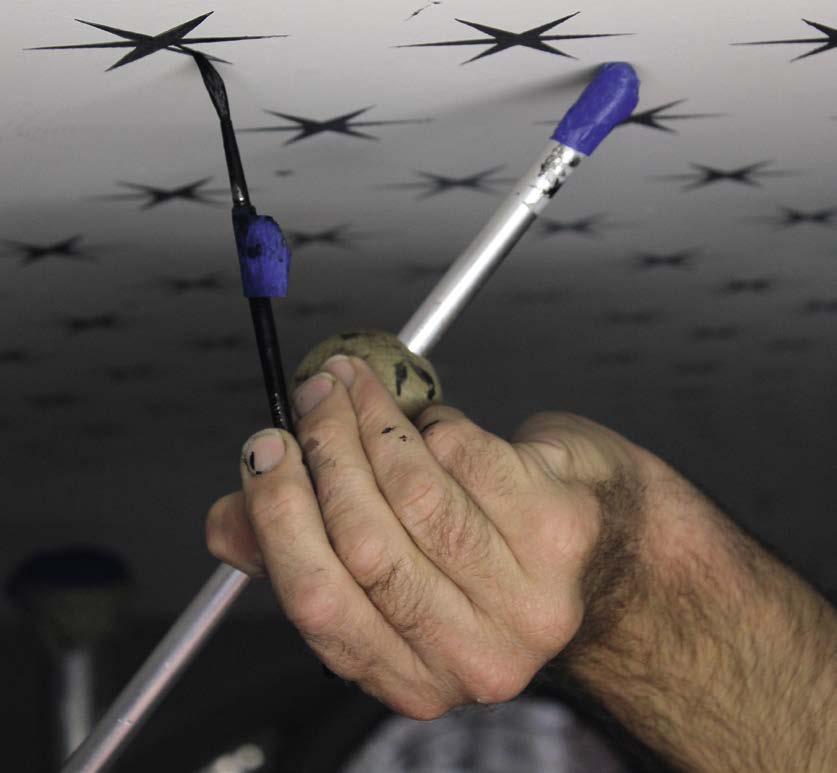
Rodchenko denounced easel painting, rejected the convention of self-expression and moved toward the applied arts. There was something in

this for me and I was drawn toward the language of graphic design and ornamentation. The idea of style seemed to offer a kind of resistance to the expectation that painting should carry existential resonance (an expectation that I thought of as regressive and reactionary). I was also hugely interested in art from the East and the idea that art could function outside the expectations of Western melancholic mystification. It was style versus tragedy and all this had its resonances in the dialogues of so-called postmodernism, which in the art context, for me, could have been designated as “post-Pop.” Pop was the complete death of high art, but the post-Pop product was just too consumer oriented. I actually felt and still feel that painting ought to have a different kind of responsibility. I did not want to tell people how they should live, but I did want to remind them that they are here
I was not so much thinking about more established conceptual practices like that of Sol LeWitt as more fragile positions of artists like Chris Burden or Yves Klein. Of particular importance were
the Neo-Concrete artists like Lygia Clark, who seemed to put the body in the center of the work: “The rectangle in pieces has been swallowed up by us and absorbed by ourselves.”9
Provisional activity or performance, if you like, arrived as some kind of solution, permitting painting to both exist and not exist at the same time. The temporary nature of the work had the effect of placing it in the domain of time and repositioned the subject within the work itself. It stops being about images and starts being about being. Time started to be the principal material of my activity and painting became a way of moving
I approached the built world, indeed everything around me, as if it were already a painting or a sculpture. I was struck by that thing that Isaac Babel said: “A phrase is born into the world both good and bad at the same time. The secret lies in a slight, an almost invisible twist. The lever should rest in your hand, getting warm, and you can only turn it once, not twice.”10 This was the kind of thinking I tried to bring to the work. I tried to
174
Above: Alexander Rodchenko, NonObjective Painting , 1919, oil on canvas, 33 ¼ × 28 inches (84.5 × 71.1 cm) © Estate of Alexander Rodchenko/VAGA at Artists Rights Society (ARS), New York. Photo: © The Museum of Modern Art/ Licensed by SCALA/Art Resource, New York
Right: Richard Wright installing No Title , 2013, Rijksmuseum, Amsterdam. Photo: David Ersser
begin with one thing and restrict development to one or two operations (after that there was just too much counterpoint).
There was an intentional lack of depth—a refusal of the picture space—and it all became much more about the surface of the world. I began to see individual touches or gestures as being like John Latham’s minimum events: markers of presence, markers of time and space—events remembered and measured. But I wanted something less “fine art.” It interested me that in graphic design a kind of degradation occurred with reuse and overuse of symbolic material. What had been content in another context was somehow emptied out and hollowed into stylistic effect. If the dentils in Ionic entablature ever had any symbolic content, their displaced ornamental use has caused them to become mere surface activity: they have gone back to the world of things. But in this condition, they also seemed to offer a kind of latency, a potential to be filled or reactivated. This has something to do with trace: a dormant attraction or an inheritance of another

Above: Richard Wright, No Title , 2014, silkscreen print on poster paper, 32 × 45 ⅜ inches (81.3 × 115.3 cm) © Richard Wright. Photo: Lucy Dawkins
Right: Lygia Clark, Diálogo de Mãos (Hand dialogue), 1966, performance documentation © “The World of Lygia Clark” Cultural Association. Photo: Eduardo Lins Clark Ribeiro

Richard Wright’s upcoming exhibition will take place in March 2023 at Gagosian, Davies Street, London.
kind of memory of archetype and the touch of past use. This reactivation is the start of something.
People have often asked me “why painting?” and I can only say what I always say. Painting remembers how it got here. Brâncus�i said that sculpture is the direct cutting of stone and I am guessing he was making a distinction between this activity and others that might be called “modeling” and “construction.” The stone pillar remembers the mason in a way that the digital print cannot. This is directly related to the obstinacy of the material (its refusal to go along with things). The mason has to negotiate, to coax and entreat both his hands and the material into becoming something. This interaction changes both the mason and the stone into something new. And so it is with the painting on the side of an Attic vase. You can see the light of the day on which it was made, you can hear the chatter in the artisan’s mind and feel the breath held in that moment of silence when the stroke is drawn upward and released. All this is right there in front of you.
1. Leonardo da Vinci, in Leonardo on Painting , ed. Martin Kemp (New Haven and London: Yale University Press, 2001), 14.
2. Maurice Merleau-Ponty, “Eye and Mind,” in The Merleau-Ponty Aesthetics Reader: Philosophy and Painting , ed. Galen A. Johnson (Evanston, IL: Northwestern University Press, 1993), 126.
3. Cennino d’Andrea Cennini, The Craftsman’s Handbook (Il Libro dell’Arte), c. 1400, trans. Daniel V. Thompson, Jr., 1933 (New York: Dover Publications, Inc., 2016), 5.
4. A reference to Henry David Thoreau, who in 1845 built and lived in a simple cabin on the shore of Walden Pond in Massachusetts, and wrote about his experiences in Walden; or, Life in the Woods (Boston: Ticknor and Fields, 1854).
5. Étienne Decroux, in The Decroux Sourcebook , ed. Thomas Leabhart and Franc Chamberlain (London and New York: Routledge, 2008), 86.
6. Ibid., 49.
7. Donald Judd, “Specific Objects,” in Contemporary Sculpture: Arts Yearbook 8 (New York: The Art Digest, 1965).
8. Alain Robbe-Grillet, “Nature, humanisme, tragédie,” 1958, in Pour un nouveau roman (Paris: Gallimard, 1967), 83.
9. Lygia Clark, “Nostalgia of the Body,” in Rosalind E. Krauss, Yve-Alain Bois, Benjamin H. D. Buchloh, et al., eds., October: The Second Decade, 1986–1996 (Cambridge, MA: The MIT Press, 1998), 37.
10. Isaac Babel, “Guy de Maupassant,” in David Richards, ed., The Penguin Book of Russian Short Stories (London: Penguin Books, 1981), 265.
175
RED, WHITE, YELLOW,
In December 1972 and April 1973, Shigeko Kubota, Mary Lucier, Cecilia Sandoval, and Charlotte Warren conceived of “multimedia concerts” at The Kitchen, New York, under the name Red, White,Yellow,andBlack—a name that associated each artist with her cultural identity. Exemplifying their individual activities and backgrounds rather than acting as a coalition, the four women performed and exhibited multimedia work that dematerialized after its presentation and has since been reconstructed only through scholarly text. In recognition of the fiftieth anniversary of these performances, The Kitchen will bring together rarely seen archival material from the evenings alongside a presentation of


Kubota’s Riverrun (1972) at their satellite space at the Westside Loft at Westbeth in New York. Organized by Lumi Tan, former senior curator, The Kitchen, and Lia Robinson, director of programs and research, Shigeko Kubota Video Art Foundation, alongside Kitchen staff Angelique Rosales Salgado, curatorial assistant, Alex Waterman, archivist, and Matthew Lyons, curator, the presentation will examine the lasting influence of these ephemeral performances. Here, Tan and Robinson speak with the Quarterly’s Wyatt Allgeier about the genesis of the project, the necessity of research and oral history to its development, and what they hope visitors will glean from the legacy of this unique arts collective.
WYATT ALLGEIER Lumi, let’s start at the beginning. How did this exhibition come about?
LUMI TAN One of my first curatorial projects at The Kitchen was an archival exhibition marking the institution’s fortieth anniversary, in 2011, which I curated with the executive director at the time, Debra Singer, and curator Matthew Lyons. The exhibition, The View from the Volcano, covered the The Kitchen’s SoHo years, from 1971 to 1984, before our move to our present building in Chelsea, which is currently under renovation. It allowed me to spend invaluable time in our archival holdings and rooted me in our history from the beginning of my tenure.
176
AND BLACK: 1972–73
It was during this research that I first learned about Red, White, Yellow, and Black , when I came across The Kitchen’s striking poster of these four women, styled like mugshots, from the first performance. I was surprised that The Kitchen didn’t have much more than that poster in its archives, but just from seeing the poster, and the boldness of the name these women had chosen, the performances implanted themselves in my mind as something to research further. It wasn’t until we were approaching The Kitchen’s fiftieth anniversary, in 2021, that I was able to delve deeper into this history. That’s when I first contacted the Shigeko Kubota Video Art Foundation and met


Norman Ballard, Reid Ballard, and you, Lia, who have made all of this possible.
LIA ROBINSON This project resulted from close collaboration with the remaining members of Red, White, Yellow, and Black —Mary Lucier, Cecilia Sandoval, and Charlotte Warren—along with The Kitchen and the Shigeko Kubota Video Art Foundation. I am very interested in transnational artist networks, especially artists working between Japan and the United States at the intersection of art and technology, which brought me to Kubota’s work as part of Fluxus and other avantgarde experimentation in the 1960s and ’70s. I was really fascinated by her underexamined
performance-based work and visited The Kitchen archives while still a student. That’s where I initially came across that Red, White, Yellow, and Black poster. The concerts were already sort of apocryphal among feminist scholarly circles, there was so little known about them.
That first encounter in the archive piqued my interest and I always hoped to return to the coalition, so when Lumi came to visit Kubota’s archive to propose this project, in 2019, it was really exciting to start mining the archive. We uncovered correspondence and planning materials in Kubota’s personal collections and began a dialogue with Mary, Charlotte, and Cecilia to get a fuller sense
177
of their experiences at The Kitchen and their performances as part of Red, White, Yellow, and Black .
LT The research project started with Kubota’s crucial yet underknown presence at The Kitchen throughout her career, as a contributor to the early Women’s Video festivals there [in 1972–74] before she became a video curator at Anthology Film Archive, and then having a number of important solo shows throughout the years there. I had also previously worked with Mary on an installation for the group exhibition From Minimalism into Algorithm at The Kitchen in 2016. Knowing that she was also a member of Red, White, Yellow, and Black —and that, in addition to exhibiting her work at The Kitchen in the 1970s, she also played an integral part in archiving The Kitchen during many other artists’ presentations over the years, both as a photographer and just generally as a member of The Kitchen’s community—it became clear that we could build a substantial project around Red, White, Yellow, and Black
WA Lia, could you say a bit more about what your day-to-day is like? I’m curious to hear about the work going on in the archives.
LR Well, the mission of the Shigeko Kubota Video Art Foundation is to preserve Kubota’s legacy as an artist, curator, and critic in addition to her collaborations with contemporary pioneers. Although it’s one of many facets of the foundation’s activities, archiving Kubota’s personal collection is central to uncovering these stories. There has been a renewed interest in her work in recent years, and the focus has been on restoring her work to make it accessible to the public and to researchers. Archiving is ongoing parallel to our exhibition and program planning, and on any given day in the archive we come across a range of artwork and materials, from Flux objects, video sculptures, open reels, recordings, and materials for programs at Anthology Film Archives to the artist’s journals and correspondence, including that between members of Red, White, Yellow, and Black . Our day-to-day is a mix of archival work, research, and restoration, and at this point about two-thirds of her personal archive is catalogued.
One of the most exciting projects is my colleague Reid Ballard’s work cataloging and digitizing Kubota’s open-reel and tape collection, which will make hundreds of new materials available for viewing for the first time in decades. Just recently we came across Kubota’s Analogue Magnetism for Takehisa Kosugi , shown, to my knowledge only once, at The Kitchen , in the 2nd International Computer Art Festival in 1974. Throughout the process we have found that Kubota and other women in the avant-garde scene at the time were their own best advocates and archivists, actively preserving their own histories in a consciously forward-thinking way. They serve as a model for how artists can continue to think about how they want their work stewarded in the future.
LT It’s similar to The Kitchen: from the very beginning, it started from the place of, No one else is going to tell our history. The work we’re showing, the artists we’re supporting, are never going to be folded into the canons of art history, so it’s necessary to record it all, and to remember it all ourselves. Being a place focused on ephemeral artwork such as performance and video, we quickly developed a habit of saving as much paper as we could, and documenting via video and photography as much as we could. Of course, many of the artists in The Kitchen’s orbit are now collected in museums and included in art-history books, but
The Kitchen’s ability to document as a center for video was a rare resource in those early decades. LR Having said that, with the exception of Mary preserving her scripts and slides and Shigeko preserving her tapes, the material for the seven works that constituted Red, White, Yellow, and Black was not extant. The women all used Kitchen equipment that was then repurposed for other events and performances. So it wasn’t necessarily a moment when they were thinking about preserving any physical hardware or objects associated with the works. I think when people think about these types of performance-based works and multimedia video sculpture, they forget that The Kitchen was truly an experimental space where most everything was considered, in a sense, a work in progress. The members of Red, White, Yellow, and Black were exploring a number of new ideas—about art, technology, and identity—and many of the audience members were other artists and collaborators. They were very much developing their work as part of a dialogue with each other and The Kitchen community.
Another aspect of the events to keep in mind that became clear during the oral histories with Mary, Cecilia, and Charlotte in preparation for the exhibition is that all four artists were presenting their work in parallel to one another, all at once. It wasn’t a formal, linear presentation that went from artist to artist; rather, the audience had flexibility to move through the space and experience the works simultaneously. These weren’t static, and the experience must have been greatly impacted by the actions of the audience.
We do know that for the first concert Kubota made a video sculpture that seems to have been thirteen monitors of six channels. Five channels featured footage of rivers pulled from her diaristic practice during her travels across Europe. From
Previous spread: Headshots of Cecilia Sandoval, Mary Lucier, Shigeko Kubota, and Charlotte Warren for Red, White,Yellow & Black Concert poster, 1972. Photo: Mary Lucier, courtesy Shigeko Kubota Video Art Foundation
This page: Red, White, Yellow & Blac k poster draft, 1972, color marker on paper. Image: courtesy Shigeko Kubota Video Art Foundation; © 2023 Estate of Shigeko Kubota/ Licensed by VAGA at Artists Rights Society (ARS), New York

Opposite: Mary Lucier, Charlotte Warren, Cecilia Sandoval, and Shigeko Kubota during a Red, White, Yellow, and Black planning session on E. 7th St, New York, 1972. Photo: Mary Lucier, courtesy of Mary Lucier
what we’ve gleaned from preparatory notes prior to the event, each channel was shown on a horizontal stack of two monitors accompanied by an audio recording with excerpts from James Joyce’s reading of Finnegans Wake . Another stack of three monitors displayed a closed-circuit video of a drinking fountain filled with orange juice. There was a live synthesizer altering the images of audience members who could take and drink orange juice from the fountain. It was an interactive piece that invited audience participation.
LT While this was happening, Mary performed Red Herring Journal: The Boston Strangler Was a Woman . As she clicked through slide projections of photos of female criminals, she read descriptions taken from articles about female criminal biology: “She had a deep voice, she was believed to be a lesbian, she was beautiful,” et cetera. As part of the performance, Mary was getting progressively more drunk, or at least portraying herself as such— taking on the role of what a “bad woman” was assumed to be. The concept was spurred by media coverage related to Albert DeSalvo, the “Boston Strangler,” who murdered thirteen women in the 1960s, when Mary was an undergraduate at Brandeis University in Boston. The media speculated that the Boston Strangler must have been a woman, or perhaps dressed as a woman, because otherwise why would so many women let a strange man into their homes?
Then for that first performance Cecilia was supposed to call in on the telephone—she was with her family on the Navajo reservation in Chinle, Arizona, not on site at The Kitchen. But the performance never happened; her call was interrupted because of bad weather.
LR But we did learn in our oral history with her that she was going to perform the song “Mary Had a Little Lamb” in Navajo, alluding to her liminal
178
identity as half Navajo and half Caucasian. Her family had given her a nickname, which translated to “little spotted lamb,” because she presented as more Caucasian than the rest of her family. Cecilia was still grappling with her identity and place community when she went abroad to be educated in France, performed in Red, White, Yellow, and Black , and went on to have an impressive career in the US military.
LT And in Black Voices , Charlotte performed a combination of a live poetry reading and recordings of poems by Black poets Jackie Earley, Mari Evans, Nikki Giovanni, and Langston Hughes. WA Were each of the four artists coming to the table and presenting a concept that they had determined ahead of time, or were these works conceived in unison as a collective and workshopped together?
LT We’ve learned from the oral histories that as far as they remember, there was very little discussion beforehand as to what any of them were going to do. It was all quite casual, in the spirit of the times and the artistic scenes they were traveling in. This wasn’t a collective in that sense of workshopping; it was more of an affinity group that meant to highlight individual approaches and practices within a group. That’s a critical aspect to keep in mind when thinking about this as a multiracial coalition: it was never about “I’m representing this,” it was about complicating expectations, depictions, and approaches about how one performs oneself.
LR Right. It was really about creating a platform that celebrated this multiplicity and these individual practices. Highlighting the specific cultural context of each performer’s background, however, as well as the various impediments and obstacles that each of them had to overcome, was not necessarily the focus of the works presented. This is important to keep in mind, when nowadays there is sometimes a tendency to develop one converging narrative of a single feminism or category of feminist art in the United States and give the impression of speaking to all women’s experiences. These concerts provide a really interesting counterpoint to that: the artists were very conscious and particular about presenting multiple perspectives on an equal playing field. While they weren’t necessarily thinking about these works as forming a single narrative, their experiments remained in conversation with one another, they kept discussing the concepts and their ideas both before and after the performances. This created a system and a platform of support for each individual project and nurtured further experimentation.
WA In addition to the oral histories that you’ve done with the artists, have you also been able to find people that were there as audience members?
LR It’s been a huge challenge.
LT It really speaks to the nature of what The Kitchen was at the time. These days we might have all sorts of records as to who attended performances, but back then it just wasn’t documented. People flowed in and out, and there weren’t tickets receipts or guest lists. But one fantastic piece of evidence that we found from the evening was brought to my attention by Tyler Maxin from Electronic Arts Intermix: a transcript of a phone call from the musician Phil Harmonic (Kenneth Werner) on the night of the first performance, published in Werner’s magazine A New Look . He called in to wish everyone happy Beethoven’s birthday and the phone was passed around to Mary, Shigeko, Charlotte, and also Alvin Lucier, Nam June Paik,
and Elsa Tambellini. It’s one of the only documents of the evening and was completely unexpected.
LR It also speaks to the casual setting and the fluidity and lack of rigidity in the performances themselves: Mary’s taking a break from her own performance to come tell Phil Harmonic what she’s doing, and Charlotte also takes a break from her work to say hello. And I think there’s even a point where Phil Harmonic has to hang up and then call back because Shigeko’s too busy to talk to him at that point because she’s working on setting up her Riverrun piece.
WA Could you say more about what the exhibition will comprise, given that these performances, and the materials involved in their staging, for the most part no longer exist? It’s a challenging exhibition to stage, I have to imagine.
LT It is very challenging when most of the work doesn’t exist—nor was it meant to exist after the initial run. But it’s a familiar challenge: The Kitchen has always been a place for ephemeral work, yet we have this rich archive to mine, so we have to apply a lot of ingenuity in thinking through how to bring these incomplete portrayals to life. The posthumous projects we presented of Gretchen Bender [2013] and Julius Eastman [2015] always come to mind as reflecting the complexity of what was able to be preserved of their work. So while what we’re mostly showing in this exhibition is ephemera, we’re not trying to present it all as evidence of two events. Instead, we want to prioritize the relationships between these women and what was able to be shared between their radically different backgrounds. These performances were not the beginning or the end of their friendship—even if there weren’t any further Red, White, Yellow, and Black performances after The Kitchen, they continued to correspond and to collaborate in less official capacities.
WA What do you hope visitors to the exhibition walk away with, be it philosophically, conceptually, or emotionally?
LR I’d hope that people come away with greater context for each individual within the coalition and her practices, and to understand her contributions to early avant-garde experimentation on a more level playing field. While Mary and Shigeko initiated the performances in many ways, I think
all the members of Red, White, Yellow, and Black felt like true collaborators and equal contributors. They were deeply committed to creating a platform to promote greater visibility for each other’s practices. And the engagement and the feedback that they received, especially from other women who had similarly experimental practices at the time, was very inspiring. That’s something I hope will be really interesting for audiences now: these women maintained relationships, both personal friendships and professional collaborations, throughout the rest of their careers. Lucier and Kubota showed together multiple times, Kubota programmed some of Charlotte Warren’s later work at PS1 as a curator at Anthology, and after this collaboration, Cecilia Sandoval was featured, I believe, in Nam June Paik’s Global Groove [1973]. Red, White, Yellow, and Black is an incredible example from The Kitchen’s herstory of an artists’ model of support and collaboration that is still relevant today.
LT On The Kitchen side, we are constantly reshaping this story of how we fostered avantgarde and experimental practices throughout this past half century. This coalition coming together so early in The Kitchen’s history, when the downtown scene was overwhelmingly white and male, is a necessary expansion of those dominant 1970s SoHo narratives. For Shigeko and Mary, much of the conversation about forming Red, White, Yellow, and Black came from being the “girlfriends” on tour with Sonic Arts Union and creating their own opportunities to headline and experiment on stage. These performances have a mythic quality because they seem to be an anomaly. This exhibition is an opportunity to continue to broaden and develop institutional and cultural history, and to cultivate intergenerational exchange in manner distinct to The Kitchen and its legacy.
Red,White,Yellow,andBlack:1972–73will be on view March 2–April 29, 2023 at The Kitchen at Westbeth: 163B Bank Street, New York

179
FASHION AND ART PART 13: ARIANNE PHILLIPS
Costume designer and stylist: Arianne Phillips has shaped the role of fashion and clothing in movies, theater, music, and pop culture since the 1980s. From working with Madonna to shaping the look of films such as The Crow and Once upon a Time in Hollywood, Phillips has elevated the function of costume and fashion to an art form. Here she speaks with Derek Blasberg about her early friendship with Lenny Kravitz, the diverse set of artists and mediums that informs her work, and why she refuses to settle down into any codified vocation.

Derek Blasberg: Welcome back from Venice and congratulations on being the first woman and first costume designer to receive the Campari Passion for Film Award at that prestigious film festival. Arianne Phillips: Oh gosh, that kind of stuff is so nerve racking. To be honest, I’ve been nominated for a few things over the years, like Oscars and Tonys, but I’ve never won. But this wasn’t a nomination—I knew I had to go up there and prepare a speech. It was a whirlwind trip because I’m working, but I was superexcited to be reunited with everyone from Don’t Worry Darling , the film I did the costumes on that premiered at Venice.
DB: If someone asked me what a costume designer does I’d say it’s the person who picks the fashion for films, tours, and photo shoots. How would you describe what you do?
AP: Costume design, specifically, is character building, which in turn is part of the cinematic storytelling process. Fashion, on the other hand, I believe to be a reflection of the culture at any given time.
DB: That’s a much better definition.
AP: In film, it’s very specific. I crafted a career between disciplines by choice, I guess you could call it creative ADD. Ha! I started trying to work in fashion when I first moved to New York, and then met Lenny Kravitz through mutual friends he knew from high school.
DB: What high school was that?
AP: Beverly Hills High, of course.
DB: Of course!
AP: We met before he released his first record. He was playing drums, traveling around with New Edition and Teena Marie, we were friends, and he was like, You know, when I make my own record, you can be my stylist, and blah-di-blah-di-blah. But! It actually worked out, he did end up making his own record and I did end up being his stylist.
I went into fashion initially because I love print photography. You can look at style and know so much more than just clothes: you can look at any fashion magazine from any time—a 1950s Vogue , say—and know what was happening in the world then and what was in the zeitgeist. That’s the thing that’s so exciting, it’s not just about what’s beautiful—it’s also about that, of course—but it’s about relevance, it’s about dreaming. I love the art of fashion.
DB: Unlike some other art forms, fashion has to be collaborative.
AP: That’s what I also loved about editorial work: working with photographers. I have some amateur photographers in my family and I grew up looking at books by Diane Arbus and all of these inspirations in photography. That was art for me! And then when I met Lenny, all of a sudden I was really excited about having that influence of dressing someone to help create a visual language around a musical artist. MTV had been out for less than a
decade; as a kid, I was obsessed with MTV, and that became my dream, I wanted to work on videos and MTV.
DB: Your dream came true, Arianne!
AP: The great thing about music videos, and working with Lenny, is that you’re given the opportunity to tell a story. With performance videos, when someone’s singing and you’re making them look hot and sexy and appealing, that’s easy with someone like Lenny. But when we did a video off his first record for a song called “Mr. Cab Driver,” it was a narrative video that was telling the story of the song. Suddenly I had to dress this guy as a cabdriver, and I just had to think of it differently. What does a cabdriver look like?I realized that the visual identity of a character and what they wear can say so much, even in real life. It was an epiphany for me about the medium of clothing and how it can illustrate an idea or a tone or a character. That was really intriguing to me, it lodged in my young forming brain, and I knew there was something there that I was really interested in.
DB: Lenny Kravitz as your first job? Not bad.

AP: Totally. Before that, when I was growing up, I was a theater kid. When I was twelve years old, if you’d asked me what I was going to be when I grew up, I was going to be an actress. I was really involved in community theater and I was obsessed with things like The Wiz and Hair. I did this movie in 2000, Hedwig and the Angry Inch , and then fourteen years later they brought it to Broadway with Neil Patrick Harris, and I got to have that experience [of designing the costumes]. That opened up opportunities for me, and I’ve since designed a few musicals and an opera at the Met. For me, it’s always about the mix and a new challenge and keeping the work fresh. The medium’s always clothing, so whether it’s fashion or costuming, I always feel like one informs the other, and that’s what sustains me. Otherwise I would probably have burned out years ago.
DB: Were the arts, either contemporary art or more museum culture, a part of your childhood?

AP: Absolutely! First of all, both my parents are artists. My mom is a painter and a writer, my dad is a musician and a writer, and I was raised in bohemian Northern California. I was born in Greenwich Village in the 1960s and then my parents moved to Haight-Ashbury[, San Francisco]. So I’m a product of this kind of youth-culture movement that my parents were part of. They weren’t really hippies, they don’t like to be referred to as hippies, they were more like intellectuals, bohemians. I was raised going to poetry readings. It was the 1970s, and very experimental, and I was exposed to a lot of art, a lot of opera, a lot of theater. My parents absolutely encouraged me to follow a creative career where I could express myself; there weren’t the same kind of expectations that their parents had for them to lead a more traditional, safe trajectory. They gave my sister and me a lot of space and encouragement. DB: That’s wonderful. In many ways that’s a gift.
AP: I was talking a lot about Don’t Worry Darling when the movie was coming out. It’s set in the late 1950s, early 1960s, and the film is really crafted around mid-century design. As a costume designer, I always start being inspired by color and silhouette, and for this film I was looking at the color
182
Previous spread: Arianne Phillips, 2020. Photo: Frank Ockenfels 3
Above: Still from Don’t Worry Darling (2022), directed by Olivia Wilde with costume design by Arianne Phillips. Photo: Warner Bros./THA/PictureLux/The Hollywood Archive/Alamy Stock
Photo
Below: Lenny Kravitz. Photo and styling: Arianne Phillips
of Mark Rothko and a lot of mid-century artists, the energy of Jasper Johns, when I was choosing my prints. In the conceptual stage I always look to art. When I was working with Madonna, a lot of our conversations before tours were conceptual, and we were inspired by the most conceptual art rather than figurative art. Art has always been really helpful to me, just in terms of evoking mood and tone, which is really what costumes do in a film. Not that everyone looks fashionable in a film, but I look to fashion as a point of relevance for a certain time period. Oftentimes you’re creating something that doesn’t exist, that’s a fantasy, and actually you can look at fashion for that; other times you’re telling a story that’s not necessarily a beautiful story.
DB: Do you have favorite painters or artists, and have you ever worked with them in any capacity?
AP: I’ve worked with a lot of art photographers and I love art photography. My dad’s first cousin, Jo Ann Callis, is a really amazing artist, her work is incredible. I’ve worked with Alex Prager and Tierney Gearon and Jeff Burton and all kinds of artists who aren’t traditional fashion photographers. That’s always been really exciting to me. One of the reasons I’ve kept my toe in fashion, and why I like working in fashion, is that I love working in tableau form and I love the symmetry, the balance of quietness, of working with a photographer. On a film there can be 150 people on set; I like the intimacy of working in photography. Although, if you’re shooting with Steven Klein, there can also be 100 people on set because he loves a big production, ha! And I’m inspired by all kinds of artists, the sky’s the limit, you know? I’m always looking for color inspiration, whether it’s Lucas Samaras or Joseph Cornell or Jean Crotti. I have a contemporary-artist friend, Marc Swanson, who has a big show right now at mass moca and he uses multimedia work and it’s really inspiring. I love John Currin, Francesco Clemente—I mean, it’s endless.
DB: When I started in fashion, in the early 2000s, there seemed to be a disconnect between contemporary art and the fashion world, which I think has dissipated over the years. How do you feel about the relationship between the fashion world and the art world?
AP: It’s so interesting you say that because when I moved to New York in the mid-1980s, art and fashion were fused. Andy Warhol was around. Some of my first jobs were working the coat check at the Palladium and Area clubs and there was so much art in contemporary fashion. Jean-Michel Basquiat would be there! There’d be art installations at the clubs, especially if you dig up the old pictures of Area. It was insane. I moved to New York in time for the last six months of Area and they had these amazing performance artists doing installations. The artists were socially part of that scene in downtown New York. I did a lot of editorial for a magazine called Splash , a downtown art-and-fashion magazine, and it was really great, and it was equal page time for art and fashion.
DB: I love those pictures of Basquiat walking fashion shows.

AP: Absolutely! There was no separation between what was happening in the art world and what was happening in downtown New York. It was very, very exciting. I worked midnight fashion shows at the Palladium for a crazy promoter, Steve Lewis, and I was obsessed with anything street culture and English fashion. [The English magazine] The Face was my Bible, I loved English pop music, and these designers like BodyMap came over from London and did midnight fashion shows. That’s how I met [photographer] David LaChapelle, and all these kids I hung out with at the Pyramid. I was a dresser at those shows! There were really no limitations—I don’t know about the rest of the city but for what we were doing it felt like a very optimistic time. Or maybe that’s just a gift of youth, when everything can feel possible? That really informed my own trajectory. I was told time and time again that I needed to pick a lane in terms of what I wanted to focus on, whether it was fashion or music or costume, and eventually I moved to LA because I just felt like I had to figure out who I was creatively.
DB: But you’re still doing them all!
AP: Yes, and I will say that all that experience starting out in New York as a young person informed me, because I didn’t want to make a choice between one discipline and another. I was trying to figure out how I could kind of do it all. I guess it was greedy of me!
DB: It’s funny that you say that you went to LA to figure out what you wanted creatively. I think some people would argue that they go there and lose their creativity.
AP: To be honest, I didn’t have the strength of
character to choose in New York. So many people were telling me I had to focus, and had to either be a fashion editor or go work in film or work with musicians. “You can’t do it all!” I mean, I was twenty years old and I was a college dropout. I knew I had to hustle or my parents would never talk to me again. I felt I had an opportunity—Los Angeles might as well have been another country and I didn’t feel as influenced as I did in New York. In LA at the time, there wasn’t a lot going on, and that gave me the ability to have some autonomy. I was able to build my career by following projects that felt right for me without feeling a social pressure. And then LA started to grow up and we kind of grew up together.
DB: The LA art world is much different now from when you moved there.
AP: Beyond different! New galleries, new communities. I mean, the Broad! Hello! People from New York started moving. I’ve been here since the mid1990s and LA’s gone through a huge transformation.
DB: I see that you’re at work now. Can you tell me what project this is?
AP: I’m in the Valley, at Western Costume. I’ve just started prepping the follow up to Joker, which is called Folie à Deux
DB: Is this the one with Lady Gaga?
AP: Yes!
DB: That’s awesome! Presumably you’re immune to the charms of celebrity, having worked with so many great stars of the stage and screen. But I guess that’s still exciting, no?
AP: Actors, performers, for sure—I mean, I’m always excited to work with a talented performer. It’s the second time I’ve worked with Joaquin [Phoenix] so I’m really excited to work with him again. We did Walk the Line [2005] together. I adore him.
DB: I know you’ve worked often with Madonna.
AP: Yes, many times. And with her there’s this fluency of influence, that’s why it’s so great working with her—she’s rigorous when it comes to her influences. She’s influenced by literature, by art, by music. Being able to have that mind-meld with an artist, and being able to move through genres, is super rare. I’ve worked with her on tours and on album covers and in editorial shoots, and also as a director.
DB: We can wrap this up now but I have one more question for you: you’re wearing a hat that says “Willem de Kooning” on it.
AP: This hat is actually from a young designer I consult with, Henri Levy, who has a store in Paris called Enfants Riches Déprimés. I met him through Courtney Love. I was just with him this weekend because I consulted on his show. I think he’s great and when we finish here I’ll send you more info on him.
DB: Did you wear that hat because you knew I was going to ask you about art in this interview?
AP: Honestly, no. I wore it because I’m having a bad hair day.
183
This page: Still from Hedwig and the Angry Inch (2001), directed by John Cameron Mitchell with costume design by Arianne Phillips. Photo: Moviestore Collection Ltd/Alamy Stock Photo
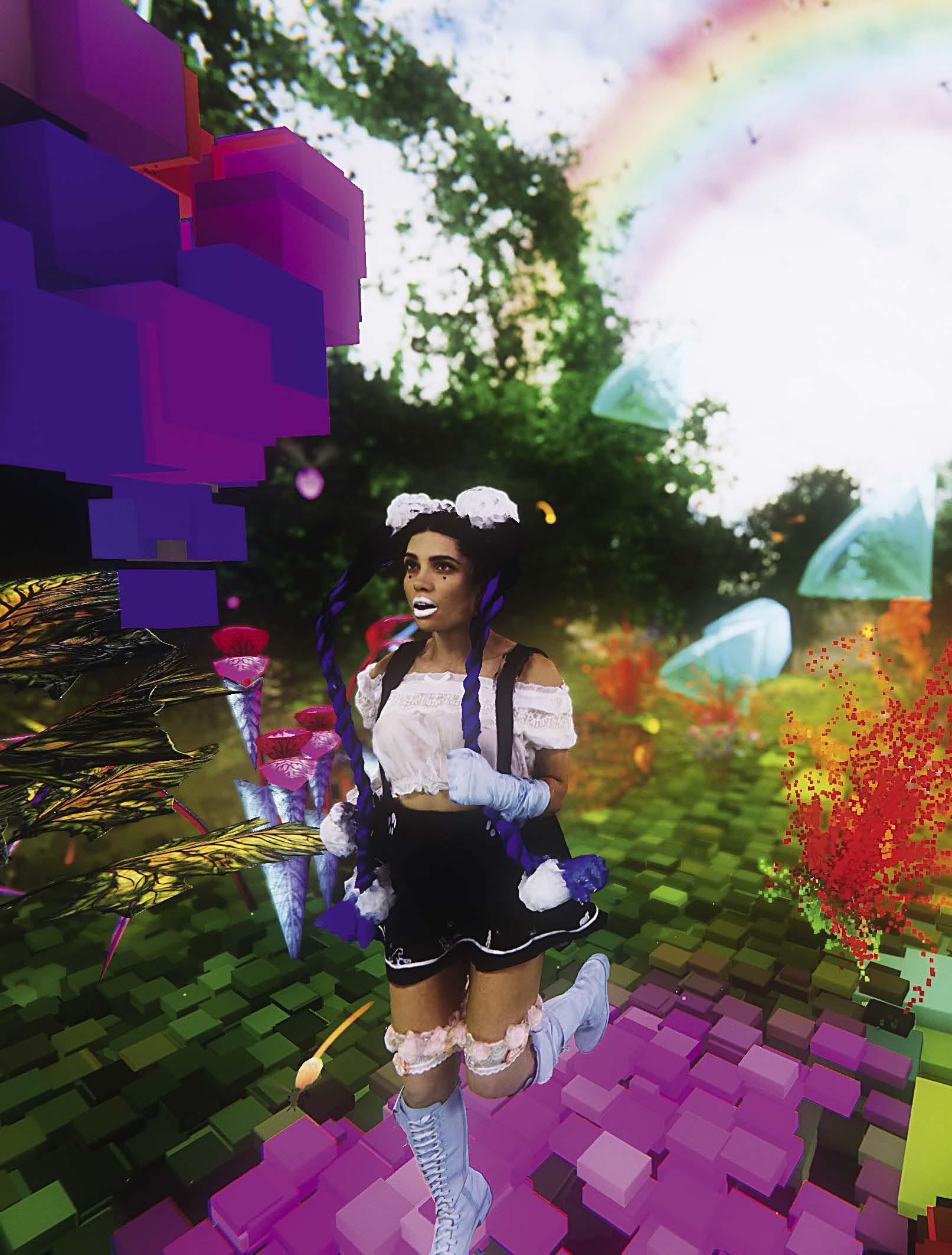
��REEN TIME
HOW NADYA
TOLOKONNIKOVA AND UNICORNDAO ARE WARMING THE CRYPTO AR T W O RLD
BY A SHLEY O VERB EEK
In April 2022, Salem Ilese released a song on TikTok. It went something like this:
Mention NFTs one more time And it’s guaranteed we’re not fucking tonight
I don’t care about your crypto, boy Not at all, not even one Bitcoin
I tried to care about you but there’s no point You’re too in love with all your crypto, boy
Needless to say, the song went viral. Ilese, looking to find a way to use her platform to shift attention to urgent social issues, reached out to Pussy Riot cofounder Nadya Tolokonnikova to partner on a charitable NFT project aptly titled “Crypto Boy.” The project, which combined Ilese’s eponymous song and visual art by Tolokonnikova, would go on to raise over 80 ETH (the cryptocurrency ether; worth $250,000 at the time) for New York’s Center for Reproductive Rights.
Art for impact is nothing new to Tolokonnikova, who in 2012 was sentenced to two years in a Russian prison after a performance protesting the regime of Vladimir Putin and its relationship with the Orthodox Church. Since her release, Tolokonnikova has continued to push for world change and for women’s and LGBTQ+ rights, in part through her art and musical performances. More recently, she’s found an unexpected tool for activism: blockchain technology.
Tolokonnikova first got involved in the Web3 space at the beginning of 2021. She is known for her live performances, and the guardrails that the pandemic imposed on in-person activity were frustrating for her at times: “In my soul I felt like I wasn’t doing enough,”
she told me over a Zoom call, “that I’m not able to use those tools that I used to have before because I just can’t talk and can’t perform.” So she began exploring ways to translate her art and activism digitally:
Myself and a lot of other artists started to get interested in this new technology, NFTs. I believe that [the crypto art movement] will be recognized later as an art movement in the same fashion as the Russian avant-garde movement or the Futurists. It is revolutionary to me in the way it states that digital art is art. The traditional museum/gallery system is still structured so much around physical objects. So the possibility of creating art online, in the metaverse, was groundbreaking for me because it didn’t matter to me if I wasn’t able to travel, I was still able to do my activism and show people my art and, more than that, sell my art digitally.
Pussy Riot and Tolokonnikova sold their first NFT series in early 2021: “And I started from selling one of my visual pieces,” she remembers, “called Panic Attack, for around $400,000 dollars, which was an insane sum for me, especially in the middle of the pandemic when I got money for hardly anything, just surviving on Patreon and selling merch. That sale enabled me to fund a shelter for the victims of domestic violence in Russia in one of the harshest regions for women to survive. It’s close to Chechnya, where women still are considered property.”
Panic Attack is an example of what Tolokonnikova calls “warm crypto.” Not to be confused with the technical terms related to types of cryptocurrency storage, warm crypto is a humanizing approach to blockchain technologies. Instead of exploiting crypto as a device to generate as much money as quickly

186
as possible, the warm-crypto community seeks to leverage blockchain technology as a tool for positive impact. “Crypto is not just for selling NFTs to make more money,” says Tolokonnikova. “I never was able to be that person. And it’s not wrong to be that type of person, but I’m just an activist. I’m a community builder. So I would always find a way [to use blockchain technology] to raise money for political prisoners, for independent media outlets in Russia that told the true story about Putin’s regime, for Ukraine, and for reproductive rights.”
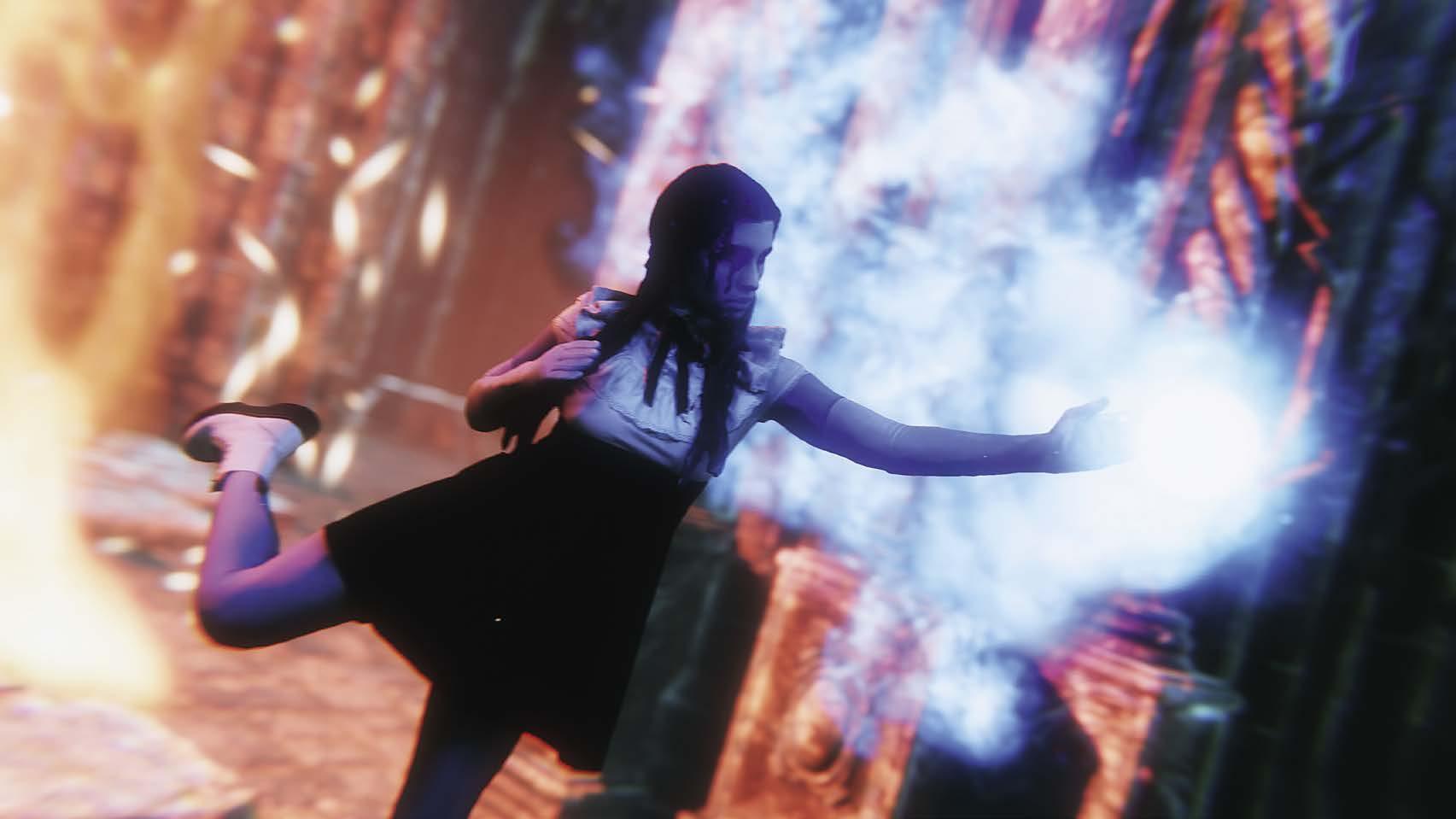
Tolokonnikova has found that “crypto works for activists.” Digital initiatives reap tangible benefits in the physical world. In March 2022, UkraineDAO, an organization founded by Tolokonnikova, raised over $7 million to donate to Ukrainian civilian organizations who help those suffering from the war initiated by Putin. And at around the same time, Tolokonnikova founded UnicornDAO, its mission being to build infrastructure for a feminist and queer revolution on the blockchain, largely through collecting and showcasing art by women, nonbinary, and LGBTQ+ creators. UnicornDAO has raised more than $5 million for a variety of female and LGBTQ+ empowerment initiatives, including LegalAbortion.eth, which secured half a million dollars

for nonprofits championing reproductive rights in the aftermath of the reversal of Roe v. Wade.
Fundraising in the crypto space often involves DAOs—decentralized autonomous organizations. A DAO is a governance structure that has no centralized authority; rather, decision-making power is distributed
187
Opening spread and this page, top: Pussy Riot, Panic Attack 1. Terrestrial Paradise, 2021 (still, detail), video, color, sound, 38 sec., directed by Asad J. Malik
Below: Nadya Tolokonnikova and Marina Abramović, New York, 2018. Photo: Griffin Lipson/BFA.com © BFA 2022 Opposite: Pussy Riot, Putin's Ashes, 2023 (still), video, color, sound, 3 min. 3 sec.
across its members, all of whom hold governance tokens. DAO members use these tokens to vote on the organization’s decisions, such as how funds are spent or how many members to include. DAOs raise funds in a variety of ways, but commonly require members to exchange their own fiat currency for a proportional share of governance tokens.
For Tolokonnikova, a “DAO can be pretty much everything you want it to be. It’s a group of people who decide how you’re going to govern this entity that they form. And you write your own constitution. The DAO is a working model for different systems of governance, and it was appealing to me because of my interests in political theory; I’m an activist forever. And it’s always interesting to me how alternative models of governance can work. Oftentimes DAOs can have more elements of direct democracy than systems that we’re usually using.”
For UnicornDAO, the goal was to make a clear, straightforward structure: “We decided to make [the governance structure] simple. It’s pretty flat; everyone has a similar amount of [governance] tokens. Everyone who joined the DAO either invested a lot of their own time and resources and their network, like me and my cofounder John Caldwell, or invested 50 ETH for their seat. And every week we come together on a community call and we decide how we’re going to invest this ETH that we have in our treasury.”
For artworks priced lower than 5 ETH, the DAO uses a system it calls “emoji consensus.” Using a private server on the social media platform Discord,
UnicornDAO members propose potential acquisitions by posting images alongside their argument for why these works would make good additions to the group’s collection. Other members “react” to the online proposal using emojis. Once the post attains a threshold number of emoji reactions, the member is able to purchase the work on behalf of the DAO. For pricier works, the DAO uses a more formalized ballot and voting system. So far, UnicornDAO has purchased works from a diverse group of female, nonbinary, and LGBTQ+ artists, including Claire Silver, Sputniko! (aka Hiro Ozaki), Ania Catherine and Dejha Ti, Sasha Katz, Olive Allen, Sarah Meyohas, Laurie Simmons, Marina Abramović, and Yulia Shur.
The collecting philosophy of UnicornDAO is aimed at the ongoing issue of representation in the art world. The organization cites a finding by the art-market research firm ArtTactic, which reported in late 2021 that only 5 percent of NFT sales were by female-identifying artists. Tolokonnikova argues,
By creating more diversity, you attract more people. . . . I feel like we just need to break through this cage. Right now I talk with a lot of artists who do not want to join the crypto party because they expect it to be overfilled with dorky guys who don’t know how to talk to a nonbinary person. And so people are just like, No, they aren’t going to come. But I feel that just through people who are doing things for the right reasons in this space, like other members of UnicornDAO, me and my friends—we’ll just attract

188
the right crowd and it’s just a matter of time. We are trying to change [the crypto space] through bringing more culture and just high-quality art. So we’re trying to push for this warm crypto and it’s obviously not just us. The work that you’ve done with Takashi [Murakami] definitely falls under this idea because it brings actual value to the crypto world that can be understood by people outside of the crypto bro den.
For Tolokonnikova, the problematic crypto bro identity is rooted not in gender but in mindset. “I feel like weirdly enough a girl can be a crypto boy as well if she lacks self-awareness. I think the first characteristic of a crypto boy is a lack of self-awareness. So they can just talk at you for hours without even noticing that you’ve fallen asleep. So a crypto bro to me does not care about feminism, doesn’t care about rights of nonbinary people, trans people. He doesn’t care about the war in Ukraine. He just lives for, I don’t know . . . I don’t know what he lives for but he’s lame,” Tolokonnikova laughs.
A shift away from the crypto bro mindset creates the potential for reform. Tolokonnikova points to the engagement she saw from some former crypto bros through UnicornDAO’s LegalAbortion.eth initiative, a cryptocurrency wallet that functions as an online donation center to collect ETH for reproductive-rights organizations such as Planned Parenthood: “When we
kicked things off with Salem, we raised $250,000 for . . . the Center for Reproductive Rights. I feel like everyone who contributed to that, they changed. Maybe they were not all crypto bros to start with, but I feel like [the initiative] actually enabled a bunch of crypto bros to change their identity.”
Tolokonnikova and UnicornDAO continue to work on projects to warm the crypto space. In December 2022, she represented Pussy Riot in a collaboration with the artist Judy Chicago based on Chicago’s series What if Women Ruled the World? (2020). The project began with a live conversation between Chicago and Tolokonnikova at the ICA Miami during Art Basel Miami Beach. “To me, it’s insanely cool because she seems like she’s just been making revolutionary art and statements and practices since forever,” Tolokonnikova smiles, “and to be able to work with her on this, it’s a big honor.”
Both personally and through UnicornDAO, Tolokonnikova is working on digital-art initiatives with other established women artists besides Chicago, including Abramović and Jenny Holzer. In early 2023, she plans an exhibition with the Jeffrey Deitch gallery in Los Angeles that will feature a short film, Putin’s Ashes, directed, edited, color corrected, and scored by Tolokonnikova herself. “I want to help present a broader culture in this scene,” she says, “because I want it to be more than just people trading cartoons to get rich.”
Opposite: Marina Abramović, The Hero 25FPS, 2022, digital still © Marina Abramović and CIRCA
Below: Ania Catherine and Dejha Ti, Attempt 10, 2022 (still, detail), video, color, sound, 1 min. 15 sec.

189
DAN COLEN:
In this interview, curator and artist K.O. Nnamdie speaks with artist Dan Colen about his recent show in New York: Lover, Lover, Lover. Colen delves into the concept of “home” as it relates to his work, specifically the Mother and Woodworker series. Thinking through the political and historical implications of “homeland” in the context of the artist’s relationship with Israel and America, the two consider the intersections between these paintings—the final group of his Disney-inspired canvases—and Colen’s work with Sky High Farm, New York.
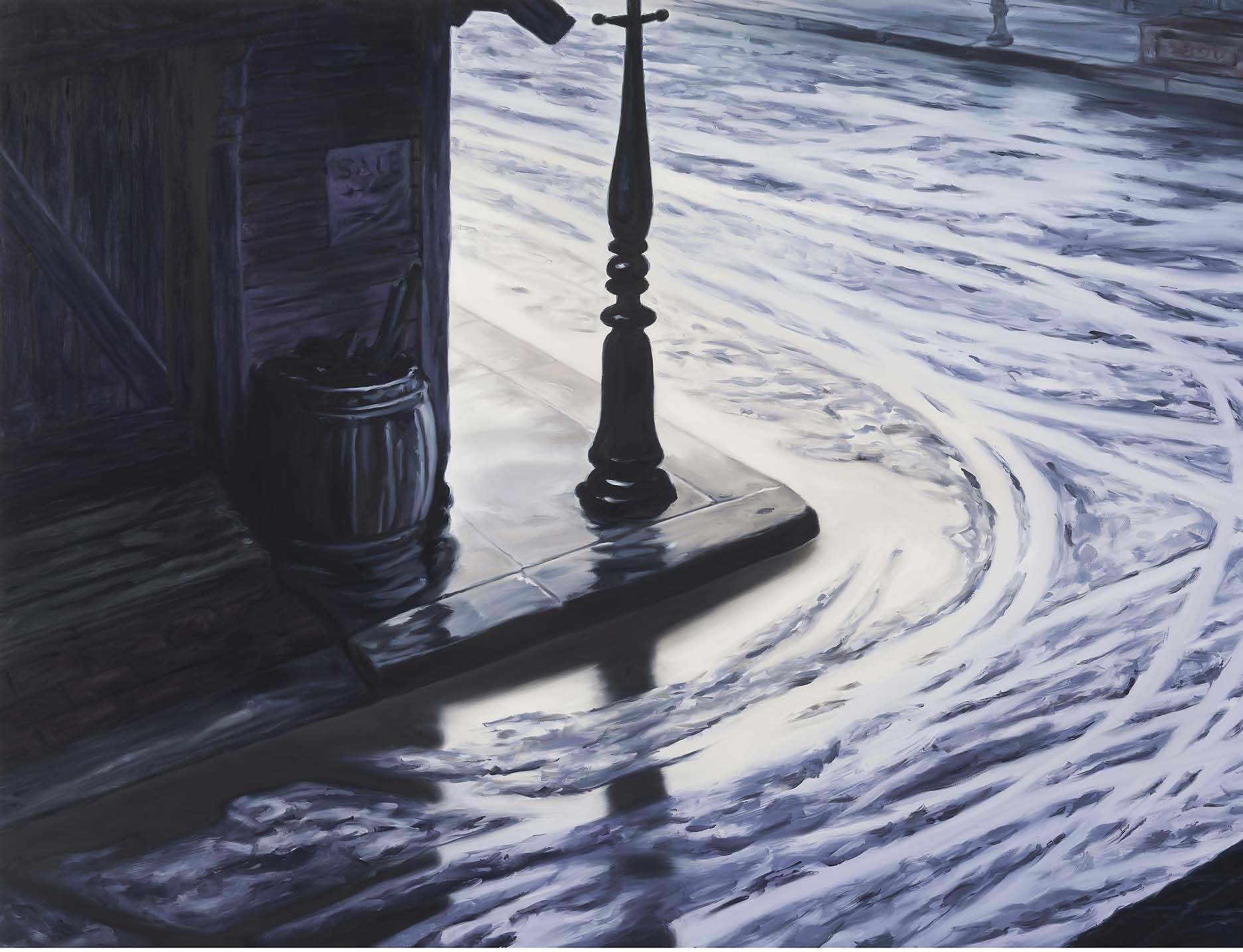
OTHER WORLDS ARE POSSIBLE
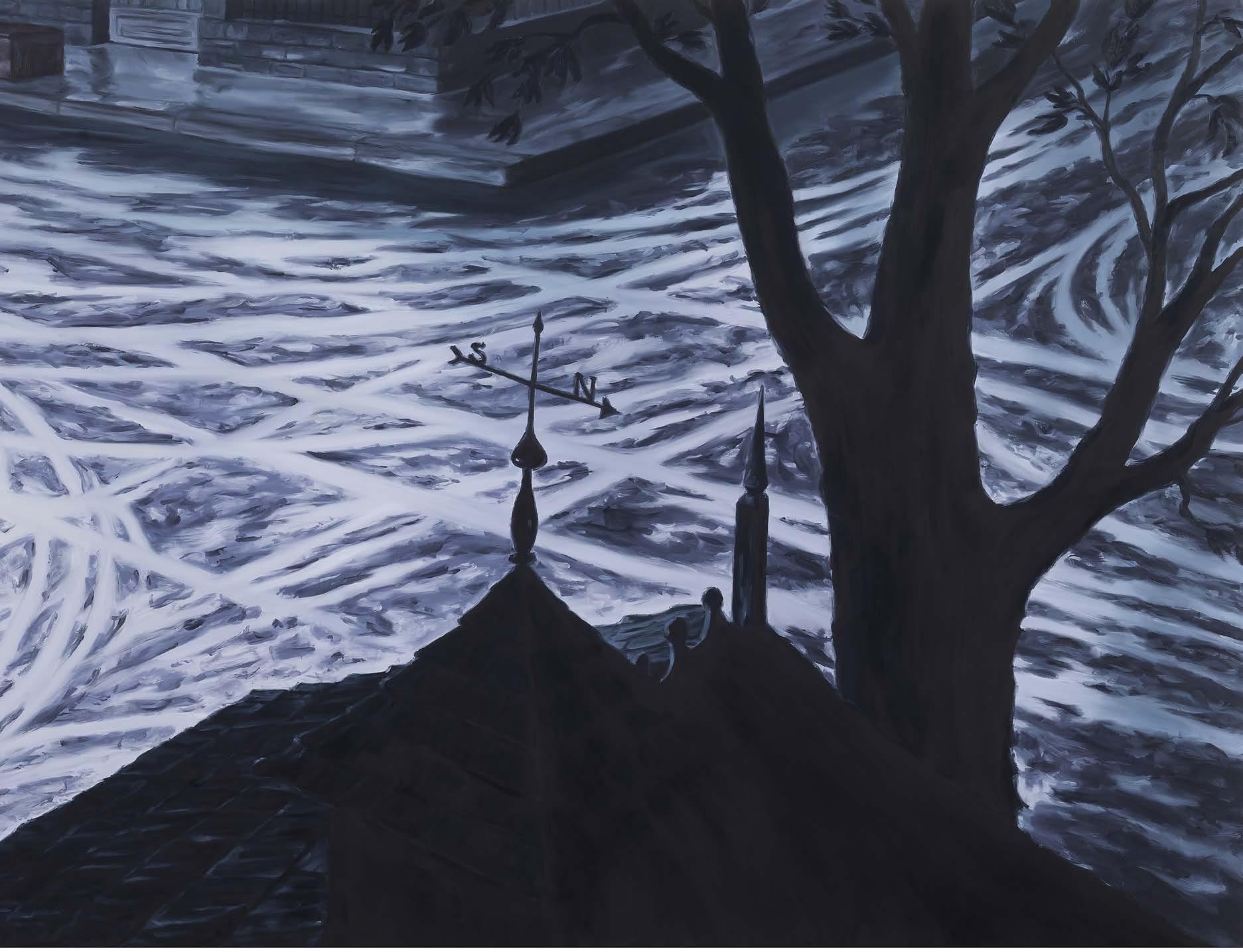
K O NNAMDIE Hi, Dan. First and foremost, how are you?
DAN COLEN Good, man, good. How’re you doing?
KON Things are going well.
DC We’ve never done a Zoom before, we’re more exclusively real-life friends.
KON Yeah, we’re IRL individuals. But you know, we’re very versatile [laughter ]. Where are you?
DC I’m at home in the city, with Lexie and our new baby, Days.
KON I’m glad you mentioned “home,” as that’s what I wanted to begin our conversation with. What does the idea of home mean to you?
DC So many things. In the context of the Lover, Lover, Lover show, I’m using the concept of home as an apparatus to explore the divide I often feel between where I’ve come from and where I’m going. Tension is inherent, but I’m interested in attempts to reconcile the divide and identify moments of peace. The ideas of “home” and “mother” comingle in my mind, and came to be synonymous as the body of work unfolded. In seeking balance between horizon and nostalgia, origin and destination eventually overlapped, became redundant and looping. Pairing these two reflective postures became my focus and drew me deeper into the contradictions implicit within these concepts: “home,” typically presented as a static place, a source of comfort and care, and “destination,” which conjures ideas of the unknown, the aspirational, the new, and the progressive. But in actuality, these distinctions are far from consistent, home and destination (mother and
lover), both are complicated and full of ambiguity.
KON After our initial conversation over lunch, you graciously invited me to your show at Gagosian in Chelsea. I was struck by a particular painting, Mother (Intersection) [2021–22]. Can you tell me a little about it?
DC I conceived of the Mother paintings when I was away from my home-away-from-NYC in 2009. It was during a turbulent and transformative moment when I was struggling to change certain fundamental aspects of my life. My experiences then inspired this body of work and this ongoing reflection on the fraught nature of home. Dash [Snow’s] death was a big part of what I was responding to—my understanding of his upbringing played a role in how these ideas initially formed within me, as did my blossoming relationship with his daughter, Secret, and her mother, Jade. But my interests eventually turned inward and broadened, moving away from ideas around physical houses and specific family members. I turned my attention to ideas of “homeland” and became more focused on political and historical implications. I explored this line of thinking through my relationship with two nations. One was Israel, a place my family moved to when I was five for a short time: an incredibly complicated place, a nation founded with the aspiration of protecting a vulnerable and dwindling population, a people who had been dispossessed of their homes and families and traditions. That nation then, by nature of its own founding,
Previous spread: Dan Colen, Mother (Intersection), 2021–22, oil on canvas, 59 × 151 inches (149.9 × 383.5 cm) © Dan Colen
This page: Dan Colen, Woodworker (Candle), 2021–22, oil on canvas, 50 × 68 inches (127 × 172.7 cm) © Dan Colen
Opposite: Dan Colen, Woodworker (Music Boxes), 2022, oil on canvas, 50 × 67 inches (127 × 170.2 cm) © Dan Colen

192
created a precarious situation where many of the same tragedies were inflicted on another people. These tensions between security and violence are the crux of my interests.
The other nation is America—another place I associate with home, and equally fraught. My Disney series, which I began in 2003, was a way for me to contemplate America and my place in it. I’m interested in these promised lands, and in the balance they find between care and support, oppression and control. Disney worked for me as a mechanism to try and represent these incongruities I see in the world and in me.
KON The show felt like a culmination of a lot of things you’ve been working toward, and in an elegant manner it felt like a fork in the road, just like Mother (Intersection): the freedom and movement, on the one hand, and the decision-making, anxiety, and isolation on the other. I understand that you’re taking a pause on the Disney series, so what’s going on in the studio nowadays? Where has that intersection been taking you?
DC Over the course of my career my work has taken on many dimensions, but underlying much of it has been a persistent investigation into relationships among material, process, and narrative. These last few years have allowed a renewed focus on oil paint, and with this focus I’ve been able to explore the craft and chemistry of a material with limitless applications and resonances. Finding the right balance between technique and intuition has
been vital to my momentum. I’m distrustful of the pursuit of mastery, but given my priorities it’s kind of inevitable. . . . I strive to relegate it to the periphery. No matter how much I can manipulate or control the material, the science is so nuanced, and the alchemy so potent, the material supersedes all my convictions. Early on in my practice, I used several nontraditional painting materials to accentuate these relationships, but my interests have circled back to oil paint. For me to make progress on that facet of my work, I need to be in my studio, and in an utterly natural way the pandemic supported that evolution. This show was actually my first big oil-painting show since 2003.
As I mentioned, the Disney series began in 2003, with the Candle paintings. The newest works in the show, the Woodworker paintings, are based on the same scene from the Pinocchio story as the Candle Paintings , taking on Geppetto’s worktable as their subject. It felt natural to conclude this body of work where I began it. Although I’m still actively working on it, there’s an end in sight. Bringing the Disney paintings to resolution is a process negotiated between my mind and the material. The subject dictates the process and the process in turn dictates new subjects, or old subjects. I already sense it will soon become important for me to explore new themes that will allow the material exploration to break through.

KON I felt this resolved moment approaching when I saw the show, and I was really happy for you. It felt
like a full circle—you were coming back to where you’d started and then slightly pivoting to the left. I know that right now you’re working on another practice, which is the farm. So I wanted to hear more about how Sky High Farm is doing and what the current undertakings are with it.
DC I think two things have allowed me to give the oil paintings the focus I hadn’t been able to for the last ten years. The pandemic, as I mentioned, is one of those things; the other is the farm, which has allowed my art practice to develop in so many different ways. My role at Sky High has evolved over the last decade: I’ve come to a place where I have a lot of clarity on my place within the organization and on the organization’s place within my practice. When I founded the farm, it was intuitive, mirroring the way I create in my more traditional studio projects. At a certain level that’s still true, but the farm now functions within the structure of a 501(c)(3). Acclimating my process within that context has been challenging but also deeply fulfilling and ultimately inspiring. I’ve continually pursued new modes of creation. These overlapping explorations into an expansive range of materials, processes, and themes drove my creative practice but also inevitably made it hard for me to make progress on my paintings. I feel like the farm is a new source for a similar energy and feedback I had been accustomed to experiencing while pursuing a variety of projects at once. There’s a clear relationship developing between the farm and the
193
paintings that has allowed me to maintain productivity and progress with them both.
KON I just want to say that with the farm, you’ve beautifully expanded your audience far beyond the art bubble, and you’ve been laying down these bricks in regard to making your mark and leaving your legacy. What does that mean for you in this moment now that you’re a father, and you just wrapped that beautiful show with your dad’s work in it? It feels like you’re getting ready to do something really big.


DC Sky High’s impact is growing. Its work is both broad and focused. There’s the agricultural aspects, there’s the food-access program, there’s a fellowship, there’s educational programming— mostly focused on engaging young people but with offerings for adults as well—and there’s a grants program, which is quickly becoming of growing importance to our mission. In 2022 we distributed $250,000 to farmers and activists who have been overlooked, oppressed, or marginalized by the agricultural system and who focus on promoting food sovereignty within their communities. Then there’s also a brand, Sky High Farm Goods, created to support the work of the farm. We strongly feel that our ability to support pathways toward food sovereignty depends on our efforts being distributed throughout all these layers within the food system.
At the end of the day, it is what it is, just like a painting is what it is, no matter what I say about it. I think people should come to it on their own, free of any relationship I have with it. For me it’s most
fulfilling and generative to understand it within my art practice, but it has the flexibility to be different things for different people.
Sky High is first and foremost a public-health initiative, an urgent one. Two years ago I made the decision to set it up as a public nonprofit, a 501(c)(3). This moment allowed for an interesting convergence; in a sense I agreed to give it away. I would no longer have control over it—I agreed to work with a board of directors, and to be responsible to the donors. But at that same moment, I became more ready to embrace the farm as an artwork and as a fluid part of my practice as an artist. And there’s that funny tension there, right? The idea that an artist needs to maintain an almost diabolical control over the creation process was ingrained in me throughout my formative years. The board, the staff, and our partners and collaborators challenge those notions and have allowed my practice to prioritize different forces and allegiances.
In the past two years, we’ve grown our capacity and physical footprint exponentially. This growth has allowed us to spend more time articulating exactly how the farm operates as both an agricultural organization and an arts organization. I think that’s important to communicate clearly to our audience and our partners. Sky High offers so many different people a wide range of ways in—as an audience, as participants, as beneficiaries, as stakeholders, donors, collaborators, etc. Engaging with the individuals at all those various touch points is probably the most fulfilling part of this work.
KON The Judd Foundation symposium seems particularly relevant to this. I’d love it if you could tell me more about how that event fits into Sky High’s broader work.
DC The Judd symposium offered us an opportunity to share our work with our New York City audience and to bring our partners and friends into a specific space, one that allowed the ideas to connect with history and the work of another artist. It gave us a moment to reflect on our work, organize our ideas, and see them in relation to each other. We believe these events can be clear calls to action, not just intellectual exercises. For me, it was an opportunity to further contextualize Sky High within my art practice. Bringing people together in site-specific settings to exchange, create, and collaborate is a strategy I’ve deployed over the years, starting with early works like the Nest [2007], a performance and installation I created with Dash, and recurring in other sculptures and performances like Livin’ and Dyin’ [2012–13] and A Real Bronx Cheer [2012], and more recently in works I’ve been conceiving with dancers—the most recent of which, of course, you included in your group show Vegyn [2021]. That was an awesome show, and series of shows, you’ve been curating. I’m interested in relationships that can form, grow, develop, and unravel on a stage. Sky High’s first fundraising event is another example: we had performances by some of New York’s best dancers, from American Ballet Theatre, Gibney Dance, and Alvin Ailey, followed by a panel of bipoc farmers sharing their work and discussing the challenges

194
they face, and an offering from Stonewall Protests, a Black trans liberation group. Bringing these unlikely cohorts together was illuminating. Our board is composed with a similar sensibility, bringing together people from arts, fashion, agriculture, public health, and justice initiatives. I’m interested in choruses and collectives and think of Sky High as operating in similar ways to how artists’ collectives historically have.
KON The community engagement that the farm has generated has been incredible. It’s important and impactful for artists to show that we can and do need to give a damn about something that’s not ourselves.
DC Absolutely! I’m by no means the first or only person doing something like this, it even seems to be becoming part of a zeitgeist, but there are important historical touch points. I’ve benefited from having studied, witnessed, and dialogued with other artists pursuing comparable paths. Linda Goode Bryant has offered me infinite insight and inspiration. Artists such as Theaster Gates, Rick Lowe, and many others have helped clear the path. It’s really hard to hold on to intention and purpose as an artist as you move up and through the art industry, it’s such a convoluted world. The farm has allowed me to see, accept, aspire toward, and eventually participate in all these “other” art worlds that exist and thrive outside of the art industry, which is most often thought to be at the center of artistic innovation.
KON There are truly other art worlds out there! But the more I think about it, your work has always been
about community, and it’s been amazing for me to realize through the farm that this type of working is no different. It’s maybe just on a grander scale.
DC Well, there’s a very nice full circle here. In the years since I founded the farm I’ve had so many insecure moments about the organization and the work it does, but especially about my place in it, and also its place in my art practice. That kind of doubt and questioning is inevitable and healthy and that’s what it means to consider whether something is an artwork at all, and whether it has potency or power. My friends have played such important roles in helping me confront these questions and insecurities. Home comes to mind again and in this context can be considered through an alternate lens: in my early career, or actually before my career really began, I felt like I was part of an art world, a world that my friends and I created together—Ryan [McGinley] and Dash and Kunle [Martins], irak , all of those folks. Our friends— our community, as you put it—weren’t limited to just the immediate crew; Nate [Lowman], Agathe [Snow], Raina [Hamner], Banks [Violette], and Terence [Koh] all helped shape my experience and my aspirations as an artist. As a career develops, you’re thrust into different environments; dialogues and exchanges unfold in new ways, and an artist’s relationship to fundamental aspects of their world changes. What an audience looks and acts like takes on new qualities. In a sense, for me at least, it was inevitable to seek out something that satiated me in the same way, or in as intimate a way, as those initial relationships did and still do.

195
Opposite, top left: Dan Colen and his grandfather, Israel, 1984
Opposite, bottom left: Dan Colen and his mother and sister, Israel, 1984
Opposite, right: Dan Colen and his grandmother, Disney World, 1986
This page:
A Sky High Farm Fellow harvests cabbage for the farm’s food access program, Ancramdale, New York.
Photo: Caroline Tompkins
Cy Twombly
Morocco, بﺮﻐﻤﻟا
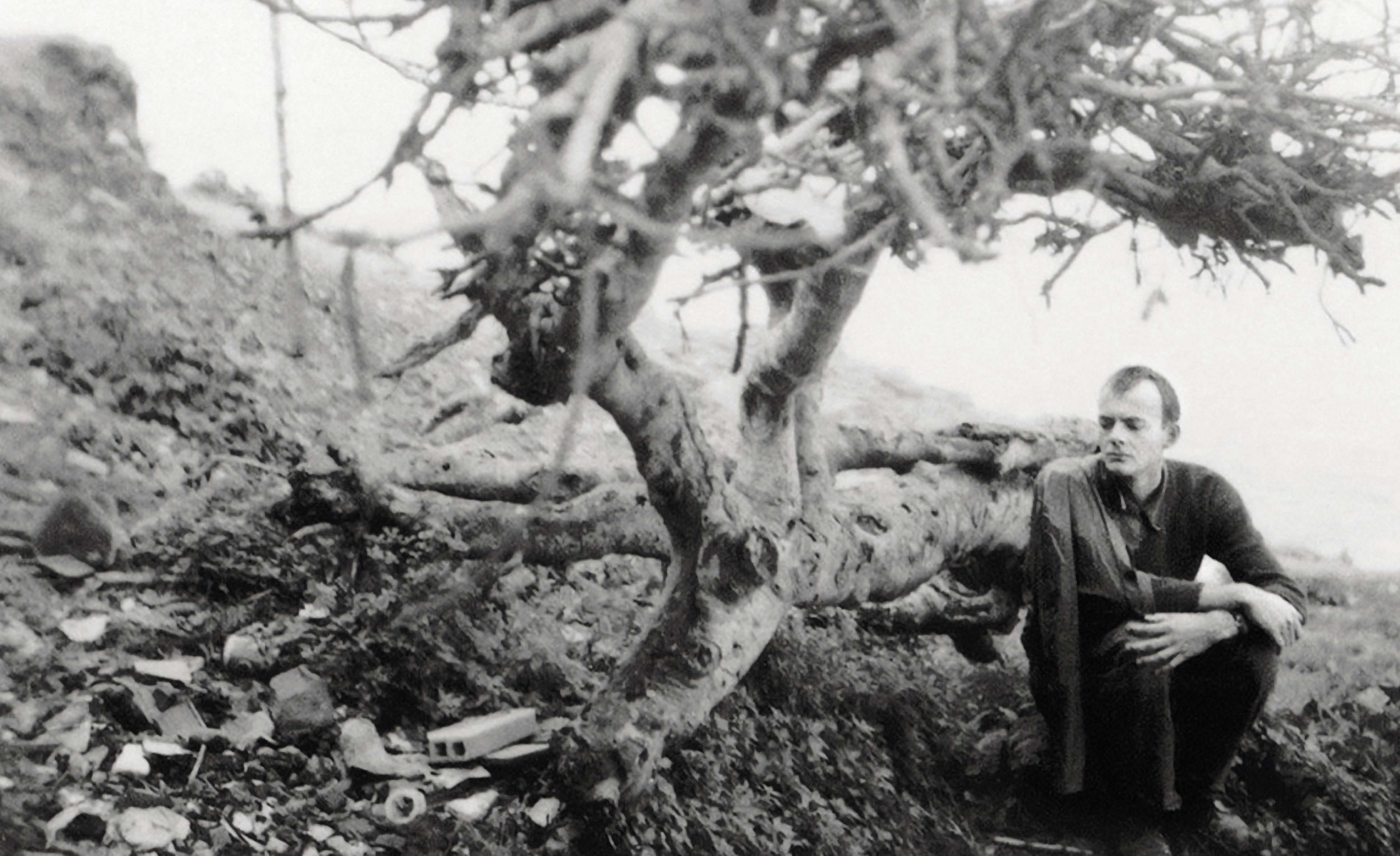
1952/1953

02/07/2023
04/03 >
Robert Rauschenberg, Untitled [Cy North Africa (I)], 1952. © Robert Rauschenberg Foundation, New York Design graphique — Akakir®Studio © 2022
Ruthie’s Table 4
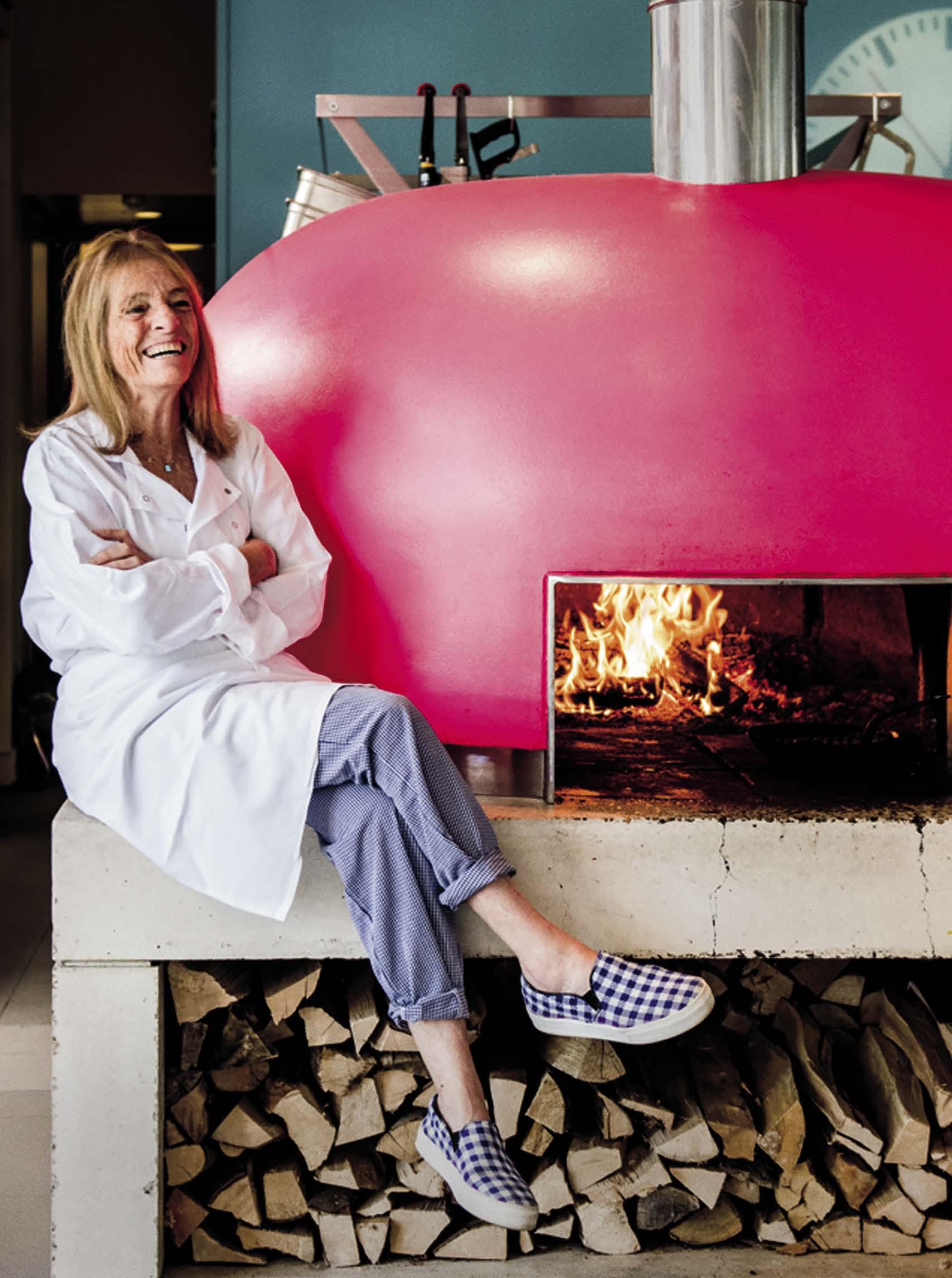
In conversation with The River Cafe’s Ruthie Rogers on the food they eat, the meals they make, the restaurants they rely on, the people they love, the lives they lead and the memories that matter.
Austin Butler Christiane Amanpour Stanley
Tucci Tina Fey Paul McCartney Michael Caine Bob
Iger Ed Ruscha JJ Abrams Al Gore Jake
Gyllenhaal Michael Bloomberg Alfonso Cuarón
Norman Foster Kathleen Kennedy David Adjaye
Jimmy Fallon David Beckham Roo Rogers Rick
Rubin Mel Brooks Tracey Ullman Salman Rushdie
Nigella Lawson Jude Law Jeff Goldblum Pete
Davidson Tracey Emin Darren Walker Emily Blunt
Steve McQueen Cary Joji Fukunaga Duro Olowu
Victoria Beckham Jonas Wood Sam Taylor-
Johnson Iwan Wirth Adam Schiff Gwyneth
Paltrow Eddie Redmayne Martha Stewart Brian
Chesky Dame Judi Dench Wolfgang Puck John
McEnroe Frank Gehry Michael Mann Michael
Elias Jamie Oliver Danny Huston Josh Berger
Mark Carney Stella McCartney Edward Enninful
Download Ruthie’s Table 4 on IHeart or wherever you listen to your podcasts.
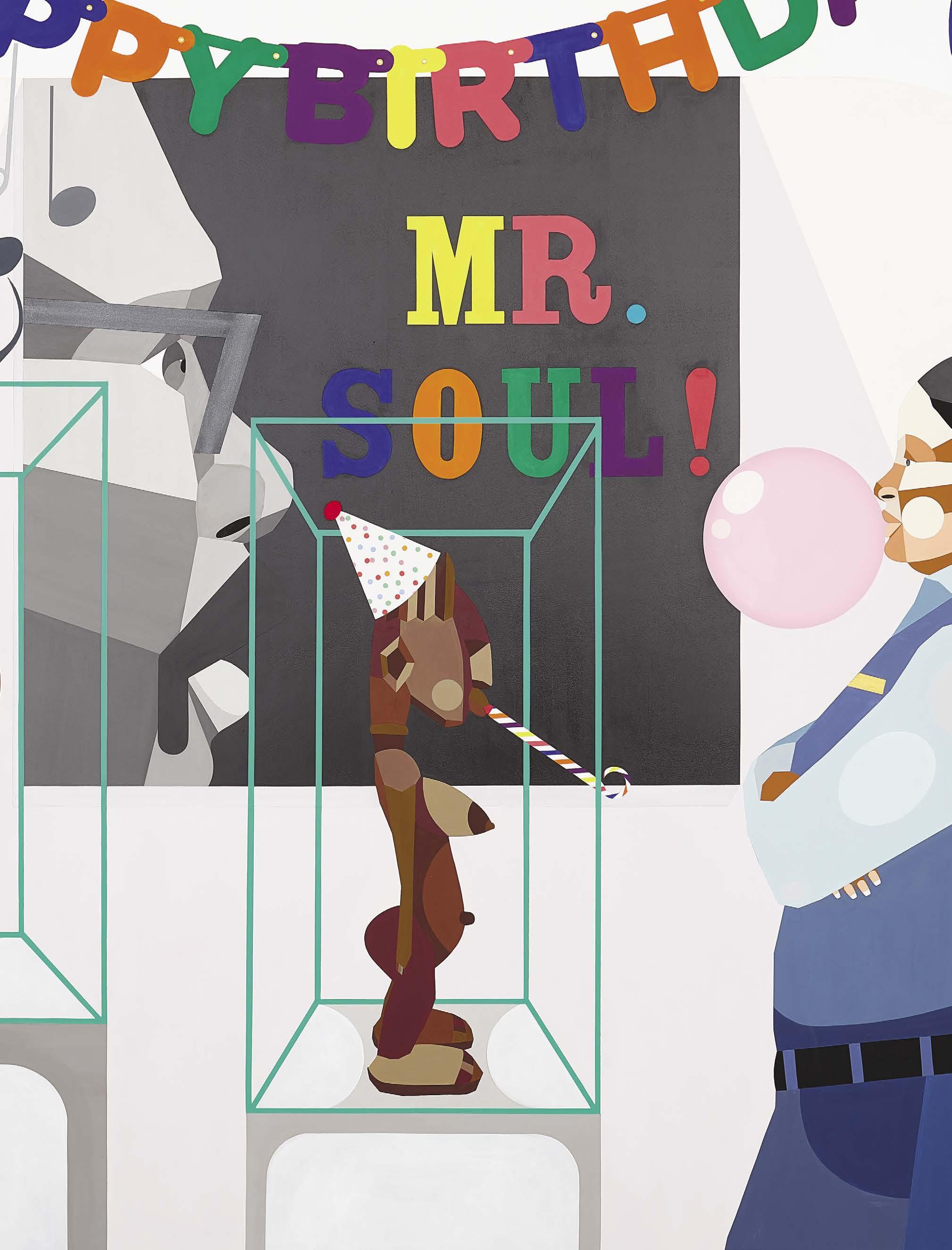
545 West 25th Street, 9th Floor New York , NY 10001 Wednesday - Satu rday, 11AM - 5PM Free Admission www.flagartfoundation .org Derrick Adams I Can Show You Better Than I Can Tell You January 13 – March 11 , 2023 Derrick Adams So Much to Celebrate, 2021 (detail) Acrylic, paper birthday hats, and pompoms on wood panel 72 x 95 5/8 x 2 inches (200.7 x 242.9 x 5.1 cm) Courtesy the artist and LGDR


Y.Z. Kami
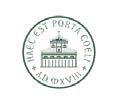



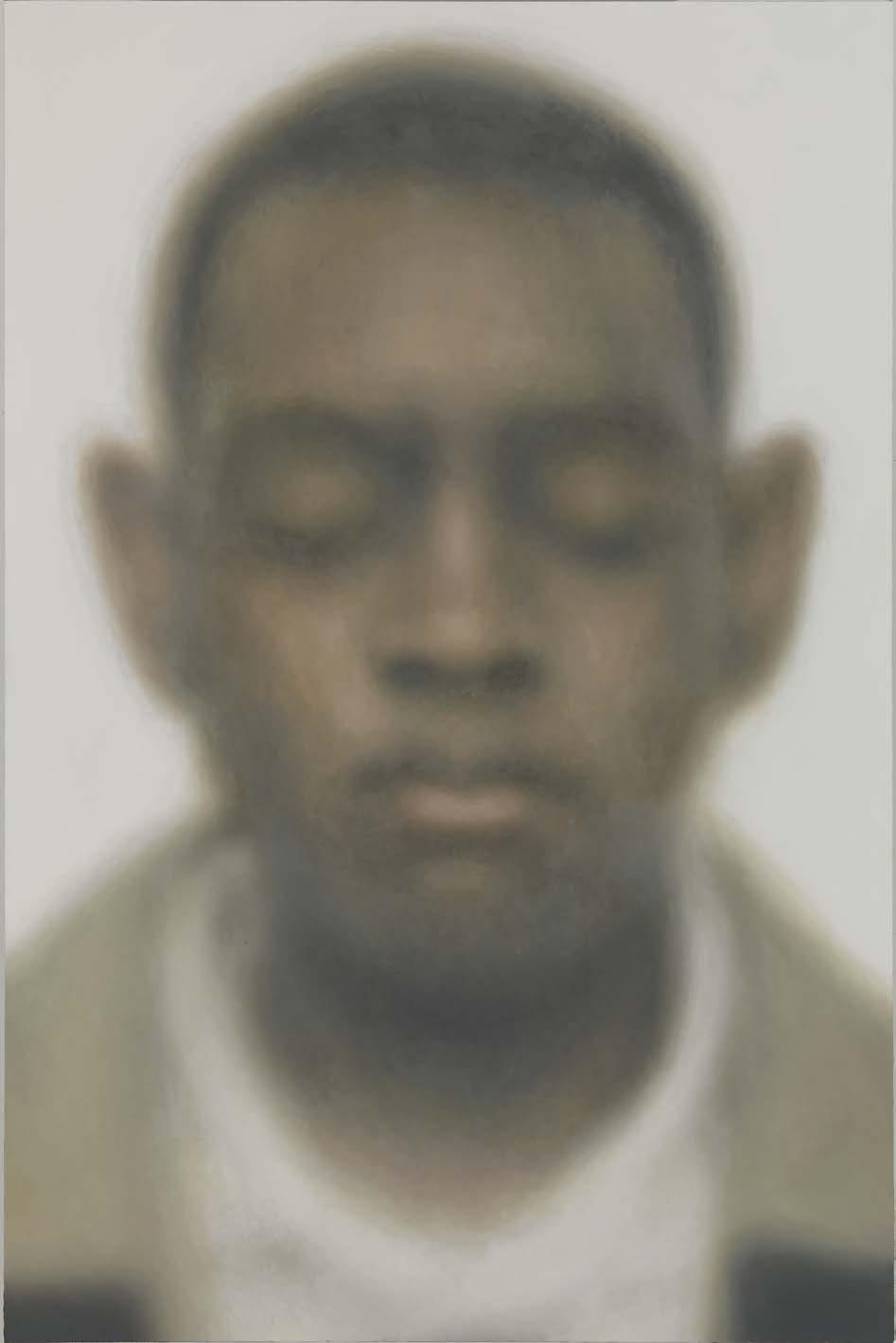 Y.Z. Kami, Untitled , 2011, oil on linen, 85 ½ × 57 inches (217.2 x 144.8 cm) © Y.Z. Kami
Y.Z. Kami, Untitled , 2011, oil on linen, 85 ½ × 57 inches (217.2 x 144.8 cm) © Y.Z. Kami
Light, Gaze, Presence
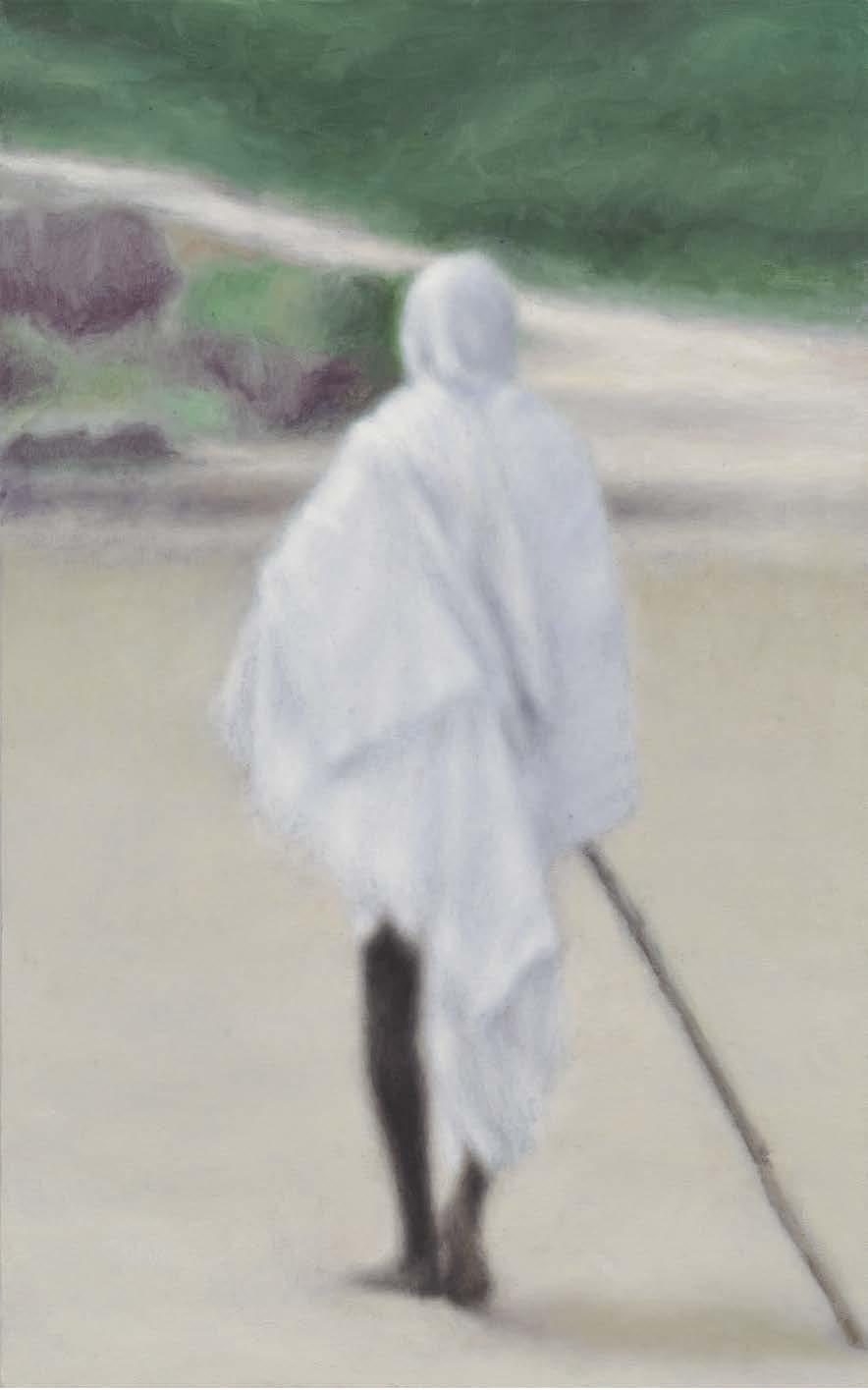
February 17 –
September 24, 2023
Florence, Italy
Museo Novecento, Museo di Palazzo Vecchio, Museo degli Innocenti, Abbazia di San Miniato al Monte
Y.Z. Kami, Messenger, 2021, oil on linen, 36 × 22 ½ inches (91.4 x 57.1 cm) © Y.Z. Kami
Giuseppe Penone
Gesti universali
Curated by Francesco Stocchi

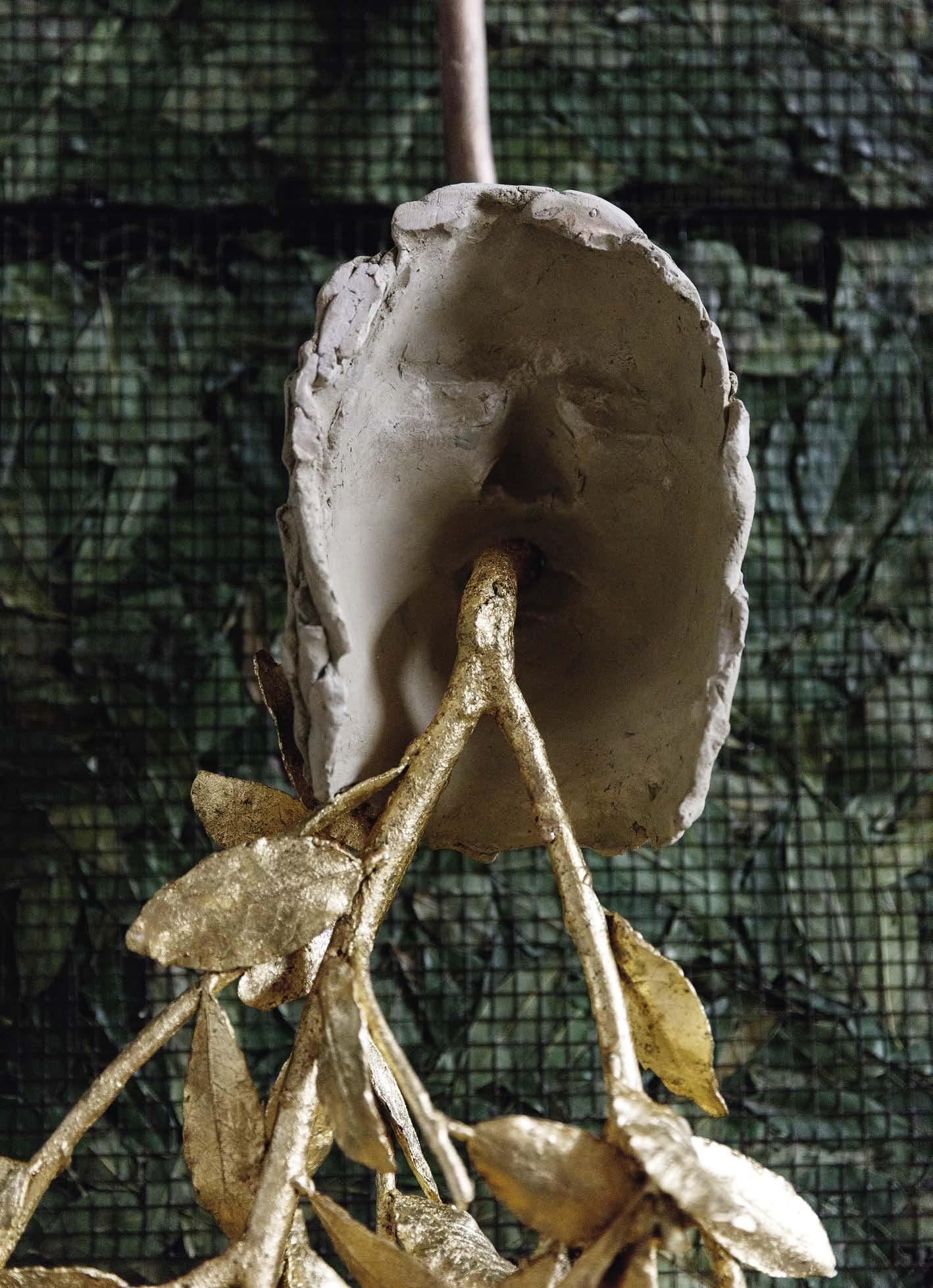
March 14–May 28, 2023 Galleria Borghese Rome
BECOME A CIRCA COLLECTOR

The Cultural Institute of Radical Contemporary Arts (CIRCA) is an art and culture platform with purpose.

Pausing a global network of billboard screens every evening at 20:23, CIRCA mobilises the world’s greatest creative minds to broadcast unique works of art that consider our world, circa now
Previous CIRCA artists include Douglas Gordon, Anne Imhof, Ai Weiwei, Yoko Ono, David Hockney, Patti Smith, Marina Abramović, Shirin Neshat, Tony Cokes, Arca, Alvaro Barrington and more.
2 1 4 3
Become a CIRCA Collector and support the #CIRCAECONOMY – a circular model that funds the CIRCA free public art programme and creates life-changing opportunities for the creative community.
EACH COLLECTOR RECEIVES
1. A custom designed plexiglass CIRCA BOX FRAMETM to house and display your growing collection;
2. 12 limited edition prints delivered to your door throughout the year;
3. White cotton gloves;
4. CIRCA 20:23 Manifesto and Care Instructions.
ABOUT CIRCA
www.circa.art
GAGOSIAN ART ADVISORY
Laura Paulson – Director and Principal lpaulson@gagosianartadvisory.com 917.755.9233
Alexandra Duch – Senior Director of Business Development aduch@gagosianartadvisory.com 917.783.8605
Michael Walker – Director mwalker@gagosianartadvisory.com +44 782.729.7223
Curatorial Advice Appraisals and Valuations Insurance, Estate Tax, Charitable Donation
Collection Management Short and Long-Term Strategic Planning Collection Database Management
Global Art Market Access Galleries, Auction, Art Fairs, Private Sale Negotiation Expertise
Contact Information
Bernard Lagrange – Director blagrange@gagosianartadvisory.com 609.751.8303
Nicole Fromer – Account Manager nfromer@gagosianartadvisory.com 917.756.7518
Molly Rindfuss – Registrar mrindfuss@gagosianartadvisory.com 347.703.6977
Mary Phelps – Senior Director mphelps@gagosianartadvisory.com 917.636.8126
Jenny Mittica – Director jmittica@gagosianartadvisory.com 917.853.4459
Florence Poynor – Appraisal Coordinator fpoynor@gagosianartadvisory.com 929.343.6824

Lunch Monday–Saturday 12–3 pm
Dinner Monday–Saturday 6–11 pm 976 Madison Avenue, New York T. 212 906 7141
reservation@kappomasanyc.com
GAME CHANGER ASHLEY BICKERTON

Michael Slenske pays tribute to the life and work of artist Ashley Bickerton.
“There’s nothing out there, Ash!” This was the “incessant mantra” Ashley Bickerton recalled Jack Goldstein whispering to him day in and day out during the four years he worked as Goldstein’s lead fabricator in the early ’80s. The “cult of two” would paint and pontificate at a fever pitch in Goldstein’s Brooklyn studios—Jack manically sweeping the floors and priming the canvases like an assistant, Ashley imbuing Goldstein’s pictures with a dark magic from his adroit hand, like some shamanic genius—as the duo waged a quiet war against the dangers of an “ever-looming art world populated by lightweights, vulgarians and false prophets that would lead the true cultural heart of America down any number of doomed aesthetic culde-sacs.” At least that is how Ashley remembered his first prime-time gig, fresh out of the California Institute of the Arts, in an essay (“Jack ’n Me”) that he penned in the fall of 2012 at his home in Bali. The piece was written at a fulcrum point, nearly a decade after Goldstein took his own life at his San Bernardino home and nearly a decade before Ashley passed away beside his wife, Cherry, and daughter, Io, at his oceanside retreat in Indonesia this past November due to complications from Lou Gehrig’s disease.
Of course there was something out there, Ash! Something big. The pulsing heart of American
capitalism in all its Reaganite excess, a consumerist cornucopia, just waiting to be opened up and examined under the surgical lights of your surfstoked operating theater. For the better part of four decades, this Barbados-born Englishman— conceived in the cabin of a passenger boat in the mid-Atlantic during a thunderstorm, according to his father—poked and prodded at every facet of his adopted homeland’s capitalist bonanza, where, he mused, if “every inspirational and unconflicted surface, from an athlete’s shirt to the summer sky above your beach, could be ‘utilised’ by advertising, why not art?”
Why not indeed. Ashley weaponized his Susie boxes, Culture-scapes , and Logo paintings to invert the meaning, materiality, and function of paintings, reducing them to a glut of “dehydrated culture units” that utilized the language of advertising and product placement that he’d seen cropping up on one of his most sacrosanct tools: the surfboard, especially those of pro riders. The son of an itinerant creole and pidgin linguist, whose research took the family from Ghana to Guyana to Honolulu, the acquisitive Ashley was primed to deconstruct and recode the formal languages of the art world.
“Attempting a summing up of Bickerton’s vast and subversive body of work is pointlessly reductive,” Paul Theroux astutely observed in a 2017
profile for the Guardian , although there are more than a few mile markers worth stopping at. His text-based Susie paintings, the first works he made after landing in New York in 1982, established his branded alter ego, Susie Culturelux, with a typeface that seemed to mimic that of the Starwood nightclub in West Hollywood. He wanted to “drive that wedge deeper” between the word and its form with his Non-Word Word paintings featuring phonetic grunts—Kuk, Gog, Guh, and Ugh—on gold, silver, and bronze-painted Susie boxes. By the mid’80s, Ashley was at the vanguard of the Neo-Geo (or Neo-Geometric Conceptualism) movement— so-called in the wake of a 1986 group show featuring the work of Ashley, Jeff Koons, Peter Halley, and Meyer Vaisman at Sonnabend Gallery. It was a name Ashley hated, preferring the moniker of “commodity art” or “neo-conceptualism” to define his angle of attack. This position comes into crystal focus in Tormented Self-Portrait (Susie at Arles) (1987–88), which predicted the age of the influencer like nothing else. Inspired by “an eternity of self-portraits” he’d seen in a Vincent van Gogh retrospective at the Metropolitan Museum of Art in 1986, Ashley defined bickerton, the artist, not by a series of Neo-Expressionist brushstrokes but rather by a matrix of screen-printed logos from Body Glove, CalArts, Marlboro Lights,
214
Ashley Bickerton surfing in Padang Padang, Bali
the Village Voice , Gusano Rojo Mezcal, and Trojan condoms decorating a Donald Judd–like painting plane made of wood, anodized aluminum, rubber, plastic, Formica, leather, chrome-plated steel, and canvas. It was arch, and biting, but also humorous, even fun.
“Maybe somewhere in this circumscribed liberty of obvious, eccentric, contradictory and choiceless choices we can pinpoint an individual,” Ashley once explained, noting that he could be a macrobiotic Marlboro Man who wore “American yokel” underwear while driving a Renault and relaxing on Bauhaus furniture. To assume anything else was “curatorial laziness, it’s editorial laziness,” he once told me. “Artists are dynamic and functioning in many ways and shapes over time but you’re often given a window of being fashionable and that’s marked and indexed into the dialogue of this so-called history.”
A few years after the self-portrait, Ashley found eight clients—including Sonnabend Gallery, the art dealer Leo Castelli, the designer Nina Ricci, and his Neo-Geo cohort Jeff Koons—to put their names on a subsequent Logo work, though he never motivated himself to collect on his advertising fees. “All I ever really needed was their commitment to make the piece legit,” he reasoned. “Then again, maybe a $1,000 shopping spree at Nina Ricci would have been worth getting off my ass.”
The thing about Ashley was that he always got off his ass, even after he was bound to a wheelchair these past two years. “I don’t want any pity. I’m not really in the mood for that shit,” he told me in the summer of 2021 for an article that was meant to follow his triumphant return to Los Angeles, where he reclaimed his spot as a California surfer until his ALS rendered his cliffside Mount Washington
home unusable. Still, he was resolute. “Life is to be lived and got on with, and I’m busy—too busy— for that.”
Ashley was so busy, in fact, that he worked from his room in the ICU on his final body of work, the Blur paintings, haunting color fields from which shadowy figures emerge with glowing-yellow headlight eyes. They consumed the last eight months of his life, and will form the basis of his solo debut at Gagosian this fall.
After his ALS diagnosis, Ashley was worried about the “bifurcated understanding” of his oeuvre, which in its most simplified form could be understood as BB and AB (Before Bali and After Bali). Before he moved to Bali, in 1993, he was already transitioning away from outwardly commodity-obsessed work to “landscapes” that commodified and sublimated natural elements into fetishistic wall-mountable sculptures. Some encapsulated cowboy getups, others taxonomical seed specimens, in seaworthy vessels strapped to pontoons, which he’d later fill with Indian Ocean flotsam or, poetically, his family’s footprints last year. His Early Bali Paintings , depicting the cartoonish cultural masks of art-world insiders, and his Gauguin-on-acid Blue Man paintings of a twentieth-century antihero outsider blissed out in paradisiacal excess, inspired countless younger artists, including Jamian Juliano-Villani, who organized a beloved show—Ashley’s last New York hurrah IRL— at her buzzy downtown gallery, O’Flaherty’s, during the pandemic. But it was Ashley’s most recent series, Ocean Chunks , that may have been the closest to his heart at the end.
“People judge through the filter of their own projection and they judged my last show of Ocean Chunks through the filter of my disease. Somehow
I was dealing with death, removal, silence. Fine with me. I was. But if they thought that last show was about death, what the hell are they gonna think about these paintings?,” Ashley told friend and filmmaker Thomas Nordanstad just before his passing, for a forthcoming documentary about the artist. “Guess what? It doesn’t matter. It’s fine to see them through that filter. My work has always been able to hold more than one contradictory viewpoint at once. That’s the whole purpose of my work.”
His last marks, which he was working on until the very last moments of his life, began with the discovery of some faded photographs in a wallet. From casual snapshots of his friends and family, the Blur paintings capture everything from Io’s passport photo to Cherry and Ashley on their wedding day, and reverse engineer—or perhaps project forward—his own disappearance, the world blurring from his vision, his body ebbing out to sea.
Seen from that vantage, the Blur paintings provide a poetic coda to the Ocean Chunks , which Ashley thought of “as a facsimile, a cutout, of the way a Catholic will think about a crucifix above their bed . . . for whatever the hell it is that I believe in, which basically, I guess, is just waters of world in the larger gaia and, more specifically, the warm embalming fluid of tropical water as we return to the amniotic sac.”
Sometimes I imagine him out there in the ether, getting tubed by that perfect turquoise wave, like the one he was famously photographed riding (sans logos) at Padang Padang. If I could ask him one last question, I’d simply want to know:
“What’s out there, Ash? What’s out there beyond the blur?”
Ashley Bickerton, Floating Family Footprints (Flow Tide), 2022, resin, fiberglass, stainless steel, and sea sand, 65 × 92 1 8 × 9 ¾ inches (165 × 234 × 25 cm)

215
© Ashley Bickerton
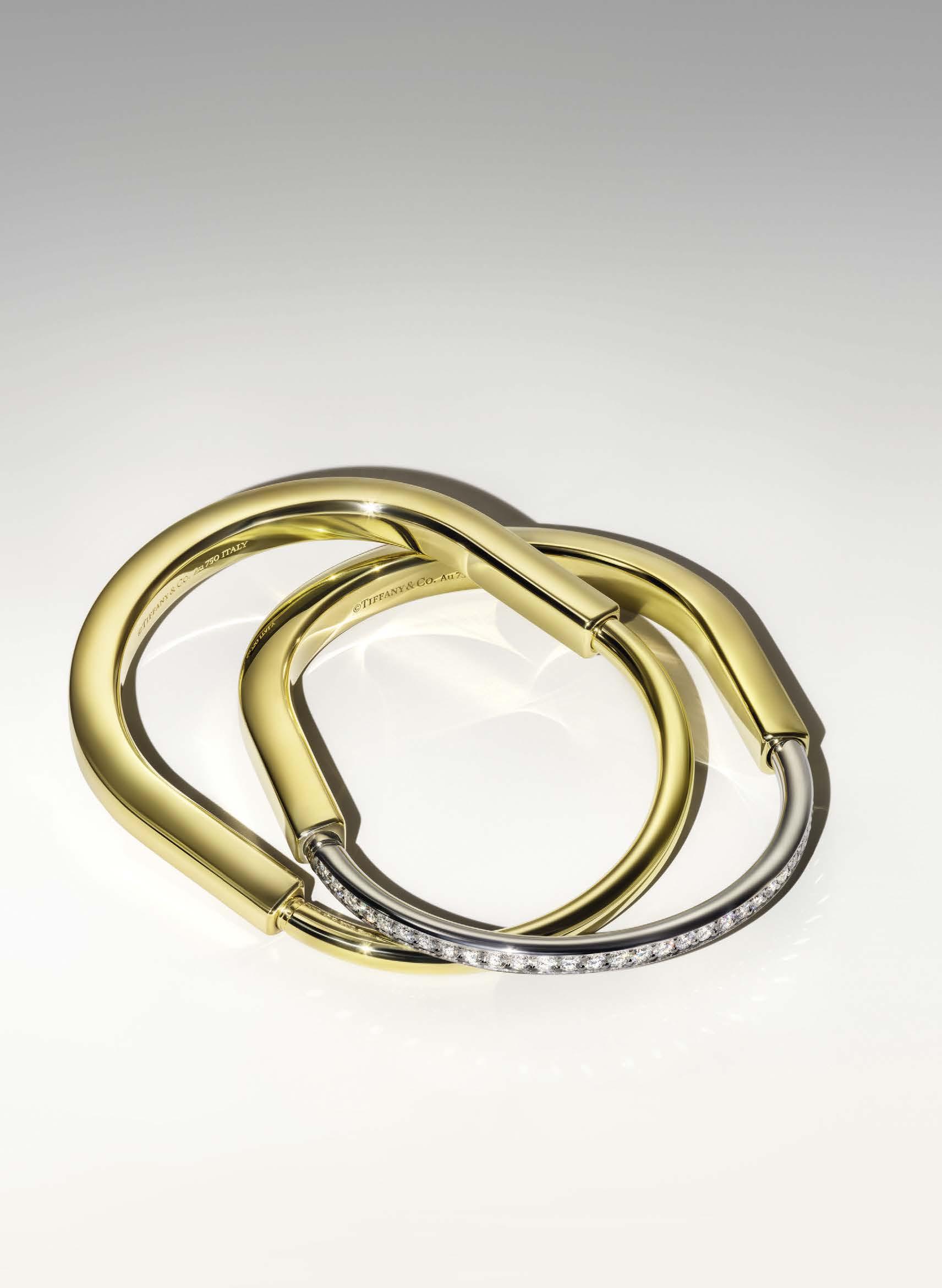









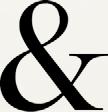
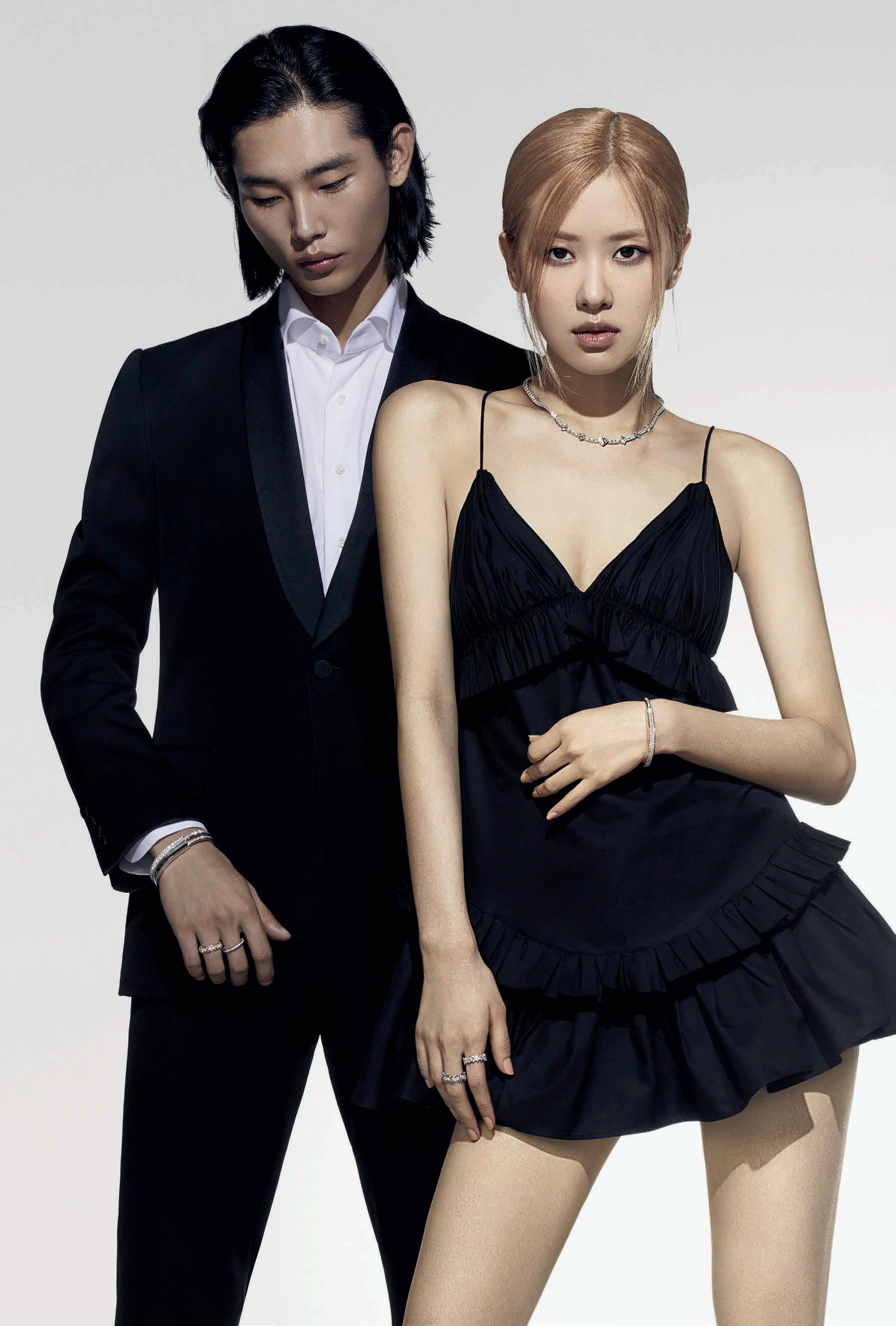










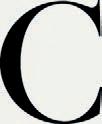

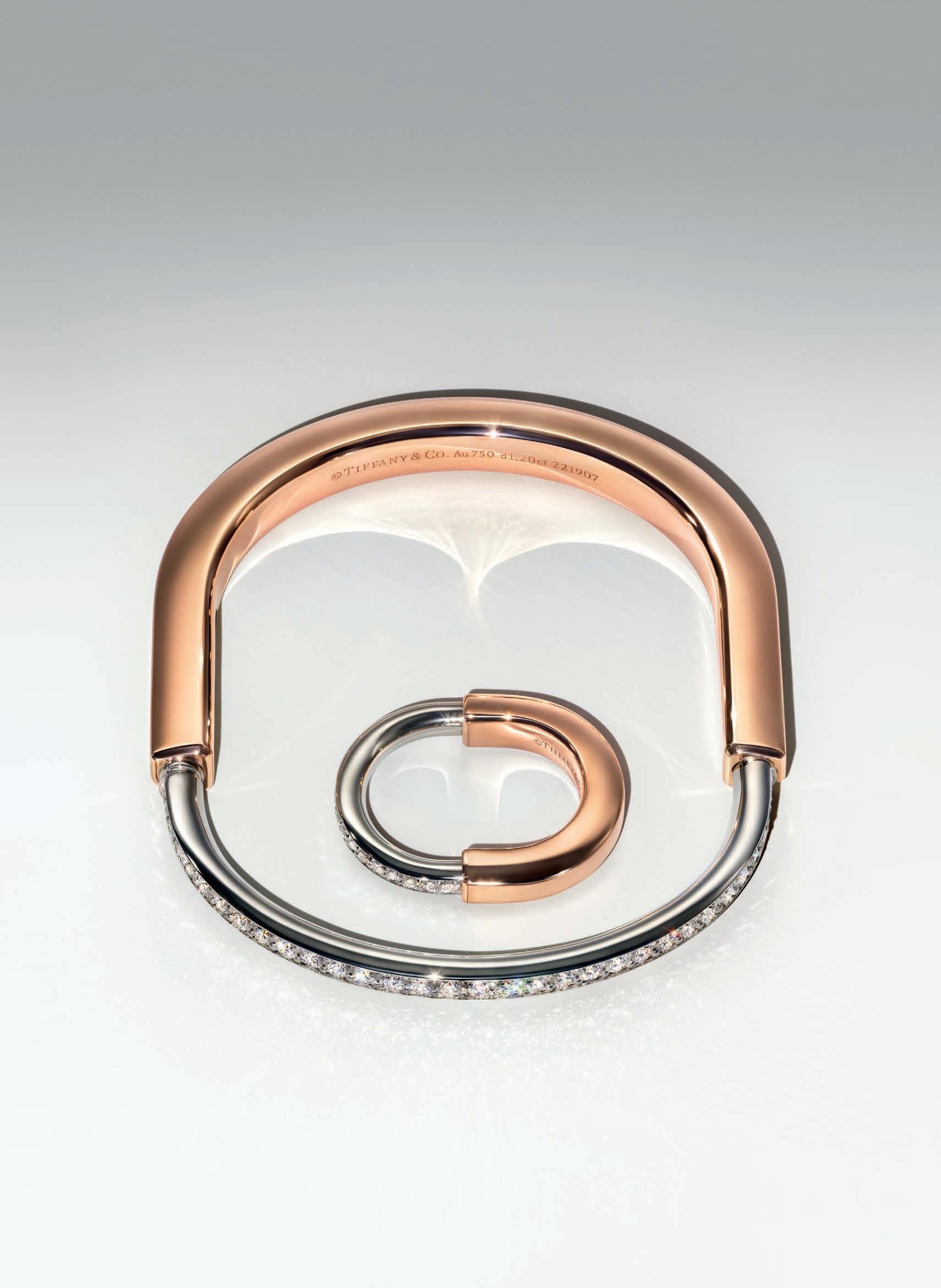











































 Spring Summer 2023
Photographe d by David Sims
Spring Summer 2023
Photographe d by David Sims



























 Daphne Guinness, photogra phed by Dylan
P erlot .
Daphne Guinness, photogra phed by Dylan
P erlot .


































































































































































































 Cuff bracelet featuring a giant Colombian emerald , 22k gold and silv e r. judygeib.com
Cuff bracelet featuring a giant Colombian emerald , 22k gold and silv e r. judygeib.com








































 —Marc Newson
—Marc Newson
 —Kengo Kuma
—Kengo Kuma





































































 Y.Z. Kami, Untitled , 2011, oil on linen, 85 ½ × 57 inches (217.2 x 144.8 cm) © Y.Z. Kami
Y.Z. Kami, Untitled , 2011, oil on linen, 85 ½ × 57 inches (217.2 x 144.8 cm) © Y.Z. Kami






























